
- Northern Circuit
- Western Breach
- Acclimatisation
- Packing List
- Climbing Cost
- Coronavirus
- Visa’s, Vaccinations, Malaria
- Kilimanjaro Blog
- Climb for Charity
- Get A Trek Quote

Tanzania Safari Map – With The 9 Best Parks
Largely based on the ease of access and a choice of accommodation to the parks, you'll find that there is a hearty variety of national parks and game reserves you can explore during a Tanzanian safari.
I've visited several notable parks in Northern, Southern, and Western Tanzania over the years. Each experience has given me perspective on the importance of wildlife conservation and appreciating the beauty of the untamed East African landscape.
In this article, I'll give you brief outlines of the most popular national parks for the ultimate Tanzania safari and how to reach them using our dynamic Tanzania Safari Map .
Let's crack on!
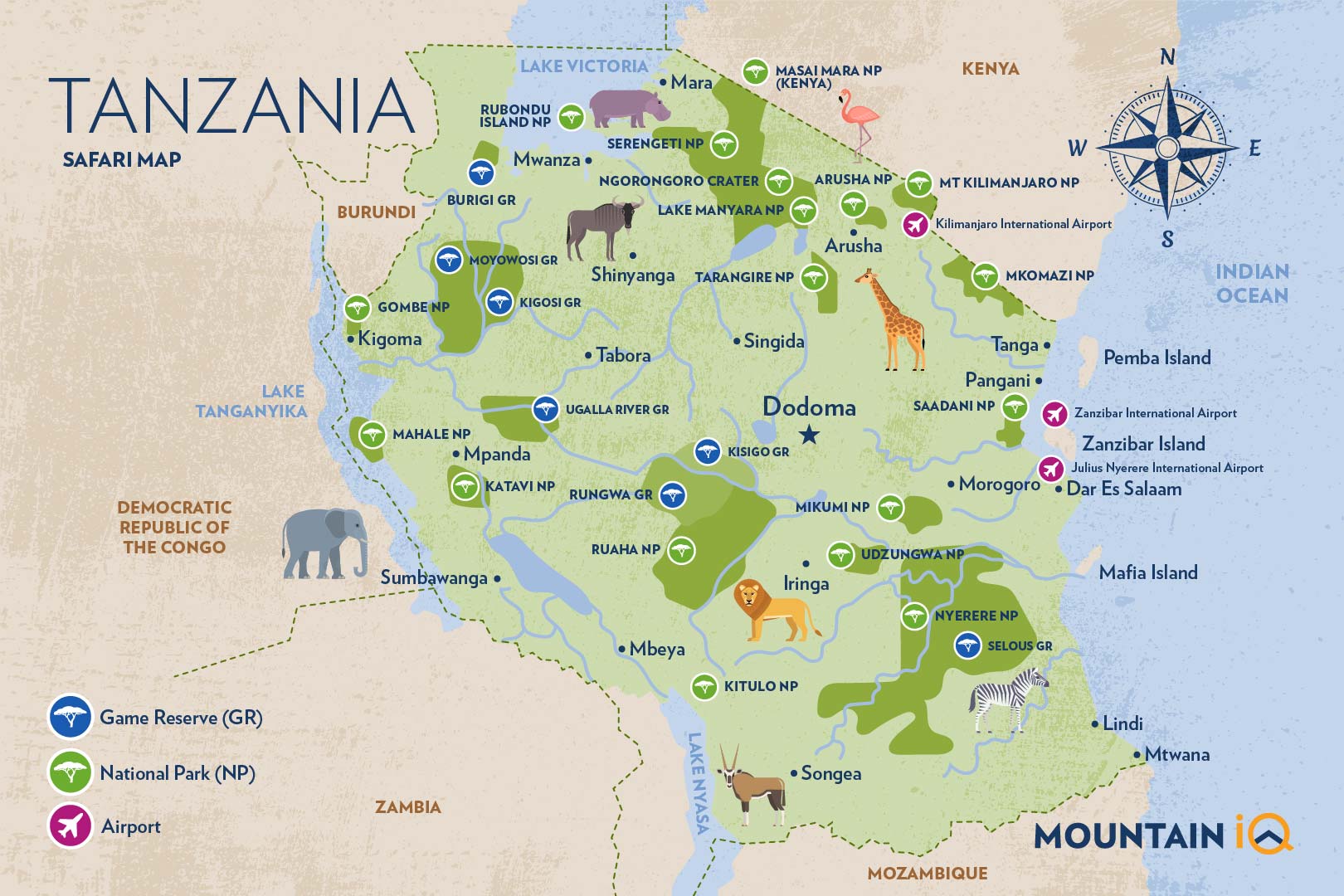
The national parks and game reserves in Tanzania are divided into Northern, Southern and West regions.
As you'll see, our user-friendly Tanzania Safari Map above contains all the national parks in Tanzania , including the popular Serengeti , the more remote Gombe , and the total wilderness paradise that is Katavi .
Now, let's dive further into the Tanzania Safari Map!
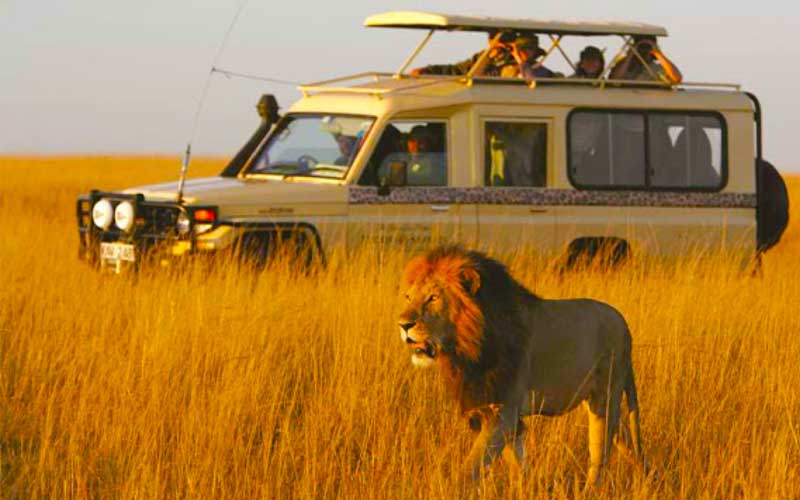
Plan your Safari experience
Get a quote from our recommended local safari operator
Tanzania Safari Map
Time needed for your tanzania safari.
The time needed for a typical Tanzania safari is anywhere from 7 days up to 14 days in total . This should give you enough time to travel, get settled in your accommodation, view unique wildlife species , and enjoy some specialised activities like hot air balloon rides or scuba diving .
Here's a brief outline of how much time you'll approximately need to experience a safari in each part of Tanzania:
Which tour? Here are 5 Tanzania safari tours I highly recommend:
- Mahale Chimpanzee Safari (4 days)
- Budget Serengeti Safari (5 days)
- Tanzania Camping Adventure (incl. Arusha and Mto wa Mbu) (6 days)
- Scenic Northern Tanzania Safari (7 days)
- Epic Ruaha Adventure Safari (incl. Mikumi and Selous (9 days)
See more Northern Tanzania safari deals .
Northern And Southern Tanzania Safaris
In the North, you will need about 8 days to visit all the parks, since there are 5 of them and they're relatively close to each other. In the South, you'll ideally go for 8-12 days , as there are 8 national parks in total that you can visit and they're more spread out than the Northern Circuit parks.
A Western Tanzania Safari
In the West, you'll likely spend 12-14 days on a Tanzania safari. This is because specialised safaris like tracking chimpanzees in Gombe and Mahale might take more than a day. Plus, the nature there is out of this world, so you might want to enjoy it whilst you are there. As those six national park are in some of the most remote and exclusive locations in East Africa , this type of Tanzania safari will probably be an only once-in-a-lifetime opportunity for you.
Read more on the best time of year for a Tanzania Safari .
Where to stay? Here are 5 of my favourite safari accommodation options in Tanzania:
- Serengeti Mawe Camp
- Ngorongoro Crater Serena Lodge (see reviews
- Lake Manyara Kilimamoja Lodge (see reviews)
- Mikumi Faru Tented Camp (Morogoro)
- Africa Safari Selous (near Mtemere main gate and airstrip)
See more Northern Tanzania safari accommodation options .
National Parks in Tanzania
As I said before, there are three regions of Tanzania available to tourists for curating the ultimate safari adventure: the Northern Circuit, the Southern Circuit, and the Wild Wild West.
Let's talk about each region and their most popular national parks in more detail.
Northern Circuit Parks
The most notable national parks in the Northern Circuit are Serengeti, Ngorongoro, Tarangire and Lake Manyara. Northern parks are by far the most popular due to Serengeti’s fame and the Wildebeest Migration that takes place there.
These northern parks are also popular in terms of logistics – these parks (Serengeti, Ngorongoro Crater , Tarangire and Lake Manyara ) are very easily accessed from Arusha and Kilimanjaro Airports. The whole journey from those airports to each park might be about 2-3 hours in total.
Southern Circuit Parks
The most notable national parks in the Southern Circuit are Selous Game Reserve and Ruaha National Park .
Southern parks are far less visited and this is due to the fact that they are harder to reach. To avoid five-hour drives from Dar es Salaam , visitors usually fly directly into these parks.
As you'll see from our Tanzania Safari Map above, flights to these locations take about under an hour but come with heftier price tags. Selous and Ruaha are also connected by flights (roughly 90 minutes each), which makes a trip down south even more invigorating.
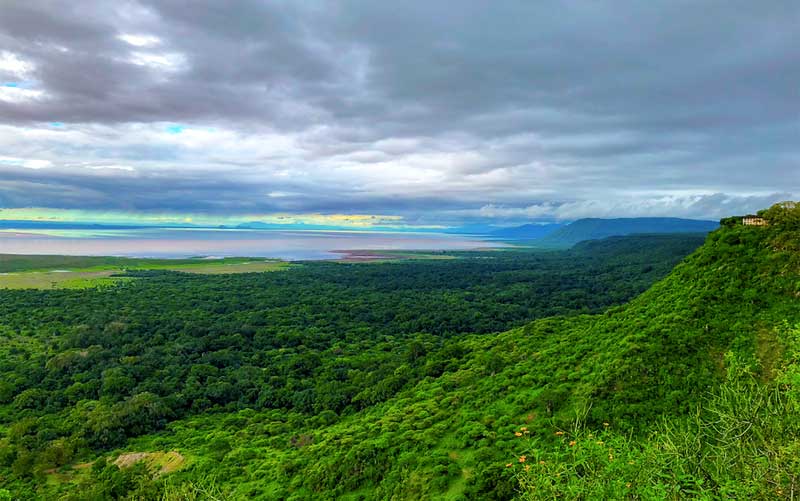
Western Parks
The most notable national parks in the Wild Wild West are Mahale Mountains, Gombe Stream, and Katavi.
Western parks (like Mahale and Gombe) are only visited by about 5% of all travellers for a classic Tanzania Safari. And this is not because chimpanzee tracking available there is lacking in excitement, but because the roads get muddy and accessing these parks is often a challenge on top of the higher price of flying in here. For instance, to reach Katavi National Park , you have to endure a 4-5 hour flight from Arusha or Dar es Salaam .
However, these challenges are exactly what makes these western Tanzania parks so unique and definitely worth considering.
These distinct safari locations outlined in our Tanzania Safari Map above should give you an idea of the size of this exquisite country. It’s about 1.5 times bigger than the US state of Texas. Says it all in terms of true adventure being hard to find!
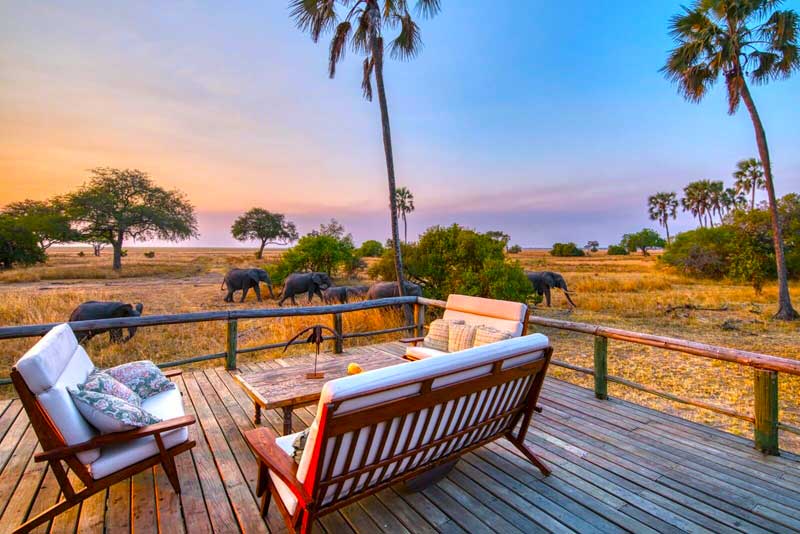
And that's a wrap on the Tanzania Safari Map! I hope this article gives you a better idea of all the opportunities available to you for the best and most memorable Tanzanian safari.
Mark Whitman
Hi, I'm Mark! Welcome to Climb Kilimanjaro Guide - the Web's No.1 Trekking Guide to Mount Kilimanjaro. This site is your one stop shop for everything Kilimanjaro. To date over 5 million people have visited Climb Kilimanjaro Guide, many of which have gone on to summit Kili! I hope you find all the answers you are looking for, but if you have any questions don't hesitate to drop a comment below!
Leave a Reply
Your email address will not be published. Required fields are marked
Name * * * * *
Email * * * * *
Get a quote from our recommended local Kilimanjaro operator
Wanderlust Travel & Photos
Seeing the world one trip at a time.
- Work With Me
- Travel Journal
- Privacy Policy
- Browse by Continent
- Thailand Travel
- Australia Travel
- Peru Travel
- Browse by Region
- East North Central
- East South Central
- Mid-Atlantic
- New England
- South Atlantic
- West North Central
- West South Central
- Central America
- North America
- South America
- Travel Vlog
- Instagram Photos
The Ultimate Tanzania Safari Itinerary
LAST UPDATED: 3/1/24 – The Ultimate Tanzania Safari Itinerary
Ever since Doctor David Livingstone ventured into the interior of Africa in search of the origins of the Nile River, people from around the world have been curious about the animals and landscapes on this beautiful continent. In many ways, the Tanzania that Livingstone explored has changed a great deal since his time, but in other ways, it is much the same.
The same incredible animals that he ran into and some of the beautiful landscapes that he traversed can still be enjoyed by visitors. Many of those landscapes are on my Tanzania safari itinerary and are some of the best places in all of Africa to see those incredible animals that Livingstone encountered.
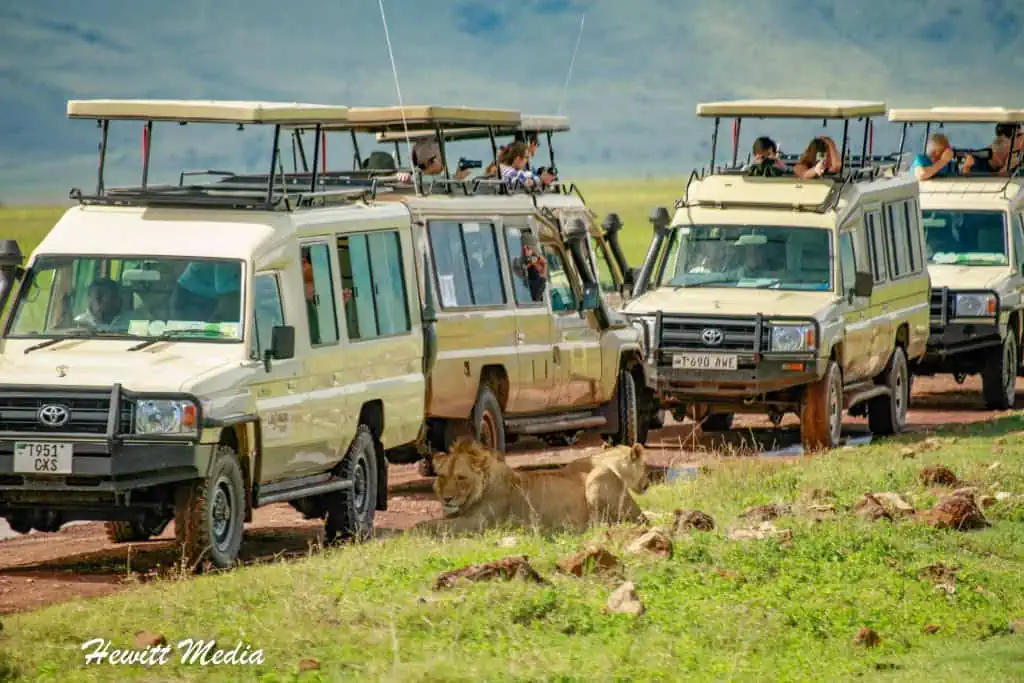
Located in Southeastern Africa, the country of Tanzania is a wildlife traveler’s dream. It is home to many of Africa’s most amazing animals, has some of the world’s best wildlife viewing destinations, and is home to Africa’s tallest mountain.
In my Tanzania safari itinerary, I am going to help you start planning your safari trip to Tanzania by outlining some of the country’s top parks, helping you decide what time of year to plan your trip, and showing you what my recommended Tanzania safari itinerary looks like.
Before You Go on Your Tanzania Safari
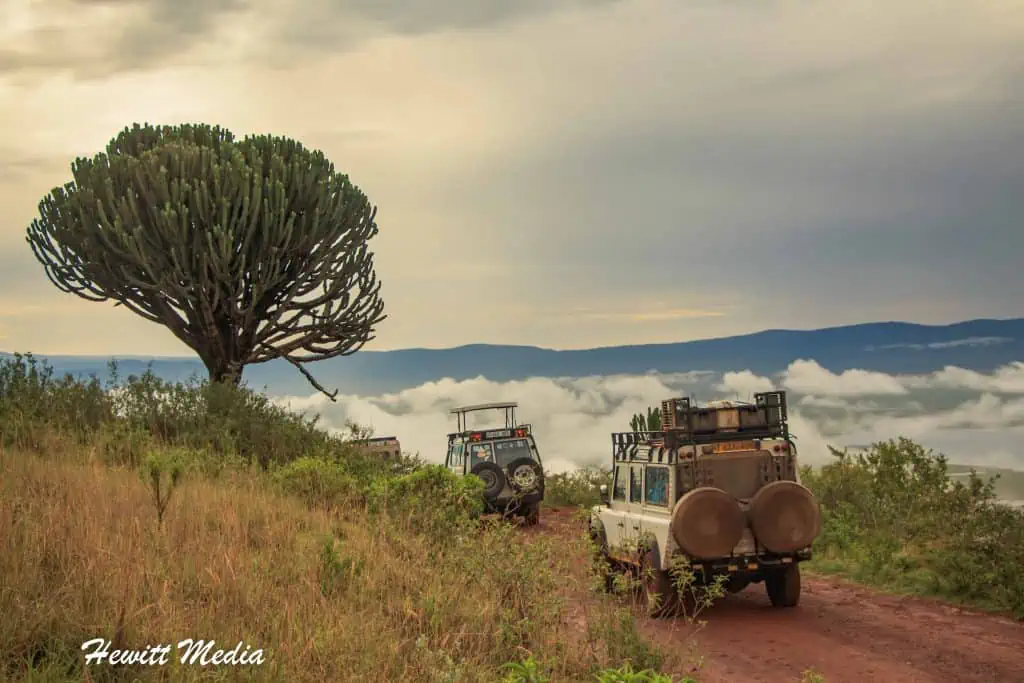
Planning a trip to Tanzania to go on safari can be an incredibly exciting experience, but it can also be a little stressful and overwhelming if you haven’t been to Africa before. If you are planning your first big safari adventure, let me first tell you how excited I am for you. Going on safari, especially in an amazing country like Tanzania, will be one of the most memorable experiences of your life. It only took one visit to Tanzania to get me hooked, and I am sure the experience will be the same for you.
To make the process of planning your Tanzania safari itinerary easier for you, I have included links to some of my most popular safari guides for you to review below. If this will be your first time visiting Africa, I would strongly suggest you review my article on the 20 Tips for Those Visiting Africa for the First Time.
Even if you have been to Africa before, my Safari Packing Guide will help ensure that you have all of the gear and equipment with you to make sure your safari experience is a safe and memorable one. Finally, my Safari Photography Guide will give you plenty of valuable tips and tricks for photographing the wildlife that you see while on safari in Tanzania. Armed with this information, you can be sure that you will capture top-notch photographs to share with your family and friends.
Choosing Which Parks in Tanzania to Visit
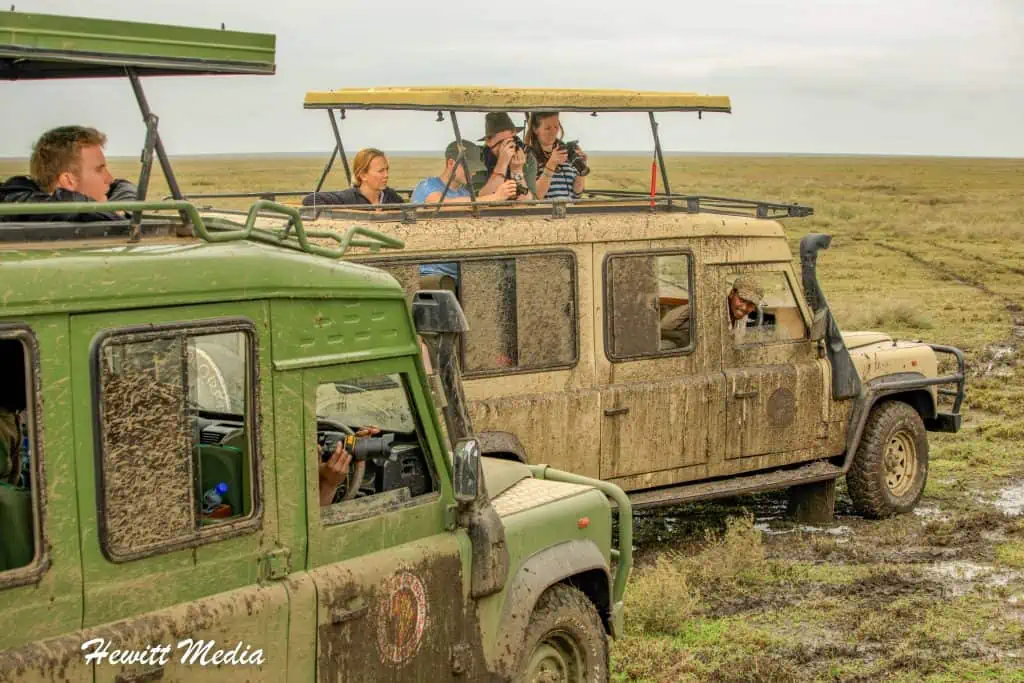
One of the biggest decisions that you will need to make when starting to plan your Tanzania safari itinerary is which of Tanzania’s parks and wildlife areas you will visit during your trip. In this Tanzania safari guide, I include a map of all of Tanzania’s protected areas and my choice of Tanzania’s top national parks to visit.
I also outline each of these parks and discuss what the pros and cons of visiting each park are, what animals you can expect to see when you visit each park, and what time of year it is best to visit each park.
However, as you start to put together your Tanzania safari itinerary, you might have certain animals, landscapes, or events that you want to be sure to see while in Tanzania. For this reason, I have put together this quick reference guide to help you determine which park(s) are best for seeing certain things.
Simply click on the name of the animal or other category below to see which of Tanzania’s parks I would recommend adding to your Tanzania safari itinerary to give yourself the best chance of seeing those animals, landscapes, or events.
Click on the animal or park attribute below to learn more
Several of Tanzania’s national parks consistently have elephants for visitors to spot while on safari. The Ngorongoro Crater is a great spot to see large bull elephants, who migrate to the crater to feed between breeding seasons.
Ruaha National Park is also a great place to spot large groups of elephants while on safari, though your best chance of seeing them in the park is during the dry season when animals are forced to congregate near the remaining watering holes.
If you want to see elephants up close in the wild, then the park you want to make sure you have on your Tanzania safari itinerary is Lake Manyara National Park . The wildlife in the park is more concentrated than in other parks, so up-close animal experiences are more common.
However, the best park to see elephants in Tanzania is undoubtedly Nyerere National Park and the nearby Selous Game Reserve. The park is on the annual elephant migration route and you will find thousands of elephants in the park during their migration.
If spotting lions while on safari in Tanzania is your ultimate goal, then there are plenty of great destinations for you to choose from to accomplish that goal. Except for Gombe Stream, Mahale Mountains, Arusha, and Kilimanjaro National Parks, the rest of the parks that I highlight in this Tanzania safari itinerary offer a lot of great opportunities to spot lions.
As the home to the Great Migration, the Serengeti National Park has some of the highest concentrations of lions in Africa. If you would like a unique lion-viewing experience, I would also suggest checking out Lake Manyara National Park and its famous tree-climbing lions.
However, the best place to visit to be assured of spotting lions while on your safari is the Ngorongoro Crater . With grazing animals in the crater year-round, the lion prides that occupy the crater are typically very easy to find.
As one of the most endangered animals in Africa, the Black Rhino isn’t an easy animal to find while on safari almost anywhere in Africa. Lucky for you, Tanzania is home to one of the best destinations in Africa for viewing Black Rhinos in the wild.
Because it is an enclosed and protected space, the rhinos living in the Ngorongoro Crater are much better protected from poachers than other locations in Tanzania and the rest of Africa. That is why the crater is one of the few places left in Africa where you can view these beautiful creatures in the wild.
For those travelers who have their heart set on seeing wild chimpanzees while on safari, then you will want to be sure to add either Gombe Stream National Park or Mahale Mountains National Park to your Tanzania safari itinerary. Both parks offer incredible wild chimpanzee viewing opportunities but are also much more remote and harder to get to than some of the other parks I highlight in this itinerary.
Gombe Stream was made famous by Jane Goodall, who did most of her chimpanzee research in the park, but Mahale Mountains is my favorite pick for chimpanzee enthusiasts. Not only does it offer some of the best chimpanzee tracking in Tanzania, but there is a greater diversity of other wildlife in Mahale Mountains National Park than there is in Gombe Stream National Park.
While the number of lions and leopards in the infamous Serengeti number is in the thousands, there are only a few hundred cheetahs to be found in the famed park.
There is a chance that you will spot these magnificent predators while on safari in the Serengeti National Park , but you have a far better chance of spotting the speedy cats if you add Ruaha National Park or Tarangire National Park to your Tanzania safari itinerary.
Ruaha National Park is an especially good place to spot cheetahs, despite the large number of other predators, because the park is so large and it is easier for them to stake out territory away from lions and leopards.
If you love giraffes, then you will be delighted to know that most of the top parks in Tanzania offer excellent opportunities to view these beautiful animals. You probably won’t see giraffes when visiting Gombe Streams National Park and Mahale Mountains National Park.
Also, chances are that you won’t spot giraffes inside the Ngorongoro Crater, but you should see them in the surrounding areas of the Ngorongoro Crater Conservation Area. In my opinion, the best parks for spotting wild giraffes are the Serengeti National Park , Lake Manyara National Park , and Tarangire National Park , in order of likelihood of spotting the animals.
Next to black rhinos, African wild dogs are some of the rarest animals that you will be able to spot while on safari in Tanzania. To see these rare and beautiful creatures, you will need to include the right parks on your Tanzania safari itinerary.
The best parks for seeing African wild dogs in Tanzania are Ruaha National Park and Nyerere National Park . If you visit the parks during the dry season when the animals are more concentrated around the watering holes, you have a good shot of spotting wild dogs in these parks.
Spotted hyenas are another animal that you can find in many of Tanzania’s national parks and protected areas. Chances are, you won’t see these unique carnivores in Gombe Streams National Park and Mahale Mountains National Park, and they are rare in parks like Kilimanjaro National Park and Arusha National Park because of their proximity to the city.
However, in parks like the Serengeti National Park , Ngorongoro Crater , and Ruaha National Park , you have an excellent chance of spotting many hyenas.
Few animals in Africa are as incredible to see in the wild as the mighty hippopotamus. These massive and beautiful creatures spend most of their days wallowing in water to protect their delicate skin and then come out at night to feed on grass.
If you would like to see hippos while on safari, I would be sure to add a park with water to your Tanzania safari itinerary. Because it has a constant supply of water year-round, the Ngorongoro Crater would be the top park on my list for seeing hippos.
Other parks that offer a great opportunity to see these African wildlife icons include Lake Manyara National Park , Nyerere National Park , and Arusha National Park .
If you are interested in seeing the Great Migration while on safari in Tanzania, then you will definitely want to make sure that you add the Serengeti National Park to your Tanzania safari itinerary.
The Great Migration, in which upwards of 1.5 million wildebeest and other grazing animals follow the rain between the Masai Mara in Kenya down into the Serengeti in Tanzania and back each year, is one of the world’s most amazing wildlife viewing experiences.
In addition to being able to see millions of grazing animals in one place, the migration also attracts droves of Africa’s big predators to the Serengeti to feast upon them.
The migration reaches the Serengeti around December each year and the animals typically leave by March, so if you want to see the migration in Tanzania, you will want to plan your trip during that time.
Tanzania is a country that is certainly not short on beautiful and breathtaking landscapes. All of the parks that I have included in this guide are incredibly beautiful and worthy of adding to your Tanzania safari itinerary.
However, if incredible landscapes are what you are after, then I would suggest considering Kilimanjaro National Park and Arusha National Park while in Tanzania. In addition to the wildlife that can be found in these parks, both parks offer unique and beautiful landscapes for visitors to enjoy.
Kilimanjaro is home to Mount Kilimanjaro, which is Africa’s tallest mountain and the world’s tallest free-standing mountain. Arusha National Park is home to the incredible Mount Meru and has a fig tree that is so large that you can drive a car through a tunnel in its trunk.
Deciding When to Plan Your Tanzania Safari
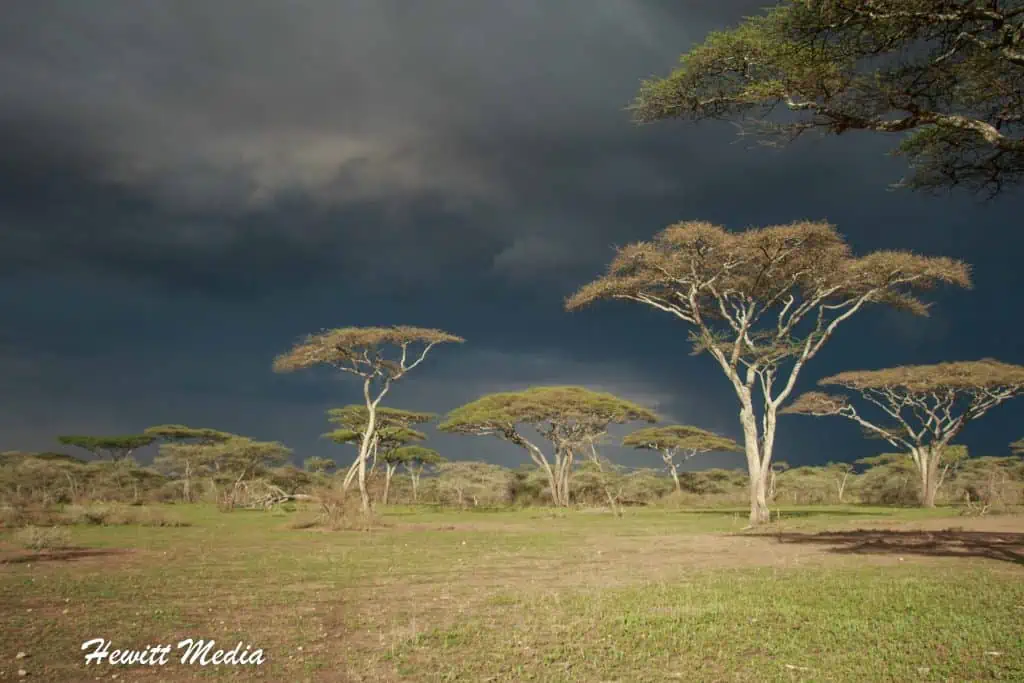
The parks that I have highlighted in this guide are located in different regions of Tanzania, so the best times to plan your Tanzania safari itinerary are going to vary slightly depending on which parks you visit.
For instance, parks like Gombe Streams, Ruaha, and Nyerere are much worse to visit in the rainy months of March and April than some of the other parks in Tanzania.
If you would like to see the Great Wildebeest Migration, then you will want to coordinate your visit for when the Wildebeest are in the Serengeti, which tends to be between December and March.
However, for the most part, the best times to go on Safari in Tanzania is going to be in July through October. These are the driest months of the year and the wildlife is much easier to spot because it is typically concentrated around the watering holes.
Keep in mind, that these are also typically the busiest months of the year for safari in Tanzania, so you might want to target the shoulder months of June or November to have your best shot at good weather and lighter crowds.
Best Times to Plan Your Tanzania Safari Itinerary
My recommended tanzania safari itinerary.
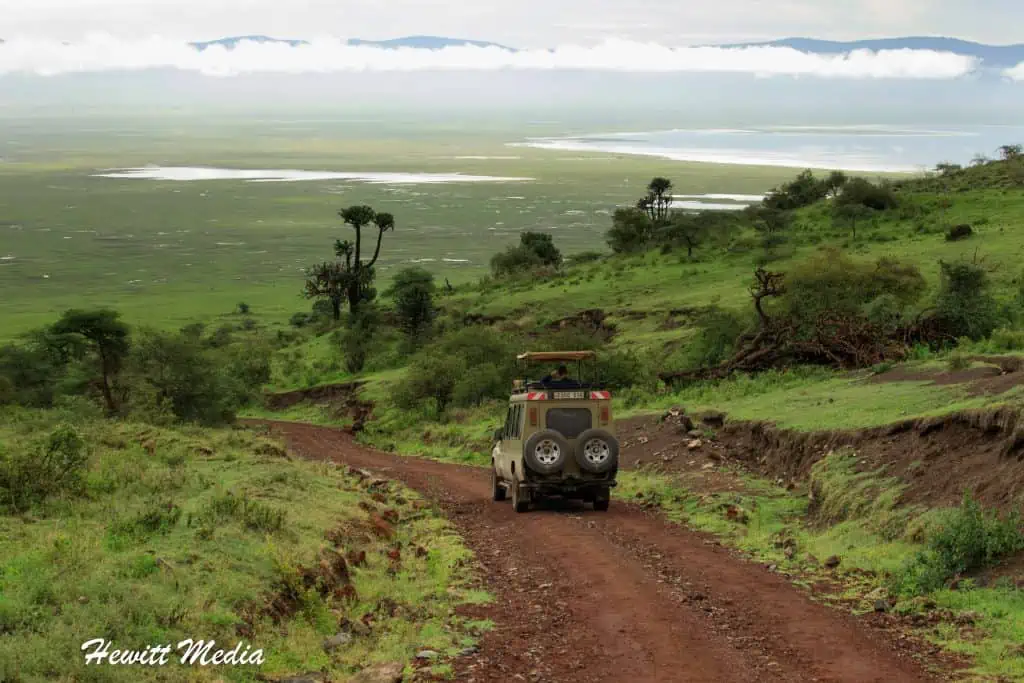
To hit all of the parks on my recommended list, I suggest that you target 6-9 days for your Tanzania safari itinerary, depending on whether or not you want to spend the optional days at the start or end of your trip to visit Kilimanjaro National Park, Arusha National Park, or both.
Using the Tanzania safari itinerary that I outline below, you will be able to hit all six of the parks on my recommended list. Keep in mind, that your permit for the Ngorongoro Crater will only allow you 24-hour access to the crater, so you will want to plan to arrive on night four and spend the night near the crater so that you can start your safari first thing in the morning.
If you would like to plan a shorter trip, I would suggest cutting out a stop at either Arusha National Park, Kilimanjaro National Park, or both. If you would like to spend a longer amount of time on Safari, I would suggest either adding stops at one of the parks not outlined on my itinerary or adding an extra day in the Serengeti.
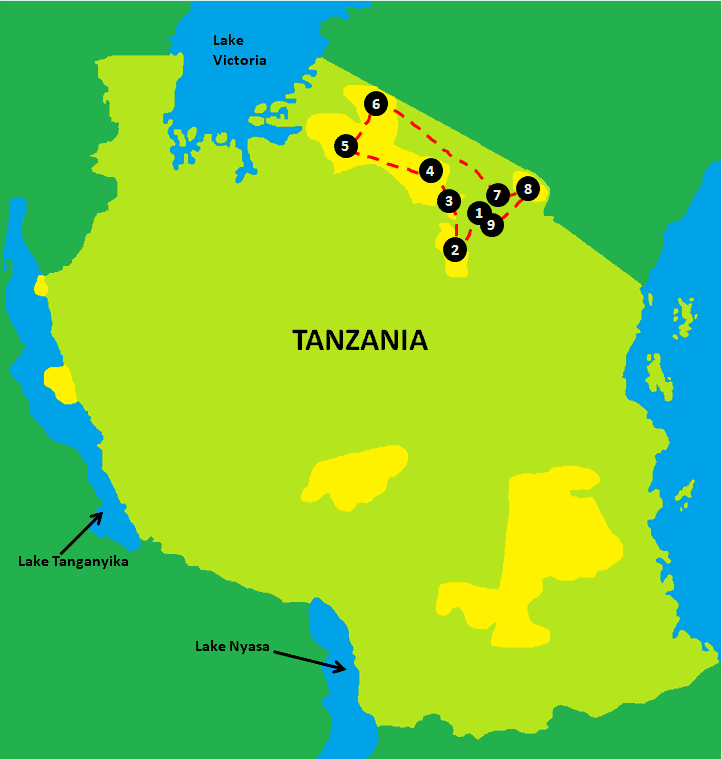
View Larger Map
Tanzania Safari Advice VLOG Episode
Planning a Tanzania safari itinerary is a big undertaking, which is why I am trying to be as detailed as possible when providing my tips on which parks to see, how long to spend there, and what to bring with you on your trip. If you would like to see more of my tips for planning a Tanzania safari itinerary, I would suggest watching my Travel Vlog episode on my Tanzania Safari Advice and Itinerary below.
Tanzania’s Protected Areas
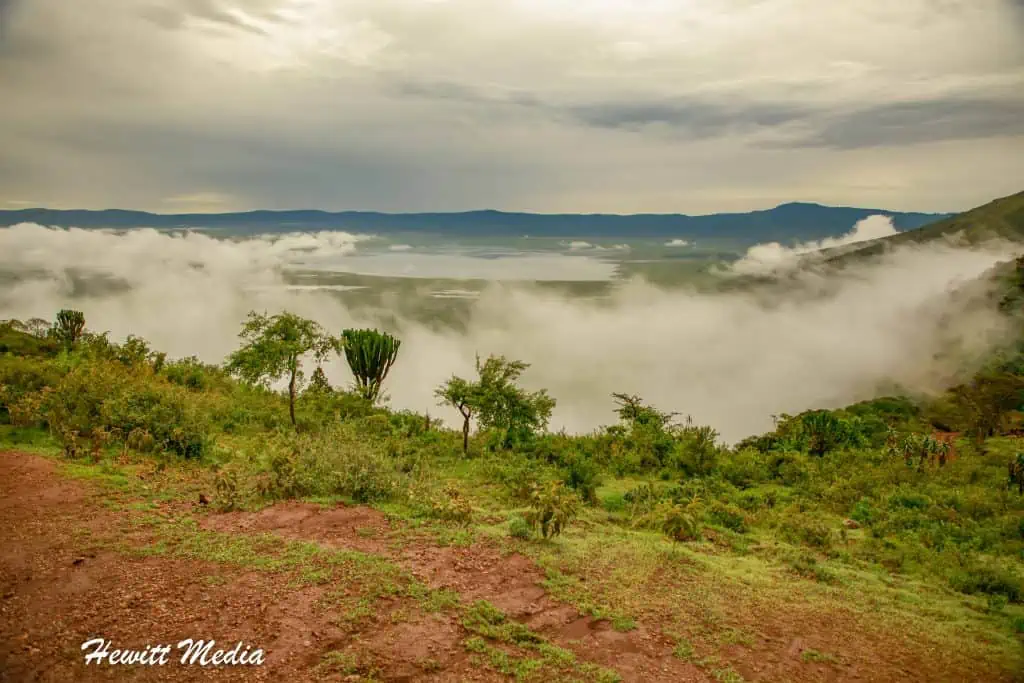
Over the decades, the country of Tanzania has done an incredible job of identifying the most important wildlife areas within its borders and protecting those lands. If you want to go on safari in Tanzania, you certainly won’t have a shortage of destinations to choose from. The country is home to:
- 18 National Parks
- 10 Major Game Reserves
- 2 Marine Park Reserves
- 13 Forest Nature Reserves
- and 3 Game Controlled Areas
While each of the country’s protected areas is spectacular in its own way, I have chosen to focus this Tanzania safari guide on my list of the top parks and conservation areas in Tanzania that I recommend visitors include on their Tanzania safari itinerary.
However, that doesn’t mean that other parks, such as the incredible Katavi or Mikumi National Parks, aren’t worth exploring if you have the time. If you would like an overview of Tanzania’s parks and other protected areas and where they are located, I have included a map below for you to review.
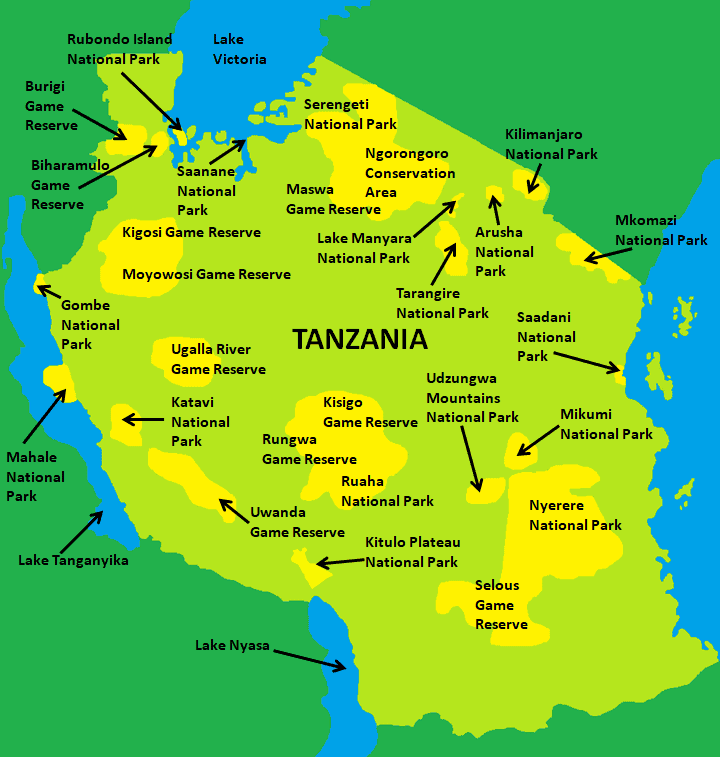
The Top 10 Tanzania Safari Destinations
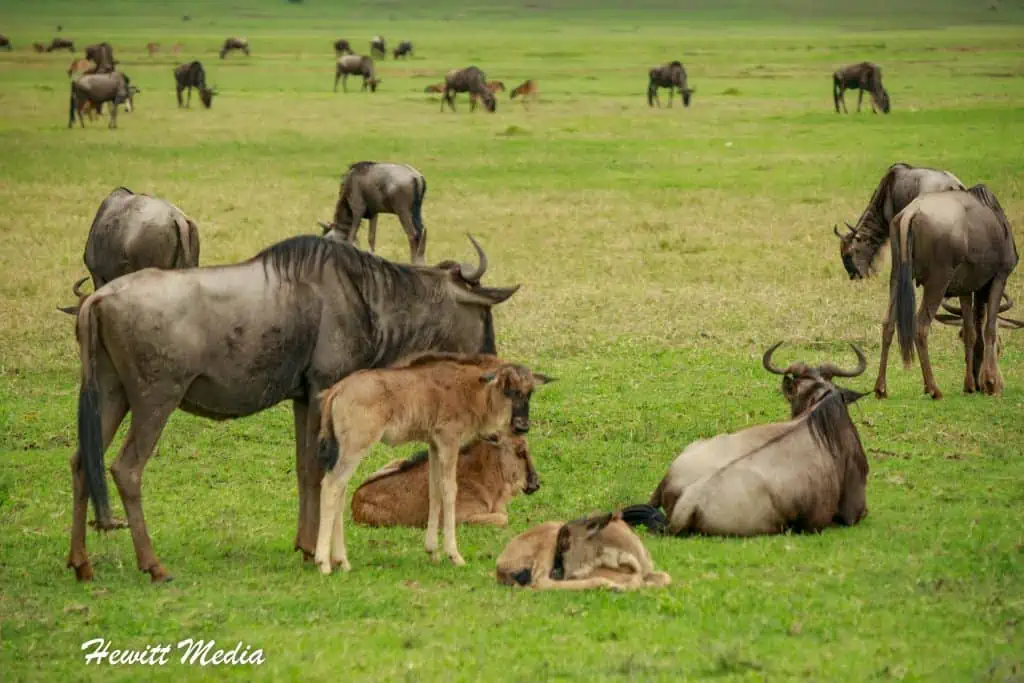
To help you narrow down which parks and wildlife refuges to visit during your safari trip in Tanzania, I have narrowed down the list of options to my Top 10 Wildlife Viewing Areas in the country for you to review. In some cases, I included areas that have very high concentrations of wildlife to see. The Serengeti and Tarangire National Parks fall into this category.
Other locations, like Gombe and Mahale National Parks, were chosen because of the unique wildlife viewing opportunities that they afford travelers.
Finally, parks like Kilimanjaro and Arusha National Parks were chosen both because of their close proximity to the city of Arusha and the unique landscape features that are found within the parks. For an overview of my top 10 recommended safari destinations in Tanzania, please refer to the map below.
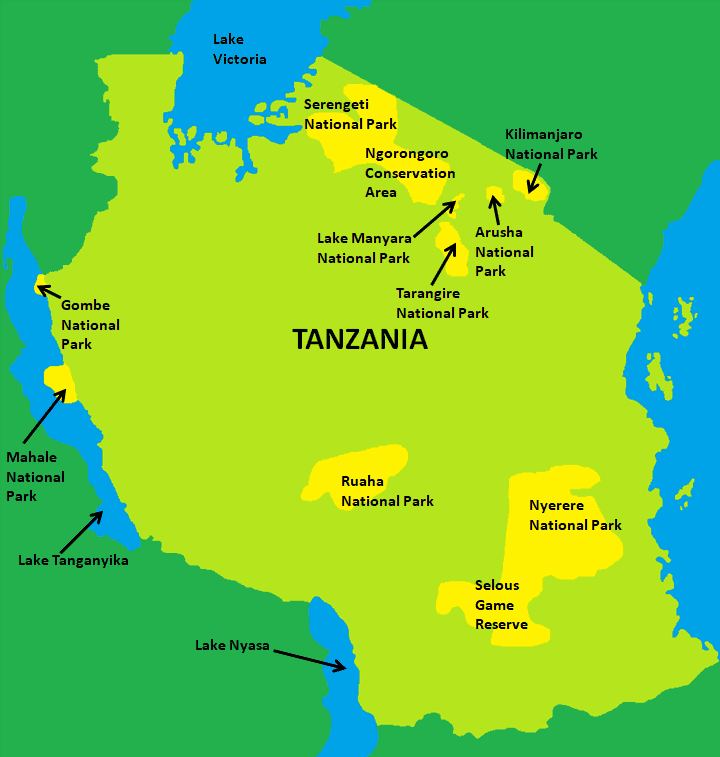
Serengeti National Park
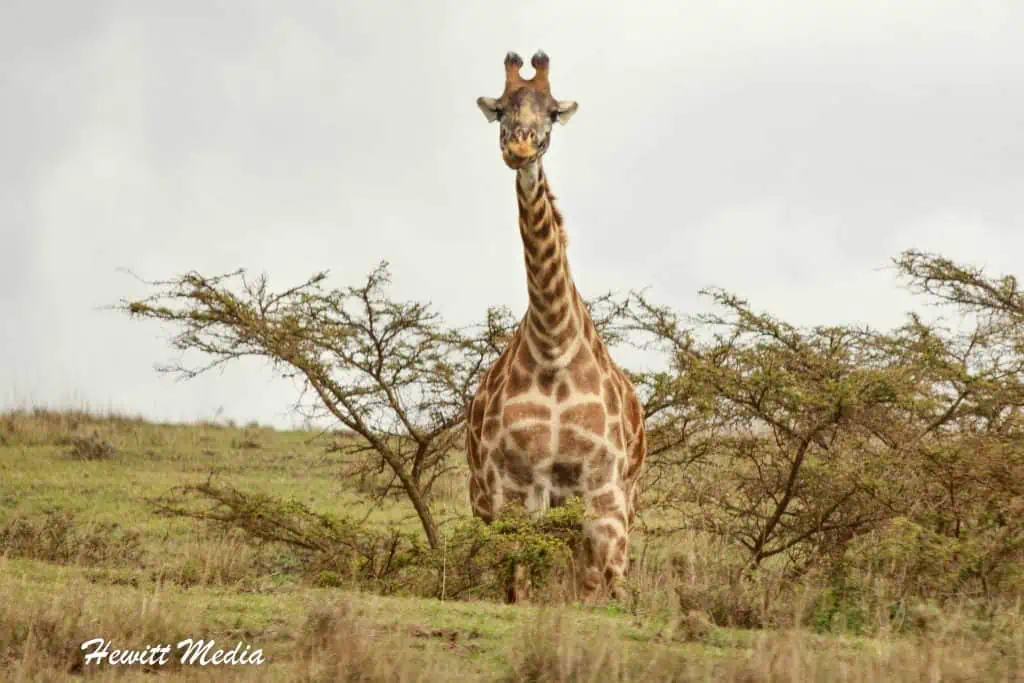
Home to the Great Migration and with the most diversity of wildlife that you will find almost anywhere in Africa, the Serengeti National Park is one of the most iconic wildlife destinations in the entire world. It is one of the most coveted safari destinations in Africa, and for good reason.
It has some of the most authentic wildlife viewing opportunities, is one of the best places to spot Africa’s big predators, has excellent accommodation options, and even offers hot air balloon safaris. Best of all, it is one of the cheapest parks in Tanzania to visit.
If you are going to add the Serengeti to your Tanzania safari itinerary, I would recommend taking the time to tour both the North and the South ends of the park. It is a big park and you will enjoy seeing as much of it as you can. The Serengeti borders the Masai Mara in Kenya, so if you want to really extend your safari itinerary, you can book a tour of the Masai Mara on the tail-end of your Tanzania safari.
Ngorongoro Crater Conservation Area

The Ngorongoro Crater is perhaps one of the best places in all of Africa to see all of the Big Five animals of Africa in one day. This includes the increasingly endangered black rhino. Because the crater is protected by steep walls and has available water year-round, the grazing animals in the crater don’t need to migrate.
This attracts all of Africa’s big predators, who can also be found in the crater all year long. The only downside to visiting the crater is that it can get quite busy during the peak safari season, so you will need to be sure to book your safari well in advance if you want to add the Ngorongoro Crater to your Tanzania safari itinerary.
Tarangire National Park
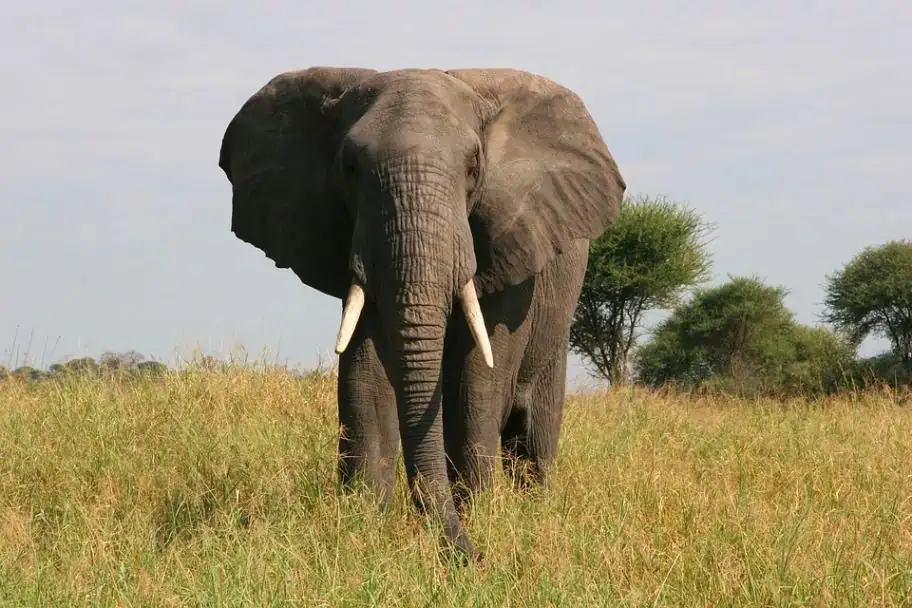
With the second largest concentration of wildlife in Tanzania outside of the Serengeti, Tarangire National Park is definitely a park that you will want to have on your Tanzania safari itinerary. It isn’t located on the traditional safari route, and therefore typically left off the itinerary for shorter safaris.
This means that it is typically much less crowded than the other big parks in Tanzania. During the peak safari season, the wildlife is typically very concentrated within the park, which means there are excellent wildlife viewing opportunities.
The park even offers night safaris, which is an incredible experience. If you want to see Tarangire National Park, I would recommend avoiding the wet season as the wildlife tends to be dispersed inside the big park and can be difficult to spot.
Lake Manyara National Park
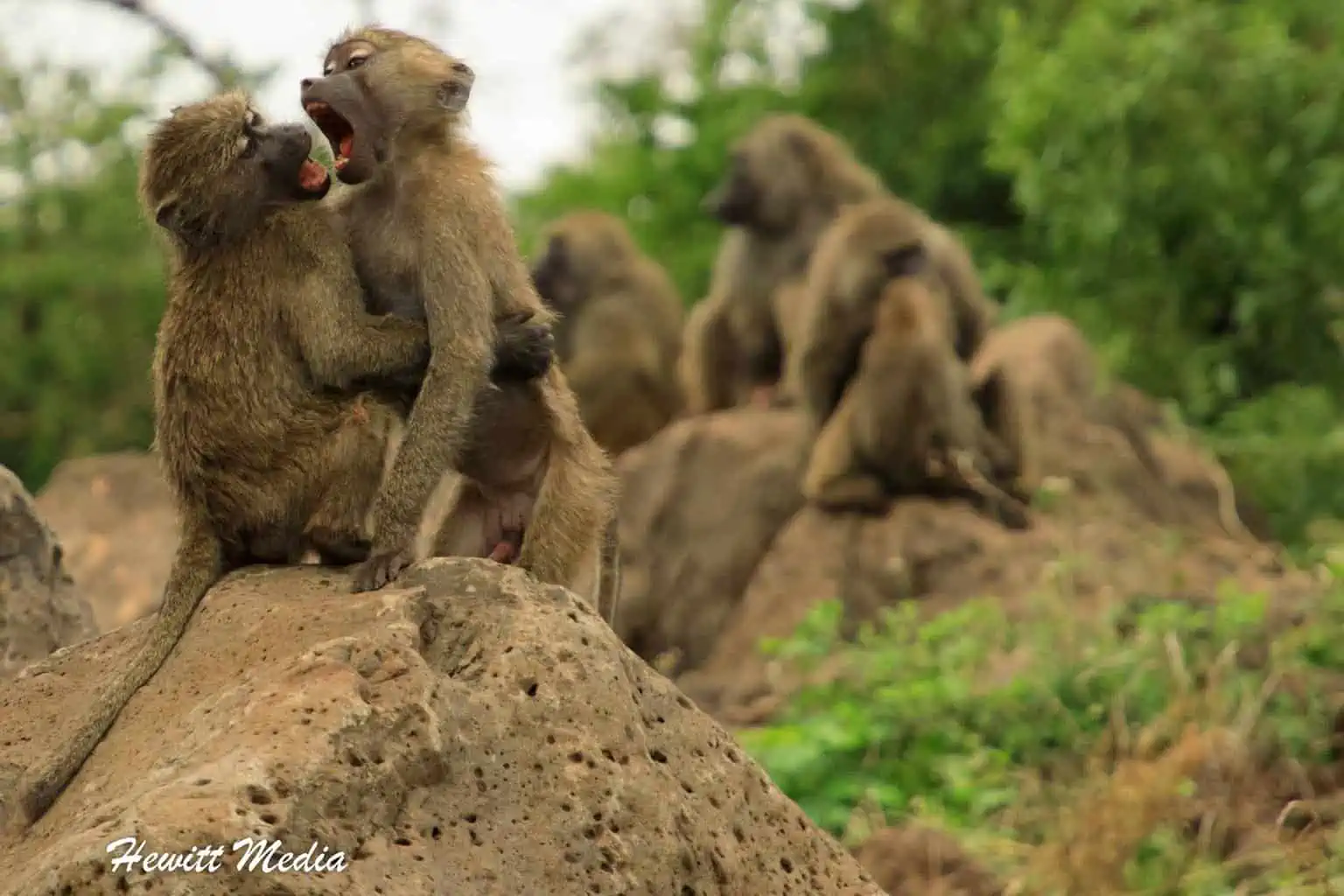
What Lake Manyara National Park lacks in size, it makes up for in the show. There are as many as 11 different ecosystems within this small national park, which means there is a wide variety of wildlife that calls the park its home.
The big draw in Lake Manyara is the famous tree-climbing lions. Few other places in Africa can you see lions who climb as often as at Lake Manyara. In my opinion, that alone is worth adding Lake Manyara to your Tanzania safari itinerary.
However, one of the more underrated aspects of the park is that it offers probably the best opportunity in Tanzania to see elephants up close. The wildlife in the park is typically concentrated in small pockets, which makes getting close much easier.
Kilimanjaro National Park
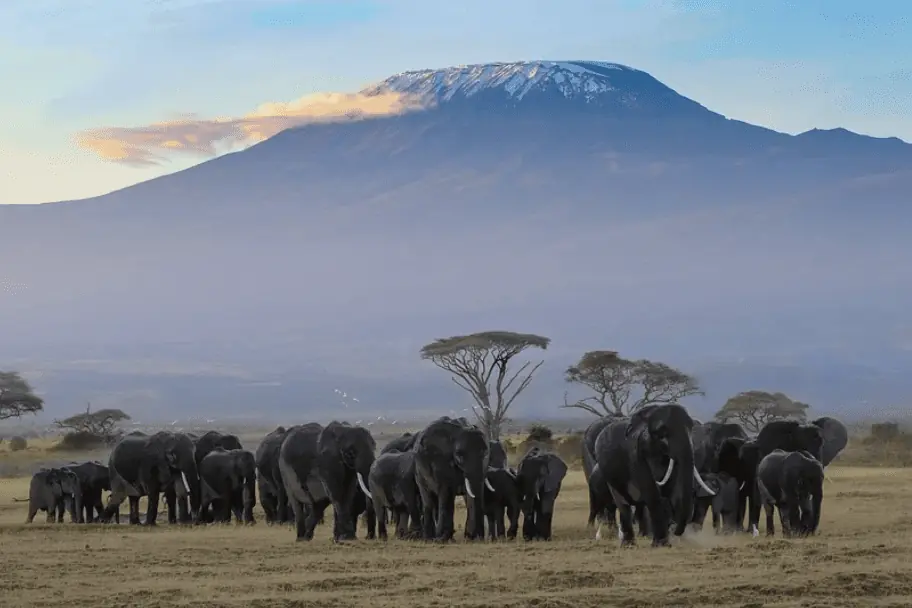
Home to Africa’s tallest mountain and the world’s tallest free-standing Mountain, Kilimanjaro National Park is a park unlike others that you will find in Tanzania. Most who visit the park do so to climb the mountain, but it is also a decent safari location if you are looking to add on a park either at the beginning or end of your Tanzania safari itinerary. It is far less likely that you will spot any of Africa’s big predators, such as lions, in the park, but you do have a good chance of seeing other wildlife.
Arusha National Park
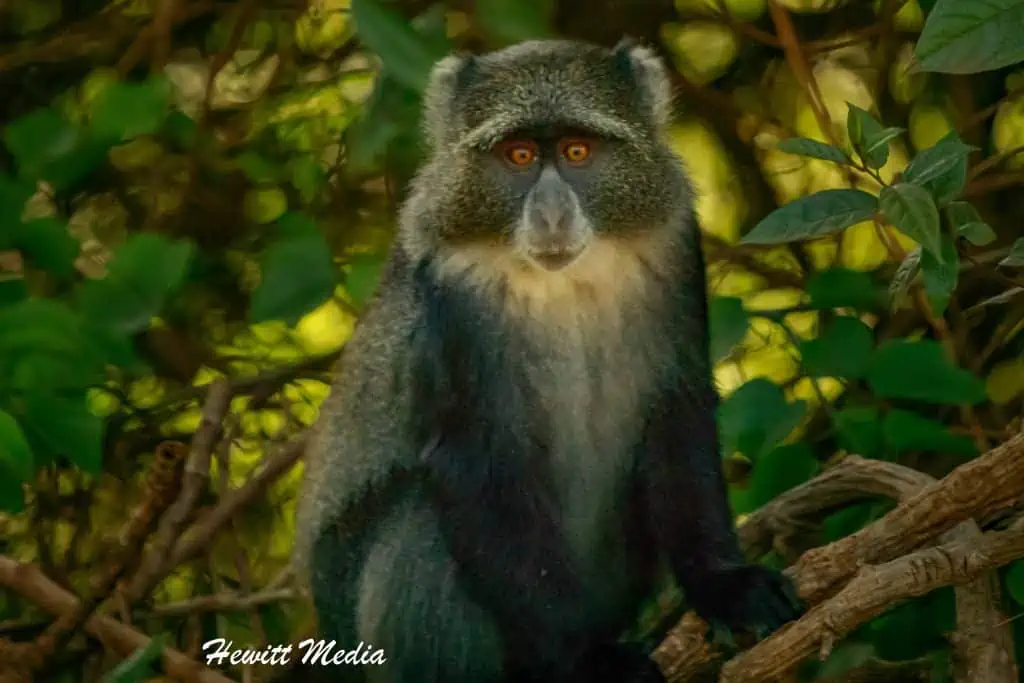
One of the biggest draws to visiting Arusha National Park is its proximity to the city of Arusha and Kilimanjaro National Airport, which makes it a great option if you would like to add on a park either at the beginning or the end of your Tanzania safari itinerary.
It is relatively easy to get to and has some truly breathtaking landscapes that you can explore. One of my favorite spots inside the park is the giant fig tree that has a tunnel carved in it you can actually drive your car through. The park may not offer as good of opportunities to lions as other parks, but you do have a great chance of spotting other wildlife.
Gombe Stream National Park
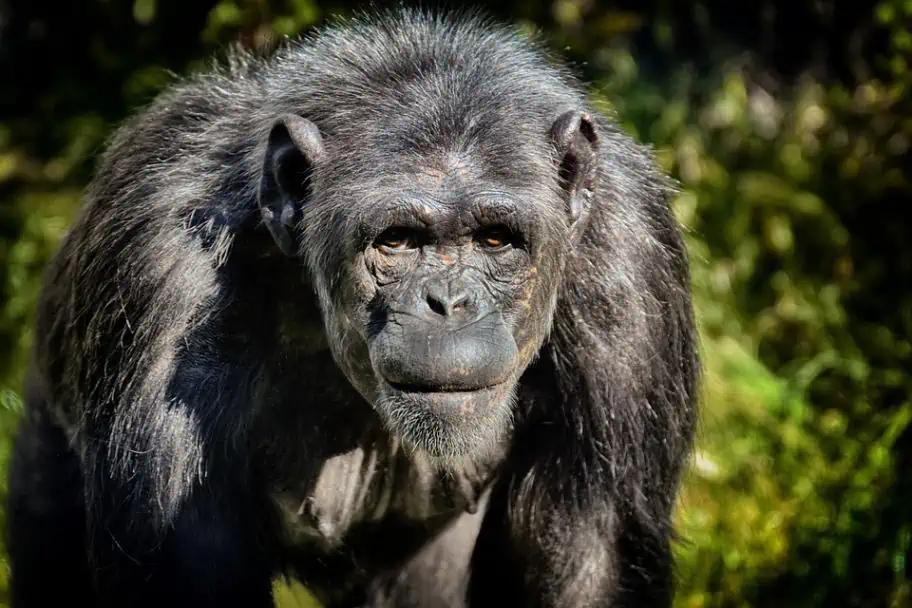
Although Gombe Stream National Park is one of Tanzania’s smallest parks, it offers visitors some unique and spectacular wildlife viewing opportunities. Made famous by Jane Goodall, who performed much of her Chimpanzee research in the park, Gombe National Park is one of the best places in Tanzania to spot wild Chimpanzees.
Because of its remote location, you will either need to take a long bus or car ride from Arusha to get to Gombe National Park or take a bush flight. The park typically isn’t crowded, which is a perk, but the amount of accommodations is limited. Because of this, you will want to book your stay well in advance if you want to add Gombe Streams National Park to your Tanzania safari itinerary.
Mahale Mountains National Park
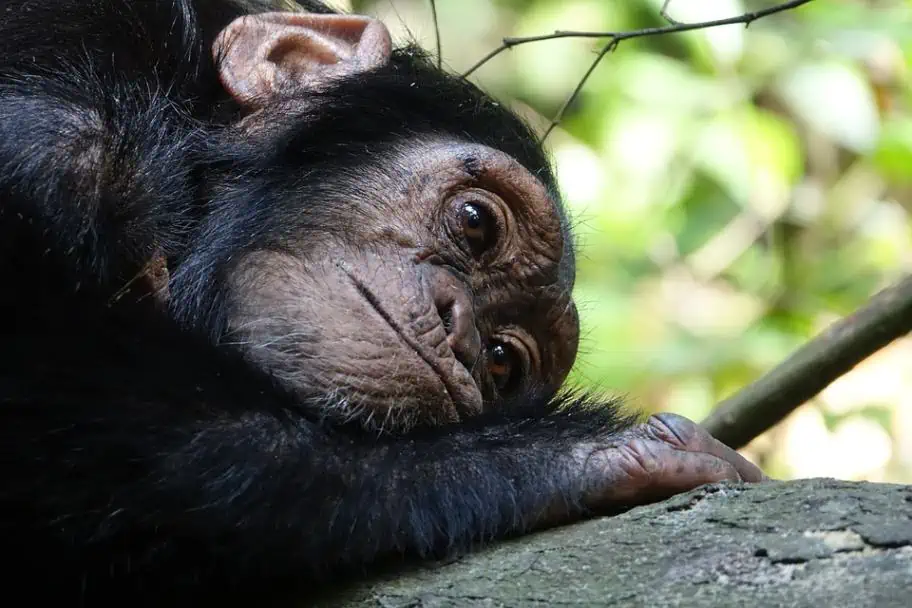
One of the most underrated national parks in Tanzania is undoubtedly the incredible Mahale Mountains National Park . In addition to having the best Chimpanzee tracking experience in all of Tanzania, the park also offers fishing and kayaking tours, spectacular beaches to enjoy, and a greater variety of wildlife for visitors to see than nearby Gombe National Park.
However, its remote location means that you will either need to take a long car ride or a bush flight to get to the park and the accommodations near the park are limited. In addition, Mahale Mountains is also one of the more expensive parks in Tanzania to visit. Because of the limited accommodations, you will want to be sure to book your safari well in advance if you want to add Mahale Mountains National Park to your Tanzania safari itinerary.
Ruaha National Park
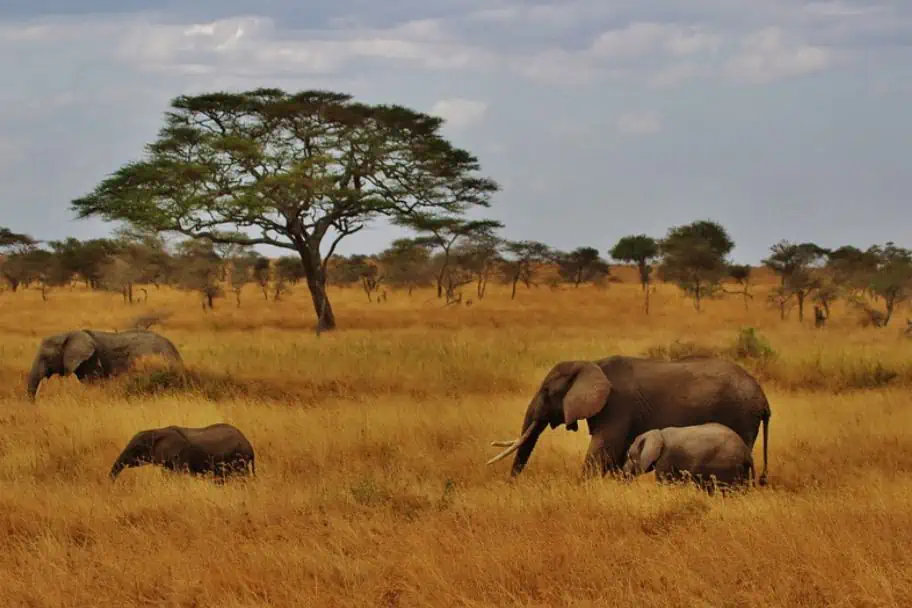
While it is no longer Tanzania’s largest Park, the beautiful Ruaha National Park still offers visitors some of the wildest and most authentic wildlife encounters in Tanzania. The park is famous for its breathtaking beauty, incredible ancient baobab trees, picturesque rivers, and dramatic landscapes.
If you are coming to Tanzania to see African Wild Dogs, which are quite rare, then adding Ruaha National Park to your Tanzania safari itinerary may be your best bet to see them. The park is also home to some unusual antelope species that are harder to find in some of the country’s other parks.
Because of its relatively remote location, Ruaha National Park doesn’t get as busy as the more famous parks in Tanzania. However, the park also doesn’t have as many accommodation options as the busier parks do. Because of that, you will want to book your safari in Ruaha well in advance to ensure you have a place to stay.
When you visit, I will make sure to target the dry season in Tanzania. During the wet season, wildlife can be much more difficult to spot because the animals are not congregating around watering holes.
Nyerere National Park
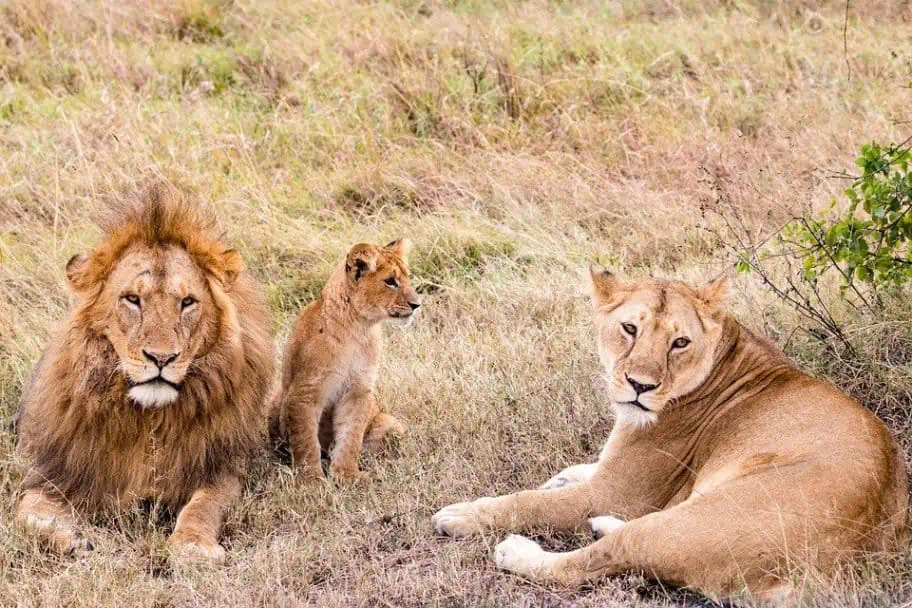
One of the newest national parks in Tanzania, Nyerere National Park is now also the country’s largest. It was formed from a large portion of what was the northern region of the Selous Game Reserve. The large expanses of raw African wilderness in the park really showcase the beauty of the African savannah.
If you love elephants, then you will definitely want to add Nyerere National Park to your Tanzania safari itinerary as it is one of the best places in Tanzania to witness the annual elephant migration. If you visit during the right time of year, you will get to see thousands of elephants in the park.
Nyerere National Park is Very Remote
The park is rather remote, so you will either need to take a long drive or bush plane to get there, so plan accordingly if you want to visit. The park is also in a malarial region of Tanzania, so you will want to ensure that you have proper mosquito netting and insect repellent for your safari.
When you visit, I will make sure to target the dry season in Tanzania. This is another park where wildlife can be much more difficult to spot because the animals are not congregating around watering holes during the rainy season.
Don’t Forget to Subscribe to My Adventures!
Type your email…

Let Me Help You Save On Your Next Adventure!
‘start exploring today’ merchandise available now.
Published by Josh Hewitt
Avid traveler and photographer who loves to see new places, meet new people, and experience new things. There is so much this world can teach us, we just need to explore! View all posts by Josh Hewitt
Related Articles
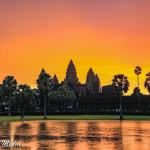
Siem Reap, Cambodia Guide: A Complete Travel Planner
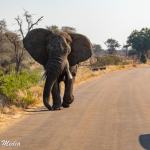
The Ultimate Kruger National Park Safari Planning Guide
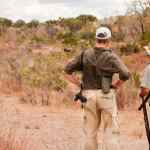
How To Backpack When Planning to Solo Camp Kruger National Park, Africa
2 comments ›.
Thanks for sharing this informative blog with us. This blog will help us while travelling in Tanzania. There is no need to find national parks because you share all the information about national parks in this blog.
No problem! I am so happy to help! Safe travels!! 😄
Leave a Reply Cancel reply
[…] https://wanderlustphotosblog.com/2024/01/24/the-20-best-travel-accessories-for-2024-an-essential-gui… […]
Thank you so much for the kind words!! 😊
Very good! What photography, no words to say anything
You will be fine! I just looked at your camera and I don’t think you’ll have any issues at all.…
Discover more from Wanderlust Travel & Photos
Subscribe now to keep reading and get access to the full archive.
Continue reading

Subscribe To My Adventures!
Explore Tanzania with confidence
Your Comprehensive Travel Companion: FAQs, Travel Tips, Wildlife Insights and Maps
Travel Guide/FAQ
Wildlife Guide
Tanzania Map
Orient yourself to Tanzania’s vast array of national parks, conservation areas, and game reserves
A Map of Tanzania

Travel deeper into Tanzania
Receive Safari Inspiration & News
Sign up for travel tips, early access to promotional deals, inspiring stories, and updates on our philanthropic efforts.
Thank you for subscribing to our newsletter! 🎉
You're now part of the Zazu Adventures community. Get ready for exciting updates, travel tips, and exclusive offers delivered straight to your inbox. Stay tuned for our next newsletter, and in the meantime, feel free to explore our website for more safari inspiration.
Happy adventuring!
Explore Tanzania in all its diversity
Start the Adventure
Embark on an unforgettable safari that will spark curiosity, build connections, and leave a lasting imprint on your hearts.
- Skip to primary navigation
- Skip to main content
- Skip to primary sidebar
- Skip to footer
Green Global Travel
World's largest independently owned Ecotourism / Green Travel / Sustainable Travel / Animal & Wildlife Conservation site. We share transformative Responsible Travel, Sustainable Living & Going Green Tips that make a positive impact.
Top 10 Tanzania National Parks & Reserves (The Ultimate Tanzania Safari)
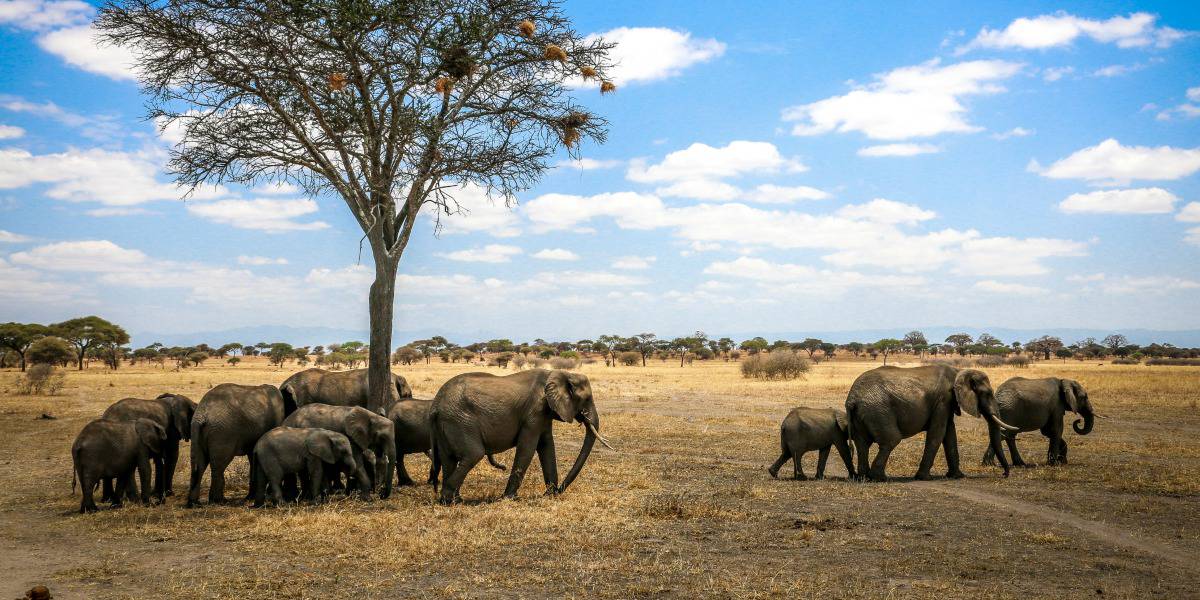
Disclaimer: This post may contain affiliate links. All hosted affiliate links follow our editorial policies .
With 16 national parks, three game reserves, and two marine reserves, going on a Tanzania safari ranked high on our world travel bucket list long before we had the means to visit the country. Around one-third of the country’s total land area is protected, with management overseen by the Tanzania National Parks Authority ( TANAPA ).
The natural attractions found within the approximately 122,000 square miles of Tanzanian national parks and reserves are world-renowned.
There’s the “Big 5” mammals– Cape Buffalo, Elephants , Leopards, Lions, and Rhinos –which draw wildlife lovers from all across the planet.
There’s the annual great migration , in which millions of ungulates make their way from Serengeti National Park in Tanzania to Kenya’s Masai Mara in search of water and green grass.
There’s the majestic summit of Mount Kilimanjaro (at 19,341 feet), and the vast volcanic crater of Ngorongoro (102 square miles).
When most people think about going on a Tanzania safari, birdwatching isn’t the first activity that comes to mind. But there are around 1100 different bird species found in Tanzania’s national parks. Of these, 43 are rare, 36 are listed as threatened by the International Union for the Conservation of Nature (IUCN), and 23 are endemic.
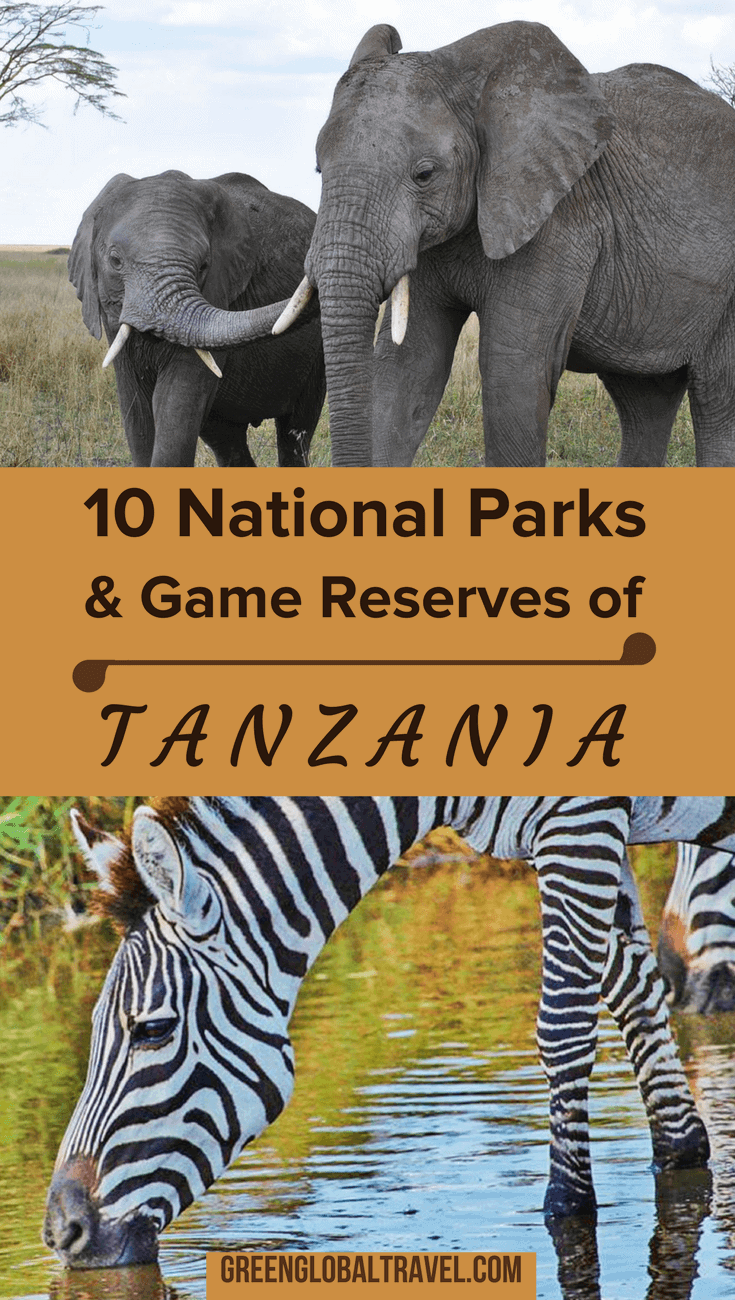
Of course, wildlife isn’t the only attraction you’ll find on a Tanzania safari. The country is well known for its rich indigenous cultures, including the Chagga, Maasai, and Sukuma peoples.
It also has a rich anthropological history: Fossilized human remains dating back some 2 million years have been uncovered in the Olduvai Gorge . And in 1978, footprints of hominids (which are believed to be our oldest ancestor) were discovered in volcanic ash covering a plain at Laetoli.
As a result, Tanzania is believed to be one of the oldest continuously inhabited countries on earth.
From Kilimanjaro and Ngorongoro to Serengeti, many of Tanzania’s most visited national parks and reserves are located along the northern safari circuit. But there are numerous smaller, less frequented parks in the western, central, and southern regions that are also teeming with wildlife and uncrowded by safari vehicles.
So here’s a look at 10 of the best national parks and reserves in Tanzania, which include numerous popular favorites as well as some lesser-known gems that receive very few visitors:
READ MORE: What is Glamping? (The Top 10 Glamping Resorts in the World)
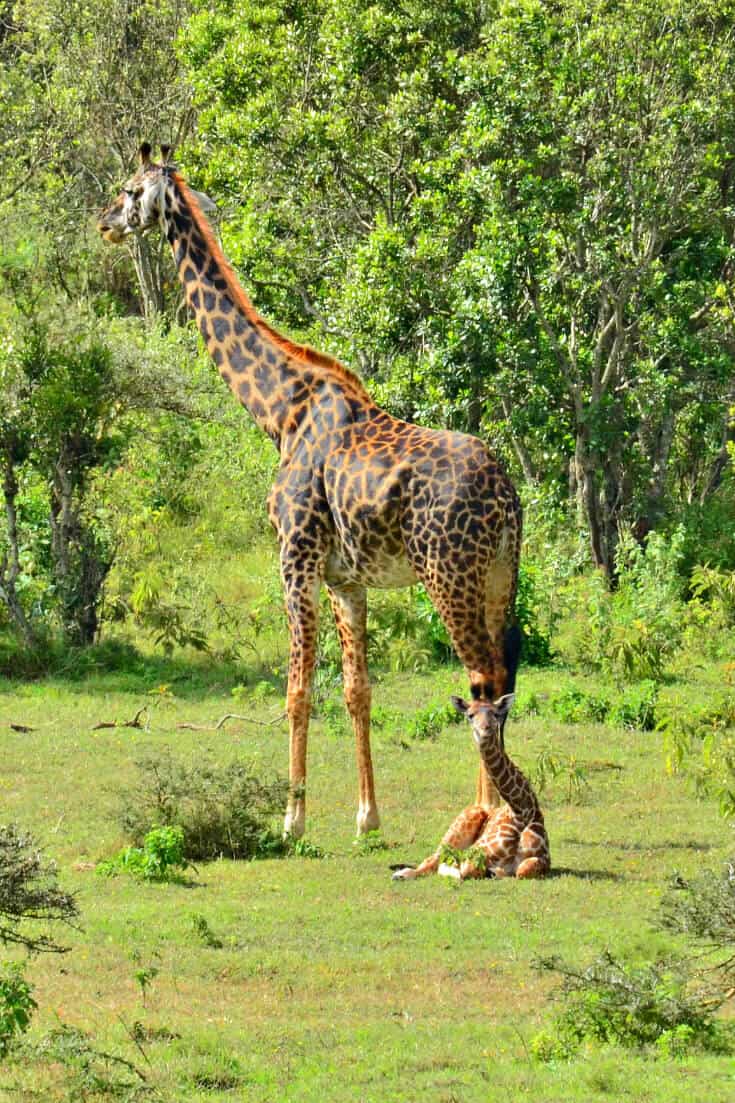
ARUSHA NATIONAL PARK
If you have a day to spare in Arusha or Moshi and want a taste of what Tanzania has to offer, look no further than Arusha National Park .
While it can’t match the breathtaking majesty of Tanzania’s more illustrious safari destinations, Arusha National Park can’t be beaten when it comes to proximity and ease of access. This small, 552 square-kilometer park is just an hour’s drive from the safari hub of Arusha, and can be easily taken in during a day trip.
This is one of the few Tanzania parks in which walking safaris are possible, in addition to game drives, canoe trips, and camping out in the bush. Visitors with a few days to spare can also climb picturesque Mount Meru (Tanzania’s second highest peak, after Kilimanjaro), which overlooks the park.
Africa’s famous big cats aren’t abundant here, but you won’t struggle to find other wildlife. Arusha is home to elephants, zebras, waterbucks, cape buffalo, baboons, colobus monkeys, many varieties of antelope, and some of the world’s largest populations of giraffes .
It’s also a prime destination for birders, with brilliant flocks of pink flamingoes blanketing the Momella Lakes. Over 400 different species of birds can be spotted here!
Arusha National Park offers a glimpse at the whole of Tanzania in a manageable size. You’ll see an array of animals grazing in the open grassland known as “Little Serengeti.” There are herds of buffalo wandering through Ngurdoto Crater, or “Little Ngorongoro.” And don’t miss the impressive variety of monkeys and birds in the trees of Ngurdoto Forest.
A visit to this small, but splendid national park is the perfect way to experience Tanzania’s abundant wildlife , even if you don’t have the time (or funds) to commit to a longer safari. –Emily Scott of Two Dusty Travelers
READ MORE: 50 Interesting Facts About Elephants (for World Elephant Day
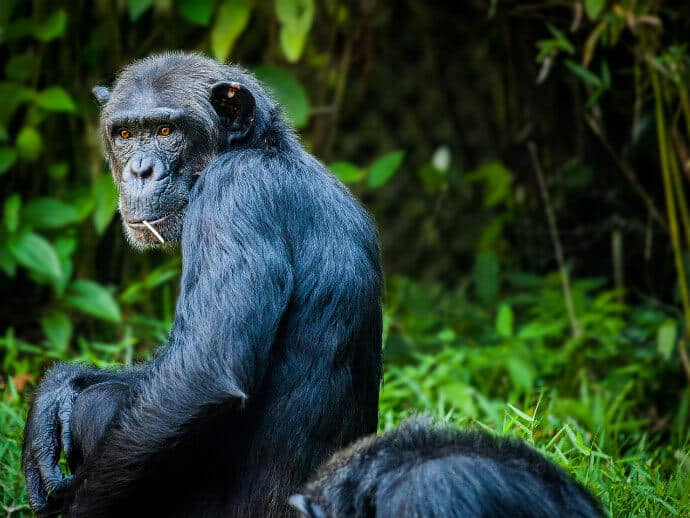
GOMBE STREAM NATIONAL PARK
The first of Louis Leakey ’s trailblazing trio of female primatologists (who were collectively known as “the Trimates”), Jane Goodall was inexperienced before he sent her to London to study primate behavior and anatomy in 1958. By 1960 she was based in Tanzania, doing pioneering chimpanzee research along the eastern shore of Lake Tanganyika.
Eight years later, Gombe Stream National Park was created to protect this 13.5-square mile patch of steep valleys and lush tropical rainforest. But despite its diminutive size, the park offers remarkable biodiversity that make it a dream destination for wildlife lovers.
It’s home to an array of primates, such as blue monkeys, olive baboons, red colobus, red-tailed monkeys, and vervet monkeys. It also include more than 200 different bird species, bush pigs, hippos, and the occasional leopard.
But of course the main attraction of this park is the world-renowned Kasekela chimpanzee community , which the iconic Goodall has studied for over 50 years now.
Trekking into the forest to see them is the park’s most popular activity. But don’t miss an opportunity to snorkel the lake, which boasts nearly 100 different kinds of colorful cichlids (a popular aquarium fish). –Bret Love of Green Global Travel
READ MORE: Interview with Primatologist Jane Goodall
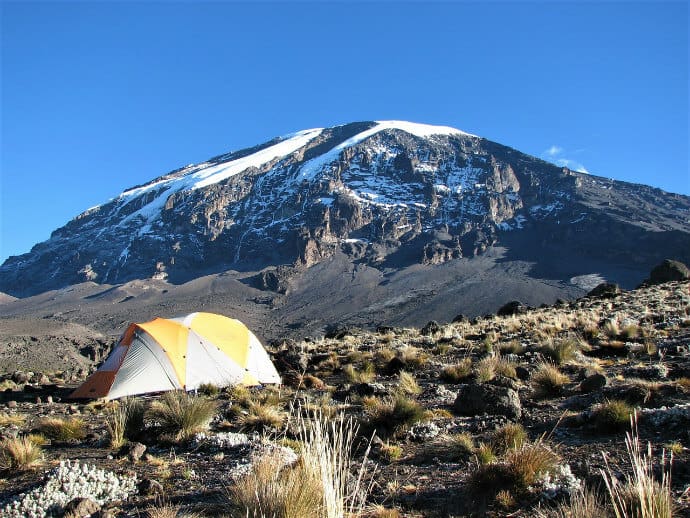
KILIMANJARO NATIONAL PARK
Located in the northeast of Tanzania near the town of Moshi, Kilimanjaro National Park was created in 1973. Originally containing the entirety of Mount Kilimanjaro above the tree line, it was later expanded to include the montane forest above 1820 meters, making it 1688 square kilometres (652 square miles).
Mount Kilimanjaro is famous worldwide as the highest mountain in Africa, and one of the seven peaks on the seven continents. Towering at 5895 meters above sea level, it is topped with multiple glaciers and a small (albeit diminishing) ice field, despite being located just 300 kilometers (190 miles) south of the equator.
First climbed in 1889, it is now a popular hiking destination for international tourists. In comparison to many of the other seven summits, reaching its summit is potentially achievable for those of reasonable fitness and with bulging bank balances. Just remember to pay attention to your guide’s admonition to go “pole pole” (slow).
Despite its primary attraction being hiking and climbing to the mountain’s summit, there’s still an impressive array of wildlife found in the national park , predominantly below the tree line.
Primates such as blue monkeys and western black-and-white colobuses can often be spotted (or heard) in the forest, while leopards, elephants, and cape buffaloes can be found on terra firma. Higher up, weird animals such as the Kilimanjaro tree hyrax are most commonly encountered. –Shandos Cleaver of Travelnuity
READ MORE: Climbing Mount Kilimanjaro
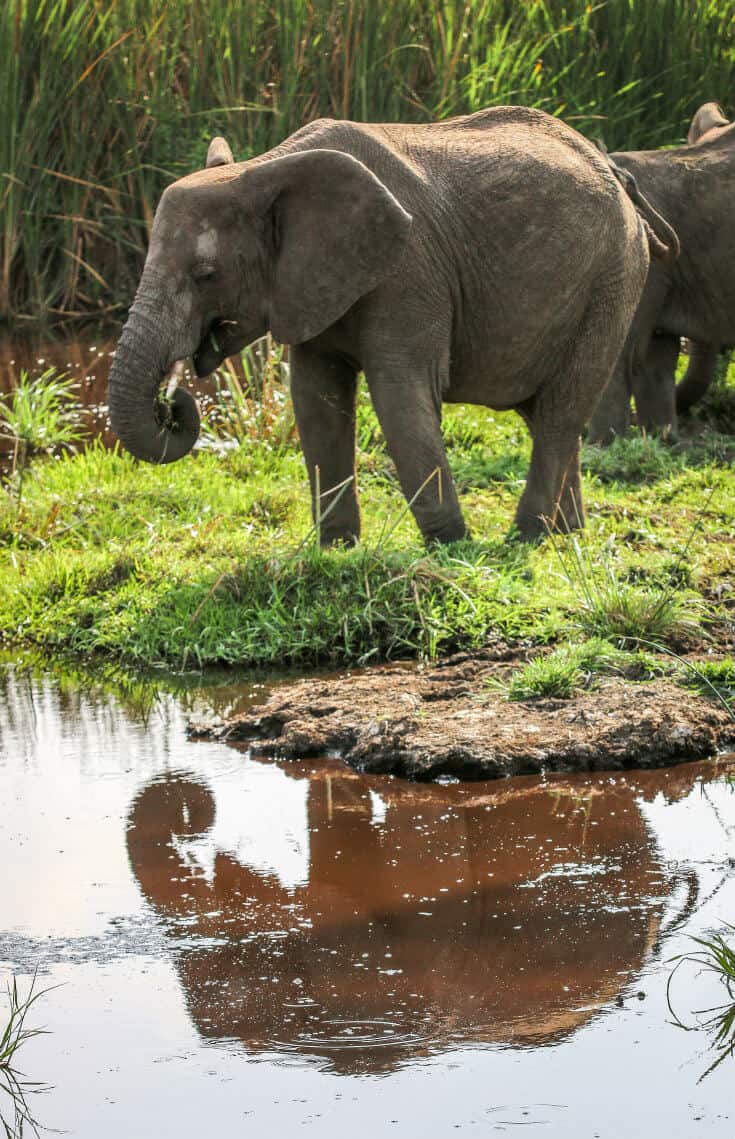
LAKE MANYARA NATIONAL PARK
Lesser known than more famous parks such as Serengeti and the Ngorongoro Crater, Lake Manyara is an incredibly beautiful park filled with exotic wildlife.
During our first visit to Lake Manyara, we saw countless elephants, giraffes, and baboons right by our vehicles. It was such an overwhelming feeling to see these exotic animals freely roaming their natural habitat, it was an experience we’ll never forget.
However, these are not the only animals you’ll find in Lake Manyara National Park. The area is known for hippos, impalas, wildebeests, buffalo, and warthogs, as well as lions and leopards (if you’re lucky enough to spot one).
You can spot more than 300 migratory birds in the park, including flamingos, lilac-breasted rollers, and kingfishers. Another great feature of the park is the broad variety of flora, fauna, and landscapes.
You’ll also find the gorgeous lake for which the park is named, as well as hot springs, floodplains, groundwater forests, and bush plains. The park is conveniently located just 126 km (78 miles) southwest of Arusha, and is quite close to Tarangire National Park (another awesome place to see elephants).
Lake Manyara is part of the Lake Manyara Biosphere Reserve, which was established by UNESCO back in 1981, making it a protected area for wildlife. If you’re booking a dream trip to Africa , make sure you add Lake Manyara to your list! –Matt Bailey of LiveLimitless
READ MORE: The Culture of the Maasai People
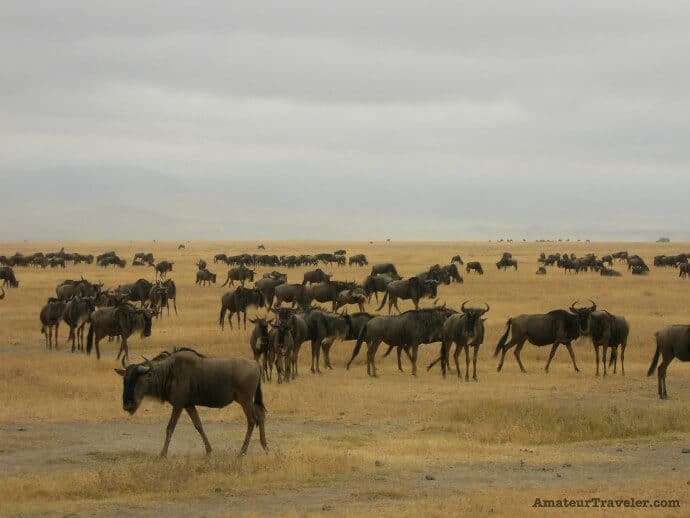
NGORONGORO CONSERVATION AREA
The Ngorongoro Crater is technically not a national park , but a conservation area in Tanzania. Still, it deserves a place on every nature-loving traveler’s bucket list.
We had seen plenty of wildlife in Tanzania before we got to Ngorongoro Crater. But it was not until we were among the vast herds of zebras and wildebeests in Ngorongoro that I really felt I was in the Africa I’d seen on TV and in the movies.
This area has all of Africa’s “Big 5” animals, but the endangered Black Rhinos are kept in a remote area to protect them from poaching . The crater’s array of wildlife also includes flocks of flamingos, a pool of hippos, warthogs, gazelle, cheetahs, and a number of lion prides.
As majestic as it is to see the large herds, there is something quite singular about seeing lions. Even from the safety of your RangeRover, nothing quite loosens the bowels like a lion roaring right next to you. It’s an eye-opening reminder that we humans have not always been the top of the food chain.
The floor of this impressive, ancient volcanic crater measures some 260 square kilometres (100 square miles). There is no lodging within the crater and tickets are limited to six hours. So all trips to the floor of the crater are day trips offered from nearby lodges . There’s also a Maasai cultural Boma outside the crater, but inside the conservation area, which will give you a view into the life of these nomadic pastoral people. –Chris Christensen of Amateur Traveler
READ MORE: Exploring the Ngorongoro Conservation Area
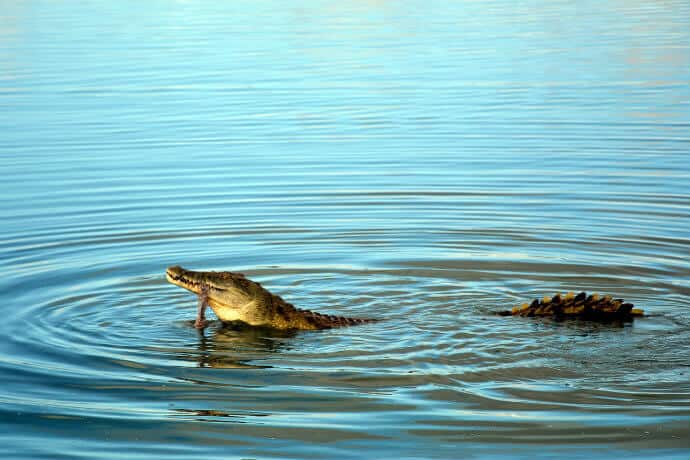
RUAHA NATIONAL PARK
Most people don’t know this, but Ruaha National Park is actually the largest national park in Tanzania. It was expanded in 2008 with the addition of Usangu Game Reserve and other important wetlands, which increased its size to about 7,809 square miles.
But still Ruaha is usually under the radar for most visitors, receiving around 21,000 visitors each year. I believe the reason for this is that most of Tanzania’s best national parks are located in the north, while Ruaha is in the country’s center, near the city of Iringa.
The vastness of the park ensures that you can find most of the major African mammals here, except for the rhino. You will definitely see lots of elephants, crocodiles, and wild dogs, along with a wide variety of birds.
We stayed inside the park (in the Ruaha River Lodge ), but there are multiple options to stay just outside the park as well. We drove from Dar-es-salaam to Ruaha, with a stopover in Iringa: The drive takes about 10 hours these days. Alternatively, you can fly into Iringa and then catch a ride to Ruaha from there.
Ruaha will always remain special to me, since I had one of my most memorable experiences of my life here. Though it may be more remote than many of Tanzania’s national parks, it is definitely a worthwhile place to visit. –Soumya Nambiar of Travel, Books & Food
READ MORE: The Endangered Elephants of East Africa
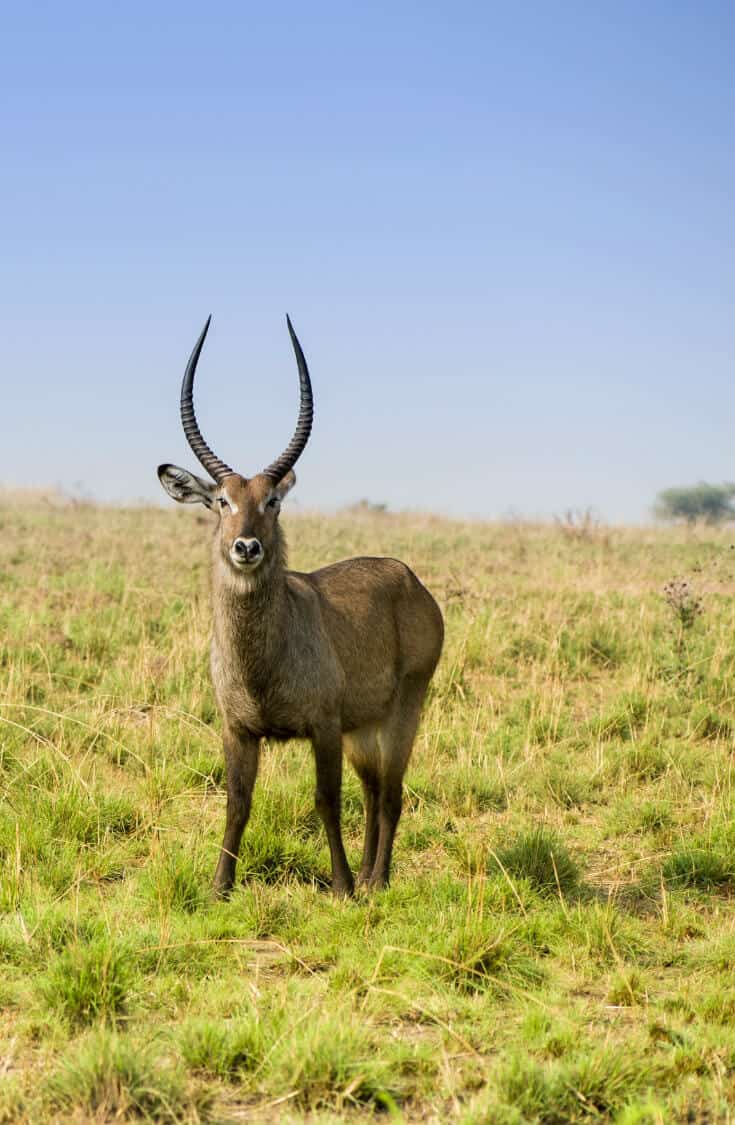
SAADANI NATIONAL PARK
Established as the 13th national park in Tanzania in 2005, this rarely-visited park (which averages less than 100 travelers per day) was originally set aside as a game reserve in 1969. Encompassing around 425 square miles along the Indian Ocean (2-3 hours drive from Dar es Salaam), it’s the only wildlife reserve in Tanzania that borders the sea.
Once used primarily for hunting, Saadani National Park is one of the rare places in Tanzania where wildlife population numbers have been increasing over the past few decades. Once killed as bushmeat, herds of Lichtenstein’s hartebeest, common waterbucks, blue wildebeests, bohor reedbucks, and sable antelopes are now beginning to thrive.
The park is home to four of Africa’s famed Big 5– East African lions, African elephants, buffaloes, and African leopards. You’ll also find four species of primates (black-and-white Colobus monkeys, blue monkeys, vervet monkeys, and yellow baboons), as well as Masai giraffes, civets, genet cats, warthogs, hippos, crocodiles, and more.
Unfortunately, Saadani’s coastal beauty is clouded by controversy. When the Tanzania National Parks Authority upgraded the reserve to a national park, they redrew its boundaries to include prime seaside villages such as Uvinje and Porokanya. But they never discussed this with the villagers, which they’re required by law to do.
As a result, poaching within the park has been on the rise in recent years, despite the fact that these villages have historically been very conservation-focused.
Here’s hoping TANAPA will do the right thing by the villagers in the near future and recognize the importance of community-based tourism in ensuring the long-term sustainability of their conservation efforts. –Bret Love of Green Global Travel
READ MORE: Battle in Tanzania Over Maasai Land Rights

SELOUS GAME RESERVE
The Selous Game Reserve is located in southern Tanzania, far from the mass tourism of the Serengeti or the Ngorongoro Crater.
The Selous reserve encompasses 54,600 square kilometers, making it Africa’s largest game reserve (and even bigger than some countries). The Rufiji River serves as the heart of the park and is a major water source for all the amazing wildlife in the Selous.
I loved our four-day safari here because there are not many lodges in or around the reserve. Compared to the national parks on Tanzania’s northern safari circuit , the reserve remains relatively unheard of. Which means you may never see any other people while you’re there!
The main thing to do here, of course, is go on safari game drives. But you can also fish, enjoy a river cruise, or go on a walking safari. The wildlife in the reserve is unreal, with nearly 120,000 buffalo, 40,000 hippos, and around 4,000 lions.
The population of lions is likely the largest in the world, and you also stand a strong chance of seeing the elusive leopard and the endangered African wild dog . The only animal you won’t see much of in the Selous reserve is the African elephant: Sadly they were nearly poached to extinction in the past.
The best time to visit Selous is from June to October, which is also the high season. There is little to no rain then, which means there is a higher chance of seeing wildlife around the watering holes. For a luxurious (and expensive) stay, Nomad Tanzania’s Sand River lodge can’t be beat! –Natasha Alden of The World Pursuit
READ MORE: Walking With Lions & Canned Lion Hunting
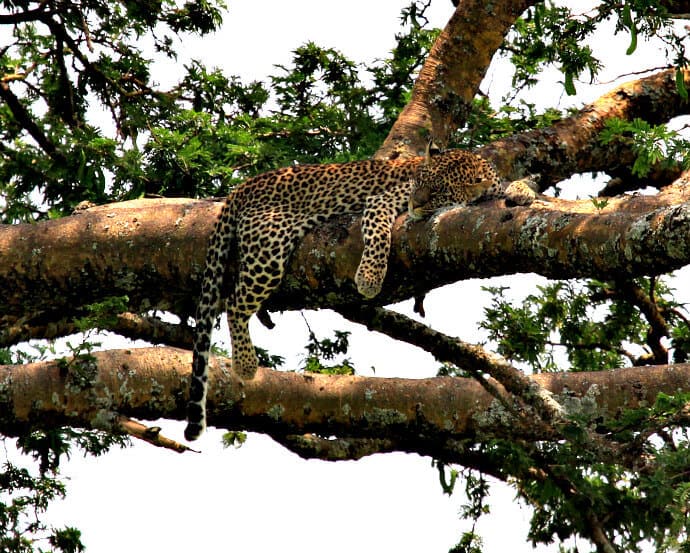
SERENGETI NATIONAL PARK
The Serengeti is easily the most famous national park in Tanzania. And with good reason! Serengeti National Park is massive, spanning 5700 square miles in Northern Tanzania. It’s also one of the oldest, least disturbed, and most complex ecosystems on earth. The climate, flora, and fauna have remained virtually unchanged over the past one million years.
A photographer’s dream, the Serengeti is home to all of Africa’s Big Five: the lion, leopard, elephant, rhino, and Cape buffalo.
The Serengeti plains are also where the last triumphant mass movement of animals on earth occurs like clockwork each year. From December to April, more than two million wildebeest and some 250,000 zebra call the Serengeti plains home.
In a strategy for their very survival, February and March bring the birth of zebra and wildebeest calves, who feed on the mineral-rich grasslands to quickly grow strong and build stamina. As the rains move north towards Kenya, the herds follow in a never-ending journey known as the Great Migration , traversing around 500 miles year after year.
A safari in the Serengeti is a discovery of animals you didn’t even know existed. The park boasts over 500 species of birds alone. All three African big cats are abundant, with cheetahs following the gazelles on the plains, lions everywhere, and the most elusive of the Big Five– the leopard– lazing in the shade of the big trees.
Aside from the usual safari staples, there are also several species that are found nowhere else on earth. You might even spot the recently re-introduced African wild dog, which had been locally extinct since 1991. –Jennifer Dombrowski of Luxe Adventure Traveler
READ MORE: Serengeti National Park Photo Essay
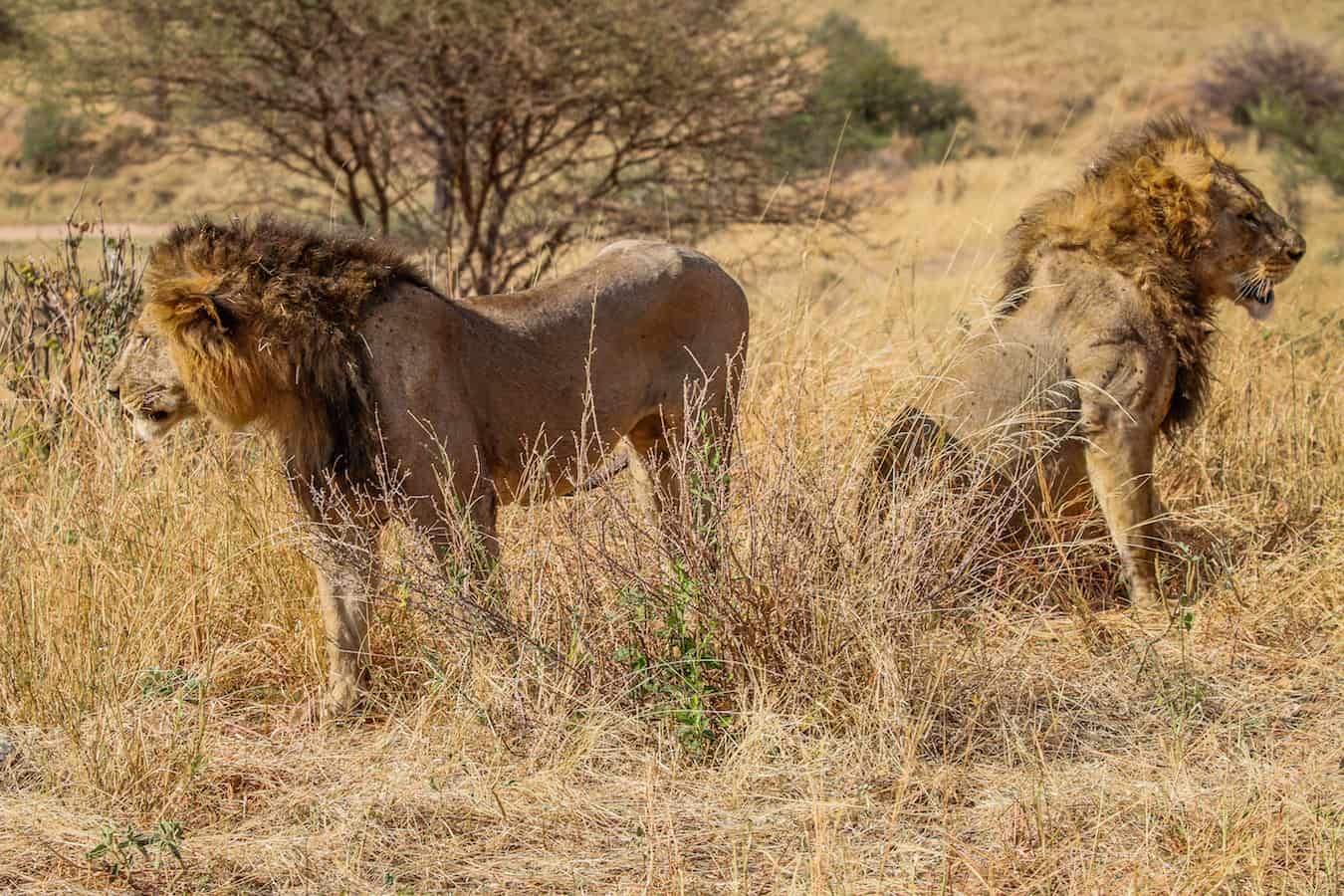
TARANGIRE NATIONAL PARK
Though it’s not nearly as large as the Serengeti or as well known as the Ngorongoro Crater, Tarangire National Park won our hearts thanks largely to the impressive array of wildlife we saw during our short two-day visit.
Located in the Manyara region less than two hours from Arusha, it’s an absolute must-see for anyone doing the northern Tanzania safari circuit. It was arguably our favorite of the five national parks we visited during our tour with Tanzania Journeys .
The sixth largest Tanzania national park at approximately 1,100 square miles, its key draw for animals is the Tarangire River. This becomes the area’s only source of water during the dry season, drawing giraffes, zebras, and countless ungulates there to drink. This may also explain why the park has become a huge draw for Elephants, which we saw by the dozens during our visit.
Tarangire has a number of other unique features, including massive Baobab trees, huge termite mounds that often serve as home to dark mongooses, and the famous tree-climbing lions.It’s also a major draw for birdwatchers , as the swamps in Tarangire National Park attract one of the world’s most stunning arrays of breeding birds (over 550 species).
Though we loved all the national parks and reserves we visited in Tanzania, Tarangire is the one that far exceeded our expectations. –Bret Love of Green Global Travel; editorial assistance by Anika Chaturvedi
If you enjoyed reading Top 10 Tanzania National Parks & Reserves (The Ultimate Tanzania Safari), then you also might like:
10 Best National Parks in the USA For Wildlife Watching
The Top 5 UK National Parks
The Least Visited National Parks In Europe
Top 10 Australian National Parks
Top 10 Thailand National Parks
About the Author
Green Global Travel is the world's #1 independently owned ecotourism website encouraging others to embrace sustainable travel, wildlife conservation, cultural preservation, and going green tips for more sustainable living.
We've been spotlighted in major media outlets such as the BBC, Chicago Tribune, Forbes, The Guardian, Lonely Planet, National Geographic, Travel Channel, Washington Post and others.
Owned by Bret Love (a veteran journalist/photographer) and Mary Gabbett (business manager/videographer), USA Today named us one of the world's Top 5 Travel Blogging Couples. We were also featured in the 2017 National Geographic book, Ultimate Journeys for Two, for which we contributed a chapter on our adventures in Rwanda. Other awards we've won include Best Feature from both the Caribbean Tourism Organization and the Magazine Association of the Southeast.
As Seen On…

Join the 300,000+ people who follow Green Global Travel’s Blog and Social Media
This website uses cookies to ensure you get the best experience on our website. Learn more
- Australian Dollars
- British Pounds
- Canadian Dollars
- New Zealand Dollars
- South African Rands
- Swiss Francs
- U.S. Dollars
Talk to an expert 1-800-242-2434 Lines now closed
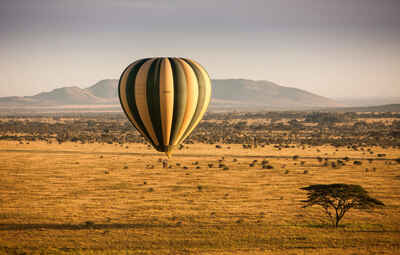
Tanzania Safaris
In Kilimanjaro's footprint, Tanzania mesmerizes with the great wildebeest migration and vast wildlife parks – a thrilling country for unforgettable safaris.
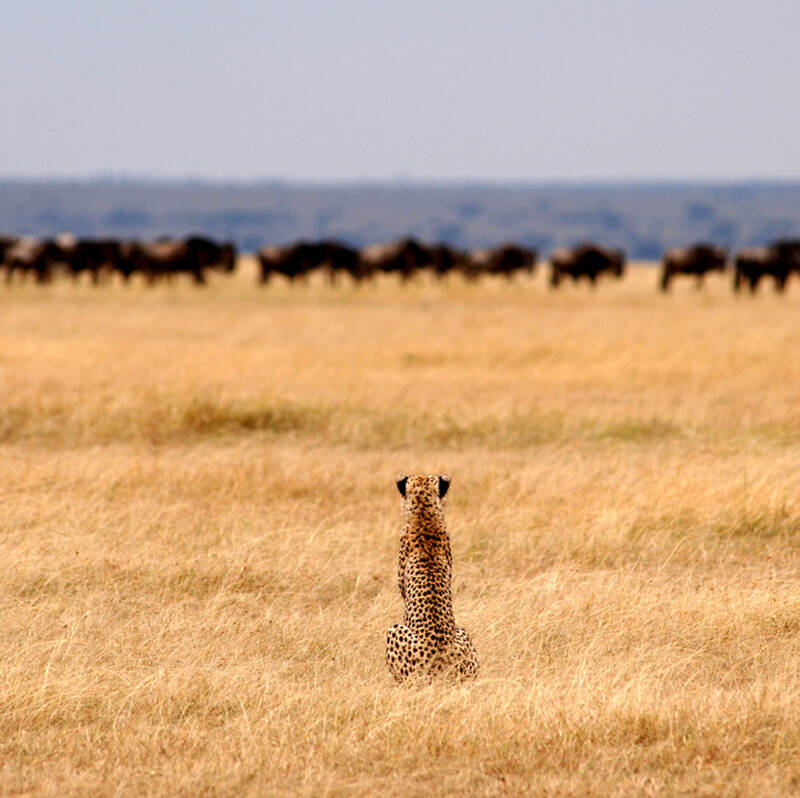
“We are seasoned off-the-beaten-track travellers and I marvel that everything worked exactly as it was supposed to”, wrote a recent traveller of his Expert Africa safari. “Here we were, in the middle of central Tanzania, waiting for a 10:05 flight. Guess what? At 10:03, there was the plane, buzzing animals off the grass runway, then touching down to pick us up. It happened every time. Dazzling!” The same traveller went on to describe visceral wildlife encounters: “Having a leopard on your tent porch is not something I will soon forget. This is not Disneyland.” Not Disneyland could be Tanzania’s national motto. “We had to keep pinching ourselves” wrote a first-time visitor, “that we were actually there, in the places we had only read about or seen on TV.” Tanzania makes a sensational impact. Over one-third of this expansive land is dedicated to safeguarding its diverse array of wildlife: an irresistible draw for the adventurous. A journey through Tanzania’s treasure trove of biodiversity can takes you through a medley of landscapes – from sweeping grasslands to dense tropical forests, from vibrant coral reefs to the sprawling Serengeti , a fortress for Africa's ‘big five’. Watch in awe as large herds of elephants stir clouds of dust in Ruaha National Park , hippos frolic in the rapids of the Rufiji River and chimpanzees play in the lofty domains of the Mahale Mountains . Underpinning this vivid tapestry of wildlife lie some of the world’s greatest geological splendours: the Great Rift Valley, the Ngorongoro Crater , the iconic Serengeti plains , all of which play a crucial role in shaping Tanzania’s diverse ecosystems. Tanzania’s tropical coast, sun-dappled beaches and scattering of islands are equally fascinating. Here cosmopolitan towns date back centuries to early trade routes and secluded Indian Ocean islands lie surrounded by white-sand beaches and colourful coral reefs. “Our eyes were wide with wonder from the moment we left the airstrip,” sighed a couple returning to Tanzania for the first time since their honeymoon 30 years earlier: “We had the most mind-blowing, amazing experience.”
Tanzania’s top safari & holiday destinations
Tanzania’s safari and beach areas fall naturally into four broad groups.
Tanzania's ‘Northern Circuit’ is the term which defines the areas of the sprawling Serengeti , the stunning landscape of the Ngorongoro Crater , Tarangire and Lake Manyara national parks – the most famous safaris areas in Tanzania.
For a quieter experience, Tanzania’s southern parks offer unspoiled wilderness areas dotted with a smaller number of safari camps. The lakes and waterways of Nyerere National Park (formerly Selous) offer magical boating safaris, while Ruaha ’s rugged terrain is excellent for walking safaris is home to a very strong population of lions.
Nearer to Africa’s heart, Western Tanzania is harder to reach, so few visitors come, but two parks are amazing. Katavi National Park protects a vast plain: the battleground for buffalo and lion, whilst an hour’s flight away, the spectacular Mahale Mountains rise sheer from the shores of Lake Tanganyika – providing probably the best place to track wild chimpanzees in Africa.
Lush and tropical, Tanzania’s coast & Islands are the venue for simple beach retreats to luxurious lodges – with the odd private island included.
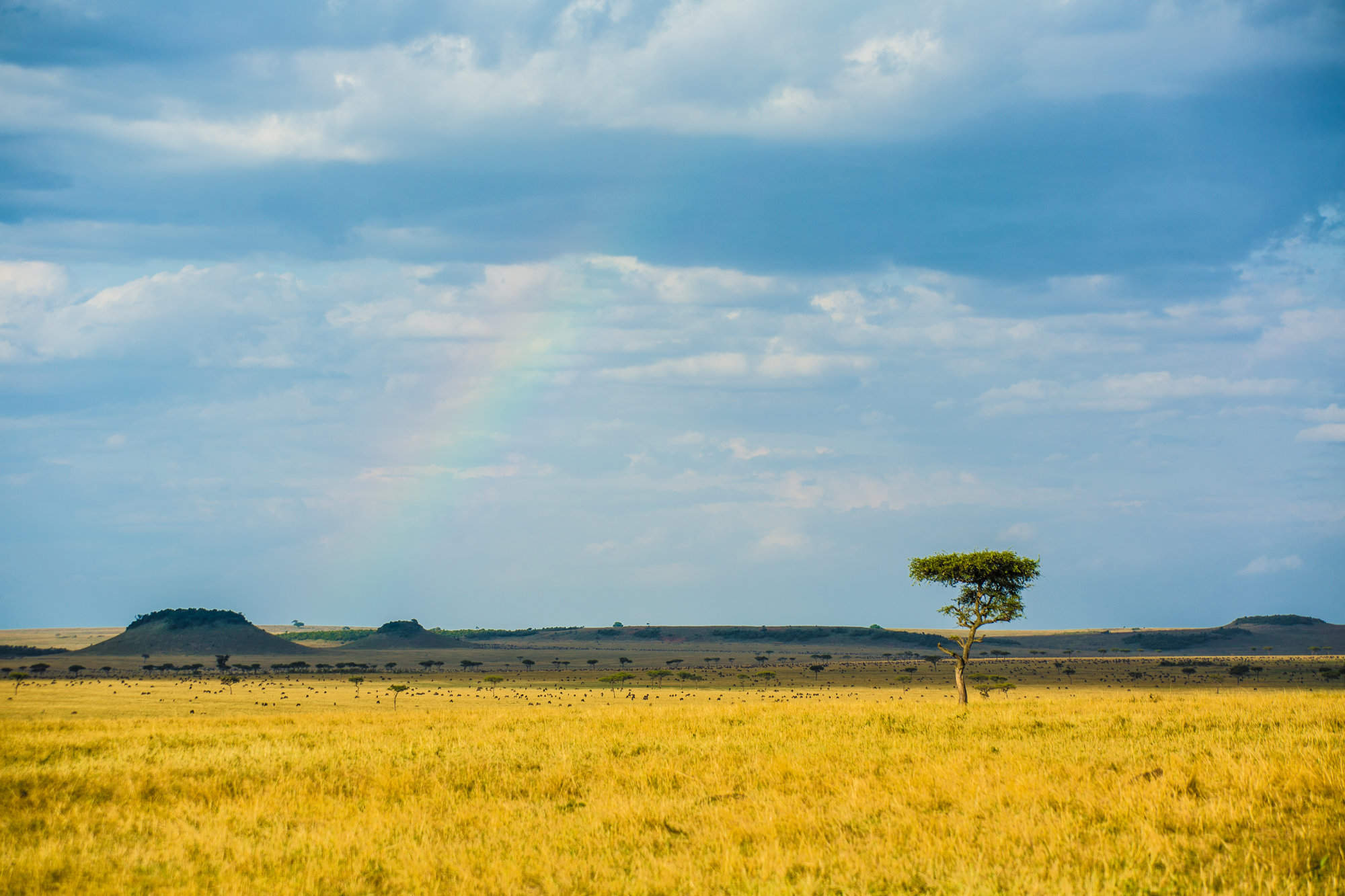
52 places to stay
Criss-crossed by bush-flanked streams and scattered with rocky kopjes, the seemingly limitless plains of the Serengeti are one of the worlds's greatest wildlife territories.
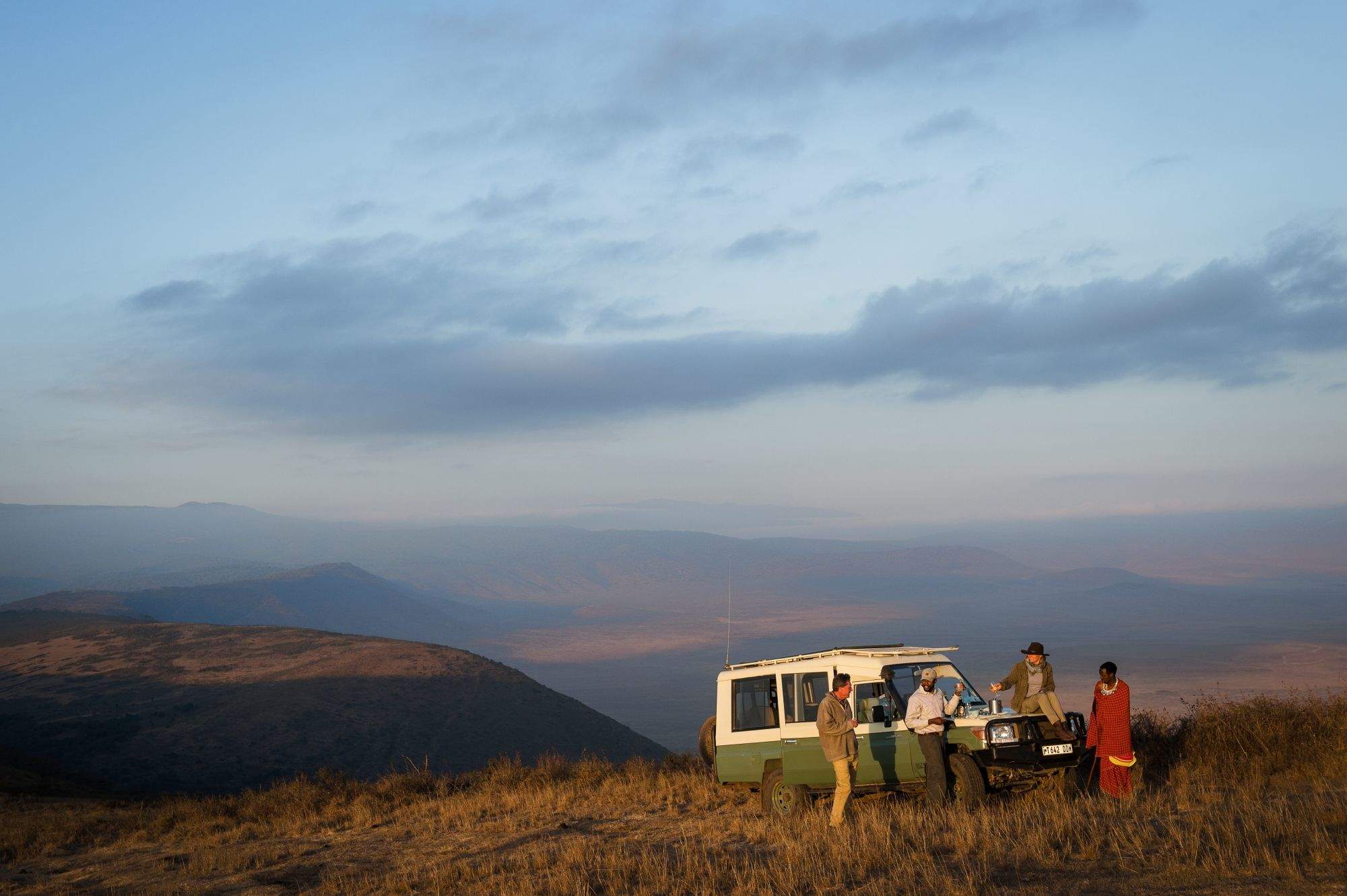
Ngorongoro Crater
19 places to stay
The colossal bowl of the world’s largest intact volcanic caldera offers a spectacularly diverse ecosystem of savannah, lakes and forest, home to richly varied wildlife.
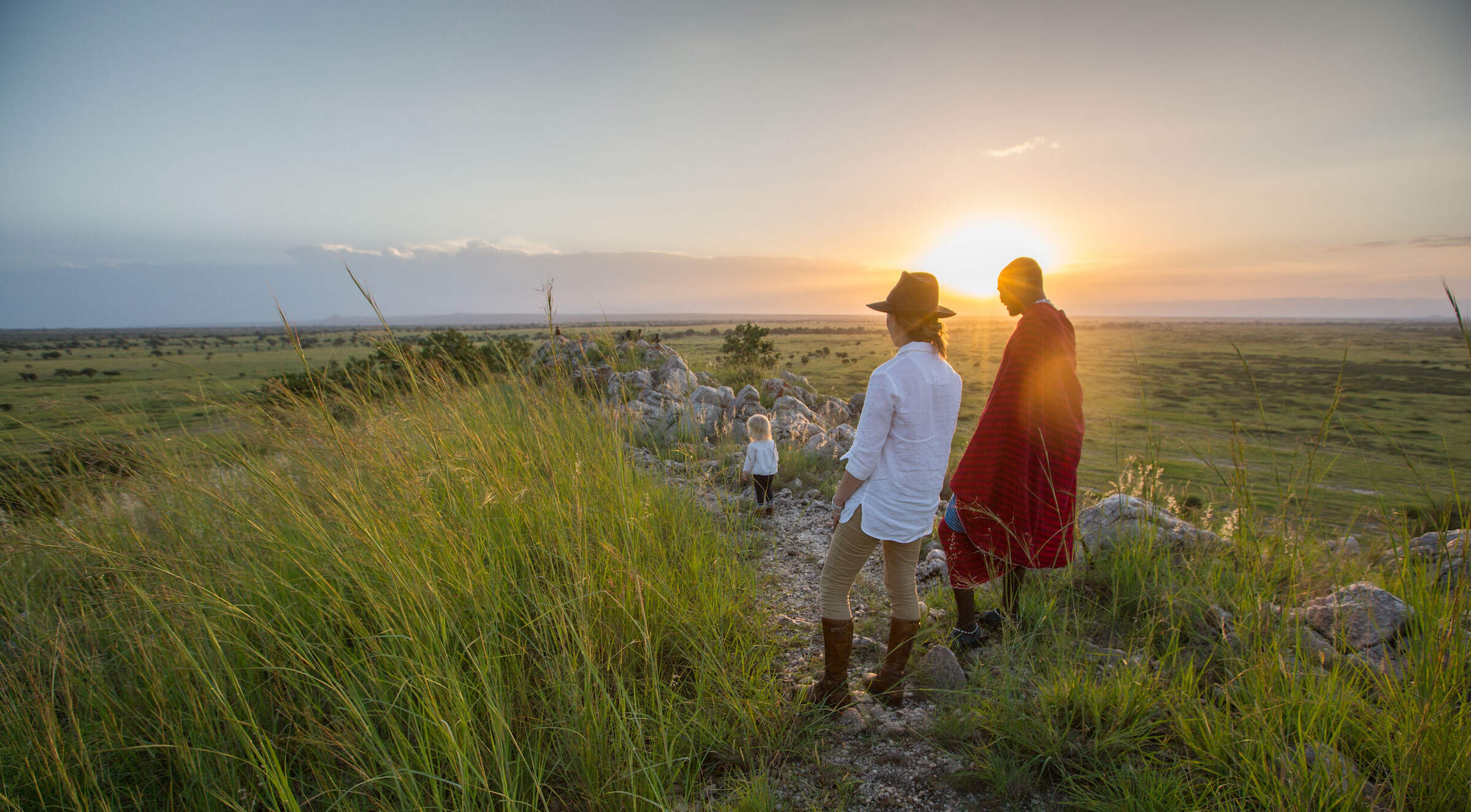
17 places to stay
Tarangire has somewhat seasonal wildlife and is at its best from June to October. It's famous for baobabs, large elephant herds and wonderful swamps in the centre of the park.
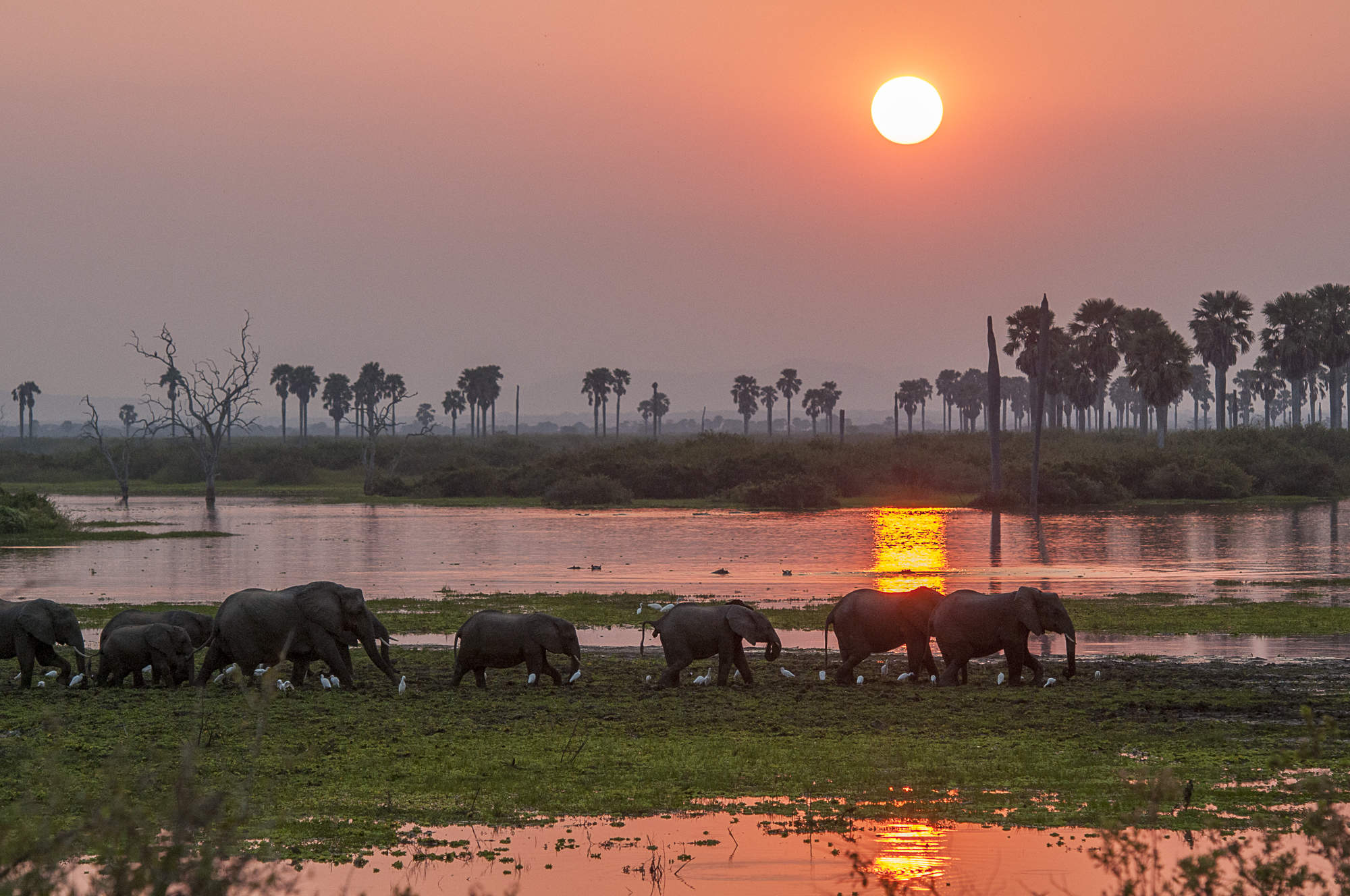
14 places to stay
Nyerere National Park's myriad landscapes attract strong lion prides, Africa’s biggest population of numbers of wild dogs, brilliant birdlife and staggering antelope migrations.
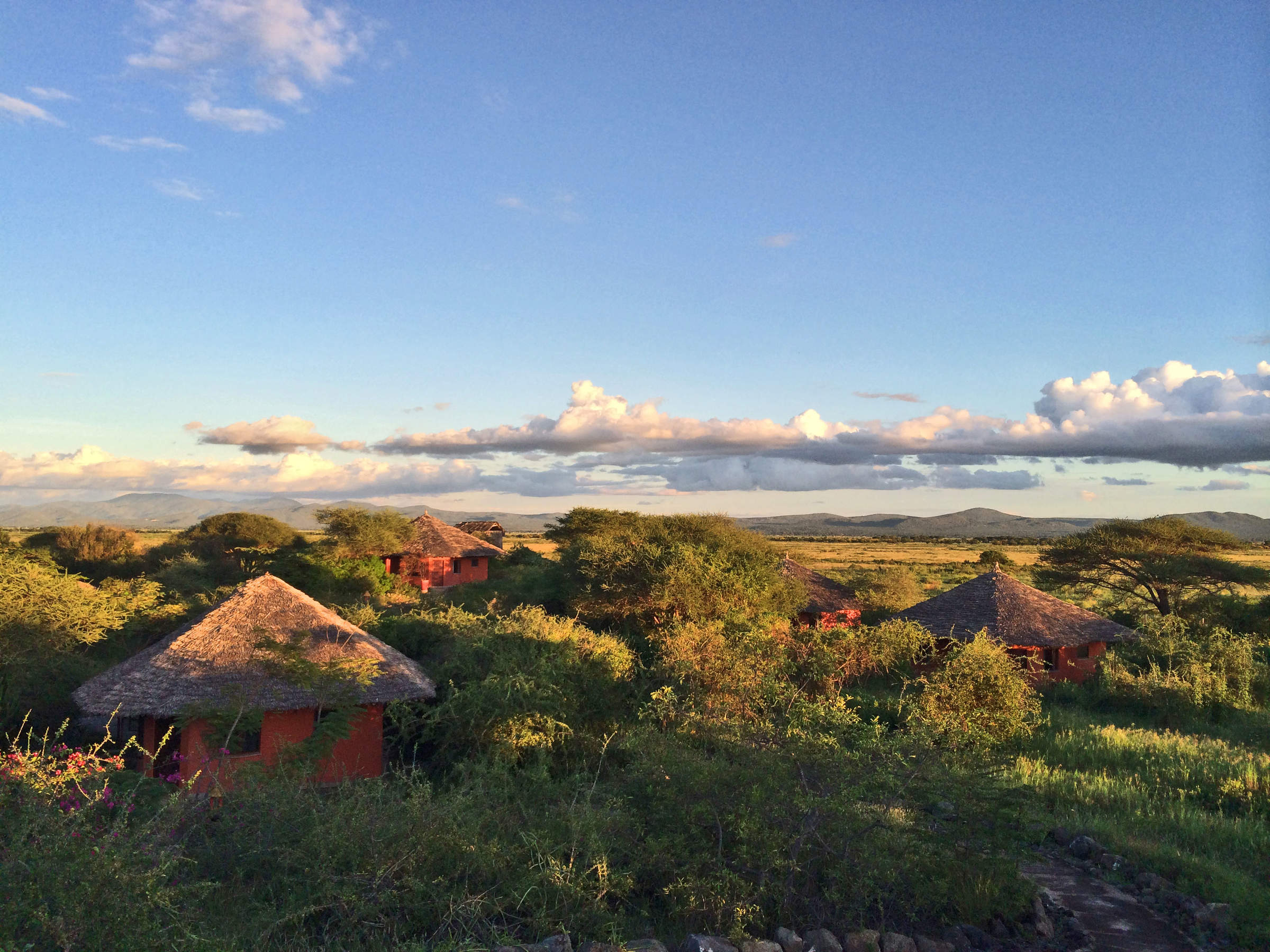
Northern Tanzania's biggest town is usually an overnight stay during a northern circuit safari. If you have a little more time, it's also the base for the charming Arusha National Park.

In the central southern Tanzania, Ruaha National Park offers a fine extension to a stay in the Selous Game Reserve. It's drier and higher, and home to several species absent from Selous.
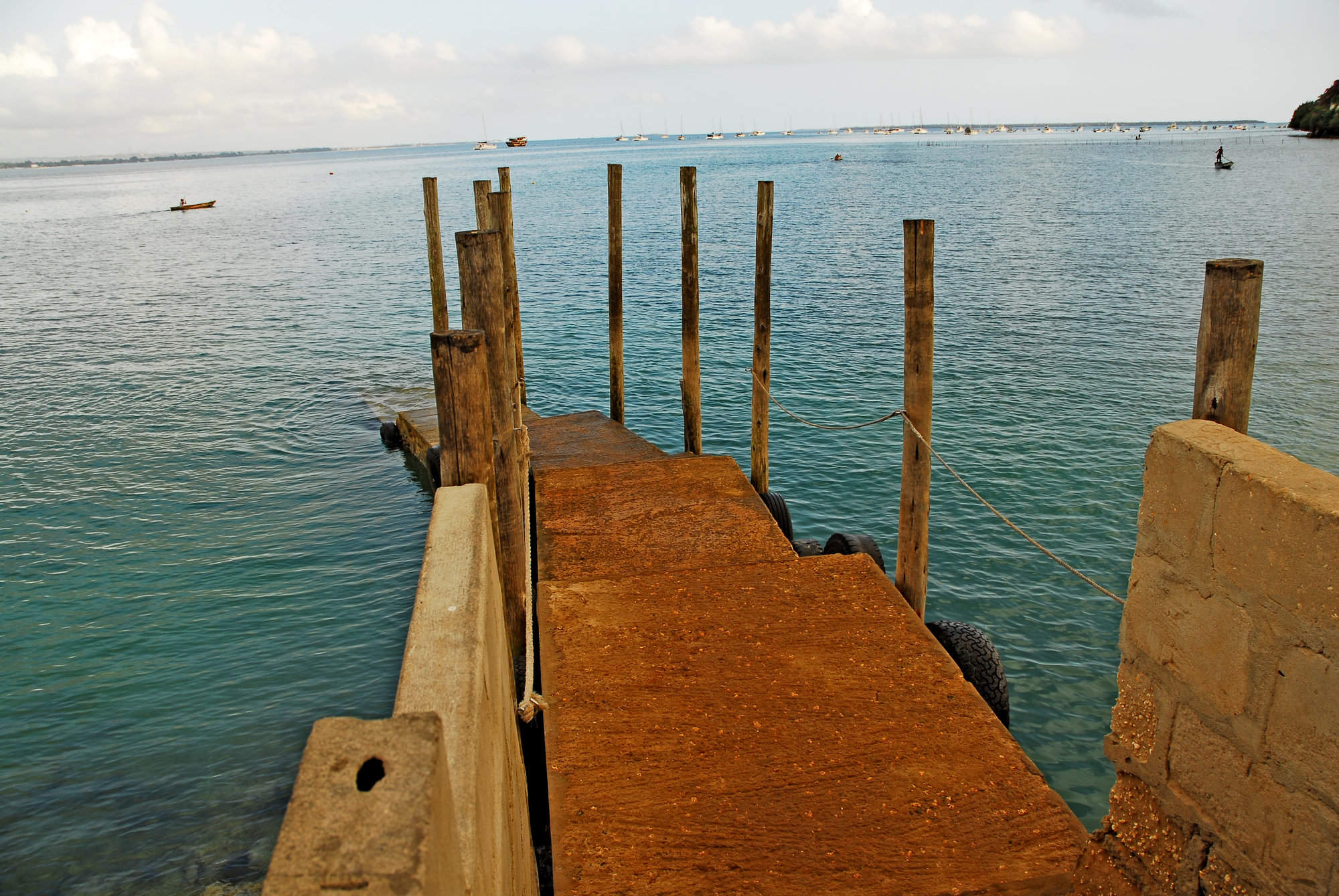
Dar es Salaam
7 places to stay
Tanzania's main port, largest city and biggest airline hub is usually seen as a place to pass through. If you're overnighting, however, you may well enjoy the city's buzz.
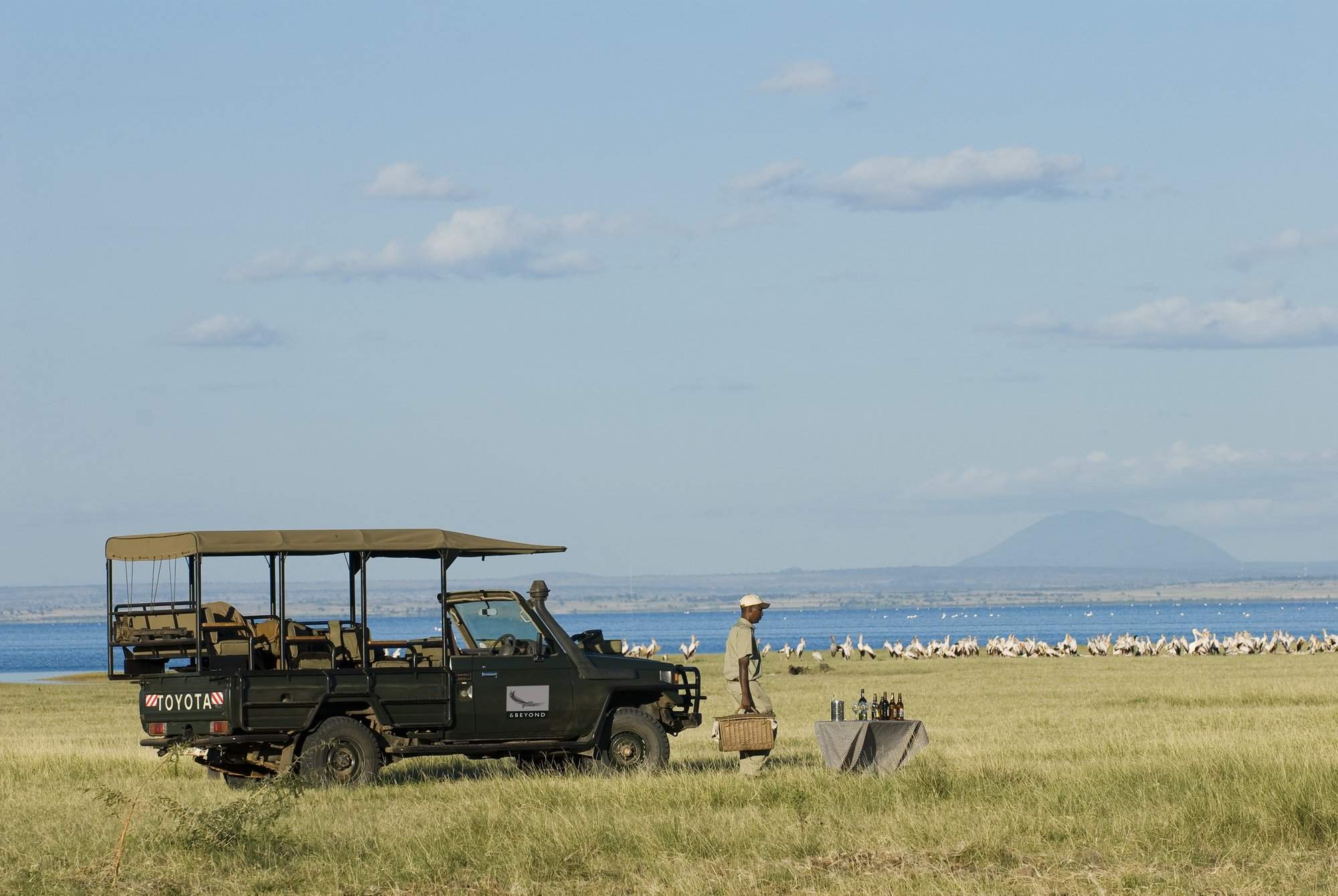
Lake Manyara
5 places to stay
Named for its flamingo-studded lake, Lake Manyara National Park is home to a wide diversity of habitats and wildlife. It's easy to visit en route through northern Tanzania on a road safari.
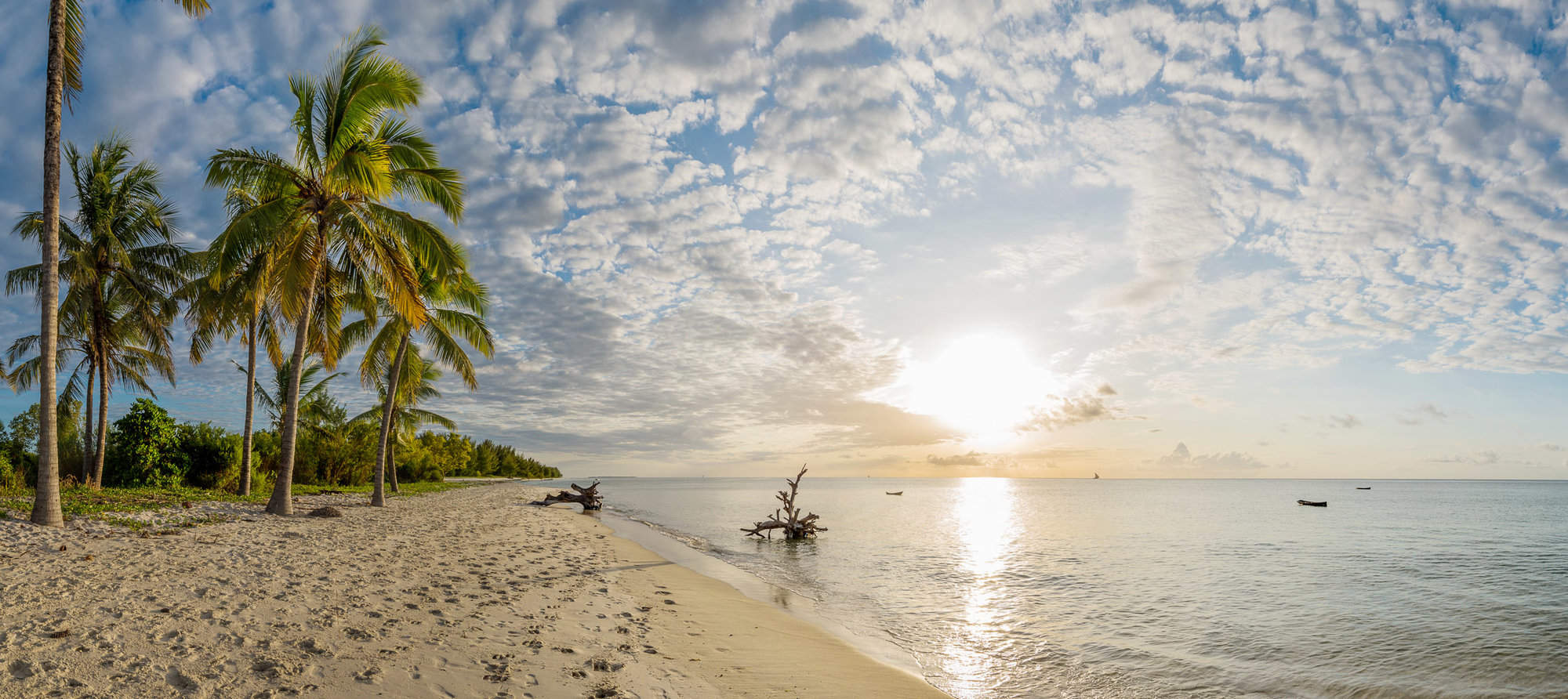
Mafia Island
6 places to stay
A little-known Indian Ocean archipelago, Mafia has laid-back, feet-in-the-sand island chilling, low-key lodges, splendid sandbanks and some of Tanzania’s finest diving.
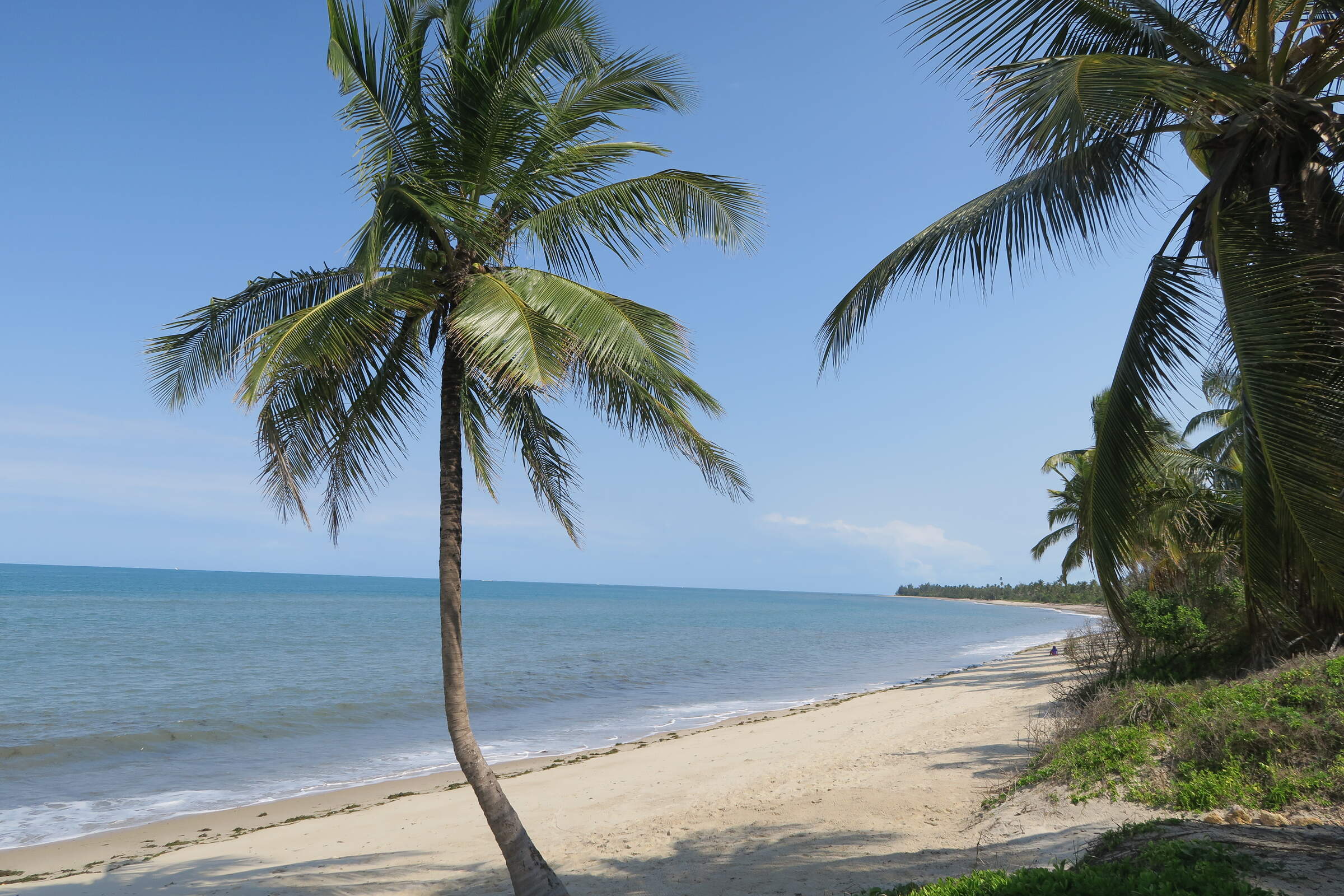
Tanzania Coast
4 places to stay
Tanzania's 700km-long mainland coast has countless bays, creeks and beaches. At Expert Africa we focus on a couple of accessible areas to the north and south of Dar es Salaam.
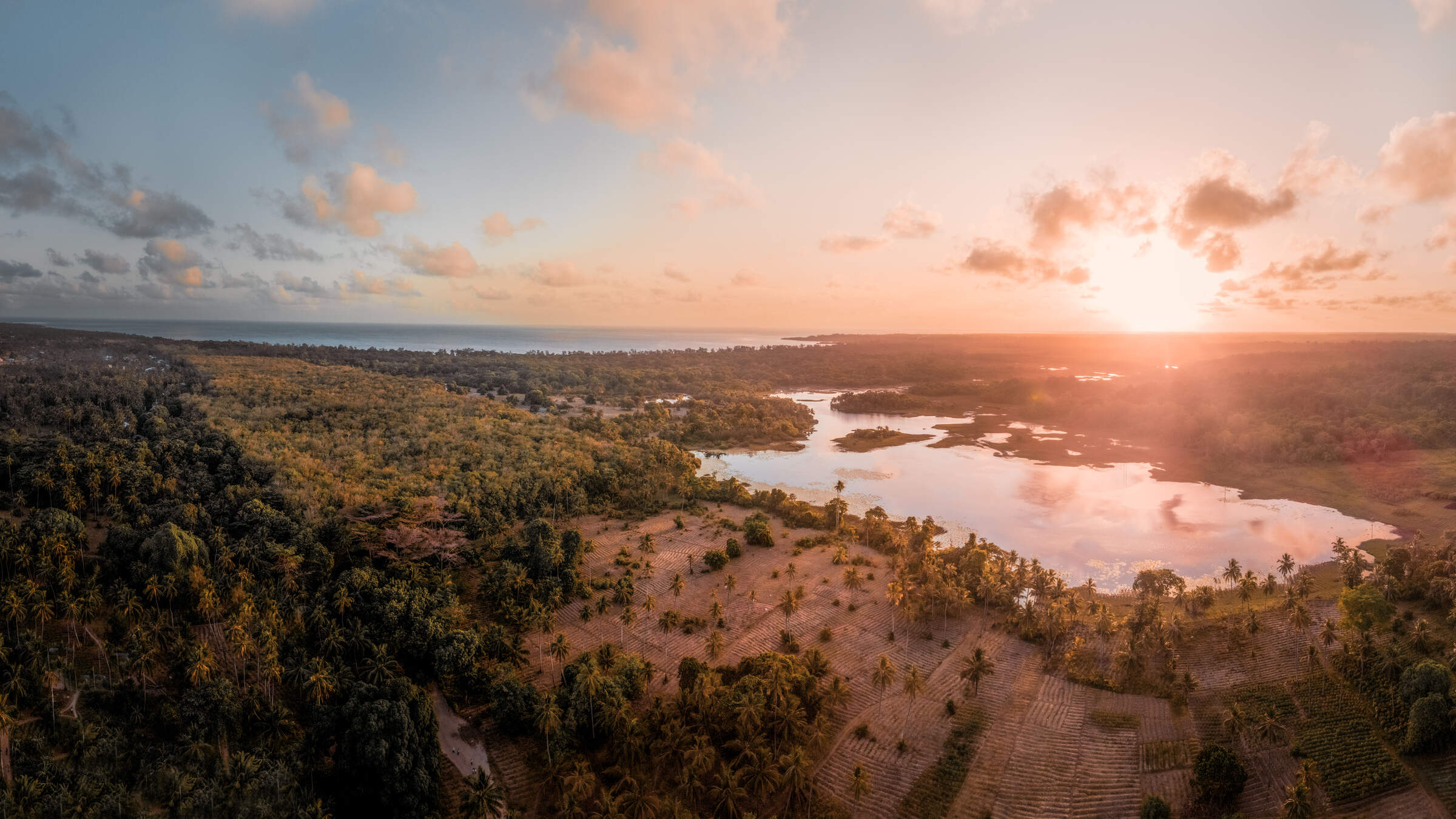
Pemba Island
3 places to stay
Zanzibar's spice island neighbour, Pemba, combines a rural way of life with a rich Swahili culture and some superb diving. The options for staying are limited in number, but high-quality.
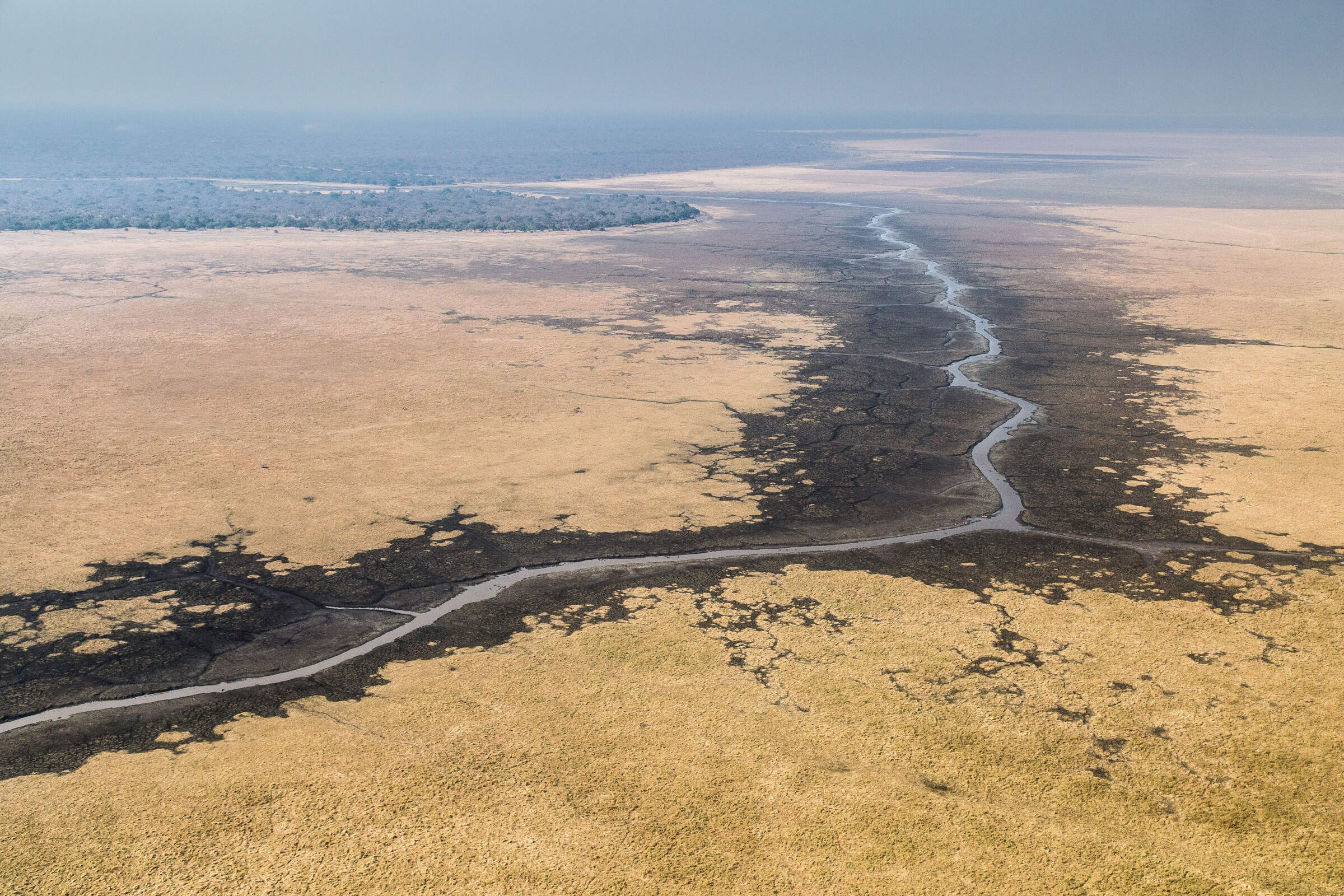
The most remote of Tanzania's best safari areas, Katavi National Park can be costly to reach, but this vast open plain, surrounded by dense woodlands, is full of wildlife and virtually empty of other visitors.
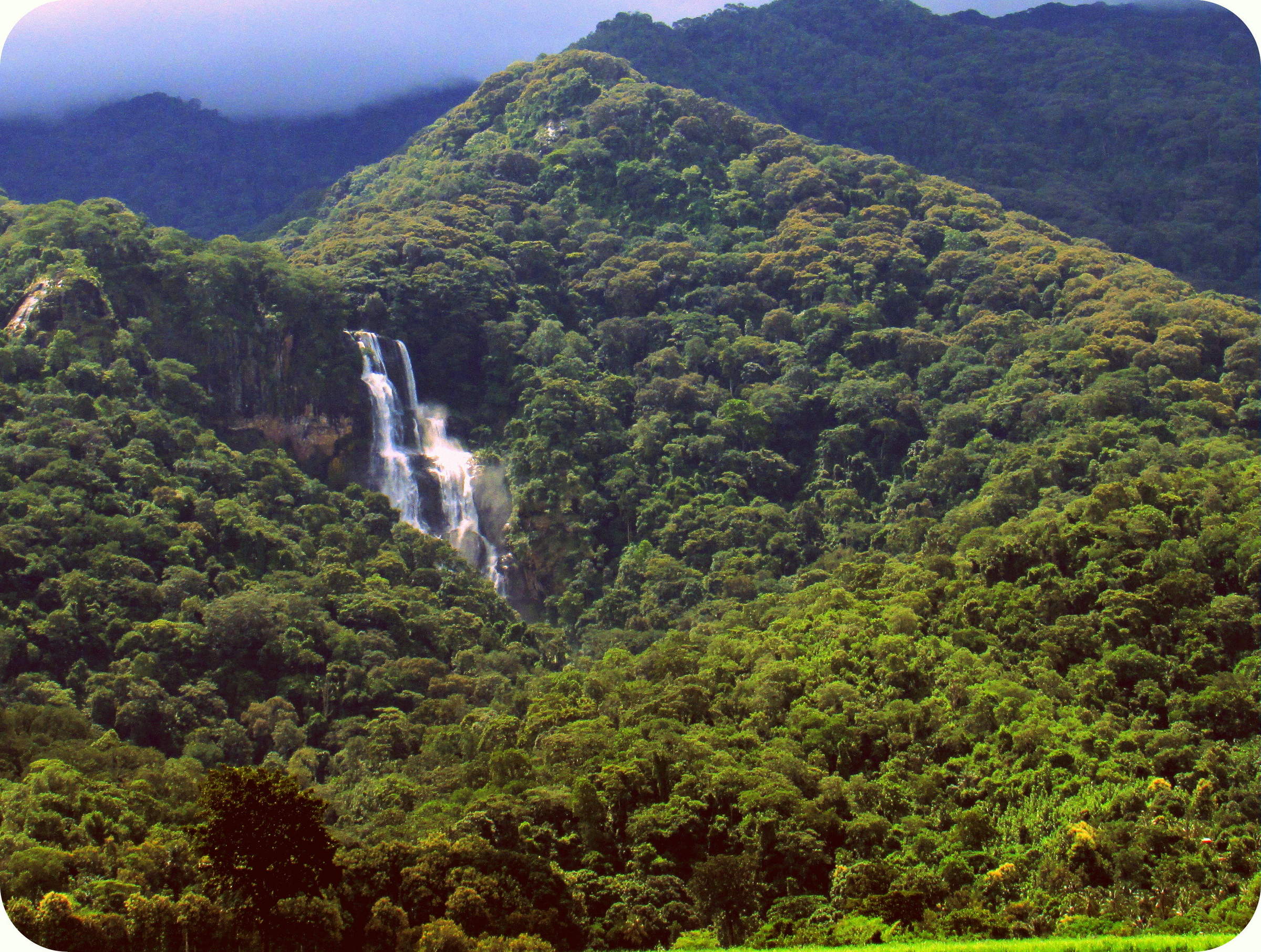
Mikumi & Udzungwa
Expert Africa travellers usually visit Mikumi National Park and the Udzungwa Mountains National Park in a private, four-wheel drive safari vehicle with an expert driver-guide.
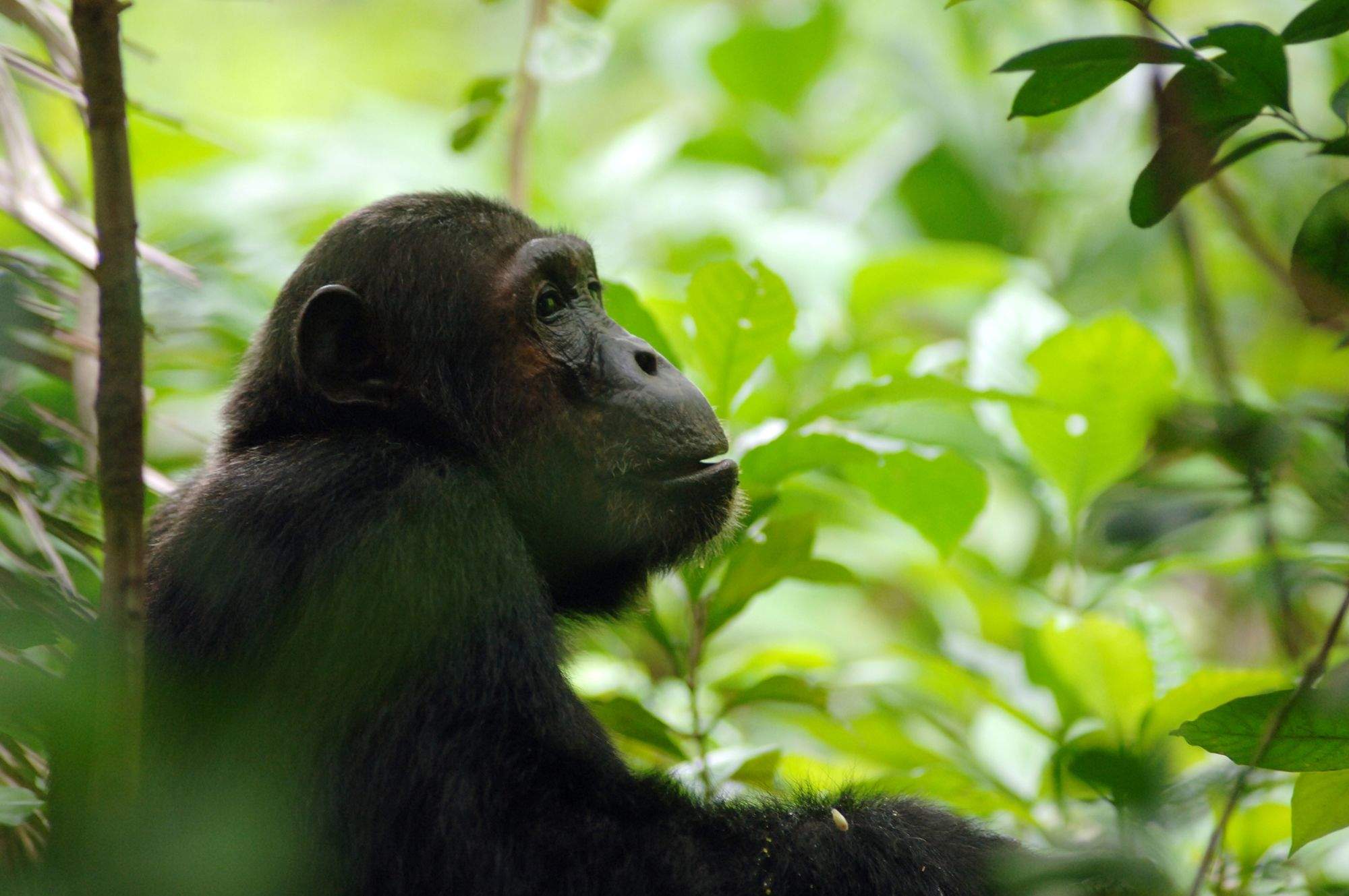
Mahale Mountains
2 places to stay
Very different from Tanzania's other parks, Mahale is a remote, costly, magical area, with lush forests, white beaches by the freshwater lake, and Africa's best chimp safaris.
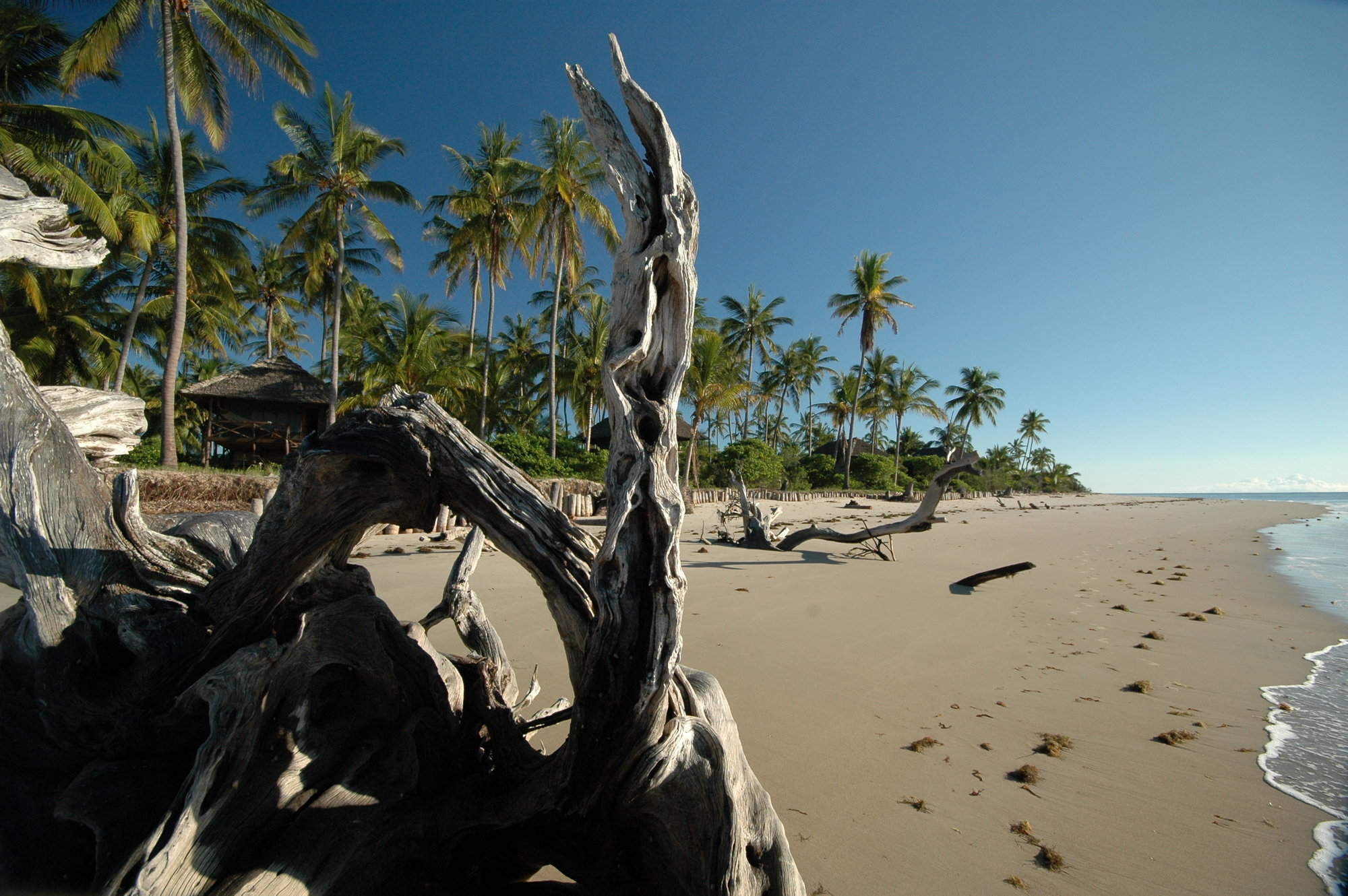
Saadani National Park is a small park offering a bush and beach experience, with low-key wildlife-viewing (including outstanding birding), peaceful river trips and relaxing beach time.
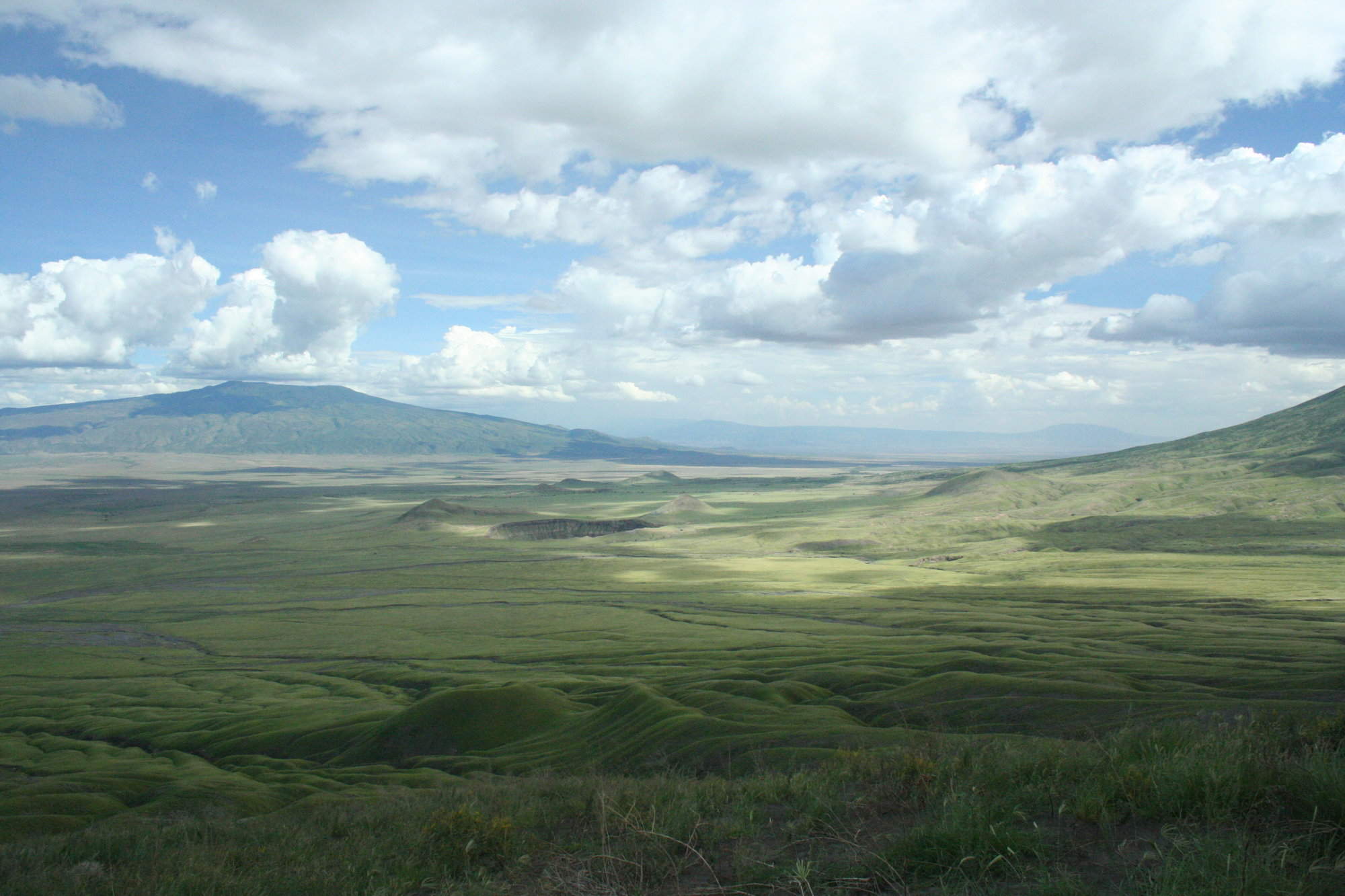
Lake Natron
Lake Natron has stunning scenery, huge flocks of flamingos and a select few visitors lured by the walking opportunities. It make for an unusual gateway into the Serengeti.
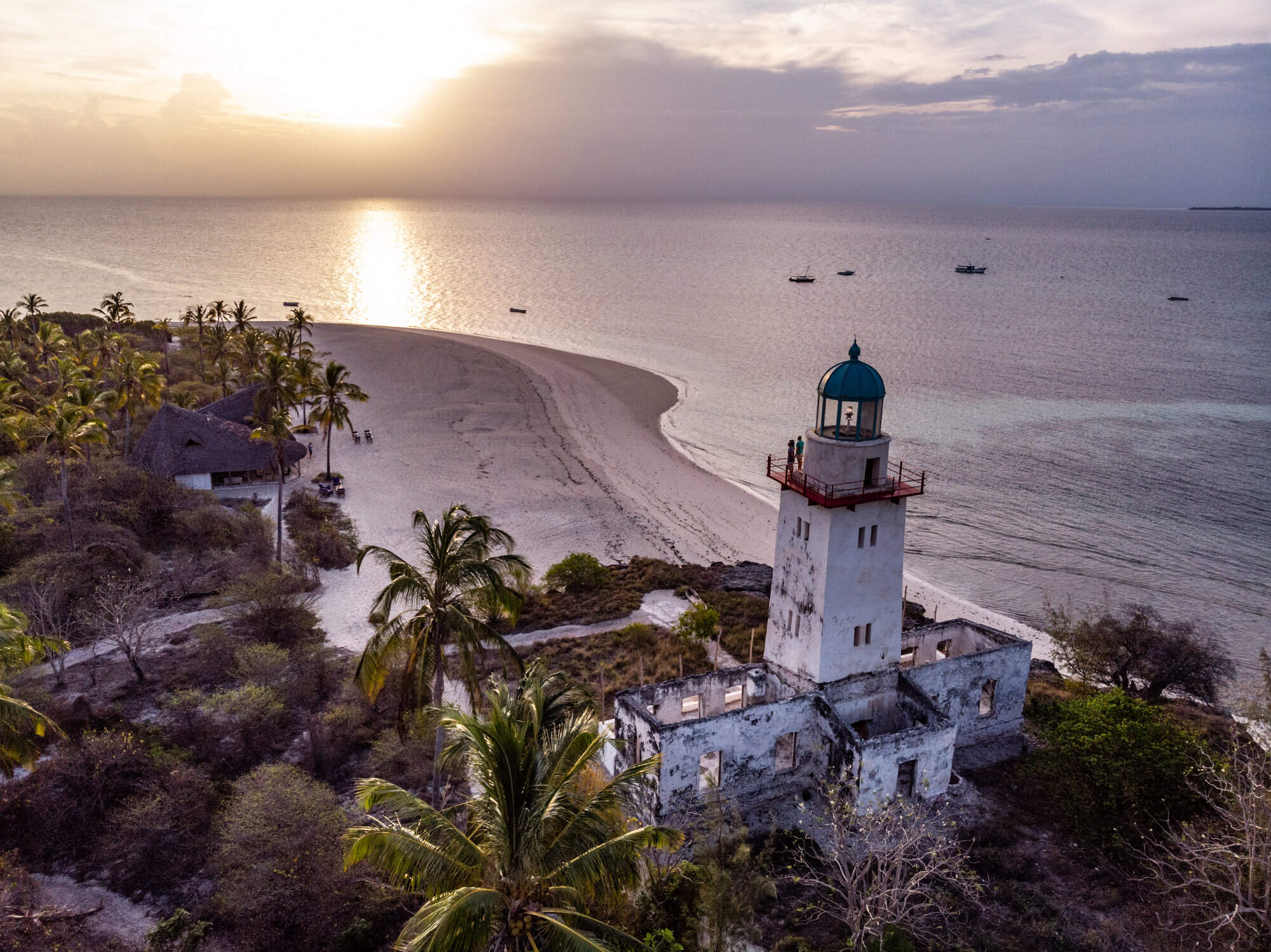
Fanjove Island
1 places to stay
Fanjove Island is a wildlfe paradise, teeming with land and sea creatures - from turtles and puffer fish to herons and bottle nosed dolphins. You might even spot a humpback whale.
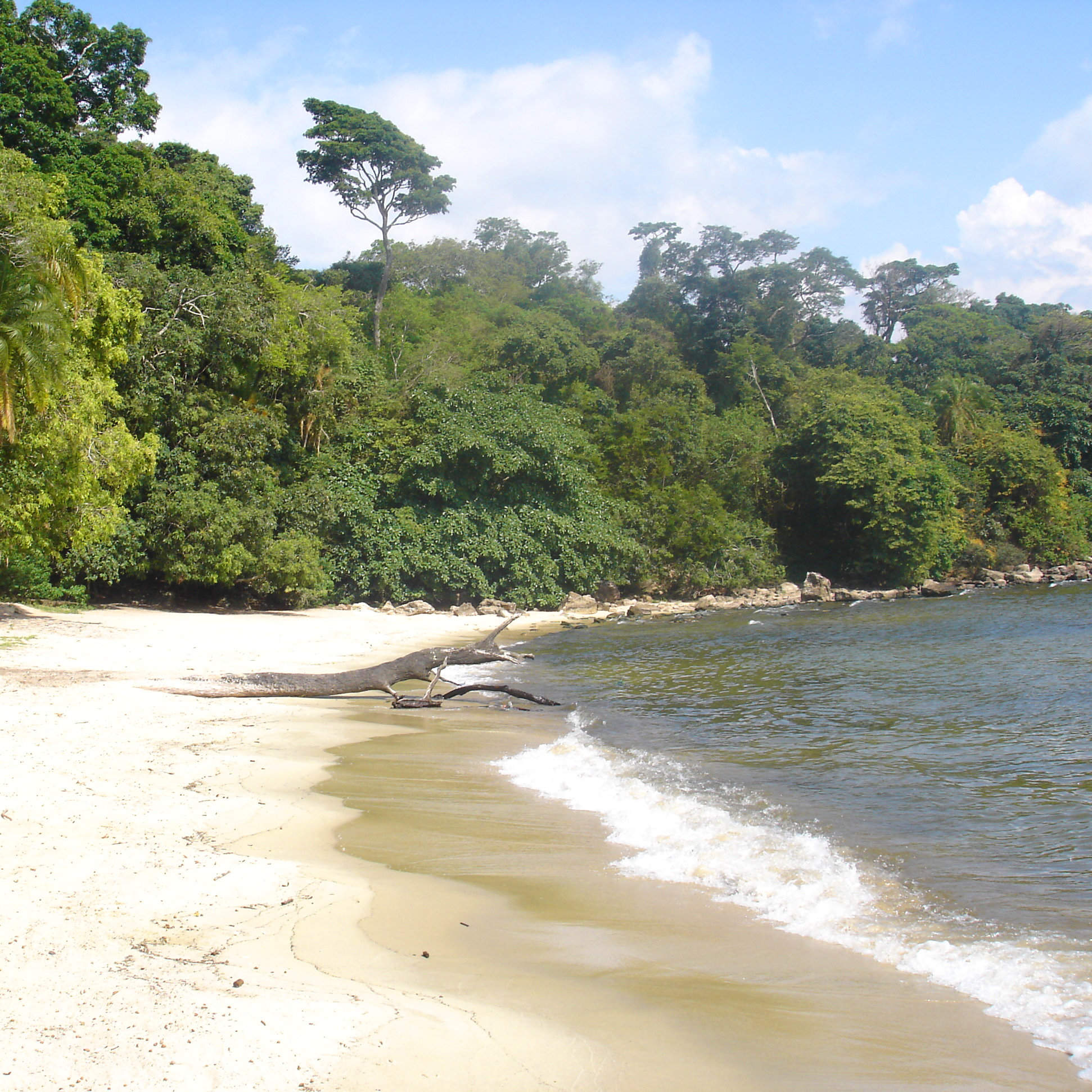
Rubondo Island
Africa's largest island national park, Rubondo is a true off-the-beaten-track experience in Jurassic Park style. With just one camp, it's an intimate and adventure.
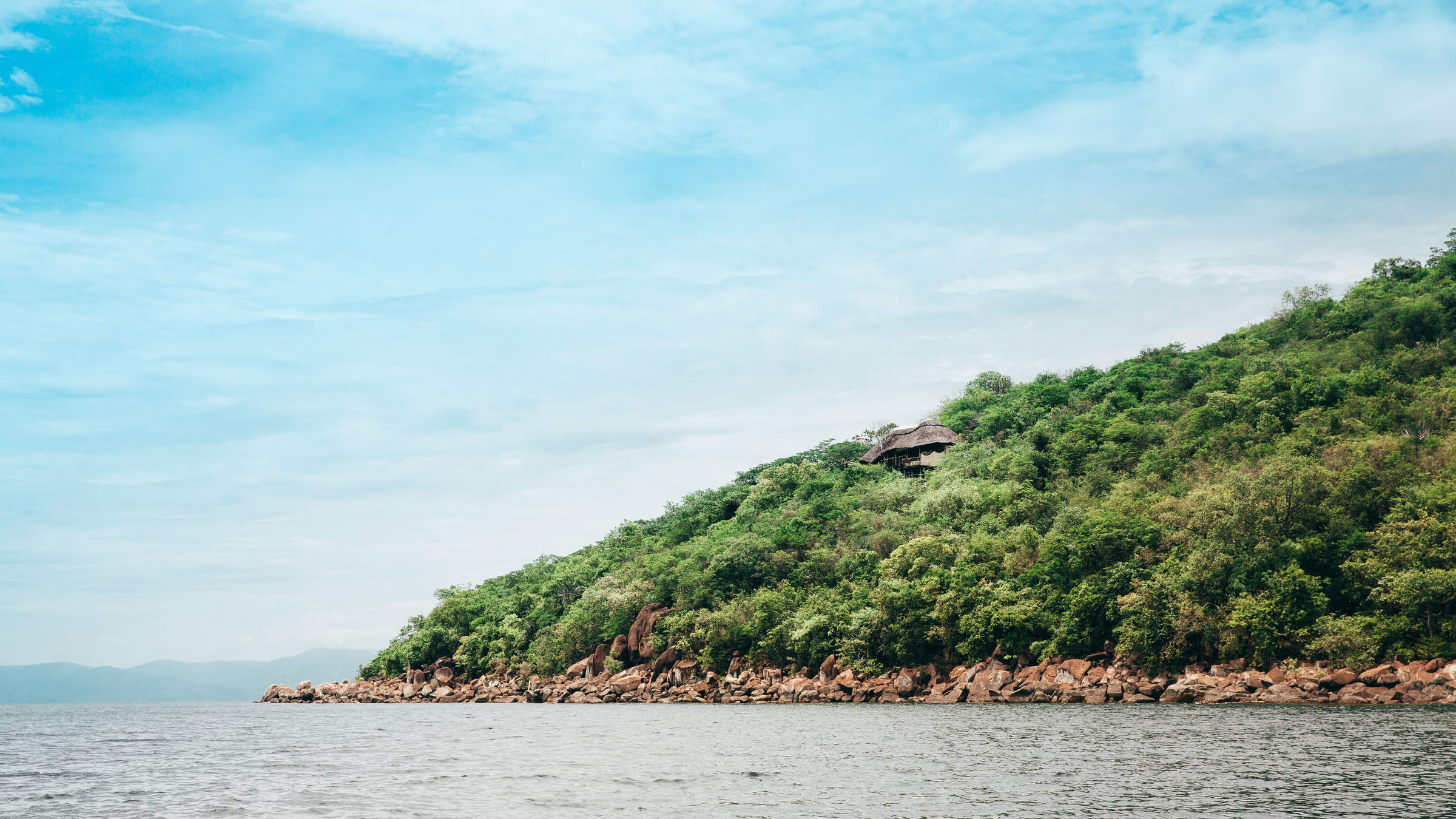
Lupita Island
Lupita Island in Lake Tanganyika is a private escape in remote western Tanzania - great for families, adventurous travellers or those wanting to relax and unwind in peace.
Our top ten Tanzania safaris & holidays
Each of our holidays is as distinct as the traveller undertaking it. The itineraries here are just examples of what is possible, with costs and details; see all 28 Tanzania safari ideas here .
On Guided Safaris , you’ll travel in a private 4WD with the same expert guide all the way, giving you great flexibility and lending the trip greater continuity. On Fly-in Safaris , you’ll fly between camps, staying a few days in each – exploring each area of wilderness in an open-top 4WD led by a seasoned camp guide, accompanied by other travellers from the camp. Our Beach Holidays showcase ideas for trips to exquisite islands and breathtaking beaches. These are popular; many of our travellers opt to unwind on a gorgeous beach prior to, or after, their safari.
Call us now to speak to a Tanzania expert who can address your questions and craft a trip for you that’s perfect.
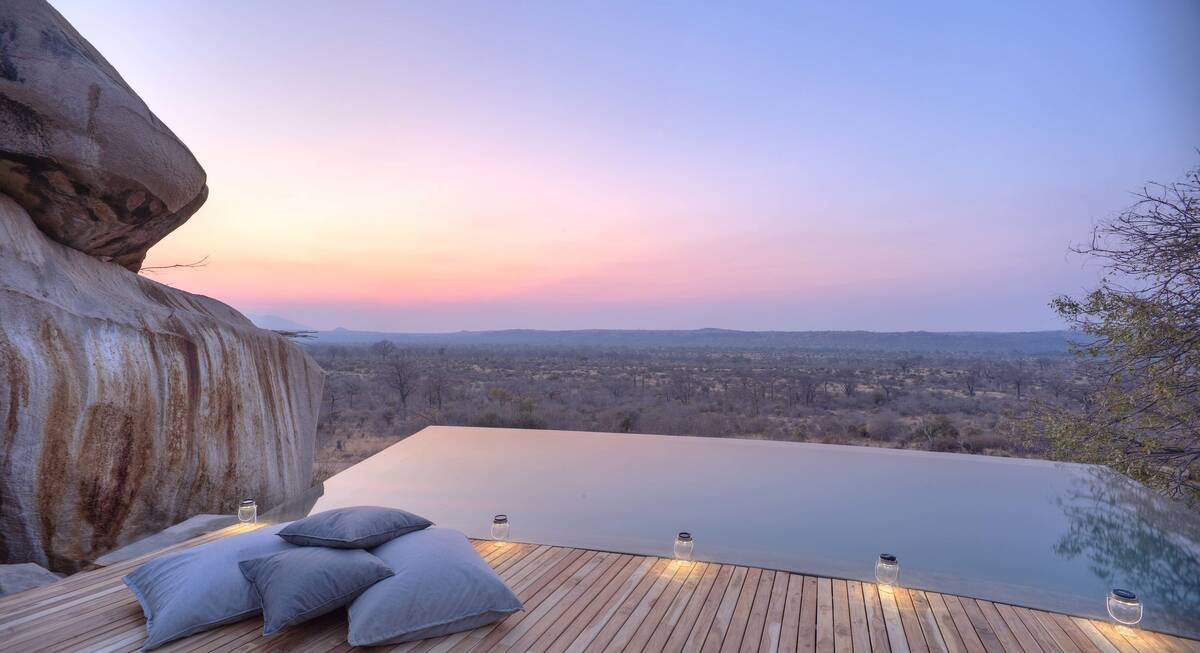
Marabou Stork Fly-in Safari
13 days • 5 locations KILIMANJARO AIRPORT TO DAR ES SALAAM AIRPORT
Four luxurious camps enable exploration of Tanzania’s north and southern regions. With a range of land- and water-based activities available throughout, decidedly comfortable accommodation and applicable long-stay discounts, this adventurous safari is excellent value.
US$17,280 - US$25,560 per person
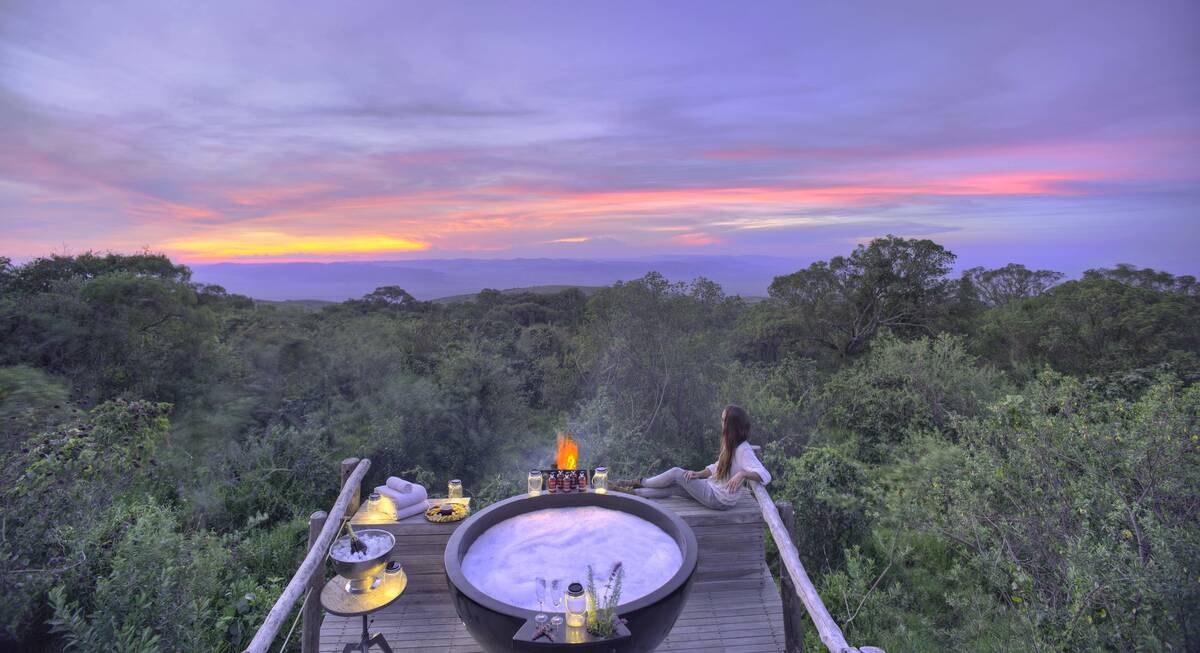
Flufftail Guided Safari
10 days • 3 locations KILIMANJARO AIRPORT TO KILIMANJARO AIRPORT
Stay in three unique camps as you safari across the Ngorongoro Crater and the iconic Serengeti Plains with your private guide and 4WD vehicle: a trip of comfort and autonomy, with excellent wildlife.
US$12,970 - US$18,460 per person
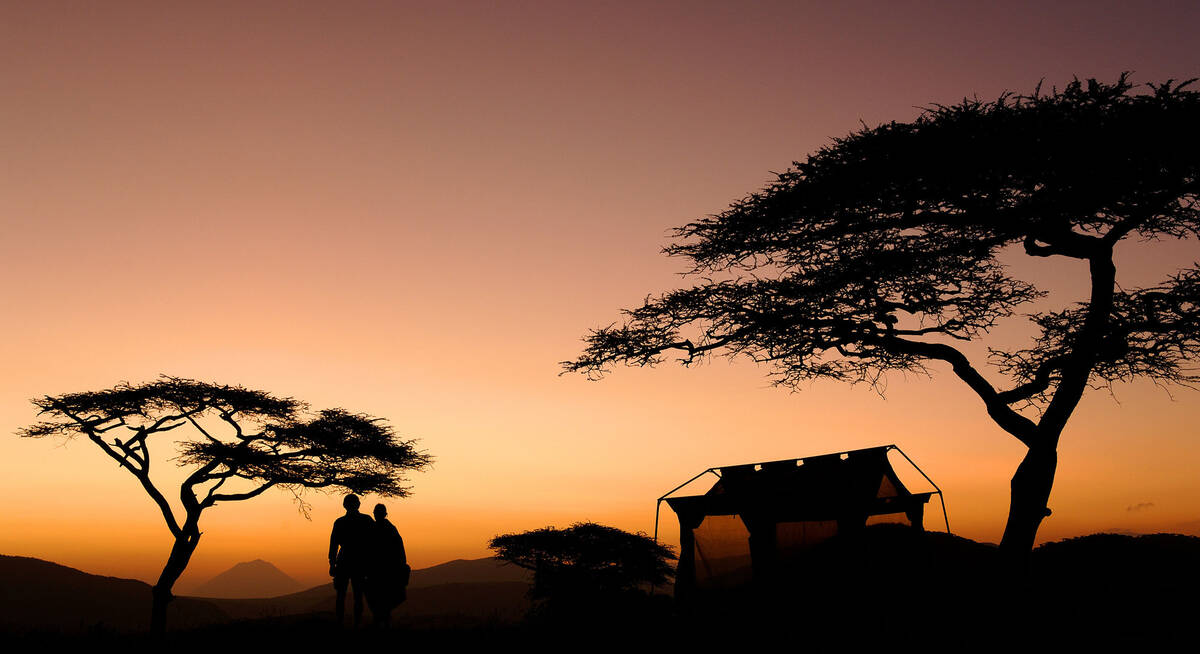
Firefinch Drive-Fly Safari
9 days • 3 locations KILIMANJARO AIRPORT TO KILIMANJARO AIRPORT
Enjoy a combination of privately guided and shared game drives during this good-value exploration of northern Tanzania. Explore game-dense regions from three comfortable bases which offer a variety of activities.
US$8,190 - US$10,760 per person
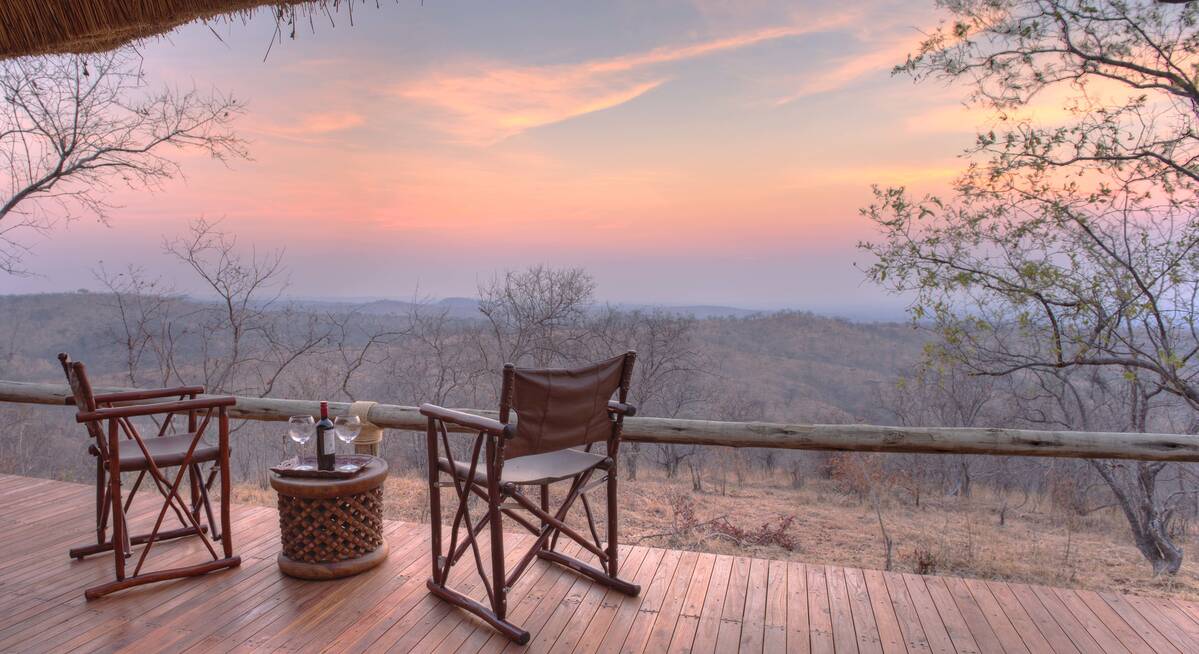
Jackal Fly-in Safari
8 days • 2 locations DAR ES SALAAM AIRPORT TO DAR ES SALAAM AIRPORT
Enjoy a range of activities on this luxury fly-in safari. Explore the remoter regions of Ruaha National Park and Nyerere National Park with phenomenal guides during stays at two impressively comfortable camps that remain perfectly in keeping with their surroundings.
US$9,060 - US$12,080 per person
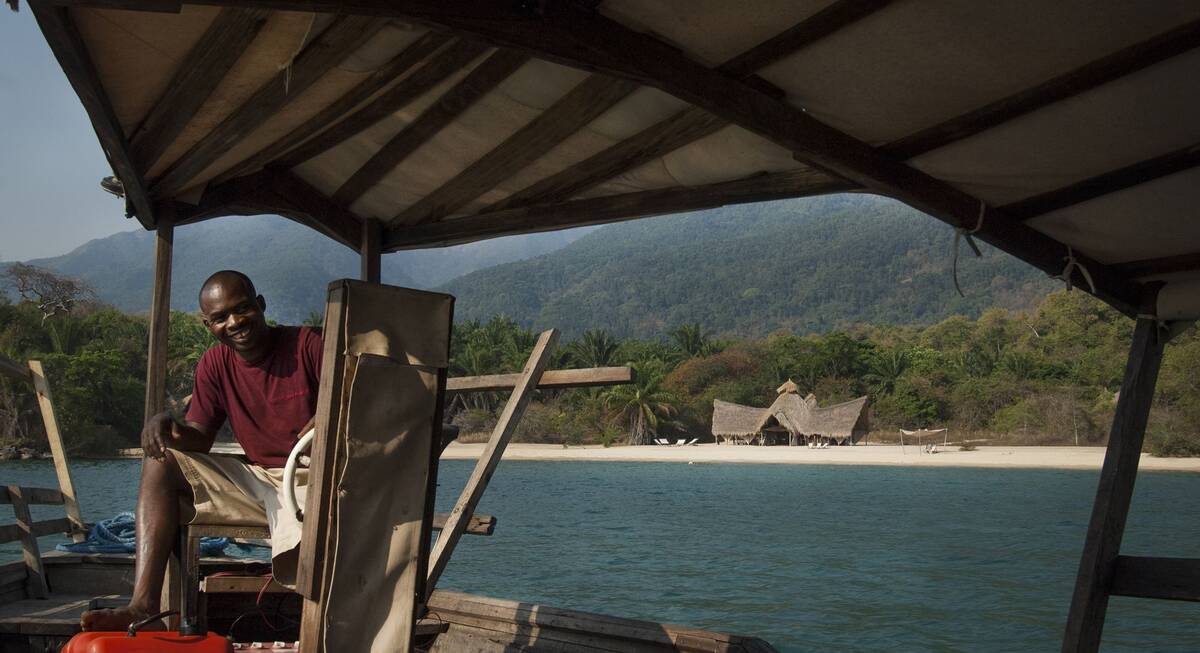
Chimpanzee Fly-in Safari
8 days • 3 locations KILIMANJARO AIRPORT TO KILIMANJARO AIRPORT
Combining two of the remotest parks in Tanzania, this safari can deliver extraordinary wildlife viewing in Katavi, and East Africa's best chimp treks, on the shores of Lake Tanganyika.
US$12,730 - US$14,920 per person
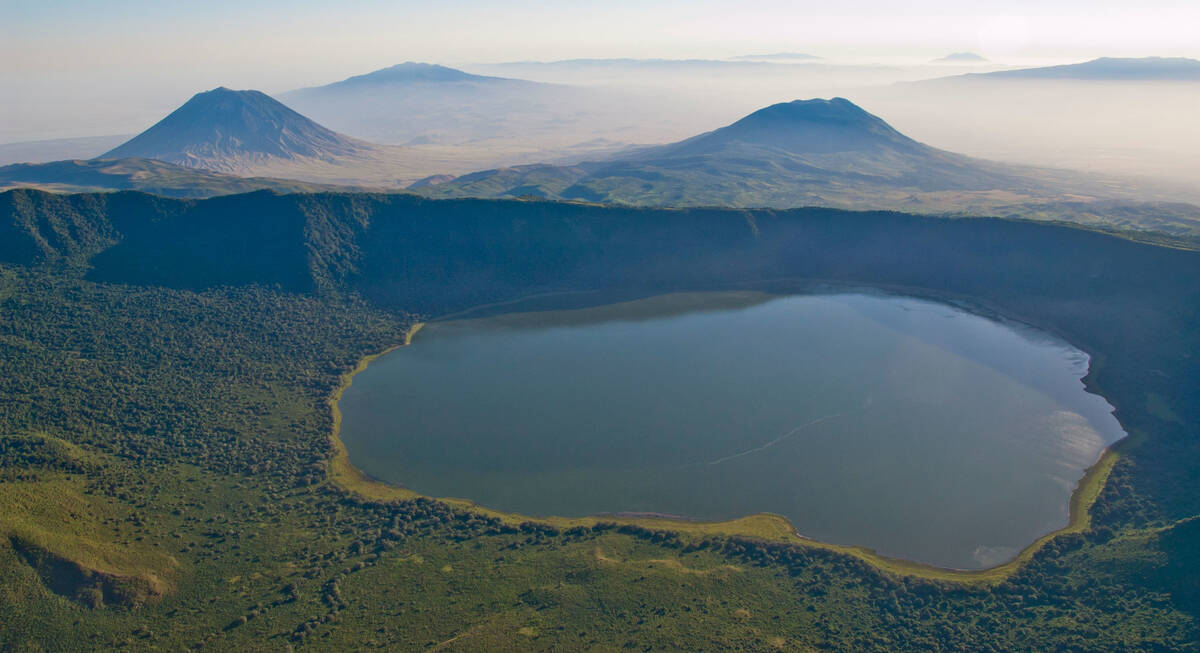
Tinkerbird Fly-in Safari
8 days • 4 locations KILIMANJARO AIRPORT TO KILIMANJARO AIRPORT
Explore Tanzania’s famous northern circuit in Tarangire National Park, the Ngorongoro Conservation Area and the Serengeti National Park. Four smart sister camps offer a high level of care, first-class guiding and a wide range of activities.
US$9,100 - US$14,140 per person
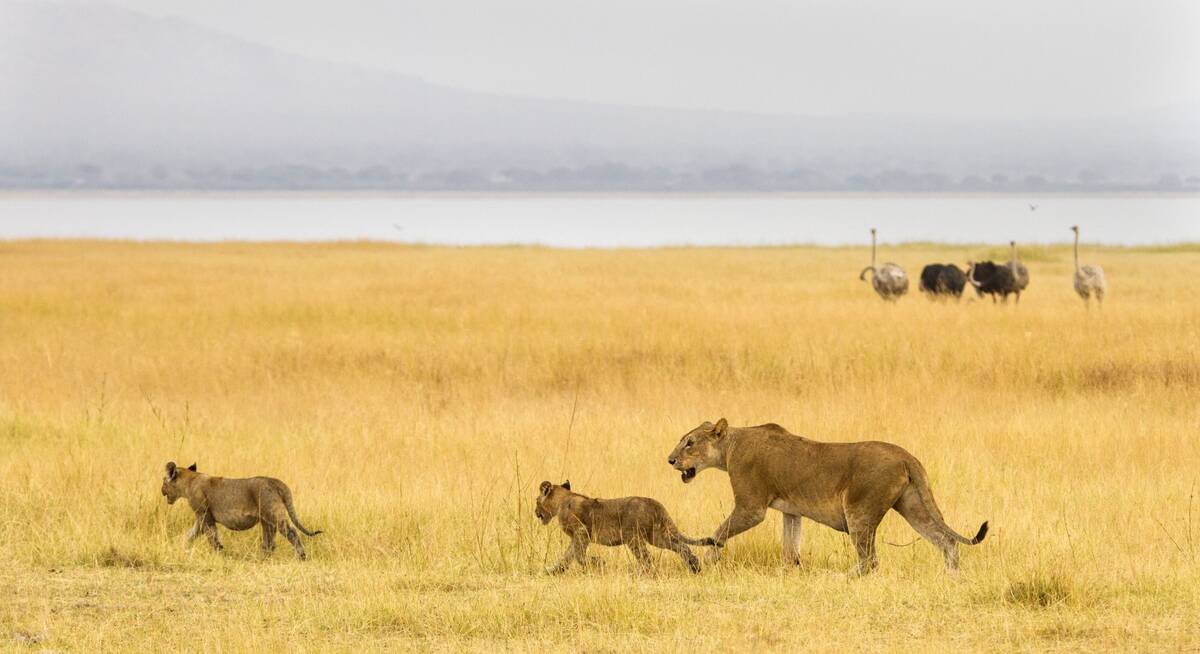
Secretary Bird Fly-in Safari
Chosen for comfort and relaxation as much as for its range of activities, this safari makes for a leisurely trip featuring stunning accommodation and swift access to many of northern Tanzania’s best wildlife regions.
US$12,110 - US$16,740 per person
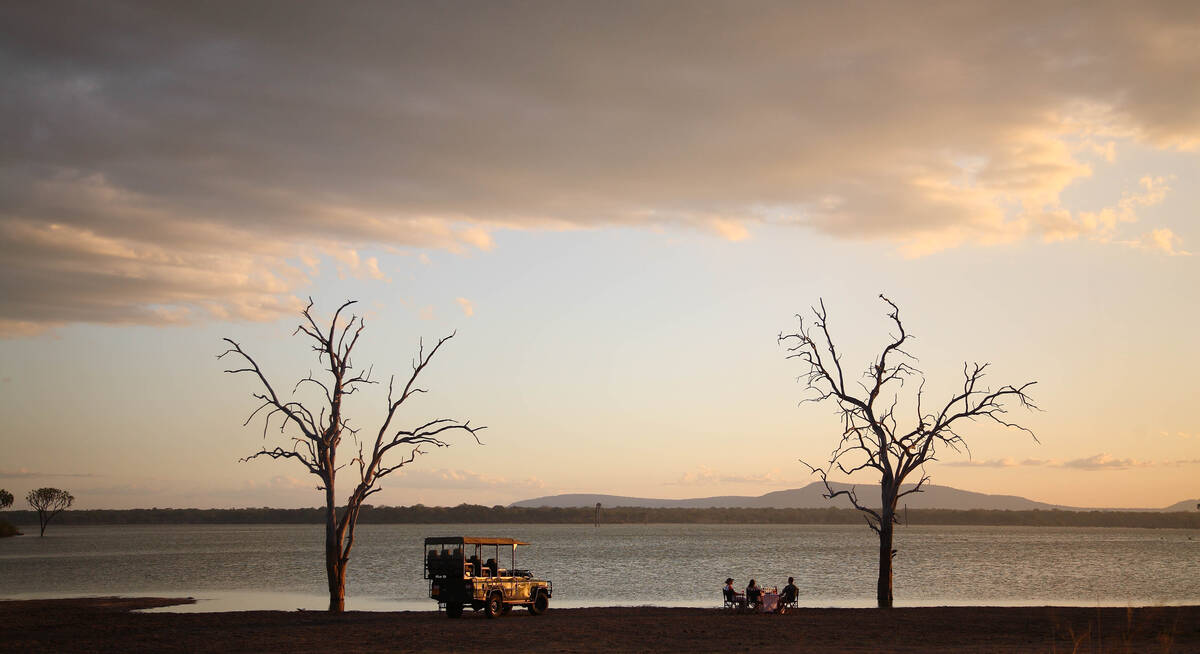
Topi Fly-in Safari
7 days • 2 locations DAR ES SALAAM AIRPORT TO DAR ES SALAAM AIRPORT
Explore Nyerere National Park and Ruaha National Park from two luxurious, colonially styled camps. Chosen for their access to good game viewing and thrilling remoteness, these camps also offer a range of varied safari activities.
US$6,540 - US$6,870 per person
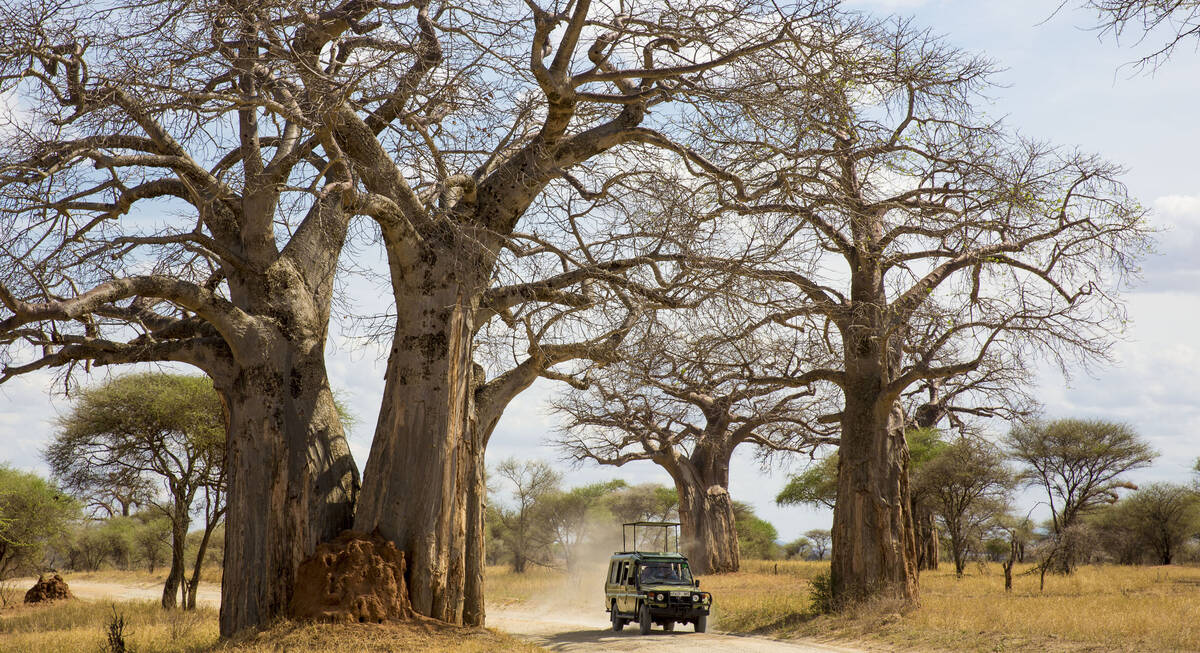
Yellow Baboon Fly-In Safari
Two authentic bushcamps offer access to Ruaha’s remote wildernesses through walking safaris, day and night 4WD drives and fly-camping. Explore in almost utter isolation, with superb guiding to heighten your immersion in nature.
US$7,950 - US$9,220 per person
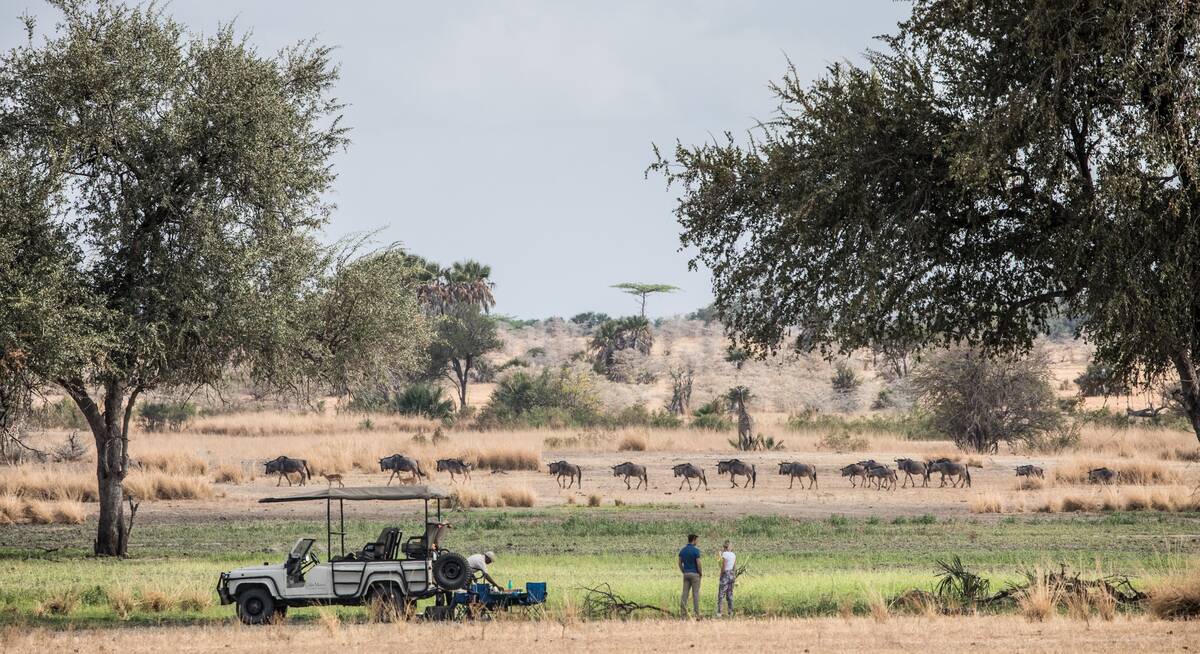
Spotted Hyena Fly-in Safari
Stay in one of Nyerere National Park's best safari camps before experiencing a truly authentic tented camp in Ruaha. Remote locations, superb guiding and a range of activities await guests during this comfortable fly-in safari.
US$7,400 - US$10,300 per person
View all holidays
Our travellers' 10 most recent reviews of Tanzania safaris
All our travellers’ feedbacks are published in full; none have been edited. Click here to browse all 1185 reviews of Tanzania holidays and sort them by rating, duration and time of year.
These reviews help our partners running lodges and camps across Tanzania, and help us to understand our travellers better and to plan better trips.
For these 10 most recent safari reviews in full, click on a card below – where the comments are split between the lodges/camps visited and often note the wildlife seen. See all reviews of our Tanzania safaris here .
Arrived 29 Mar 2024, 10 nights
"My Mar 2024 trip"
Overall rating: Excellent
Arrived 17 Feb 2024, 12 nights
"My Feb 2024 migration trip"
Arrived 27 Feb 2024, 12 nights
" 2024 - a return visit to Ngorongoro and Serengeti"
Overall rating: Average
Arrived 19 Feb 2024, 11 nights
"My Feb 2024 trip"
Arrived 6 Feb 2024, 20 nights
Arrived 11 Feb 2024, 10 nights
Arrived 29 Jan 2024, 15 nights
"My Jan 2024 trip"
Arrived 16 Jan 2024, 16 nights
Arrived 17 Jan 2024, 11 nights
Arrived 18 Dec 2023, 20 nights
"My Dec 2023 trip"
See all Tanzania reviews
Our travellers' wildlife sightings across Tanzania
While journeying through Tanzania, many of our travellers document their wildlife encounters – be it lions, cheetahs, black rhinos, or chimpanzees – and graciously share these findings with us.
This "citizen science" gives us a unique picture of the distribution of species, enlightening you on where your chances of witnessing particular animals are heightened during a Tanzanian safari. ( Learn about this survey's methodology .)
The percentages below signify the "average" probability of a safari-goer seeing wildlife where they naturally occur. Note that species with very limited distributions, like chimpanzees, can attain high scores – as they are frequently observed where they reside. For further insights into a specific species, click on its picture below and follow the link in the pop-up window.
For a broader perspective on Tanzania's wildlife sightings, explore our interactive wildlife map of Tanzania showing the prime locations for encountering various species.
100% success
97% success
95% success
94% success
92% success
89% success
85% success
74% success
66% success
52% success
38% success
25% success
22% success
21% success
20% success
13% success
Where to find Tanzania’s wildlife
Our travellers' wildlife reports play a crucial role in determining the best camps and lodges for encountering Tanzania's key wildlife species.
Whether you're in pursuit of leopards , cheetahs , wild dogs , or chimpanzees , our data-driven maps pinpoint the best areas to spot each species within the wildlife-rich safari regions across Tanzania.
To see a map showcasing the top camps & lodges for a specific species, click on that species below.
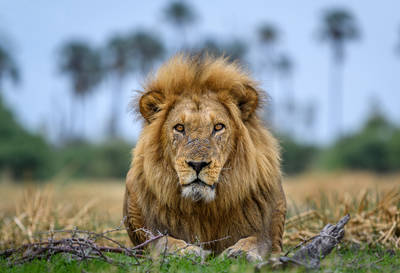
Panthera leo
Lions are at the top of the food chain and also most safari wish-lists, but with their numbers falling fast, any encounter with these majestic apex predators always feels like a privilege.
81% SUCCESS
2,984 sightings from 3,662 observations
Where to see lion in Tanzania
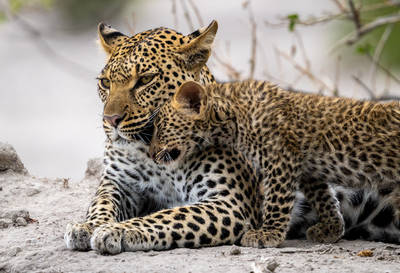
Panthera pardus
The most numerous of Africa’s big cats, leopard occur across many habitats, from wild tracts to populated areas. Their grace and their elusive nature make them a unique safari drawcard.
47% SUCCESS
1,898 sightings from 4,055 observations
Where to see leopard in Tanzania
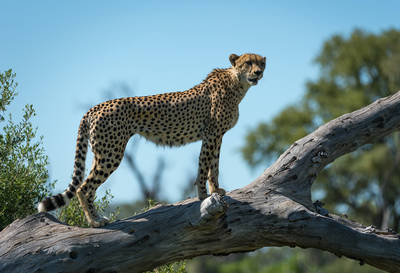
Acinonyx jubatus
The cheetah is the fastest land animal and the only cat that hunts by pure speed. Found largely in open grasslands, its slim, elegant form is today an increasingly rare sight.
33% SUCCESS
1,031 sightings from 3,107 observations
Where to see cheetah in Tanzania
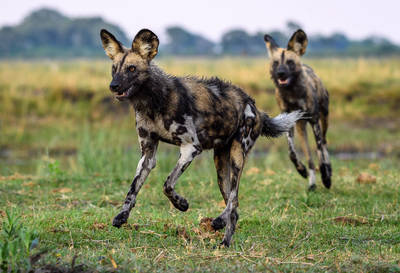
Lycaon pictus
African wild dogs are among the continent’s most compelling animals. Much misunderstood, these rare, tie-dyed canids are amazingly efficient hunters with a fascinating social life.
31% SUCCESS
846 sightings from 2,721 observations
Where to see wild dog in Tanzania
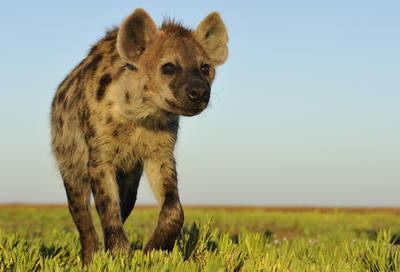
Spotted Hyena
Crocuta crocuta
The spotted hyena may be thought of as ‘ugly’ and ‘cowardly’. In fact, this versatile and intelligent carnivore is one of Africa’s most fascinating and warrants attention on any safari.
55% SUCCESS
2,134 sightings from 3,863 observations
Where to see spotted hyena in Tanzania
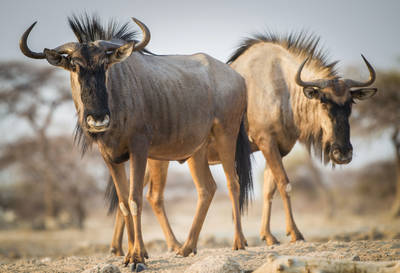
Connochaetes sp.
Superficially bovine in appearance, wildebeests are known for their spectacular migrations sometimes in huge numbers. These resilient animals are some of Africa’s most successful herbivores.
68% SUCCESS
2,429 sightings from 3,581 observations
Where to see wildebeest in Tanzania
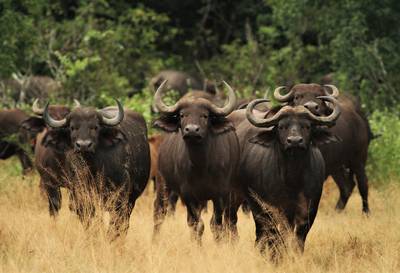
Syncerus caffer
One of the ‘Big Five’, buffalo earned a fearsome reputation in hunters’ tales. By contrast, big herds of these sociable bovids are placid, but mount formidable defences against predators.
83% SUCCESS
2,509 sightings from 3,033 observations
Where to see buffalo in Tanzania
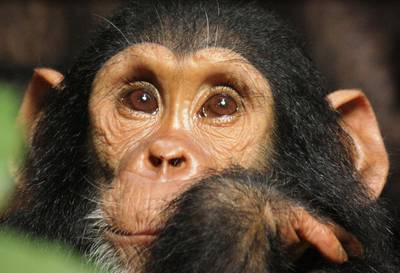
Pan troglodytes
The chimpanzee is our closest living relative. This highly intelligent great ape is a forest animal with a sophisticated social life. Any encounter in the wild is a memorable experience.
100% SUCCESS
28 sightings from 28 observations
Where to see chimpanzee in Tanzania
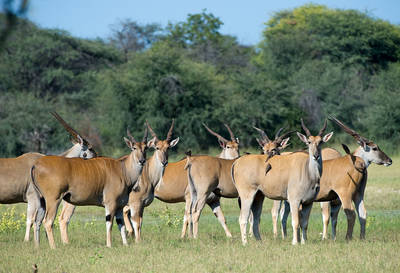
Taurotragus oryx
Africa’s largest antelope, eland are culturally important from prehistoric rock art to modern game farms. Though widespread, they are also shy so sightings are uncommon and often fleeting.
49% SUCCESS
1,446 sightings from 2,934 observations
Where to see eland in Tanzania
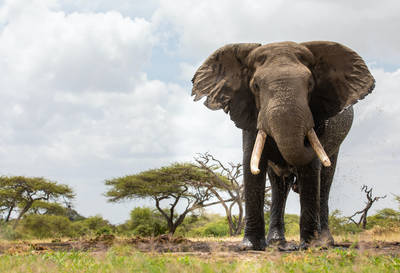
Loxodonta africana
By far the biggest of the so-called Big Five – indeed, the largest land animal on the planet – the elephant shapes the very landscape it inhabits and is a defining presence on any safari.
91% SUCCESS
3,555 sightings from 3,911 observations
Where to see elephant in Tanzania
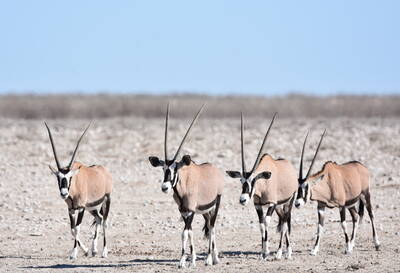
Oryx are impressive antelopes, with a powerful physique and elegant markings set off by rapier-like horns. They cut a distinctive dash in some of Africa’s harshest landscapes.
70% SUCCESS
1,295 sightings from 1,859 observations
Where to see oryx in Tanzania
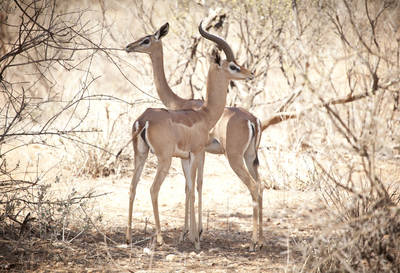
Litocranius walleri
With its slender frame and extraordinarily long neck, this unmistakable East African antelope resembles an attenuated impala and often stands on its back legs browse high shrubs.
76% SUCCESS
89 sightings from 117 observations
Where to see gerenuk in Tanzania
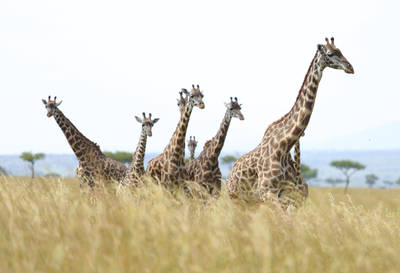
Giraffa camelopardalis
The world’s tallest land mammal, giraffes are herbivores which have evolved many unique adaptations. Their iconic outlines tower above the bush in many of Africa’s wildlife areas.
86% SUCCESS
3,434 sightings from 3,978 observations
Where to see giraffe in Tanzania
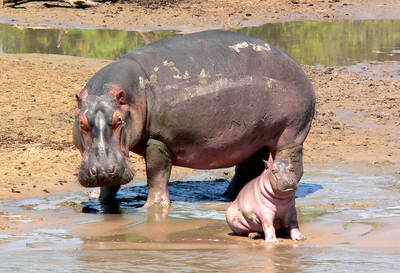
Hippopotamus amphibius
The territorial calls of the hippo create a signature soundtrack to Africa’s rivers & wetlands. Despite an endearing smile, this aquatic herbivore has a notoriously aggressive disposition.
89% SUCCESS
2,600 sightings from 2,920 observations
Where to see hippo in Tanzania
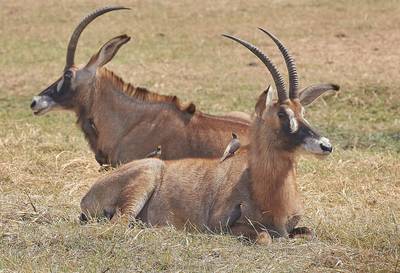
Roan antelope
Hippotragus equinus
Africa’s second largest antelope and one of its most handsome, with a powerful build and distinctive markings, roan are wary of people, but renowned for their bravery against predators.
23% SUCCESS
464 sightings from 1,975 observations
Where to see roan antelope in Tanzania
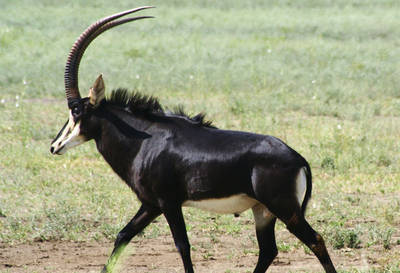
Sable antelope
Hippotragus niger
Perhaps Africa’s most beautiful antelope, sable are renowned for their combative nature, even holding off lions. Shy and restricted in range, sightings of sable are always special.
22% SUCCESS
441 sightings from 1,967 observations
Where to see sable antelope in Tanzania
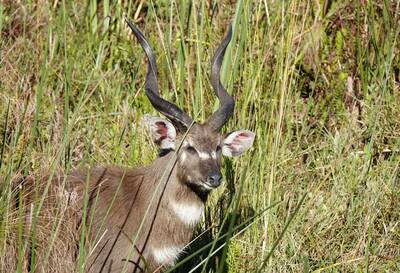
Tragelaphus spekii
The sitatunga is the most aquatic of Africa’s antelopes and specially adapted to its swampy habitats. Though widespread across Africa, only a handful of places offer reliable sightings.
19% SUCCESS
60 sightings from 319 observations
Where to see sitatunga in Tanzania
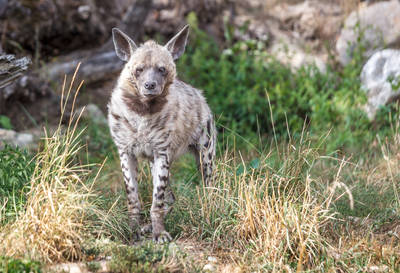
Striped Hyena
Hyaena hyaena
The striped hyena is the most widespread of the world’s hyenas, but absent from southern Africa. A rarely-seen nocturnal scavenger, it is shyer and more solitary than its spotted cousin.
14% SUCCESS
122 sightings from 902 observations
Where to see striped hyena in Tanzania
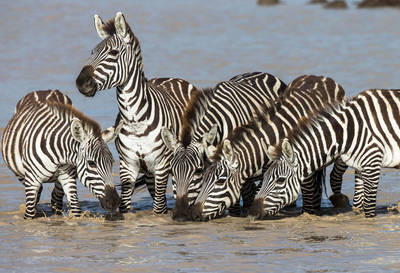
The zebra is a quintessential African animal: the horse in stripy pyjamas at the end of every child’s A–Z. There are three species, of which the plains zebra is much the most common.
84% SUCCESS
3,742 sightings from 4,438 observations
Where to see zebra in Tanzania
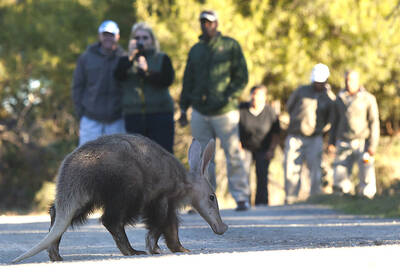
Orycteropus afer
The aardvark is one of Africa’s most bizarre and enigmatic animals. A shy, nocturnal termite-eater, signs of its presence may be scattered about the bush whilst sightings remain elusive.
67 sightings from 3,259 observations
Where to see aardvark in Tanzania
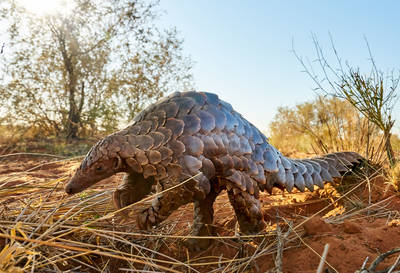
Smutsia sp.
Pangolins appear to be more pine cone than animal in their unique armoury of scales. These nocturnal, ant-eating oddities are not only highly elusive but also increasingly rare.
54 sightings from 3,255 observations
Where to see pangolin in Tanzania
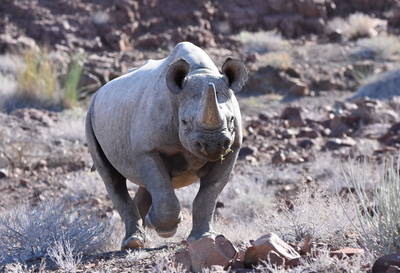
Black Rhino
Diceros bicornis
The black rhino is the smaller and rarer of Africa’s two rhino species but has the more fearsome reputation. Shy and heavily persecuted, it tends to stick to cover.
618 sightings from 2,009 observations
Where to see black rhino in Tanzania
When to go on a Tanzania safari
In recent years, Tanzania’s climate has become less predictable, but historically a broad-brush view of the seasons here has been:
July to October, the ‘ peak season ’, usually sees warm and dry days, with high game concentrations around water sources, including the famously spectacular river crossings of wildebeest in the northern Serengeti.
During November and December, the ‘ short rains ’, wildlife sightings remain plentiful, but expect sporadic showers. Migratory birds arrive as residents don breeding plumage and prices reduce from peak levels.
Tanzania’s ‘ short dry season ’, January to mid-March, can be hot and humid, particularly at the coast. The wildlife is generally scattered. In the Serengeti, the wildebeest are calving across the short-grass plains of the south.
The frequent downpours of the ‘ long rains ’ last from about mid-March to early June. Some safari camps close, but lower prices and fewer visitors do attract the cognoscenti.
Click on the months below for more detail, see Tanzania’s historical climate data and talk to us about recent variations!
Tanzania in January
January usually marks the start of the short dry season, although the exact timings of this are a little unpredictable. You can expect clear blue skies and sunshine, if the short rains have stopped, and the temperatures will be building. The short dry season is a little less pronounced in Southern Tanzania, and so it can still be wet in these areas. It is an interesting time for avians as resident birds go into breeding plumage and migrant species can be present. Once the New Year busy period has quietened down, January can offer great value and quieter parks, although the weather can be variable, and in the Selous and Ruaha the wildlife is more dispersed.
- Variable weather: clear & dry or cloudy with some rain.
- Occasional thunderstorms may occur.
- A good time of year for birding as and many migrant species are around
- The wildebeest migration is gathering in the southern Serengeti.
- Busy in early January, quietening down through the month.
A good time to visit, with pros & cons
Weather in January
Tanzania in February
February is during the short dry season and is one of the hottest months in Tanzania, with temperatures reaching around 33°Celsius. This can be a good time to visit, as some areas of the Northern Circuit are comparatively quieter than during the European summer months, and lodge rates are also a little lower. The wildebeest will typically be on the southern plains of the Serengeti for their calving season, which tends to occur in a 2-3 week window in early-mid February – although this does vary year on year. This is also a particularly rewarding time for birdlife, as northern hemisphere migrants join the resident species.
- Hot and dry weather.
- Wildebeest migration calving on Serengeti’s southern plains.
- Ngorongoro Crater and southern Serengeti busy for the migration.
- Selous and Ruaha are typically quiet at this time.
- The parks are likely to be lush and green, leading to pretty landscape
A very good time to visit
Weather in February
Tanzania in March
The heavier ‘long rains’ start in earnest in March although exactly when varies year on year. With no need to stay close to permanent water sources, migratory wildlife disperses, and so game viewing starts to become more challenging. This is most prominently seen in Tarangire National Park. The wildebeest migration may still be calving, or have moved on into the central regions of the Serengeti. Many of the camps in the southern parks close mid March and mobile tented camps in the Serengeti will wind down towards the end of the month in order to move location or carry out refurbishments, ready for the new tourist season.
- Hot with building humidity, before the rains begin at some point.
- Wildlife viewing is variable depending on the start of the rains.
- Parks are quiet and rates are low.
- Not great for southern or western Tanzania.
- March can be a good time for birding, with many migrant species.
Weather in March
Tanzania in April
April is in the middle of the long rainy season and is the wettest month, with on average 250mm of rain. Temperatures are fairly high and humid in comparison to the rest of the year. Expect the bush to be lush and flowering, and alive with insects, birds and smaller animals. It is however also dense, allowing wildlife to hide, which in turn makes game viewing harder. This is a very quiet time in terms of visitor numbers. Many of the tented camps are closed in April, however the larger lodges remain open. The rates are significantly cheaper, and so if you are willing to work harder to spot the bigger game, some accommodation bargains can be had.
- Heavy rain expected, with impressive thunderstorms and lightning.
- Many camps closed and roads impassable due to ground conditions.
- Rates are at their lowest all year round, with very few other tourists
- Places that are open are green and vibrant, wildlife more dispersed.
This is not a great time to visit
Weather in April
Tanzania in May
As Tanzania is close to the equator there is no dramatic difference in climate throughout the year, but temperatures do start to drop a little in May. The rains are likely to still be present, although potentially clearing towards the end of the month. Visitor numbers and lodge rates are still low. The wildebeest migration is making its way through the western regions of the Serengeti, crossing the Grumeti River. Virtually all camps in southern Tanzania remain closed, and many of the roads and tracks in the Selous become impassable.
- Heavy rains and storms are likely, this can create some dramatic skies
- Blissfully quiet in northern Tanzania, and a good time to avoid crowds
- The parks are likely to look lush and green, with long grass.
- Wildlife is likely to be more dispersed, with fewer sightings.
- The low prices make safaris much more affordable at this time.
Weather in May
Tanzania in June
The rains come to an end at some point during the month and migratory wildlife begins to be drawn back to perennial water sources as the land starts to dry up. It’s likely that the parks will still be quite green and the grass high though, so walking and fly-camping may be unlikely. This marks the start of the season with camps reopening, but prices are still more affordable than the subsequent months. The migration may still be in the Western Corridor, or on the move northwards towards the Mara River. Western Tanzania presents more challenging conditions for chimpanzee trekking in Mahale National Park, as the chimps are higher in the mountains.
- A transitory time for the migration – moving from west to north.
- The parks may still be quite green, and grasses high.
- Wildlife may be dispersed still.
- Relatively low visitor numbers and good value, shoulder season prices.
Weather in June
Tanzania in July
July is considered to be the start of the peak season, with no rainfall expected and pleasant daytime temperatures. As the parks dry, the wildlife congregates in fewer areas, grass is eaten and trampled by the migration, and game viewing gets better and better. The wildebeest are typically arriving in the northern Serengeti, ready to begin their period of crossings of the Mara River. In the Selous and Ruaha wildlife sightings can be fantastic, with animals gathering around the lakes and rivers. Great conditions and school holidays mean the parks are at their busiest, with Ngorongoro and the Serengeti particularly crowded.
- Dry and warm daytimes, chilly and windy in the mornings and evenings.
- Great wildlife viewing, as water sources diminish.
- The most popular time of year with very high visitor numbers.
- Prices are at their highest due to the great conditions on the ground.
- To avoid the crowds consider Tanzania’s southern parks.
Fantastic: the very best time to visit
Weather in July
Tanzania in August
August is the middle of the long dry season, with clear skies and sunny weather. You can expect some cooler weather at night and first thing in the morning. Remember to pack layered clothing, so you can wrap up warm on your early morning game drives, but remain comfortable as it heats up throughout the day. August is a very popular time to visit, so accommodation prices are at their highest and advanced booking is necessary. It can get noticeably busier in some of the northern parks – in particular the Ngorongoro Crater and northern Serengeti, as visitors flock to the area in hope of witnessing an exciting migration river crossing.
- Dry and warm daytimes, chilly in the early mornings and evenings.
- General wildlife viewing should be excellent.
- An exciting time of year for the wildebeest migration.
- Certain areas will be very busy and camps fill up fast.
- Great wildlife sightings in the Selous and Ruaha, and fewer people.
Weather in August
Tanzania in September
September can be an excellent time of year to visit Tanzania. As the parks continue to dry up the wildlife becomes increasingly reliant on the remaining water sources, leading to high densities of animals. Whilst early September can be busy, with fewer families traveling at this time the parks typically become quieter as the month goes on. You are still likely to see the wildebeest migration in the northern Serengeti, with river crossings occurring on a regular basis. Tanzania’s southern parks are also fantastic at this time of year, generally receiving far fewer visitors than the north, and wildlife sightings can be great. Prices remain high and the weather generally remains good.
- Wildlife viewing in September can be fantastic.
- Whilst still fairly busy, often the parks are typically a little quiet
- The parks will start to become very dry, with little new vegetation
- Cooler mornings and evenings, warming up during the day.
- Prices remain high.
Weather in September
Tanzania in October
At the tail end of the dry season, the wildlife should be the easiest to spot, although photographers should be aware that it can be a bit dusty at this time of year, as there has been no rain for several months. Great general wildlife viewing throughout as animals are attracted to remaining sources of water. Elephant numbers are particularly high at this time in Tarangire, and Mahale and Katavi are especially rewarding with frequent wildlife sightings close to camp. There is a chance of rainfall towards the end of the month, if the short rains commence. While prices remain high, visitors numbers are significantly lower than in July-August.
- Mostly dry and temperatures comfortably warm, with the chance of storm
- Great game viewing although the landscape can be a bit barren.
- Much lower visitor numbers than the earlier months.
Weather in October
Tanzania in November
In November you can expect the start of the short rains, although the start date varies every year. The rains are highly localised, and are much lighter and more unpredictable than the long rains that occur earlier in the year. These should not really interfere with your safari – as the game viewing at this time is still good - but you should pack a waterproof jacket and be prepared for some short rain showers! The majority of tented camps remain open, but some of the mobile camps in Northern Tanzania will close for the latter half on the month. Given the seasonality, camps are charging shoulder season rates so there are often some bargains to be had. Early November can offer great value for money and the weather conditions are likely to be comparable to late October.
- Parks are comparatively quiet and prices at the lower end.
- Some camps will close towards the end of the month for maintenance.
- Good wildlife sightings, but animals will disperse when rain starts
- The wildebeest migration is on the move and the location unpredictable
Weather in November
Tanzania in December
December is also during the short rainy period, but this does not stop Tanzania being a popular destination to spend the festive period. Be aware that many of the lodges book up early, and charge peak rates over this time. Advanced booking is essential over this period, especially if travelling in larger family groups. Travelling in December outside of the festive period allows travellers to make use of excellent shoulder season rates. Temperatures are pleasant with the averages of 27Celsius, although there is the chance of intermittent thunderstorms.
- Variable weather:clear & dry or cloudy with some rain and thunderstorm
- Good general game viewing in parks with low seasonality - Serengeti.
- Very quiet early in the month, becoming exceptionally busy.
- Prices reflect this – great value rising to the highest they are.
- The wildlife in southern Tanzania is more dispersed.
Weather in December
Maps of the main regions for a Tanzania safari
Two different maps can help you to understand Tanzania:The GOOGLE MAP shows Tanzania's remarkable landscape, spanning 900,000km2 from vast grasslands to its extensive coastline, whilst our REFERENCE MAP clearly outlines the national parks.
In northern Tanzania , the remarkable wildlife sanctuary of the Ngorongoro Crater rises beside a huge crack in the earth’s crust, the Rift Valley Escarpment, which splits the landscape and bounds the soda-lakes of Lake Manyara and Lake Natron . Nearby, at Olduvai Gorge , the same geology protects some of the earliest hominin fossils ever discovered.
Southern Tanzania ’s two main parks are far apart. The flat Nyerere National Park , dominated by many waterways of the mighty Rufiji River, contrasts with the huge, rolling plateau of Ruaha National Park .
More remote still, in western Tanzania , lie the plains of Katavi National Park and the mountainous sloes of the tropical forests in Mahale Mountains , on the shores of Lake Tanganyika.
Off Tanzania’s tropical Indian Ocean coastline lie the ‘spice islands’ of Zanzibar and Pemba ; the laid-back Mafia Island , and many tiny satellites, like the private islands of Fanjove , Chumbe and Mnemba .
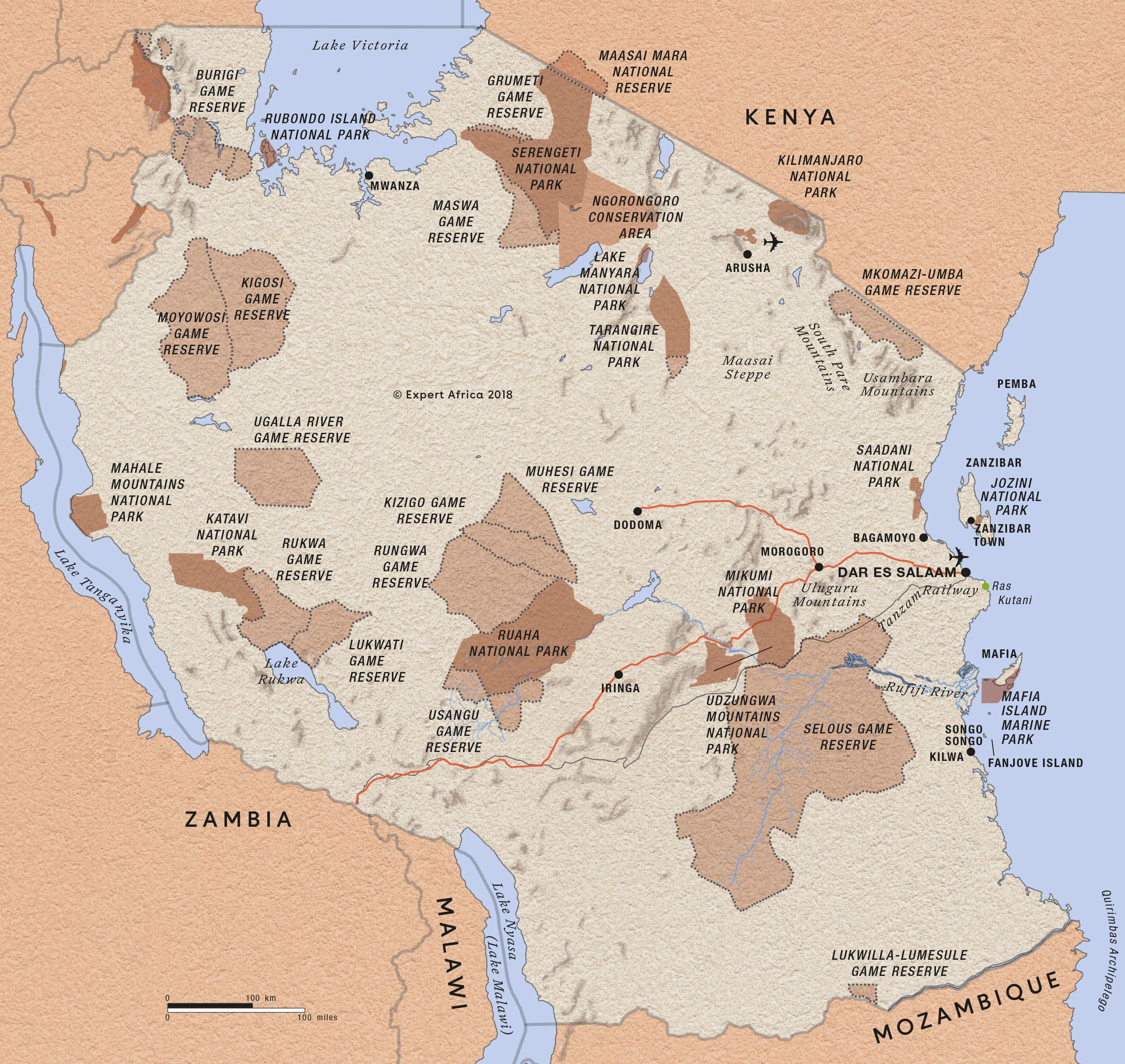
Need inspiration?
Let our trip chooser narrow down the options for you
Wildlife safaris & holidays in Tanzania
Tanzania is an iconic wildlife destination with a diverse array of wildlife, landscapes and safari activities – offering visitors an unforgettable view of raw, riveting nature.
From the plains of the Serengeti to the lush wetlands of Tarangire , Tanzania presents an unmatched wildlife spectacle, epitomised by the visceral drama of the great Serengeti wildebeest migration .
Southern parks like Nyerere and Ruaha satisfy more adventurous spirits with their vast wilderness areas, large wildlife populations, and skilled guides who will bring the wildlife interactions to life.
Yet, Tanzania’s allure spans beyond its wildlife. From walking safaris and fly-camping that immerse you in the landscapes, to boating safaris navigating scenic waterways, cultural forays into age-old Maasai villages, and trips floating in hot air balloons above vast herds, the experiences on offer here are varied.
Let these ideas spark your wanderlust, and when you're ready, contact us to plan your perfect safari.
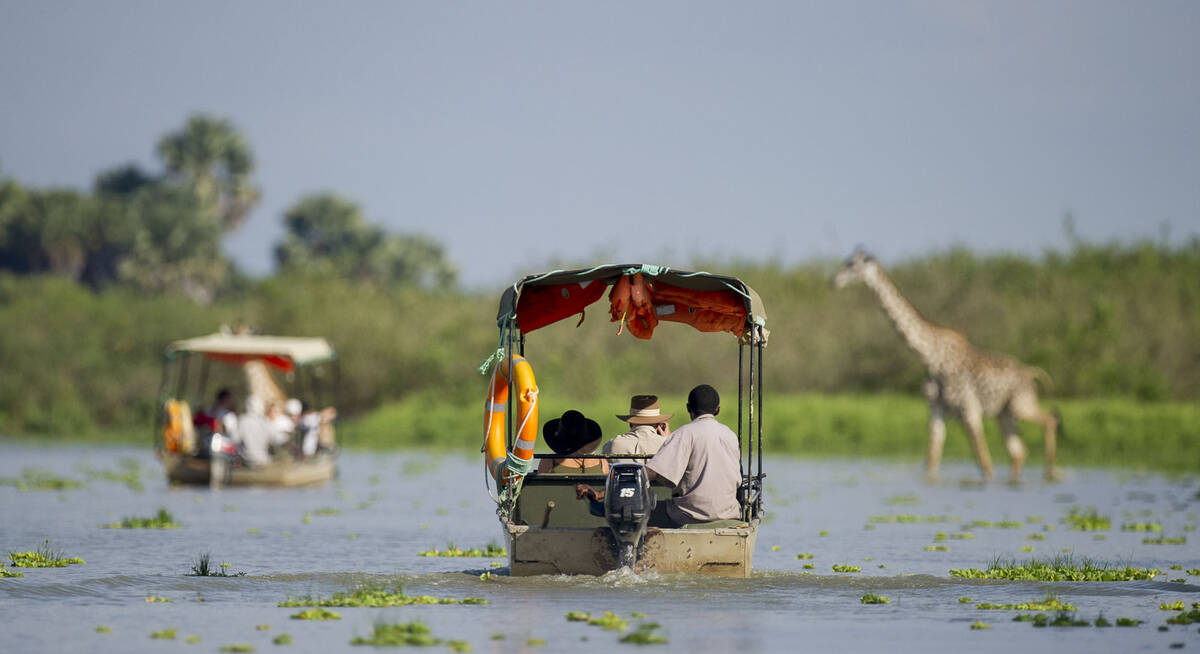
Bat-eared Fox Fly-in Safari
3 days • 1 locations DAR ES SALAAM AIRPORT TO DAR ES SALAAM AIRPORT
This is an ideal first-time safari and is the perfect add-on to a holiday in Zanzibar. Nyerere National Park is one of Africa’s biggest wildlife areas and is home to an abundance of animals.
US$2,470 - US$3,090 per person
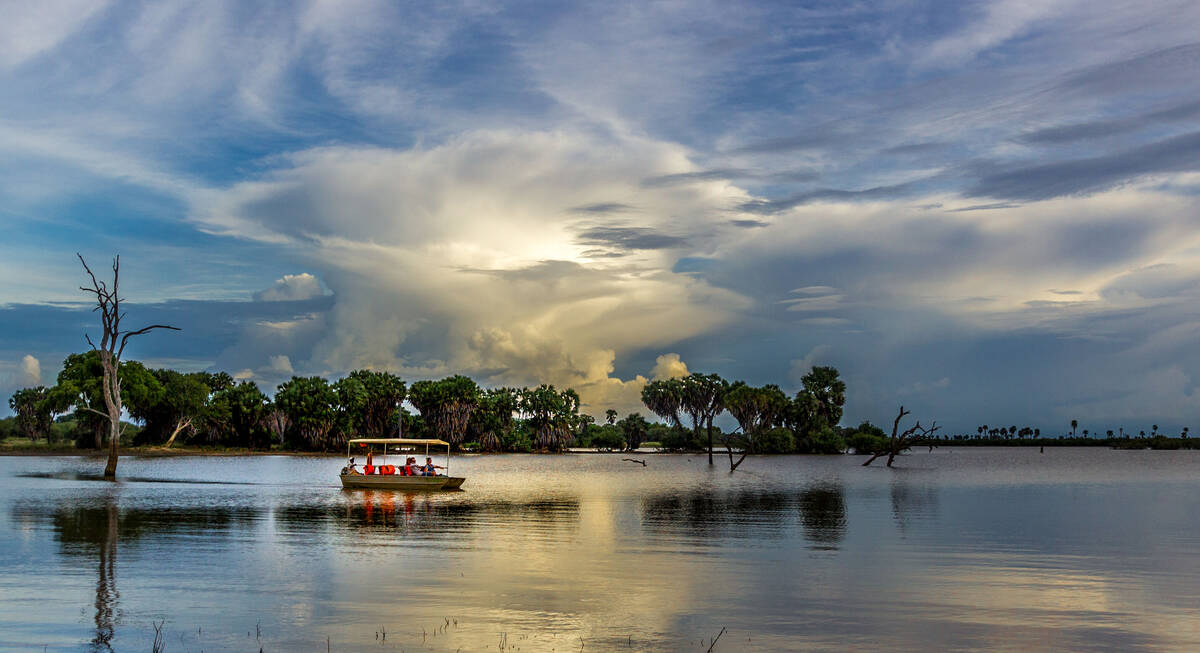
Dwarf Mongoose Fly-in Safari
6 days • 2 locations DAR ES SALAAM AIRPORT TO DAR ES SALAAM AIRPORT
Stay in two eco-friendly, rustic bush camps in Nyerere National Park and Ruaha National Park. Remote wilderness, a diversity of habitats and a good range of activities are available in these two wildlife havens.
US$4,450 - US$5,320 per person
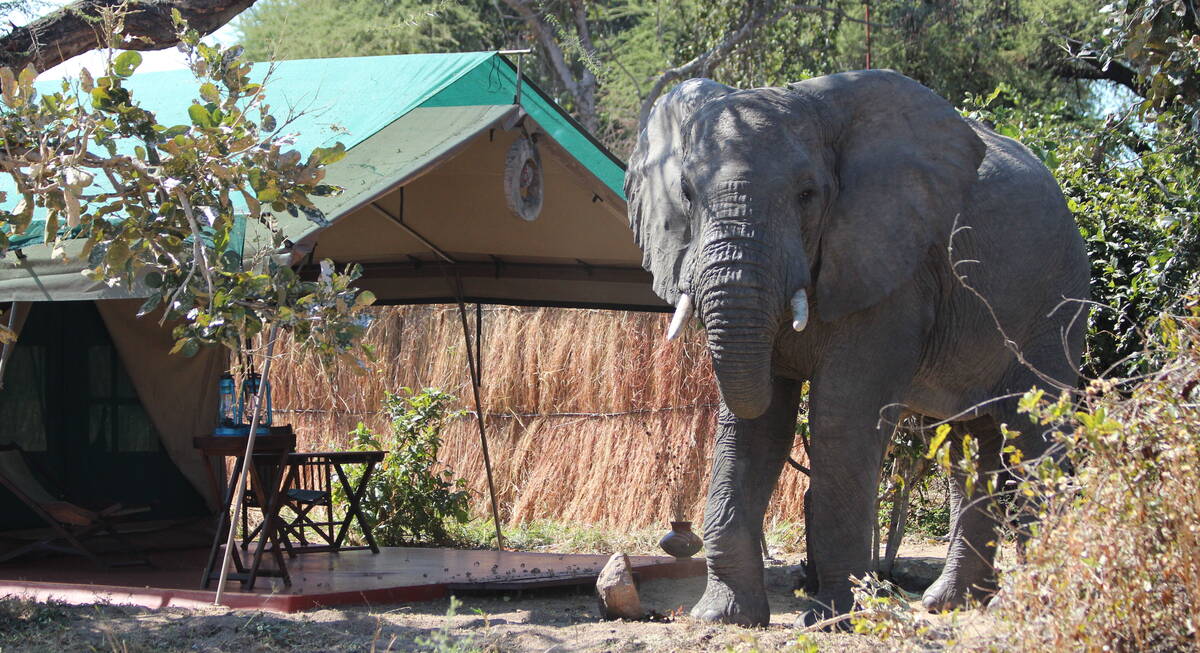
Turaco Safari
12 days • 4 locations DAR ES SALAAM AIRPORT TO DAR ES SALAAM AIRPORT
This top-value holiday idea combines two safari areas with a week on the Indian Ocean island of Zanzibar. Photograph lions and elephants, then relax under the palms on a powder-sand beach.
US$5,460 - US$6,330 per person
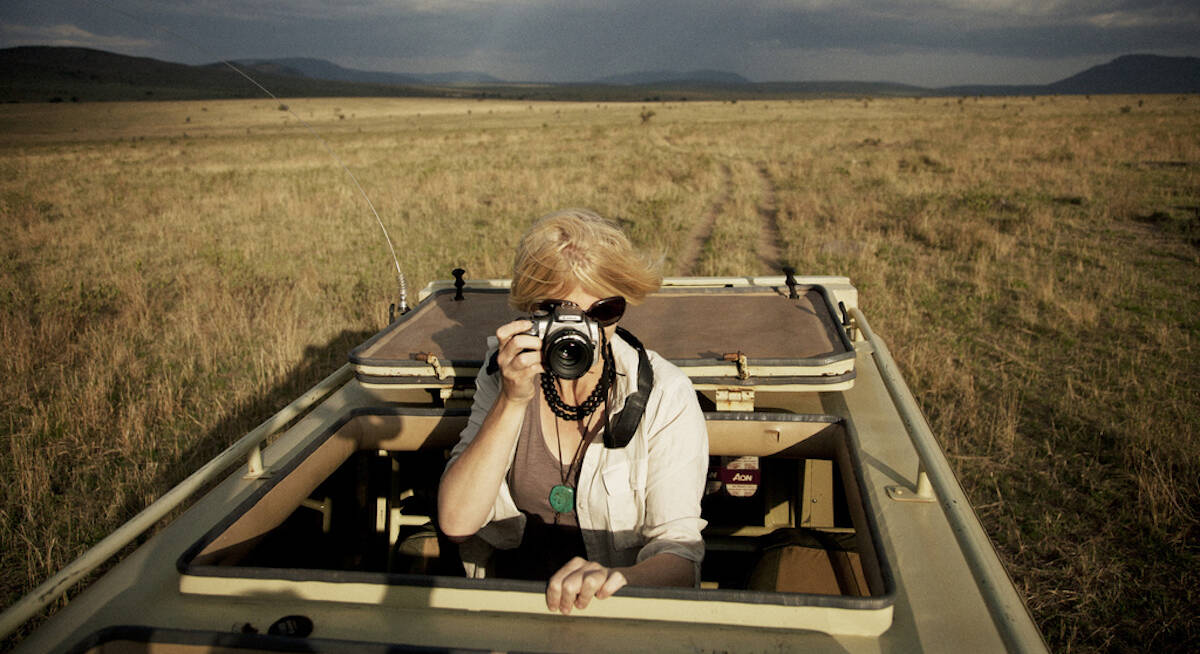
Gorillas and Serengeti Safari
11 days • 4 locations KIGALI AIRPORT TO KILIMANJARO AIRPORT
Combine three iconic experiences – mountain gorillas in Rwanda, and the Serengeti plains and awe-inspiring Ngorongoro Crater in Tanzania.
US$12,620 - US$14,390 per person
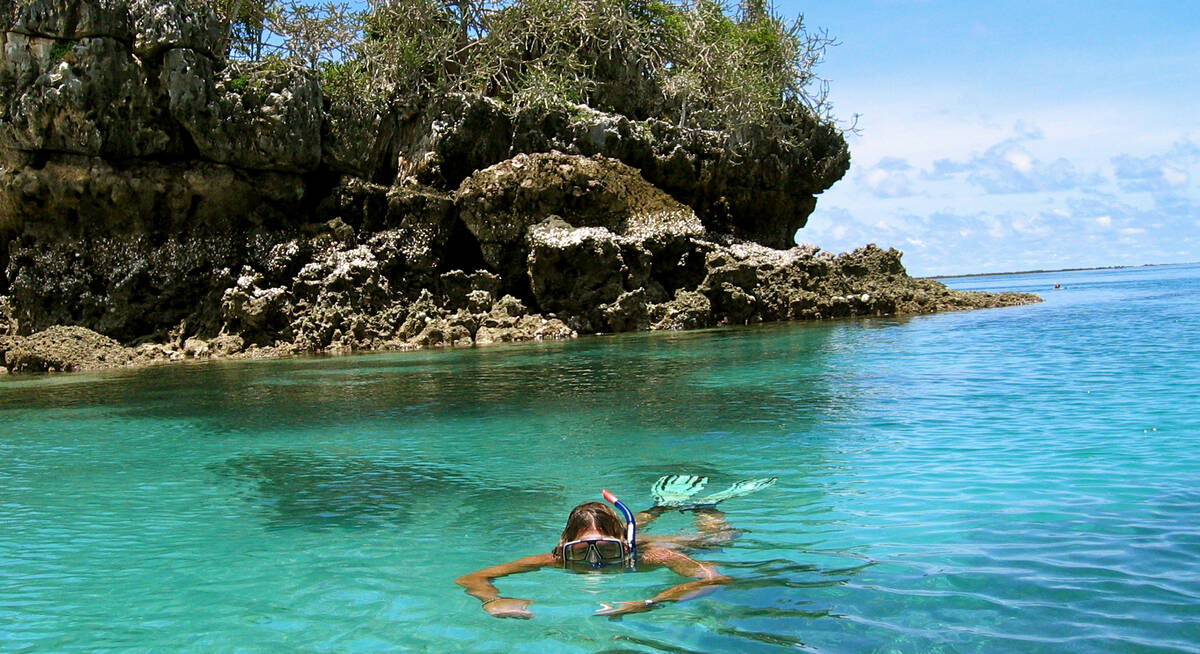
Lemon Grass Beach Holiday
Enjoy undisturbed leisure at the Mafia Archipalego’s lesser-visited Chole and Mafia Islands. Two charming, elegant lodges provide opportunity for total relaxation as well as a range of activities.
US$2,040 - US$2,800 per person
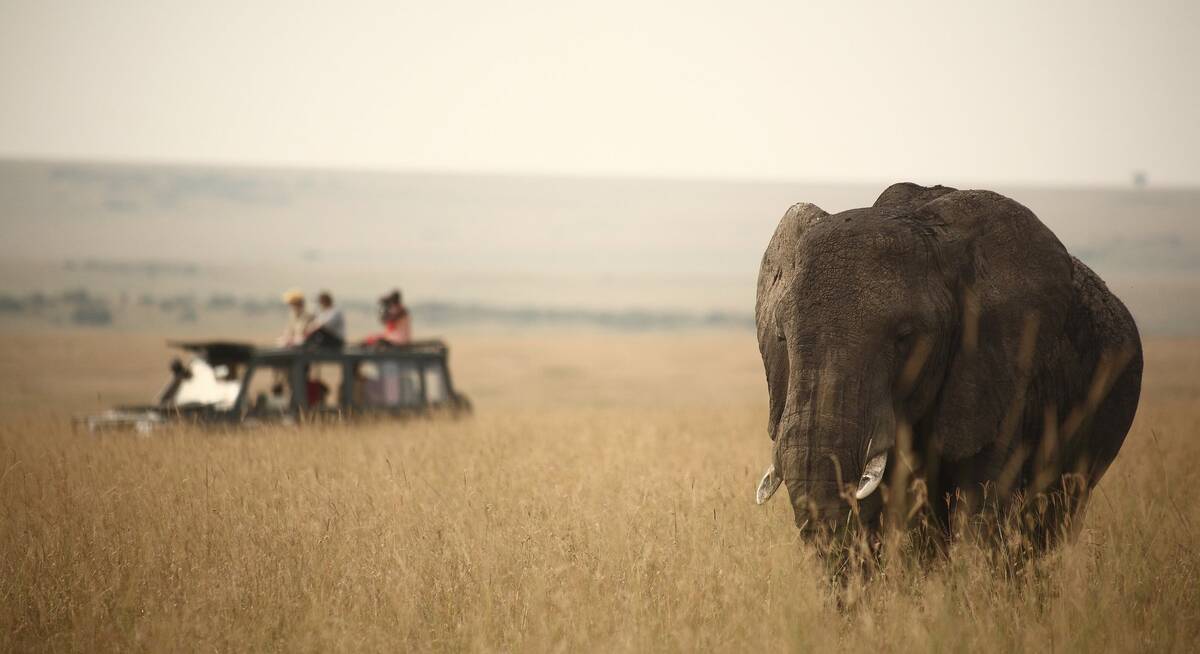
Martial Eagle Fly-in Safari
9 days • 3 locations NAIROBI AIRPORT TO KILIMANJARO AIRPORT
This stylish fly-in safari visits two of Africa’s most iconic parks, the Maasai Mara National Reserve in Kenya and Tanzania's Serengeti National Park.
US$10,740 - US$17,740 per person
Let us help you customise your trip
All of our holidays on this site are just ideas; none are fixed. All of our trips are tailor-made, so we'll always adapt them to suit you. Talk to an Expert and let us help you to work out your perfect trip.
Talk to an Expert
Call us now! We’ll match you with the Specialist in our team who is best suited to help you. Then together we can start planning your trip.
Set up your itinerary
Based on our experience and your ideas, your specialist will create a detailed, costed itinerary. We’ll refine it together, until we have a trip that you’re perfectly happy with.
Prepare for your trip
The same Specialist will make the seamless arrangements for your trip, send you detailed travel documents, and be available to answer any questions before you depart.

Travel with peace of mind
After you set off, you’ll be cared for by our partners in Africa, most of whom have worked with Expert Africa for decades. And if you ever need us urgently, we’re available 24/7.
When you return
We love to learn about your trip, and so will always be grateful if you’ve the time to give feedback to your Specialist when you return.
Tanzania holiday styles & special interests
From family adventures to romantic breaks, find ideas here for your perfect Tanzania safari
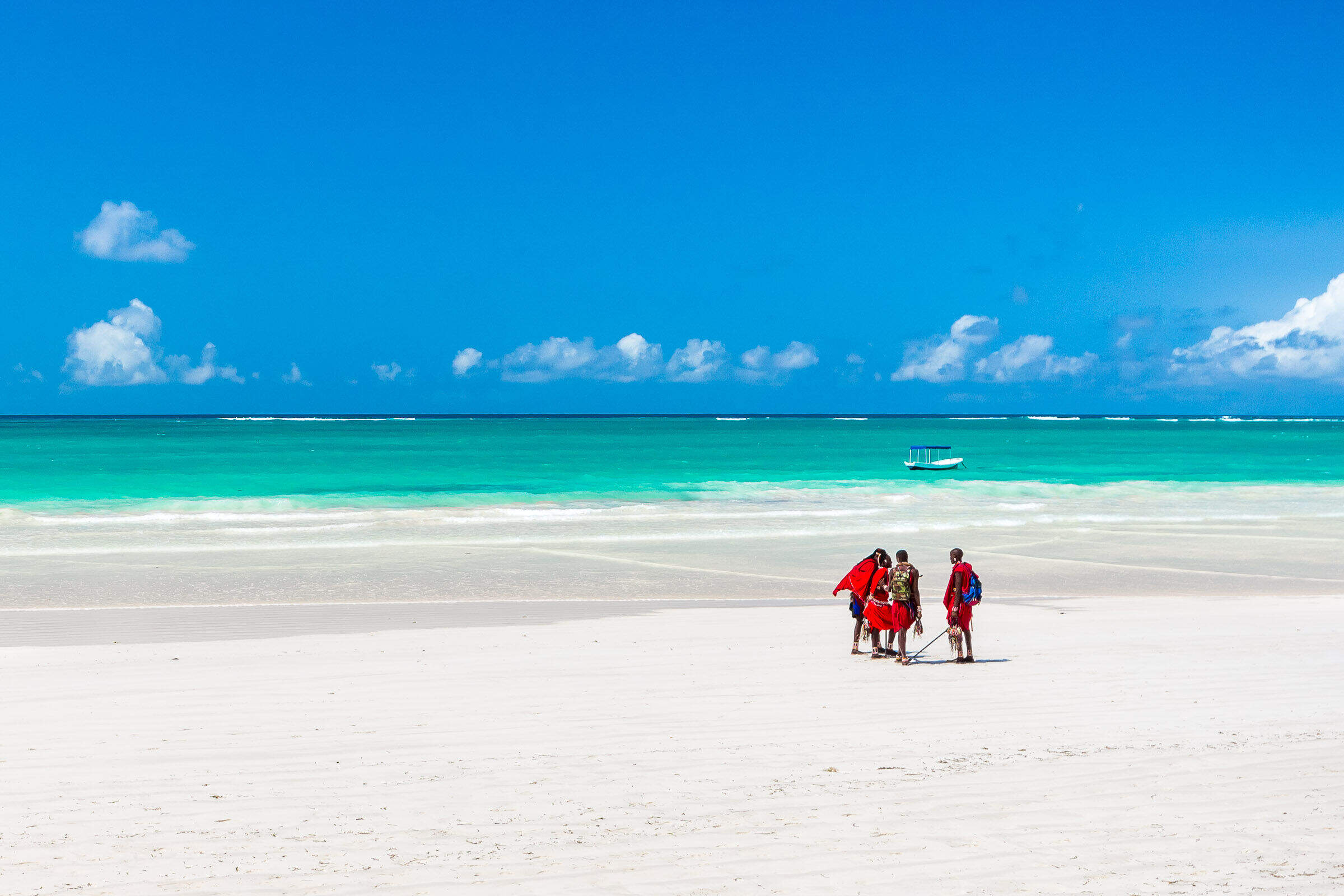
Beach holidays
Discover Africa's coast and tropical islands.
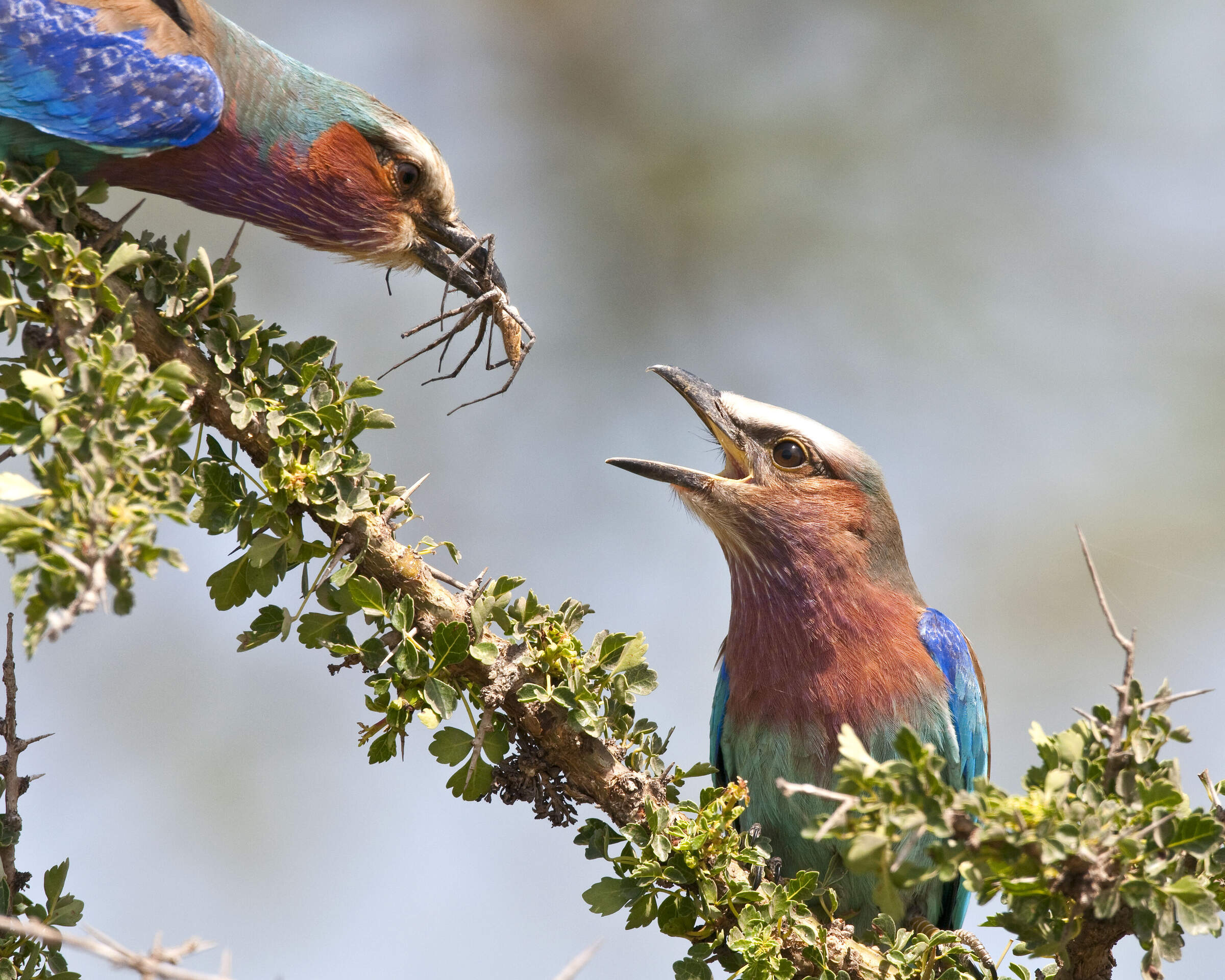
Birdwatching
Diverse habitats, discreet hides and superb guiding.
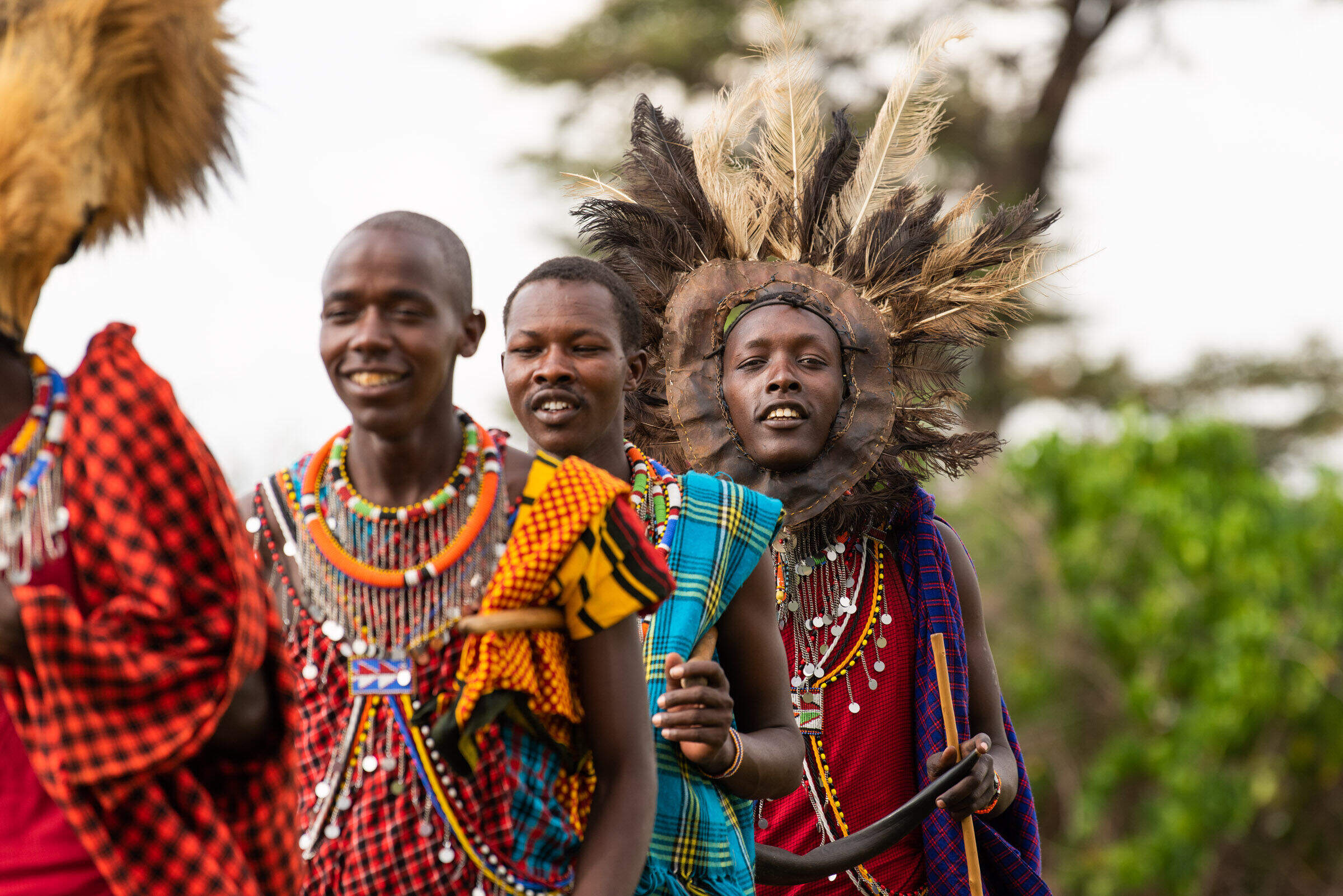
Cultural experiences
Get an insight into Africa's cultures and history.
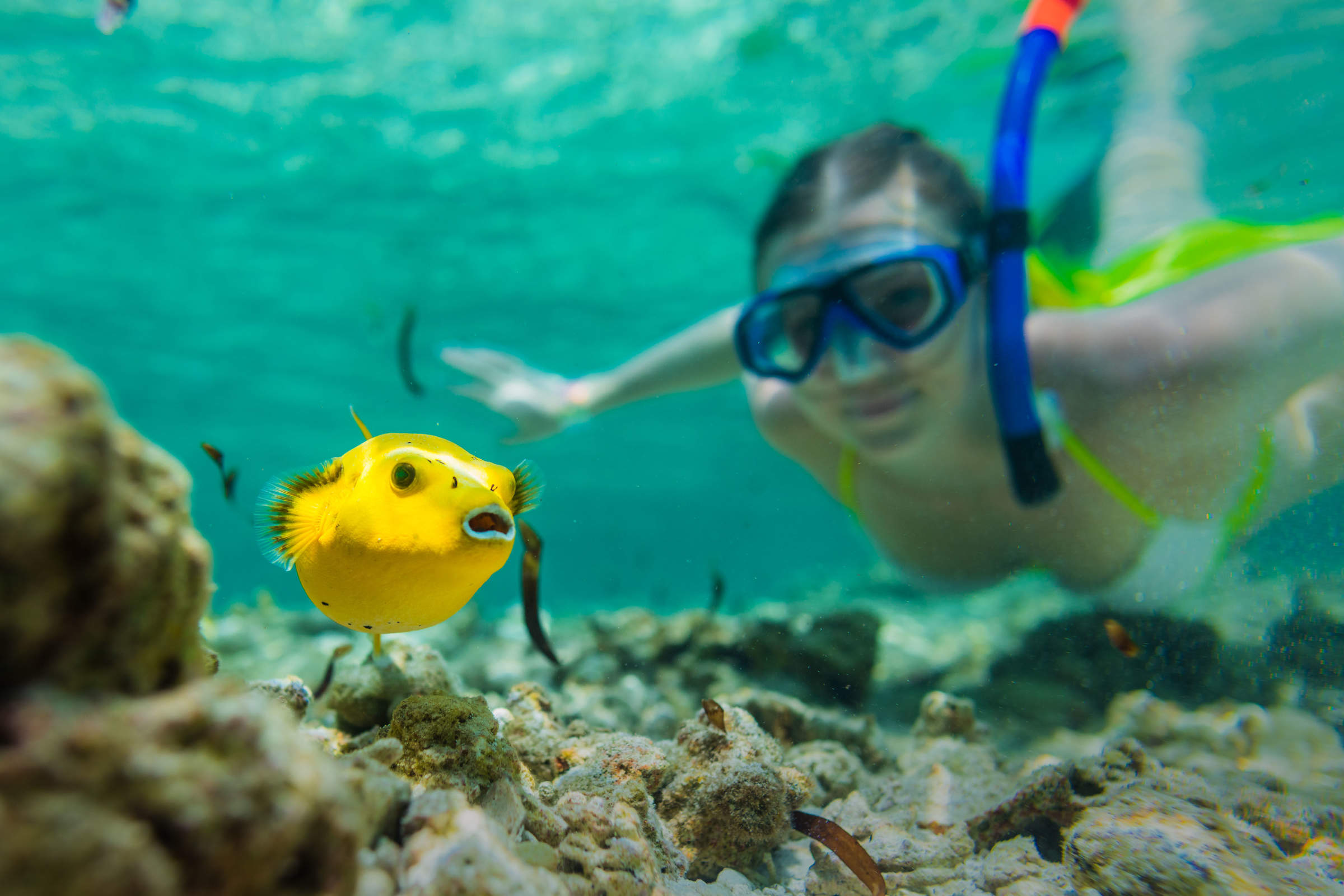
Diving & snorkelling
Find captivating marine life beneath the waves
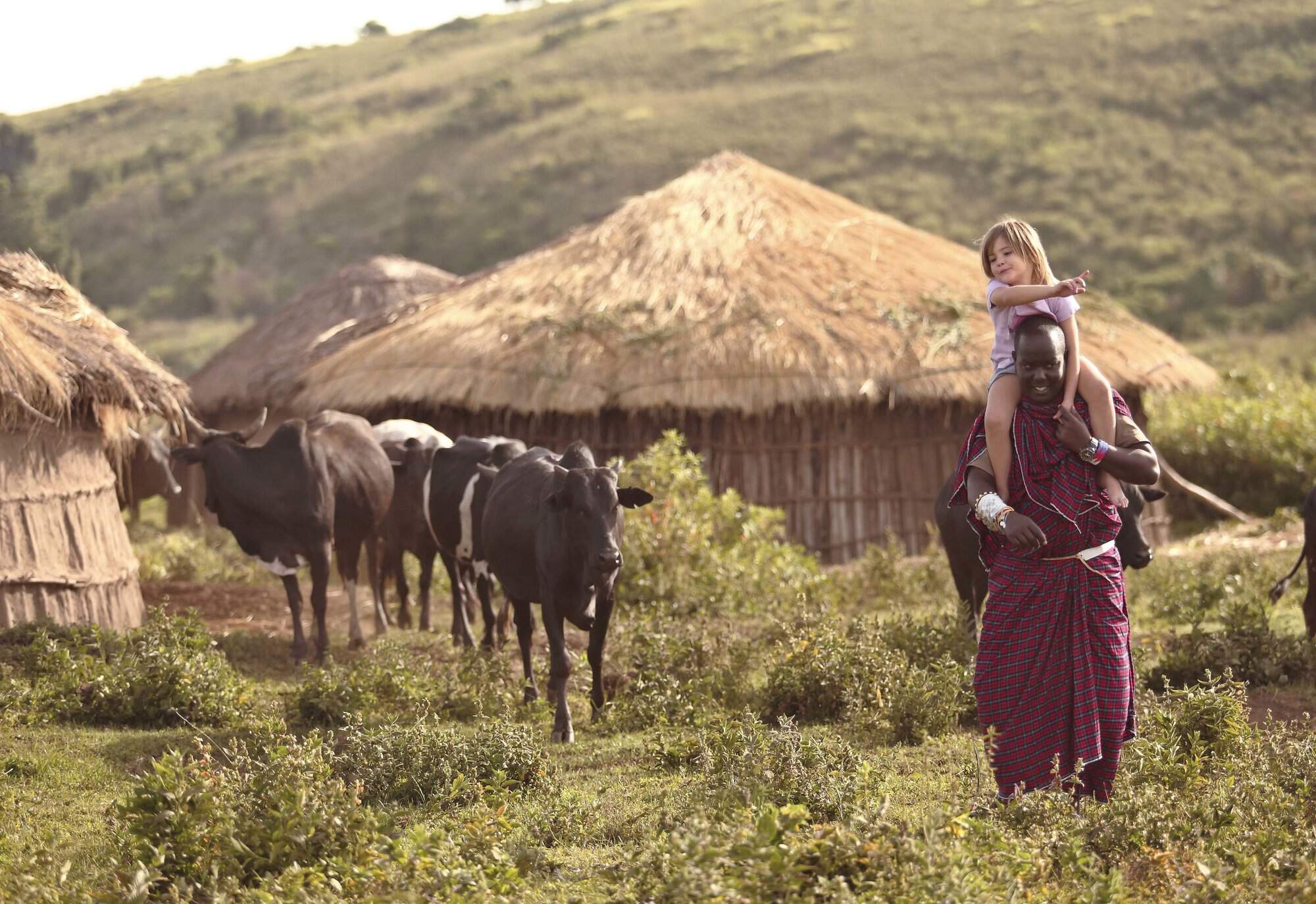
Family holidays
Hand-picked camps for an incredible family safari.
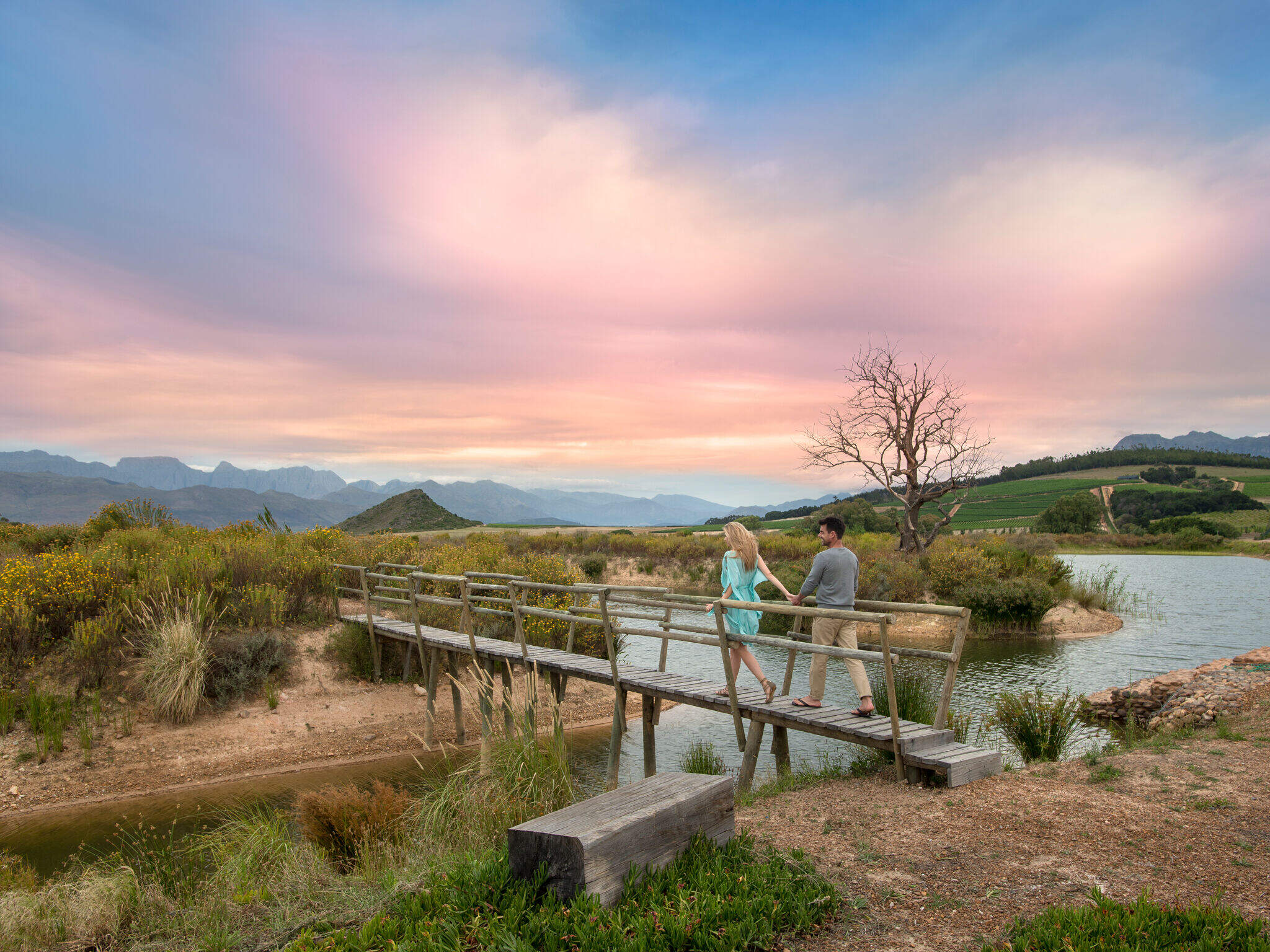
Romantic safaris and castaway island retreats.
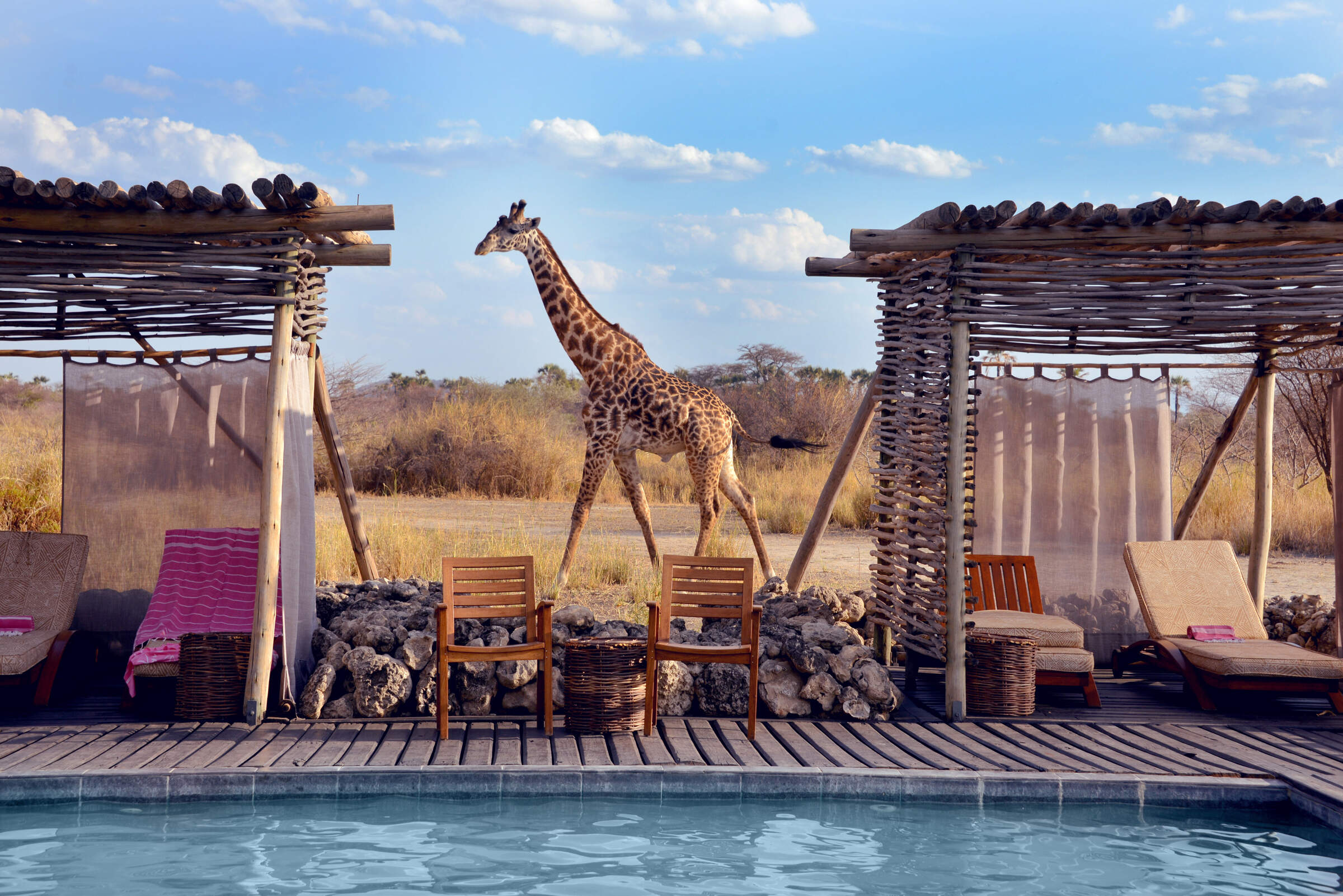
First-class service, scenic vistas and unparalleled comfort await you during these carefully selected luxury holidays.
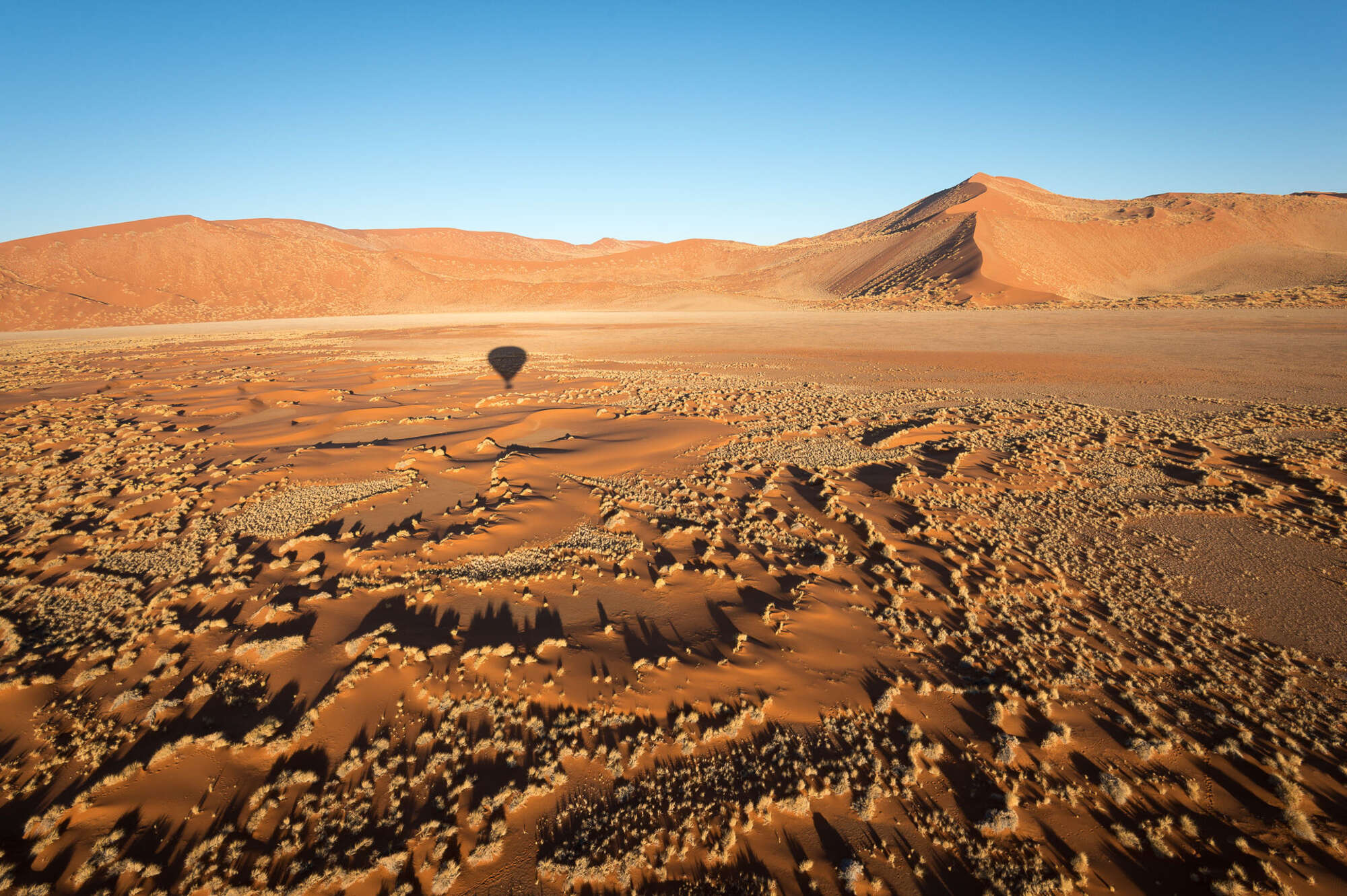
Photography holidays
Great holidays to suit the keen photographer.
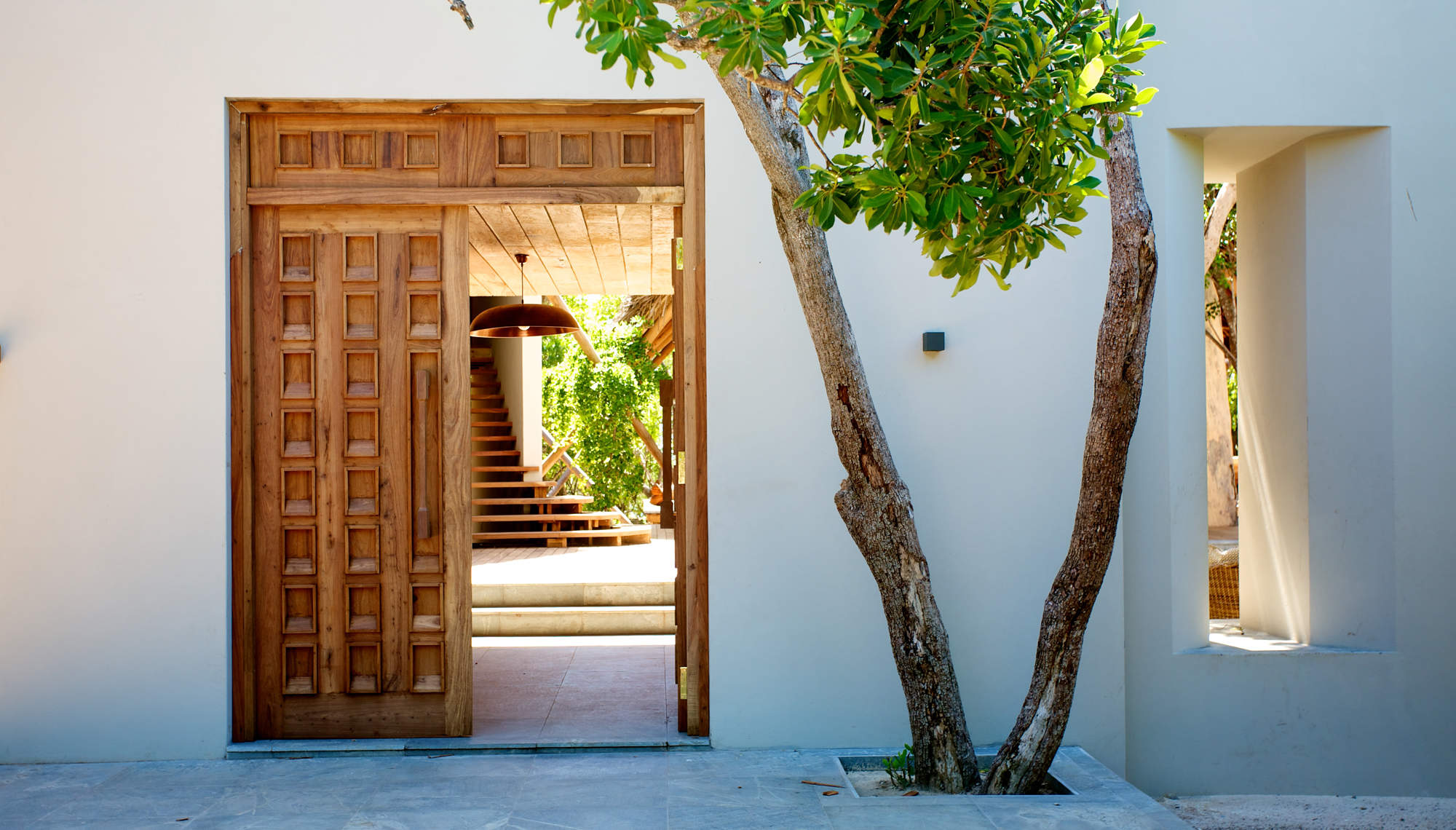
Private villas & houses
Enjoy Africa with just your friends & family
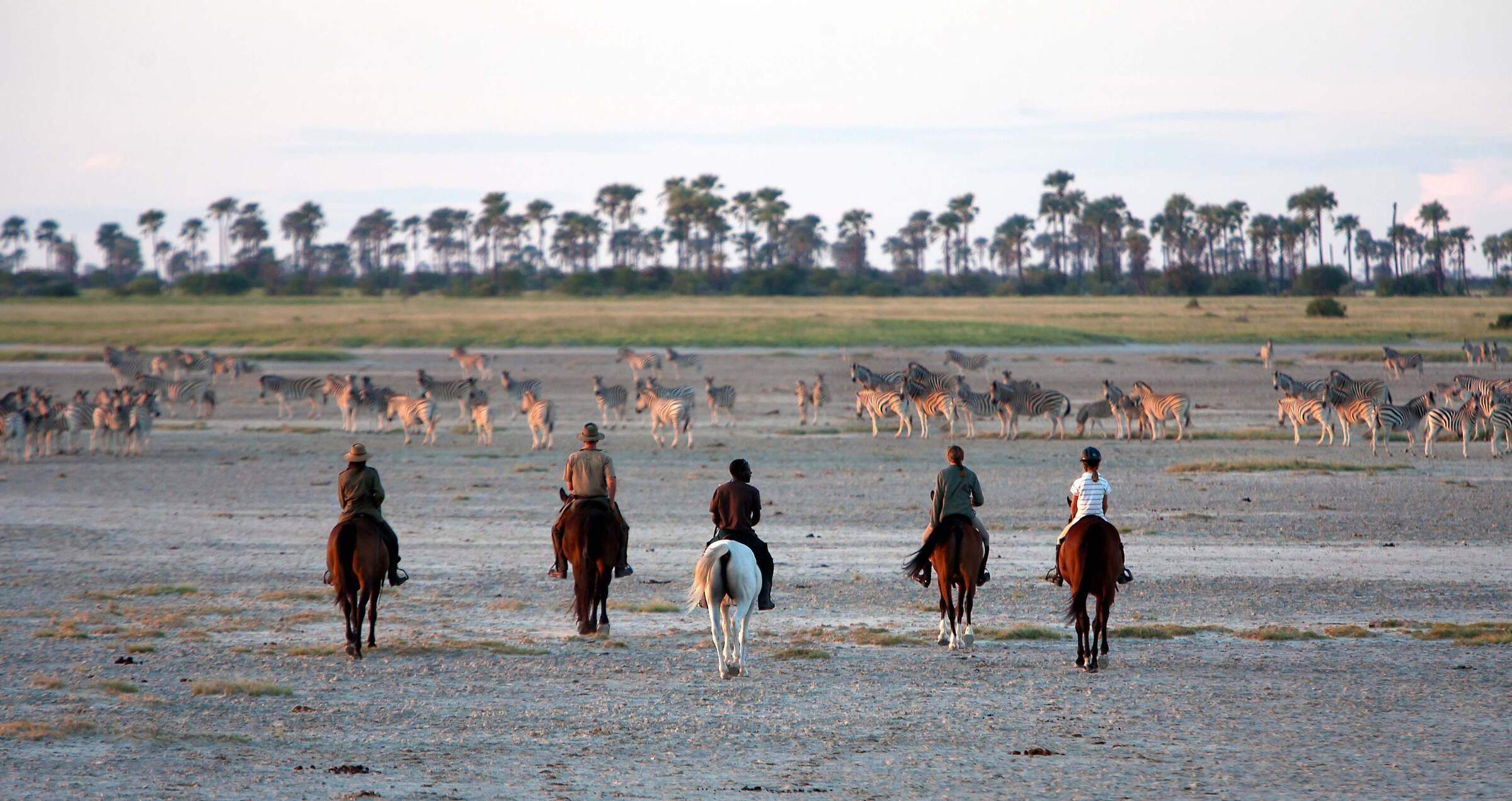
Riding holidays
Explore Africa's wilderness on horseback.
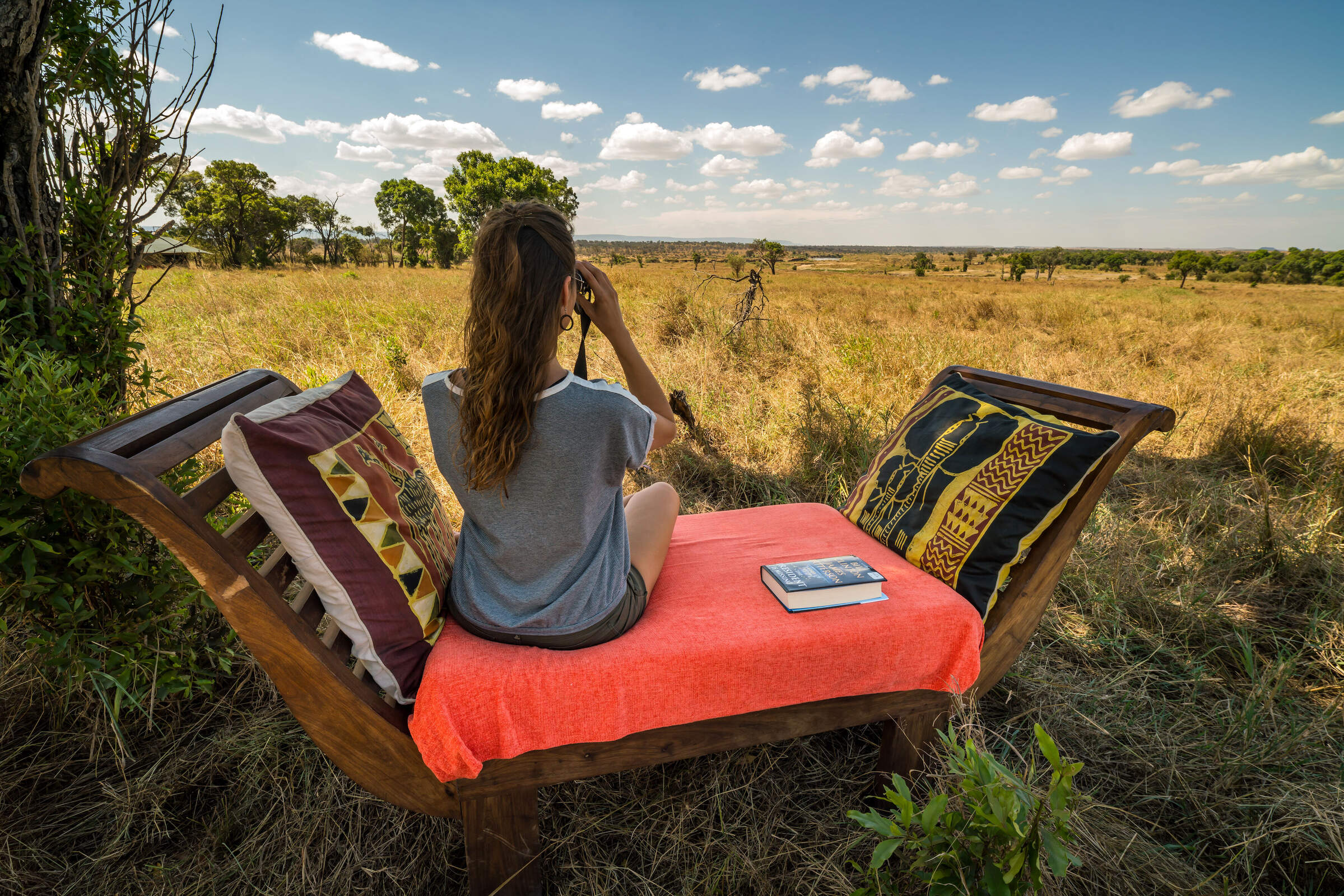
Solo Travel
Trip ideas ideally suited for a solo traveller.
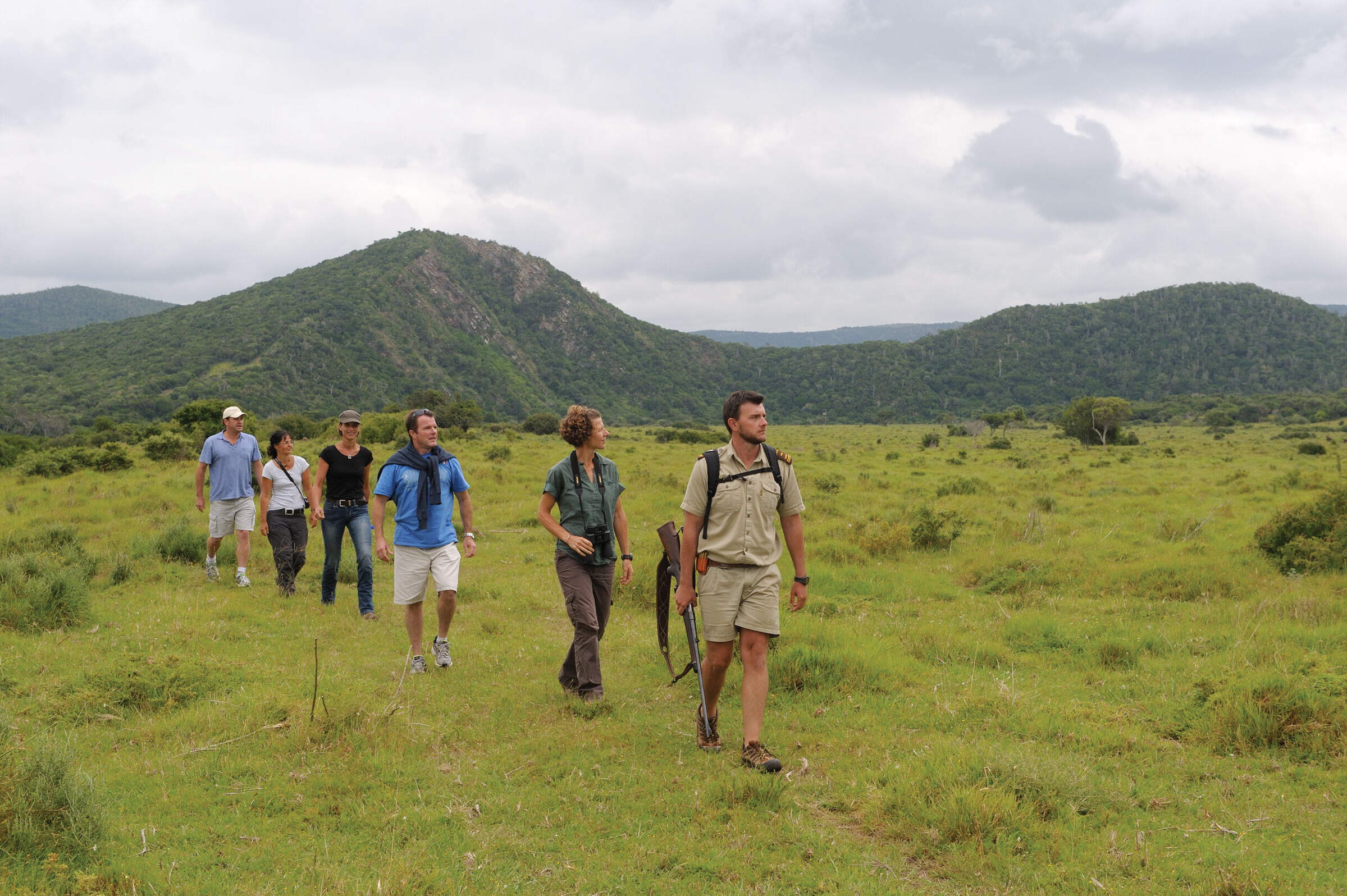
Explore Africa's most scenic trails on foot.
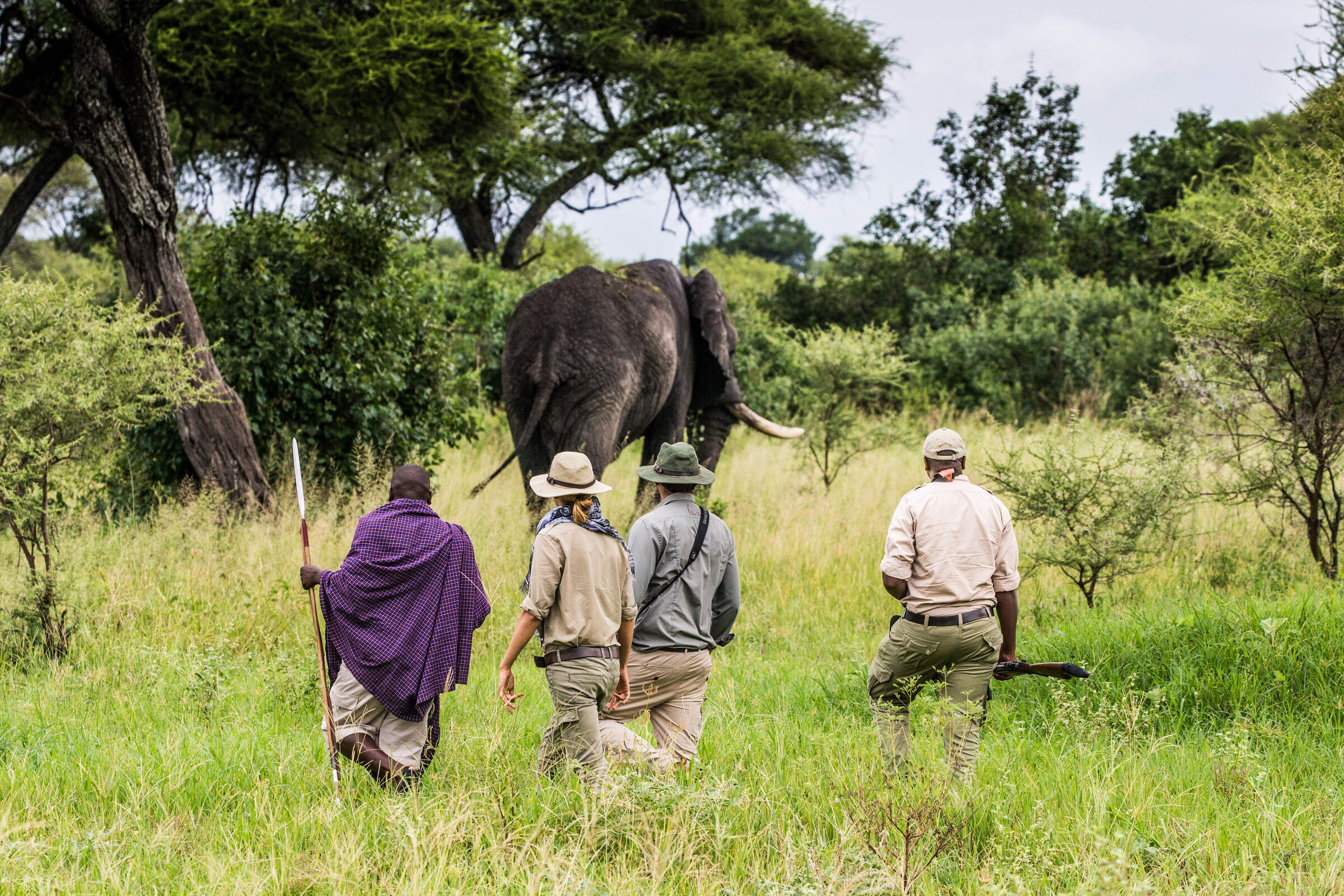
Walking safaris
Explore Africa's untouched wildernesses on foot.
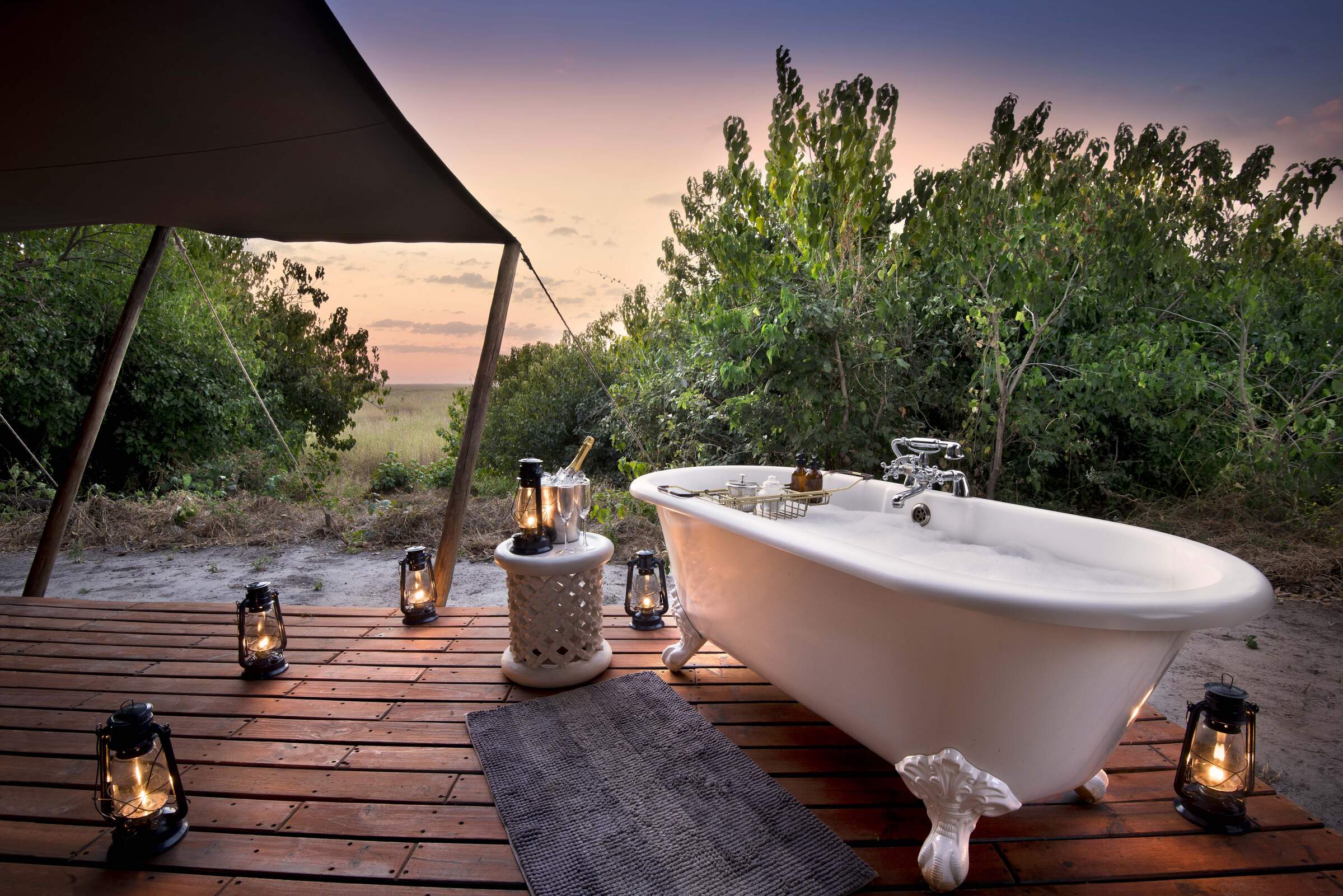
Wellness escapes in stunning locations
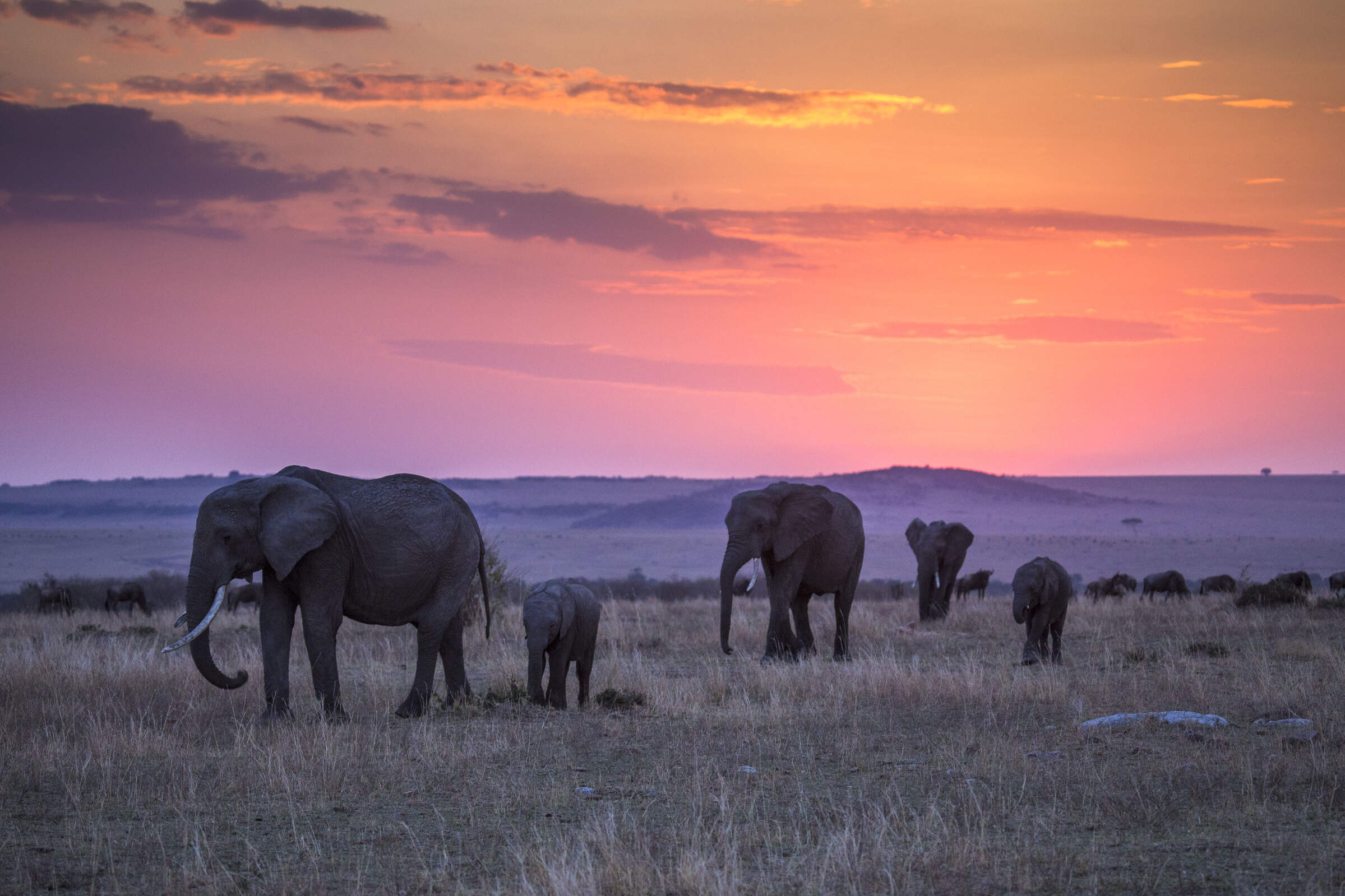
Wildlife safaris
These trips include hard-hitting game and fascinatingly elusive species alike, as well as superb guiding and a variety of diverse ecosystems.
Our other African destinations
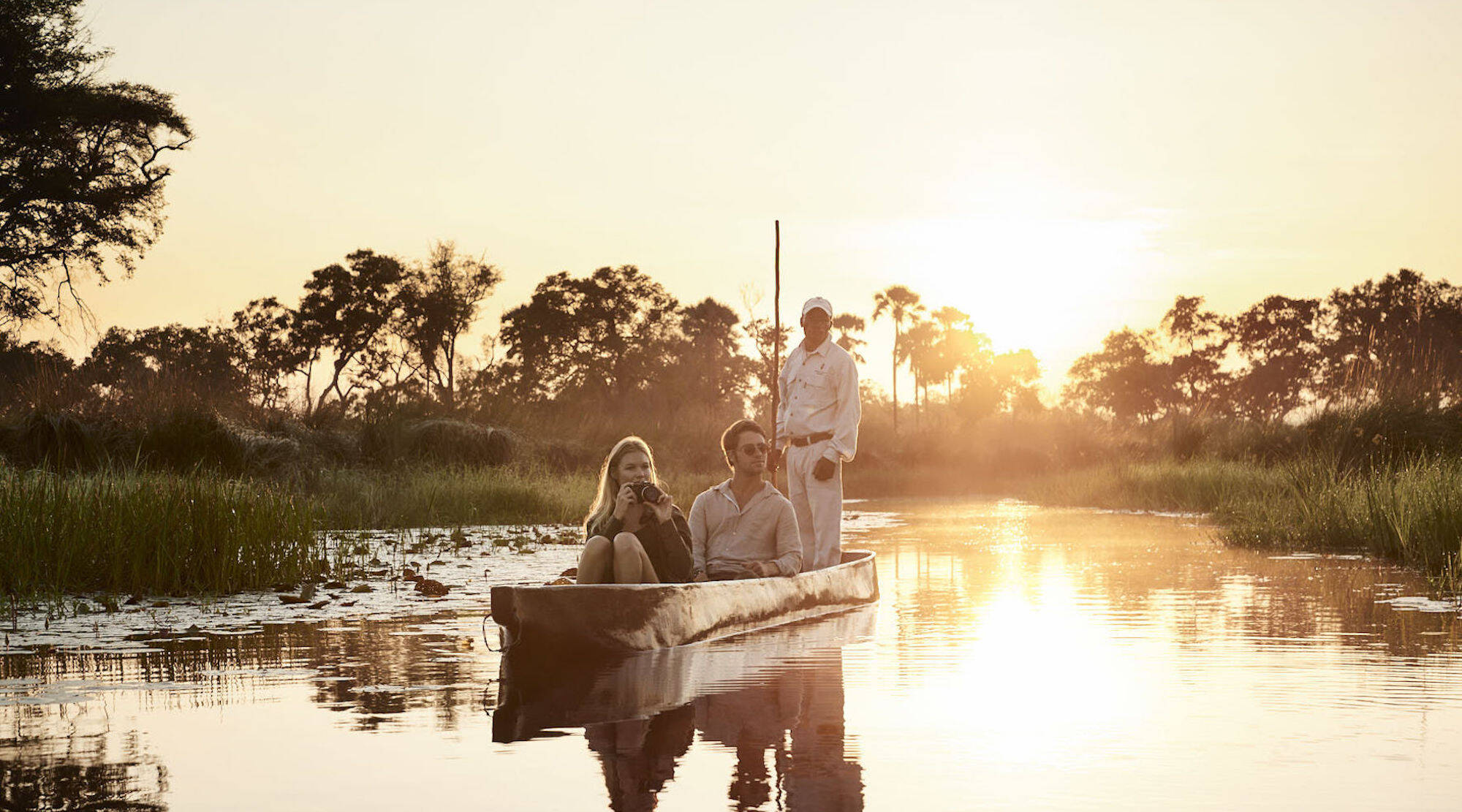
With big game, glamorous lodges and one of the greatest unspoilt wildernesses on Earth, Botswana is perhaps Africa's most exclusive safari destination.
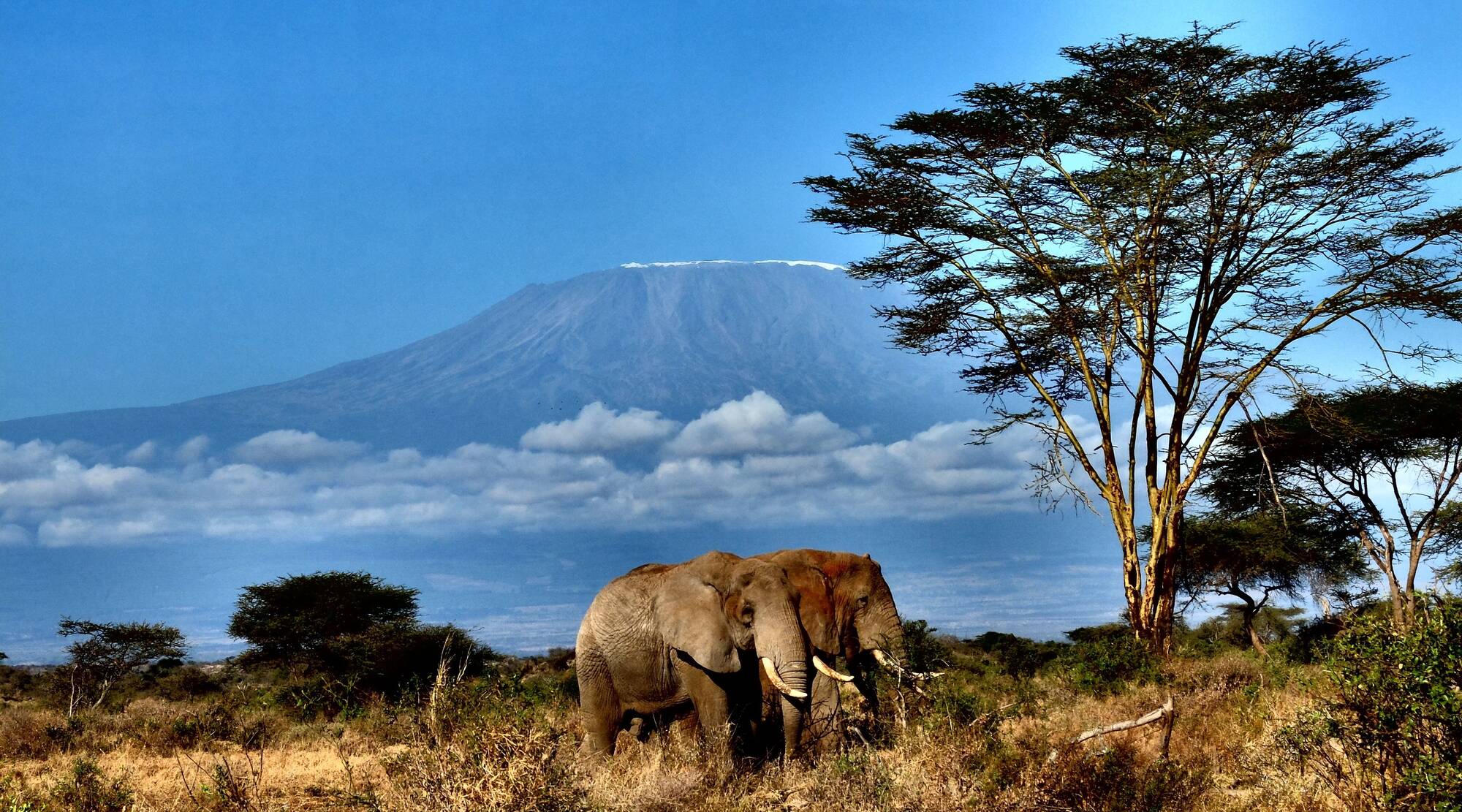
Humanity’s ancestors lived in Kenya, which is now home to people speaking 42 languages, and some of Africa’s rarest, most magnificent wildlife.
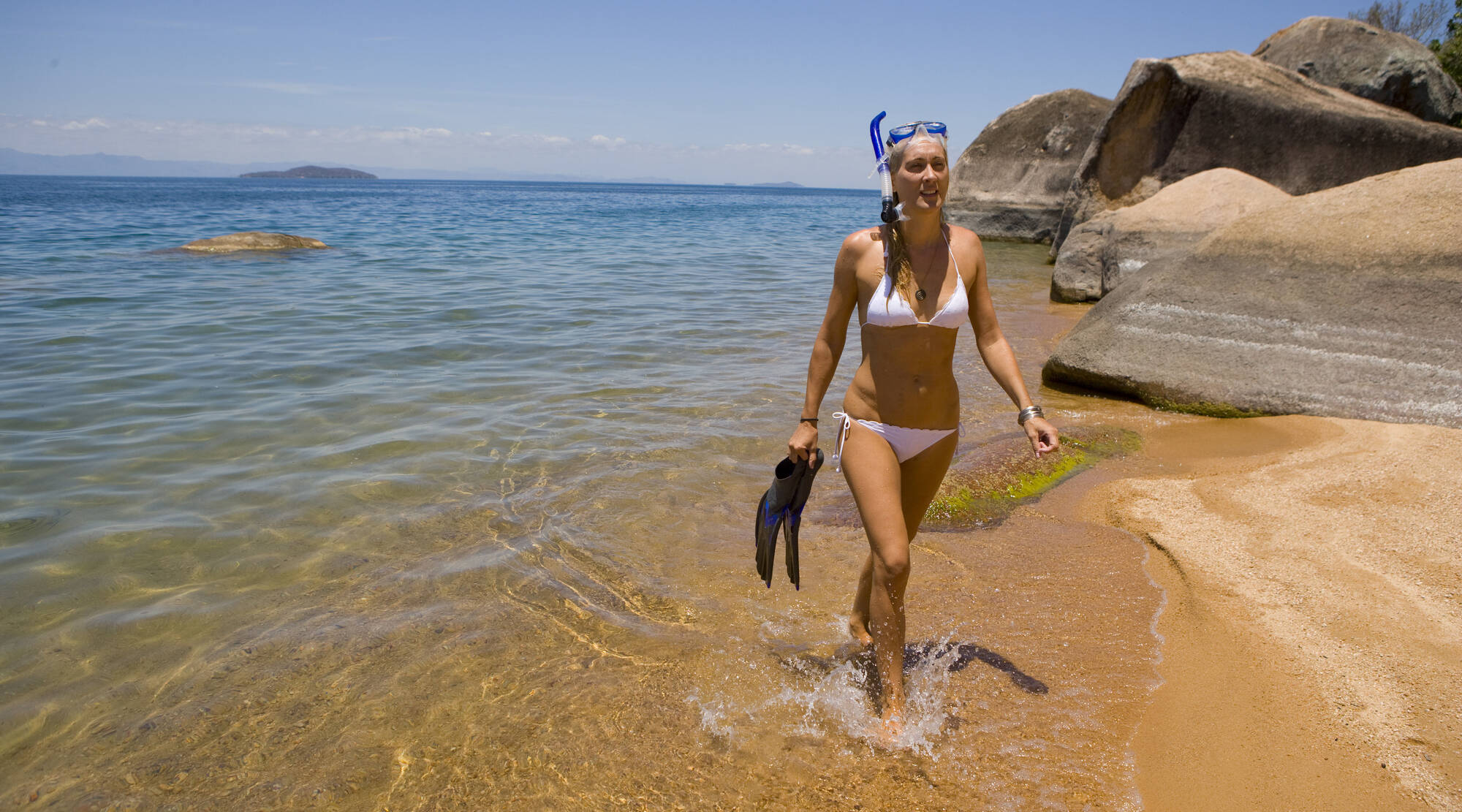
With tropical rivers, Rift Valley plateaux, the crystal-clear waters of Lake Malawi and a stunning lakeshore, Malawi invites relaxed exploration.
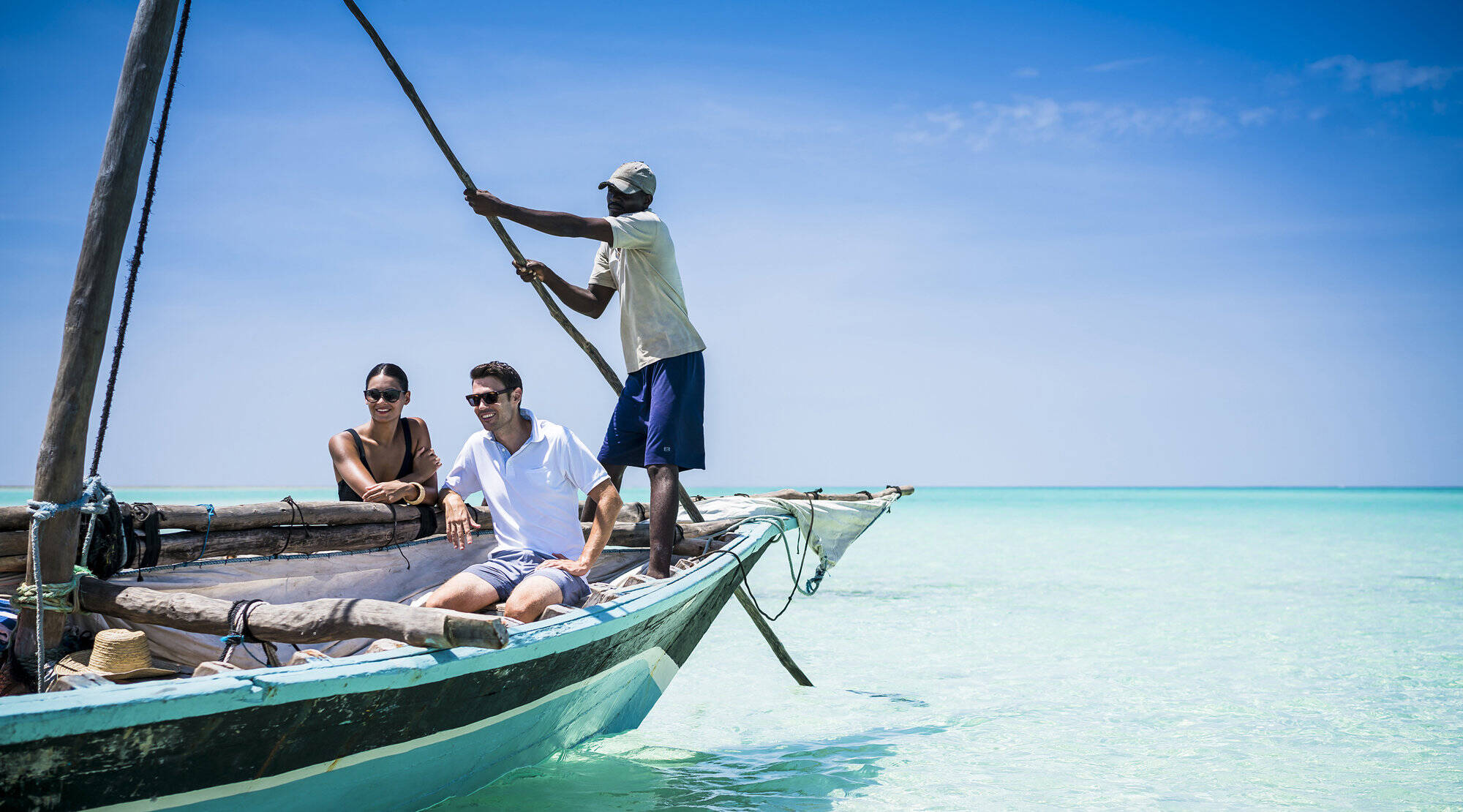
An ocean paradise protected by world-class marine parks, Mozambique’s idyllic archipelagos offer heavenly hideaways, outstanding diving and laid-back luxury.
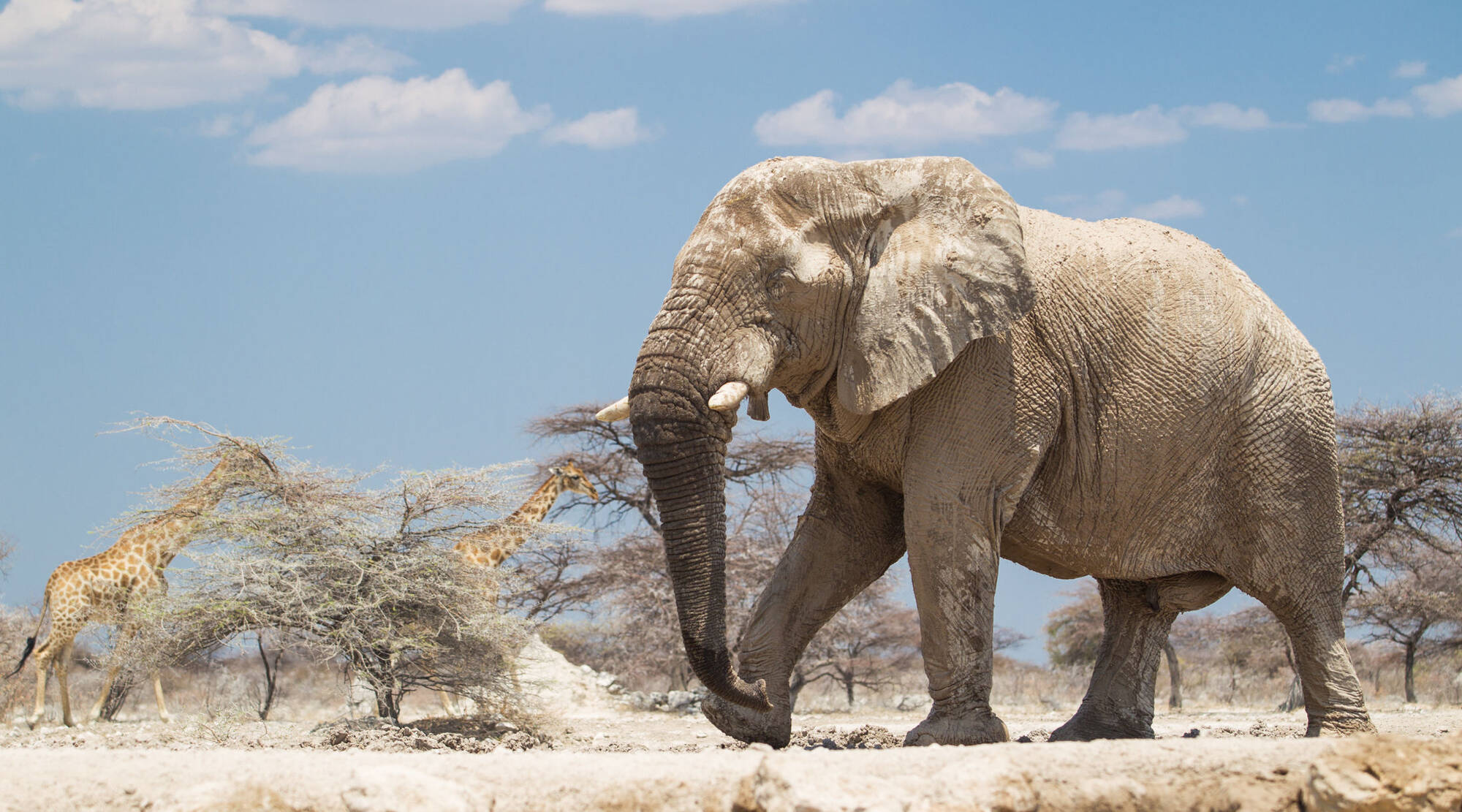
Spectacular scenery, diverse wildlife and a rich cultural heritage await discovery by air, with a guide or on a self-drive adventure.
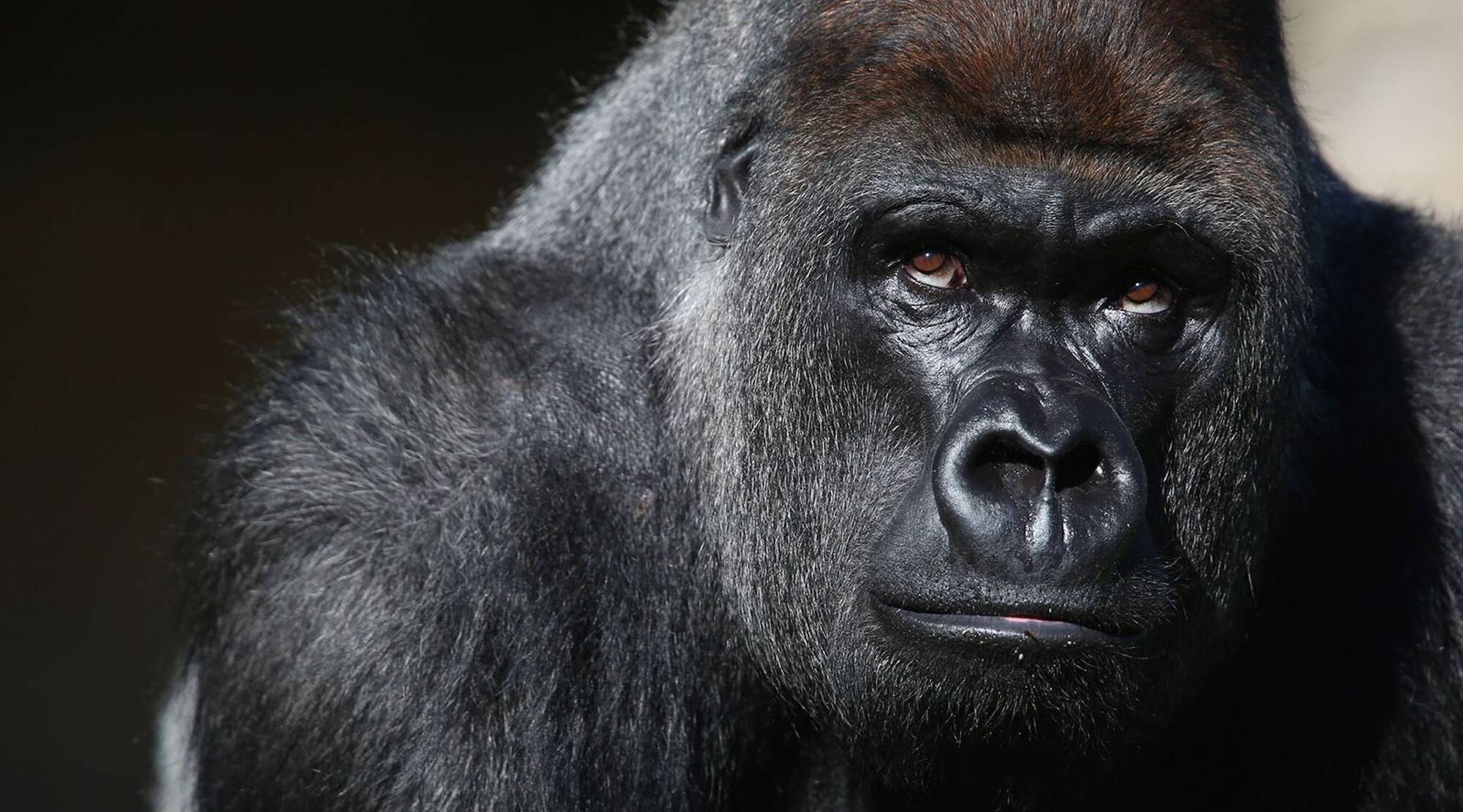
This small, mountainous country offers Africa’s best gorilla treks, other good safari options and a profound human element in every trip.
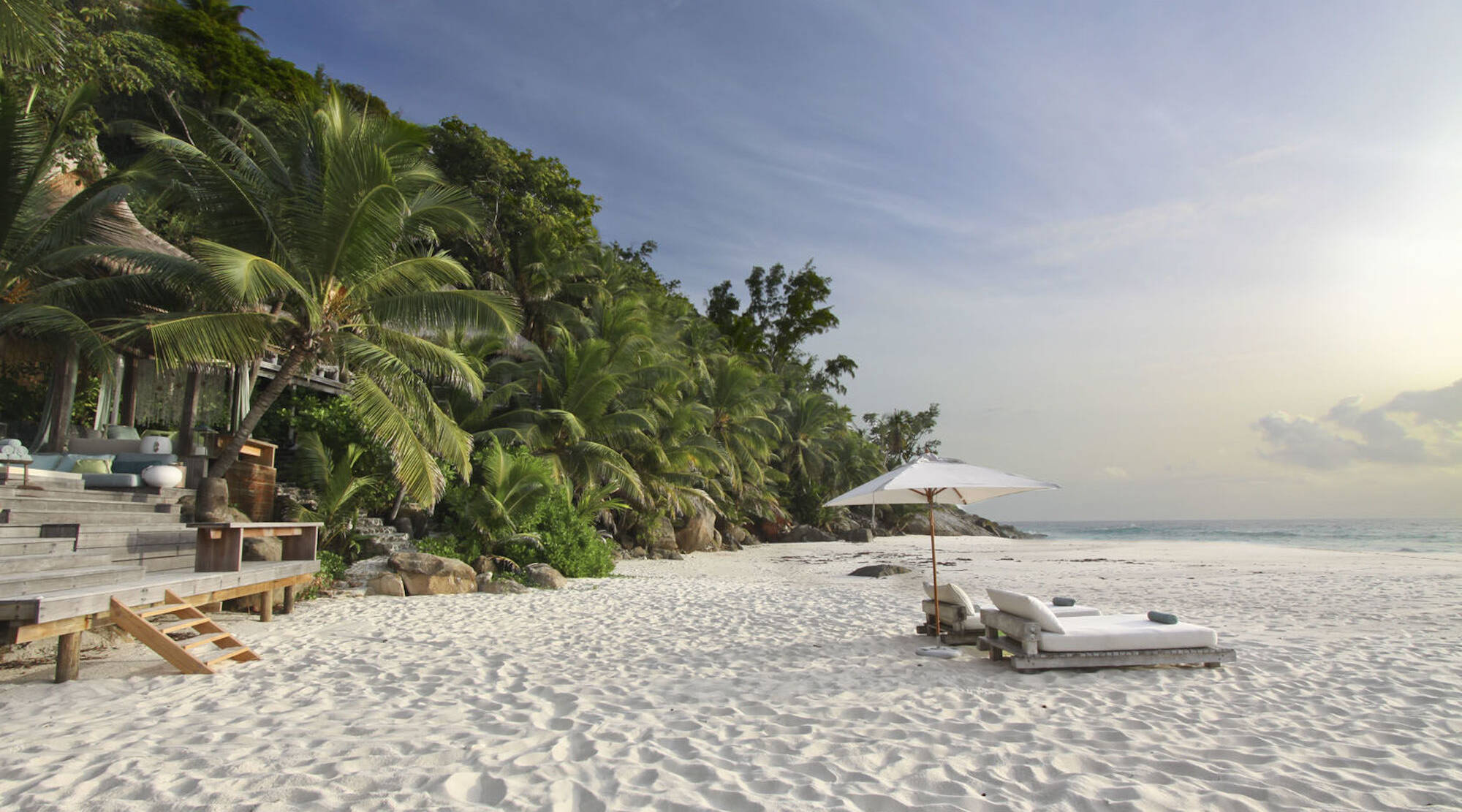
The ultimate glamorous getaway: the lush islands of Seychelles are enchantingly beautiful and stylish sanctuaries for both wildlife and ocean-lovers.
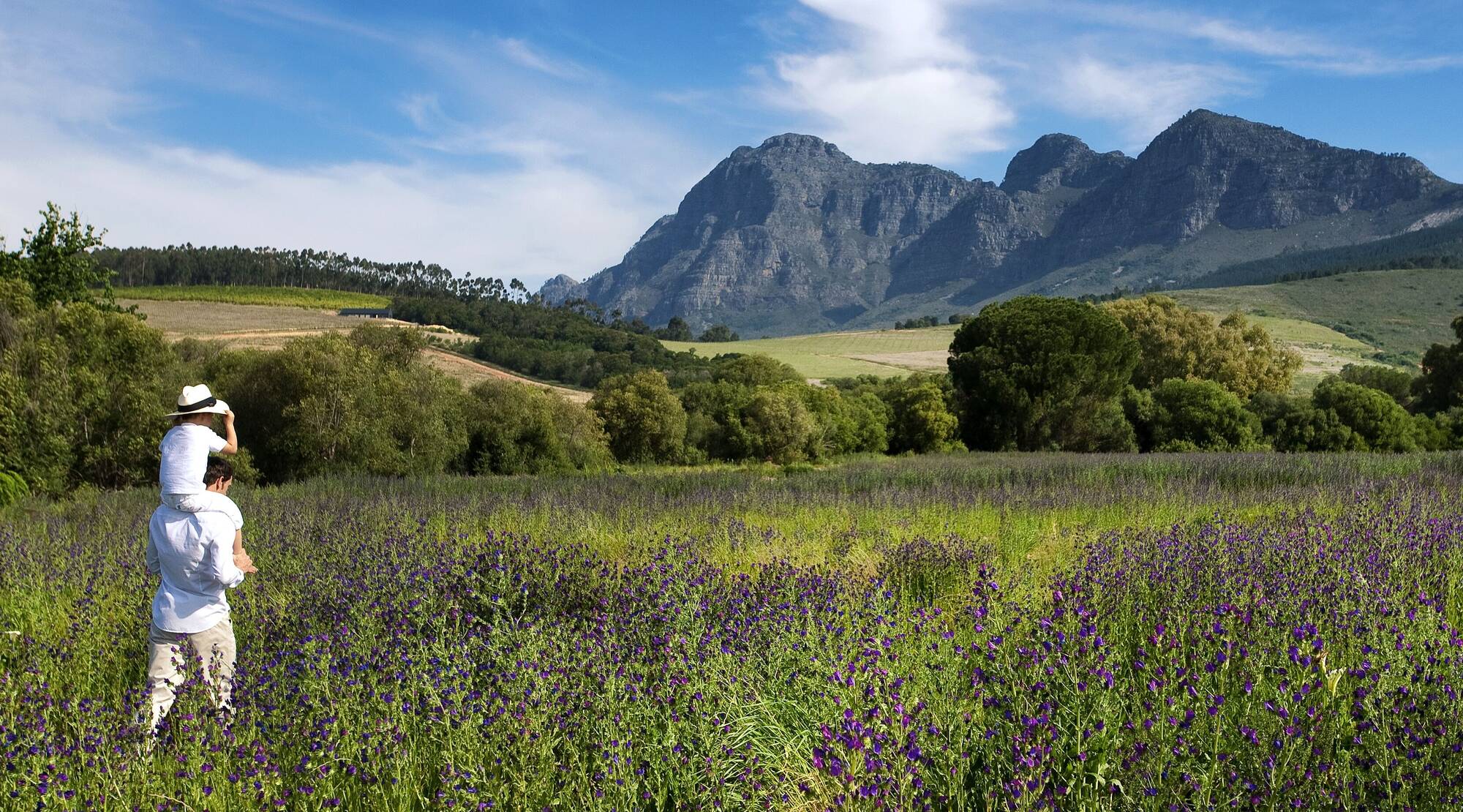
South Africa
Cosmopolitan Cape Town, world-class wineries, brilliant ‘Big Five’ safaris and spectacularly diverse scenery make South African holidays fabulously exciting and enjoyable.
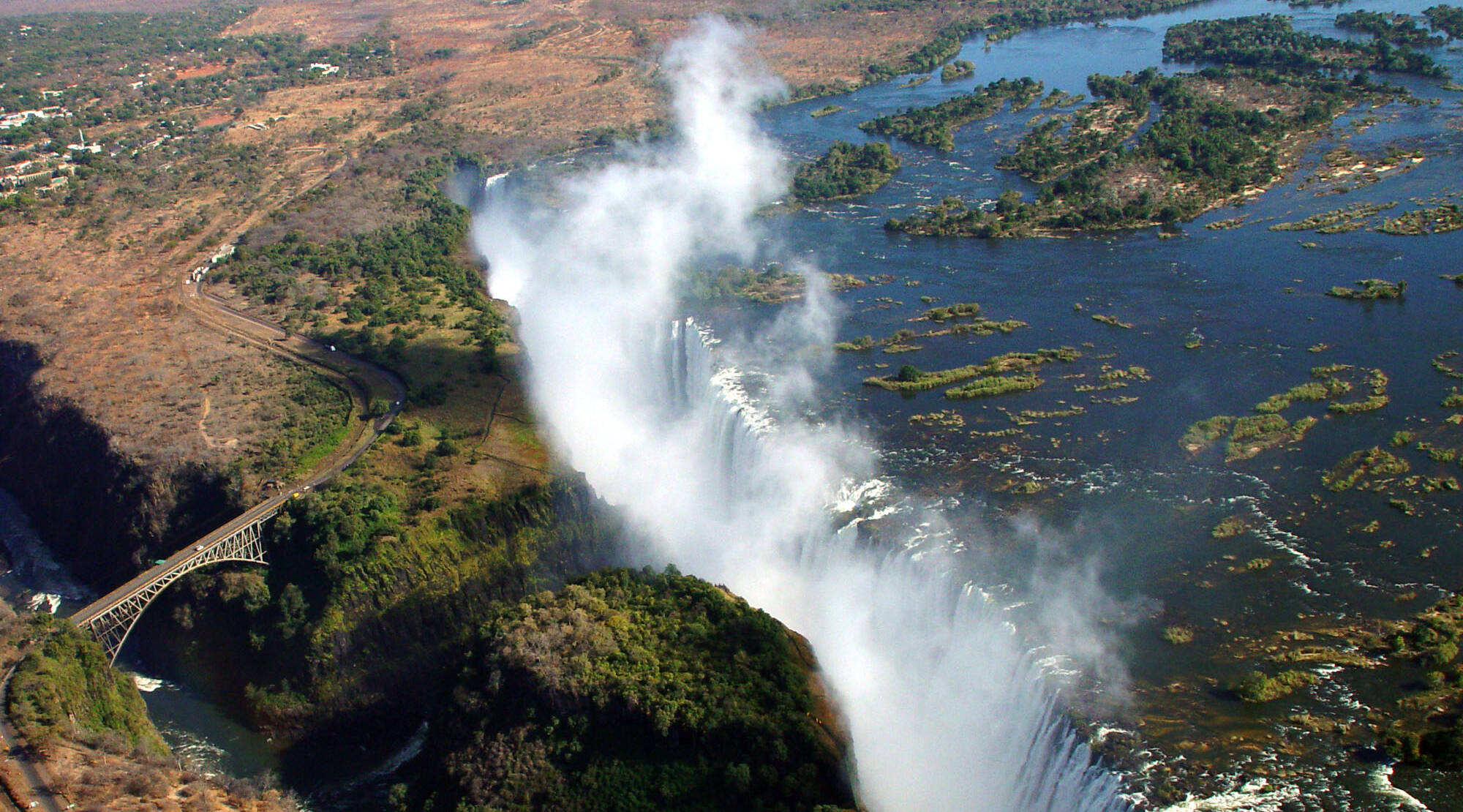
Home to walking safaris, exceptional wildlife, superb guiding and the mighty Victoria Falls, Zambia is Africa at its most alluring.
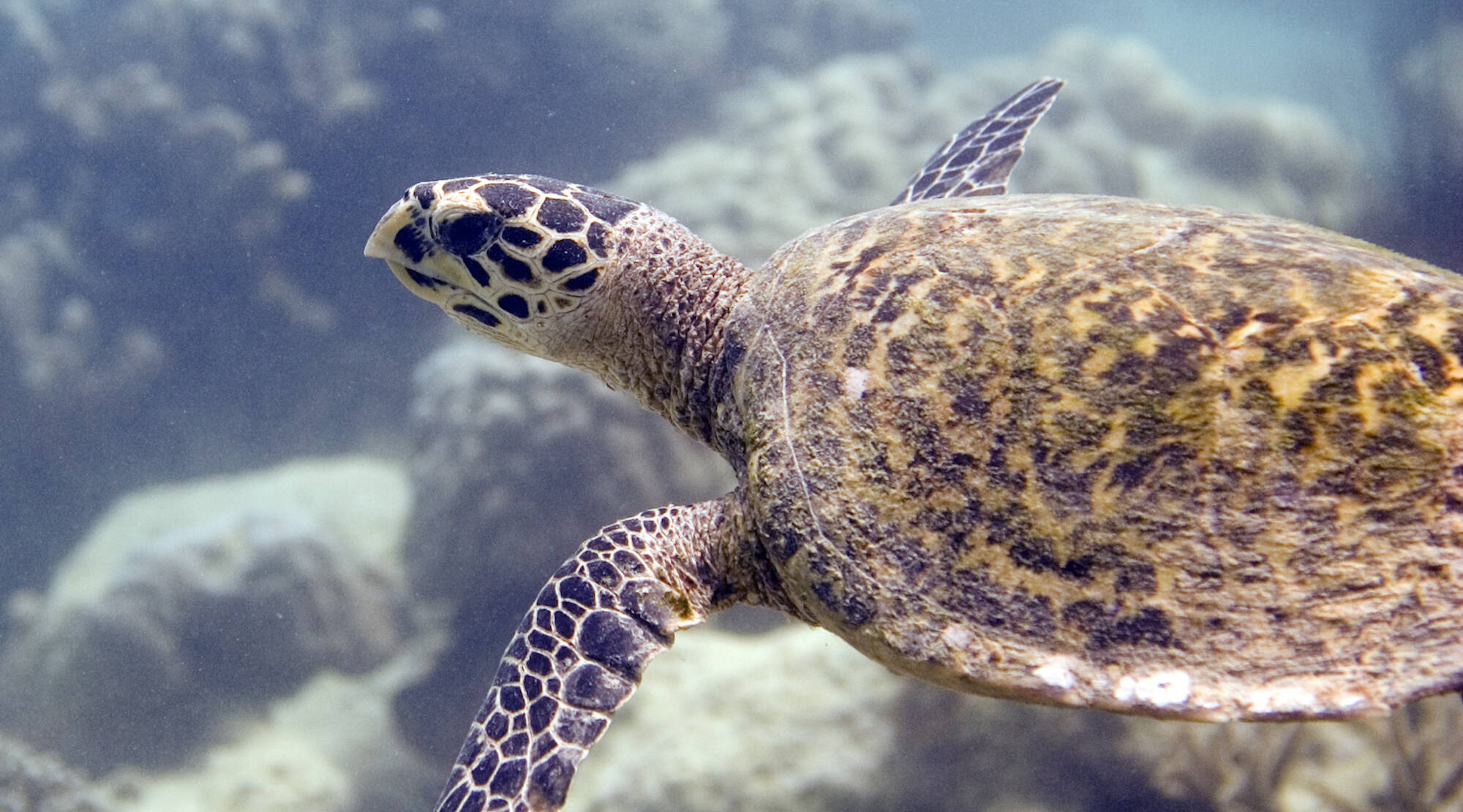
The ultimate Spice Island: Zanzibar’s mystique, marine life and chic beach retreats make it Africa’s most alluring archipelago.
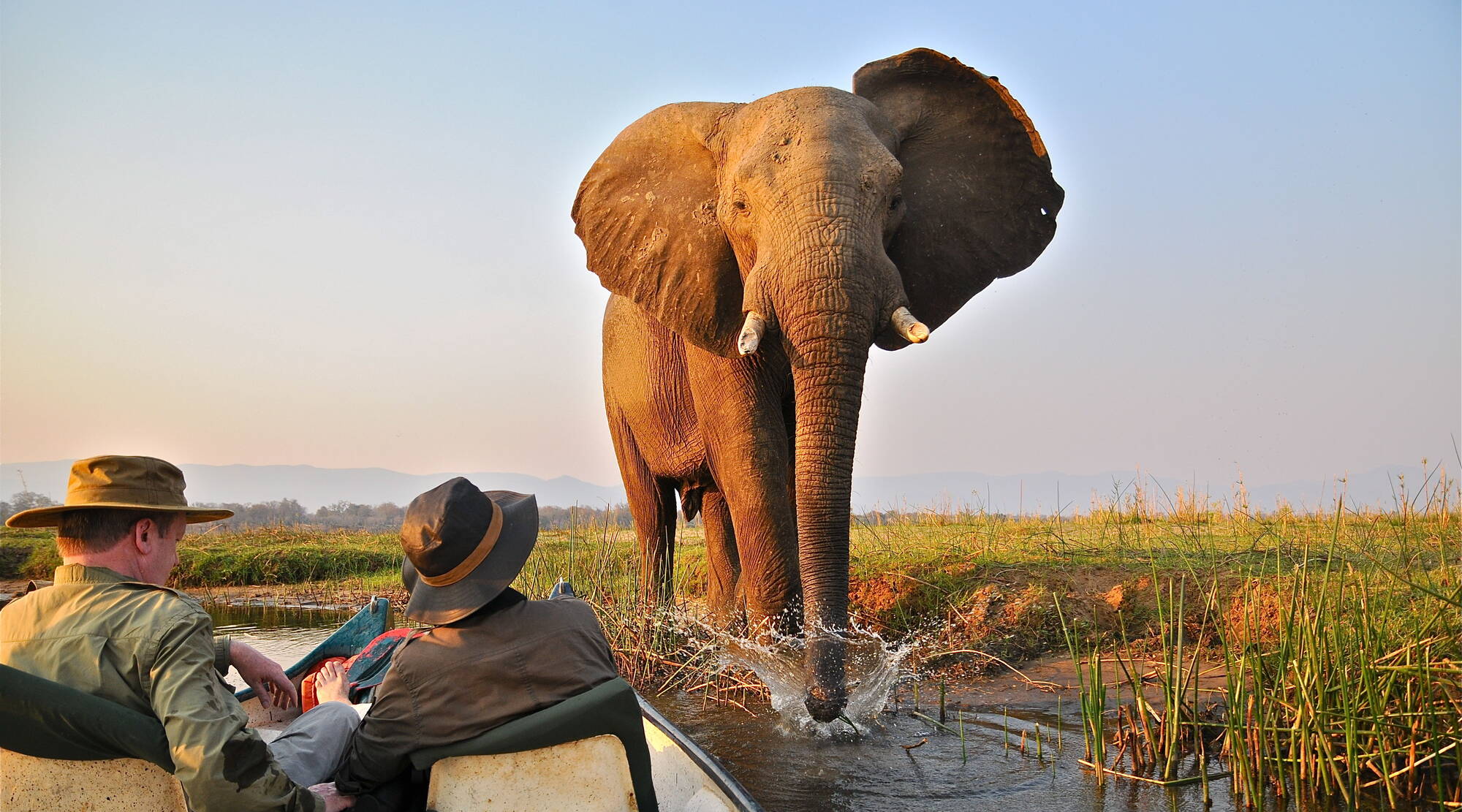
Stunning national parks teeming with game, plus Africa's finest professional guides and the spectacular Victoria Falls: Zimbabwe is enthralling.
Elephant safari in Linyanti
Login to Expert Africa
Sign in with password
Sign in with email link
New to Expert Africa? Create an account
Forgotten your details?
It's free & quick to set up
- Save your wish-list
- Send us an enquiry
- Pay online for your trip
- Subscribe to our newsletter
- Give us feedback on your trip
- Full site benefits of the site
Need some help? Talk to our team
THREE WAYS TO PLAN AND BOOK YOUR SAFARI WITH AFRICANMECCA
TRAVEL & OPERATIONS OFFICES
- United States
- United Kingdom
Want To View Regional Maps For Tanzania? Scroll Down For Details..
- Travel Guide
Learn More On AfricanMecca Safari Tier Ratings & Experiences
- NORTH - MAPS
- EAST - MAPS
- SOUTH - MAPS
- WEST - MAPS
1. Serengeti National Park - View Map
2. ngorongoro crater - view map, 3. tarangire national park - view map, 4. lake manyara national park - view map, 5. arusha national park - view map, 6. mount kilimanjaro national park - view map, 7. rubondo island national park - view map, 8. lake eyasi - view map, 9. lake natron - view map, 10. lake victoria in tanzania - view map, 11. arusha city - view map, 12. moshi - view map, 13. mwanza - view map, 1. dar es salaam - view map, 2. zanzibar - view map, 3. bagamoyo - view map, 4. kilwa - view map, 5. pemba - view map, 6. mafia - view map, 1. selous game reserve - view map, 2. ruaha national park - view map, 3. mikumi national park - view map, 1. gombe stream national park - view map, 2. mahale mountains national park - view map, 3. katavi national park - view map, 4. lake tanganyika - view map, 5. kigoma - view map, contact and talk to our safari experts today to kick-start your tour planning process.
Request Tanzania Custom Or Tailor-Made Safari Pricing Based On Your Specific Travel Dates At Your Preferred Safari Tier Camp Or Lodge
Read More +
Safari prices for tanzania.
Review Tanzania detailed itineraries and prices of our recommended safaris with the option of customizing your Africa tour based on your preferences and needs.
AFRICA TRIP IDEAS FOR TANZANIA
Review experiences available in Tanzania from photo wildlife safari, chimpanzee tour, bush walk, family to honeymoon beach vacation, snorkeling, diving etc.
PARKS & RESERVES IN TANZANIA
Review information on wildlife parks and reserves in Tanzania i.e. Serengeti, Ngorongoro, Tarangire, Ruaha, Manyara, Selous, Katavi Gombe, Mahale and more.
ACCOMMODATIONS IN TANZANIA
Review information on safari camps, lodges, city hotels, beachfront resorts in Tanzania's pristine wilderness, cities, Swahili coastal shores and idyllic islands.
BEST TIME TO VISIT TANZANIA
Review details on the best time to go to Tanzania to visit its various wildlife outback, lakes, rivers, beaches, islands, mountains, forests and other wildernesses.
BEACHES & ISLANDS OF TANZANIA
Review Tanzania's unspoiled white, sandy coastal beaches and idyllic islands backed by tropical forests that are lapped by the azure waters of the Indian Ocean.
TANZANIA COUNTRY PROFILE
Review country information and travel tips on Tanzania i.e. climate, history, geography, culture, entry requirements, what to pack and wear, tipping guide and more.
CITY DAY TOURS FOR TANZANIA
Review city tour recommendations on full or half day options in Dar es Salaam, Arusha, Zanzibar. Experiences can be customized around your vacation travels.
AFRICAN SAFARI PRICES
Check out safari prices and itineraries for parks and reserves in other African countries e.g. Kenya, Uganda, Rwanda, Botswana, South Africa, Zambia etc. Namibia, Mozambique, Malawi and Zimbabwe are available on request.
AFRICANMECCA REVIEWS
AfricanMecca's professionalism and care understands that what distinguishes Africa is its authenticity, the land, people and wildlife who do not share our world of fashion and fanfare that distinguish so many travel companies today.
Cyril Christo & Marie Wilkinson, Conservation Photographers, Authors & Wildlife Documentary Producers - USA
Jambo Raza, We all had a fantastic time on our Tanzania safari. Accommodations were excellent and we loved our guide - Rodgers. We will definitely recommend this safari to others. Thanks for all your help making the arrangements.
Dr Thomas Davis, Methodist Hospital, Minnesota, United States
AfricanMecca Safaris created a remarkable honeymoon tailored to our interests and desires. The quality of service and delivery of experience was unsurpassed. I highly recommend AfricanMecca Safaris to honeymooners, families, or any traveler.
Noorin & Jason Nelson - Maryland, United States
Thanks again to you for arranging a wonderful trip for us. Everything was great from the fantastic wildlife, the scenery, the people, the accommodations and the food. The safari was everything we had hoped for.
Liz and Gunnar Kristiansen - Ontario, Canada
I booked my safari holiday through AfricanMecca. They were the most helpful company I have ever dealt with and I work within the travel industry. I had the most amazing time. The holiday went as clockwork with no hitches anywhere.
Shelley Roberts - Hemel Hempstead, United Kingdom
We have returned from our African adventure and would like to thank you very much for your part in making this such a wonderful experience. We were lucky enough to time the Great Migration from the Serengeti, which was amazing.
Denise Paterson - Belmont, Australia
We had an absolutely amazing trip in Arusha, Serengeti and Gombe - everything went smooth as silk. Thank you so much Raza for making this trip, the trip of a lifetime. We had an absolutely brilliant time.
Tiffany Heitz & Lesley Smith - California, United States
East africa safari booking & tour holiday idea tanzania.
When visiting Tanzania, we recommend combining your safari to Serengeti , Ngorongoro Crater , Tarangire and Lake Manyara . You can also day trek or climb the highest mountain in Africa - Kilimanjaro . You may optionally extend out to Southern or Western parks like Nyerere (Selous) , Ruaha , Katavi or Mahale - Gombe ending with a beach vacation and Swahili cultural tour in the exotic spice island of Zanzibar , Pemba , Mafia or Fanjove .
Kickstart Your Safari Planning
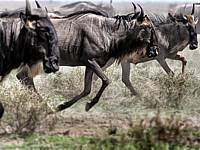
SAFARI PRICES
Find Tanzania Safaris & Costs By Safari Tier Experiences
Safari Room Rate & Hotel Price Guide For Tanzania
Tanzania Reviews For Camps, Lodges, Beach & City Hotels
Park, Cities, Beach & Island Map Locations In Tanzania
PHOTO GALLERY
Images & Pictures For Travel Destinations In Tanzania
VIDEO GALLERY
Tanzania Accommodation & Tour Destination Videos
ARE YOU PLANNING TO BOOK AN AFRICAN SAFARI TO TANZANIA?
Do You Need Knowledgeable, Experienced & Specialist Guidance For Your Travels In Tanzania? Let Us Help Plan Your Trip Itinerary Correctly
EXPLORE MORE ON NATIONAL PARKS, CAMPS, LODGES, BEACHES & RESORTS IN TANZANIA
Safari tier ratings.
Understand Beach Tier Ratings & Experiences
TANZANIA PARKS & RESERVES
Tanzania Beach & Island Planning Guide
TANZANIA LODGES & CAMPS
Beachfront Hotels & Resorts In Tanzania
Top 10 Trip Reasons For Tanzania Vacations & Holidays
HAVE YOU VISITED EASTERN AFRICA FOR A SAFARI IN TANZANIA?
Write A Travel Or Tourist Trip Review To Share Your Experiences
TANZANIA TRIP IDEAS
Safari Trip Ideas For Tanzania
AFRICA SAFARI PRICES
Check Our Africa Travel Guide
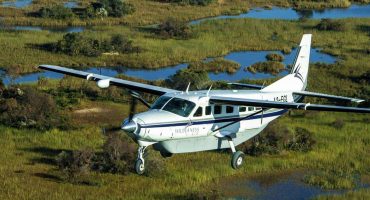
Baggage Guidance & Restrictions On Flying Safaris In Africa
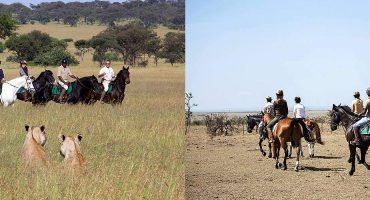
Masai Mara Horseback Riding Safari In Kenya With AfricanMecca

Times Square New York Hosts Kenya Tourism Board & Wilderness Safaris Meet Up
- Company Profile
- Why Travel With Us
- Our Safari & Tour Team
- Tier Ratings
- Awards & Press
- Customer Reviews
- SEARCH For Africa - Sustain & Conserve
- Travel Agent Support
- Jobs & Careers At AMS
- Newsletter Signup
- Contact Details
- Tanzania Travel Guide
- Kenya Travel Guide
- Uganda Travel Guide
- Rwanda Travel Guide
- Botswana Travel Guide
- South Africa Travel Guide
- Zambia Travel Guide
- Zanzibar Travel Guide
- Safari Trip Ideas
- Beach Trip Ideas
- Mountain Climb Trip Ideas
- Itinerary Trip Ideas
- Explore Park & Reserves
- Accommodations In Africa
- Read Trip Reviews
- View Photo Gallery
- View Video Gallery
- Read Our Blog
- Safari Prices & Itineraries
- Beach Prices & Itineraries
- Trek Prices & Itineraries
- City & Day Tours Prices
- Room Rate Guide
HOW TO CONTACT US

Touropia Travel
Discover the World
12 Most Beautiful National Parks in Tanzania
By Mike Kaplan · Last updated on March 4, 2024
Tanzania is a feast for the senses. It is unparalleled for its natural beauty, unique wildlife viewing, and rich culture. The landscape is shaped by extremes. Where mountains, lakes, grasslands, and rainforests are not uncommon to see within the same area. Also safaris in Tanzania are some of the best in the world, with most of them never going without seeing one of the “Big 5” of game animals: lions, leopards, rhinoceros’, elephants, and buffalo.
Alongside these wild animals, the Maasai graze their livestock. Making themselves one of the few groups in the world to uphold their traditional, nomadic lifestyles in our modern times.
Therefore it comes as no surprise that tourism is on the rise in this beautiful East African country and no visit is complete without a visit to some of the stunning national parks in Tanzania. Each one offers its own unique natural spectacles, adventure activities, and cultural experiences that will awe-inspire even the most seasoned traveler.
Map of National Parks in Tanzania
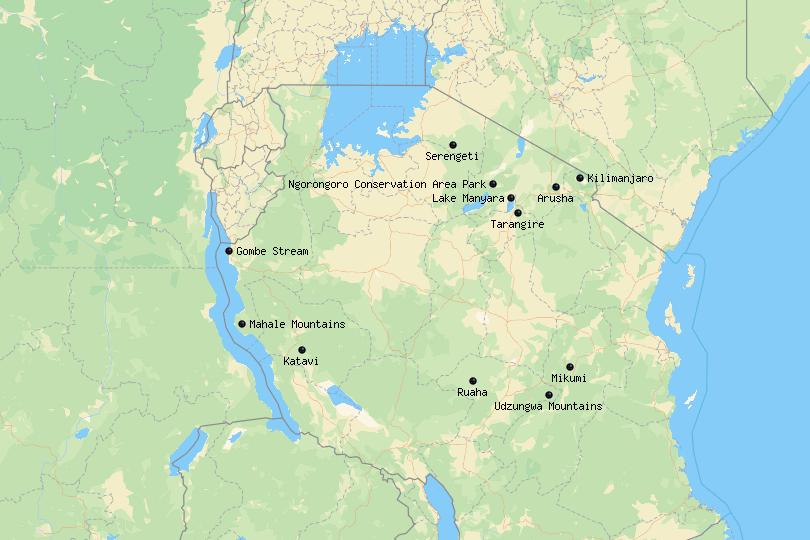
12. Arusha National Park
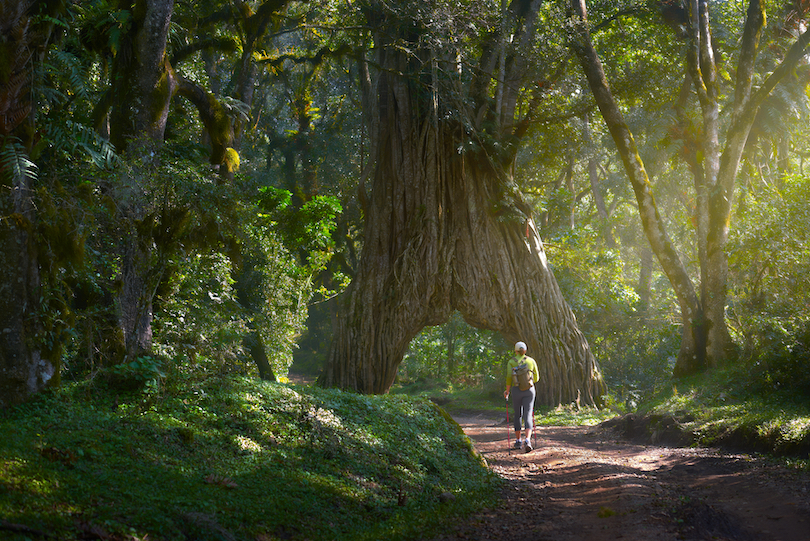
Although somewhat small in comparison to other national parks in Tanzania, Arusha packs a punch. It has truly varied vegetation made up of grasslands, rainforest, and alpine areas and thanks to these conditions it is home to incredible wildlife diversity.
One of Africa’s largest mountains, Mount Meru occupies the space alongside Africa’s largest concentration of giraffes. Animals that are regularly seen include waterbucks, buffalos, elephants, hippos, flamingos, and monkeys. However, due to the size of the park, no more than a few hours are needed to see the entirety of it and can be explored via a walking, or canoe safari. Most travelers stopover en route to larger parks.
11. Mahale Mountains National Park
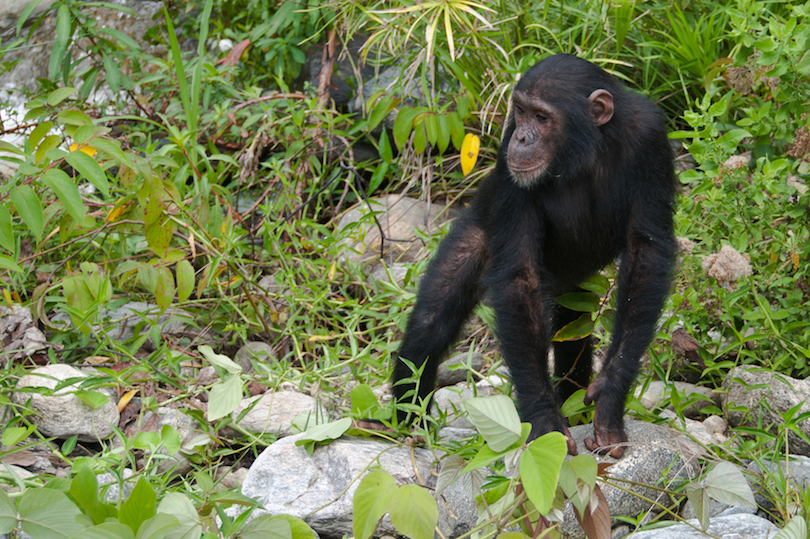
Mahale is always cited for having a couple of unusual characteristics which make this park extra special. The first of which is that this park is a chimpanzee sanctuary and is home to almost 2000 wild chimpanzees.
It is surrounded by the beautiful Mahale Mountain range, which the local people worship as being scared, and is nestled onto the banks of Lake Tanganyika. The lake itself is the longest, second deepest lake, and the least polluted freshwater lake in the world. The beach on the banks of Lake Tanganyika is an incredible spot to watch the sunset dip below the horizon.
10. Katavi National Park
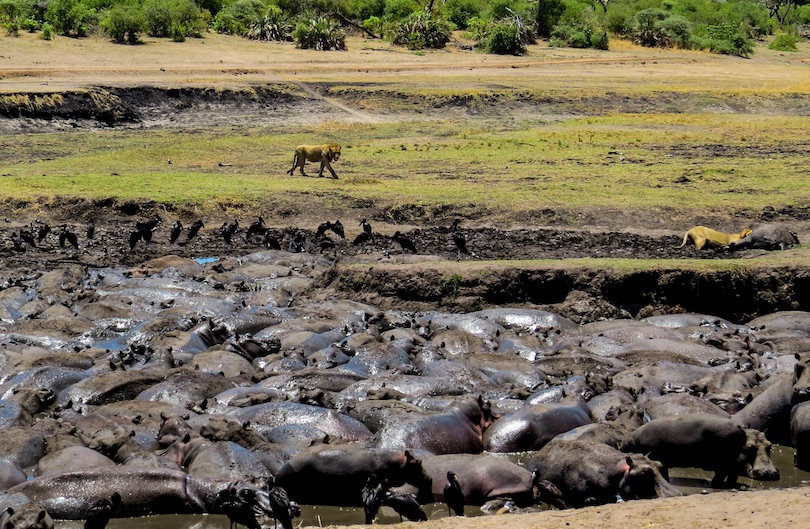
Located in Western Tanzania, Katavi is absolutely mesmerizing in the dry season. During this time, the Katuma and Kapapa rivers are the only water source for miles around so thousands of animals congregate here for a sip. Visitors are greeted by hundreds of crocodiles snoozing in the mud, as pods of massive hippos huddle around water sources, and zebras appear by the thousands.
It also remains one of the best places in Tanzania to see interactions between lions and buffalos. Due to its remoteness, there are few visitors, so tourists and locals are treated to a relatively untouched wilderness. This is truly an exceptional place simply waiting to be discovered.
9. Tarangire National Park
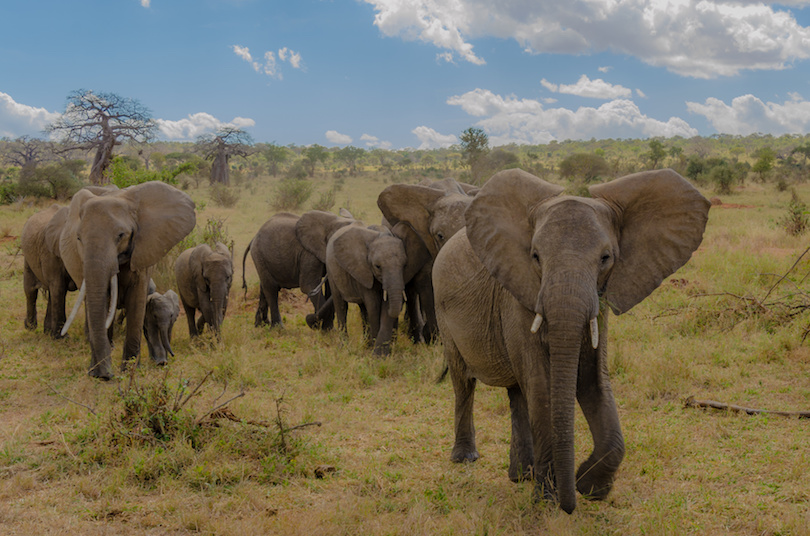
Tarangire is most well-known for its yearly elephant migration of over 3000 elephants but the park offers so much more than that! This quiet park offers year-round opportunities to view four of the big five, and the guides in the region are so knowledgeable about the migration patterns of the animals within the park that you will no doubt get a glimpse at these exotic creatures up-close.
No matter the time of year! More so, the great baobab trees and large termite mounds that dot the landscape are like something out of a fairytale. As if it couldn’t get better, this park emulates the importance of national parks in Tanzania as currently, it is home to the fringe-eared oryx, greater kudu, and Ashy Starling. All of which are greatly endangered and can only be found here in Tanzania in the Tarangire National Park.
8. Lake Manyara National Park
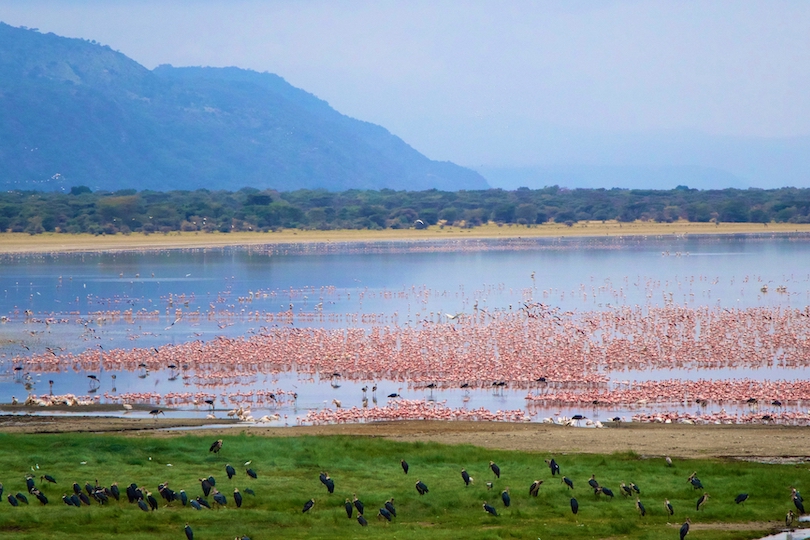
Ernest Hemingway remarked that this park had the loveliest lake in Africa, and he may have been right. Manyara Lake is really stunning. It covers one-third of the park size, and despite its high salt content, it is safe for animals to drink so it remains an essential life source for many animals in the area.
It is also the main hangout spot for wild flocks of flamingos, and other bird life. However, truly unique to Lake Manyara National Park is their resident tree-climbing lions. Researchers have still not come to a conclusion as to why these lions habitually laze among the treetops, but nevertheless, it is an extraordinary sight to see.
7. Ruaha National Park
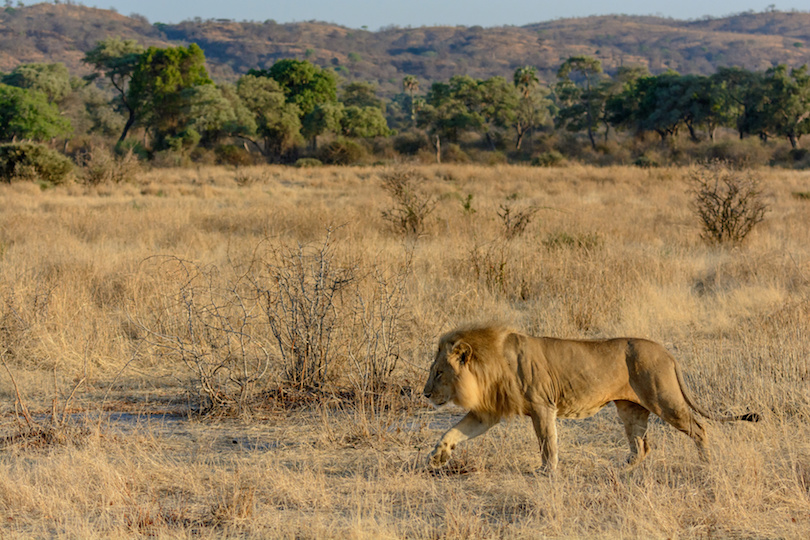
Ruaha National Park became Tanzania’s largest national park when it expanded its borders in 2008. Today, it holds 10% of the worlds lion population and Tanzania’s largest elephant population. The park’s landscape is made up of giant mountains that lead into vast grasslands, rocky outcrops, and a network of rivers. The largest of which, the Great Ruaha River, the park is named after.
Visitors to the park are captivated by the lands red soil and legendary baobab trees as well as the large population of lions. Often prides of up to 25 lions are seen, sometimes attempting to take down a buffalo. Again, this park is relatively untouched by tourism but because of this, it is one of the best examples of how Africa has been for millenniums.
6. Gombe Stream National Park
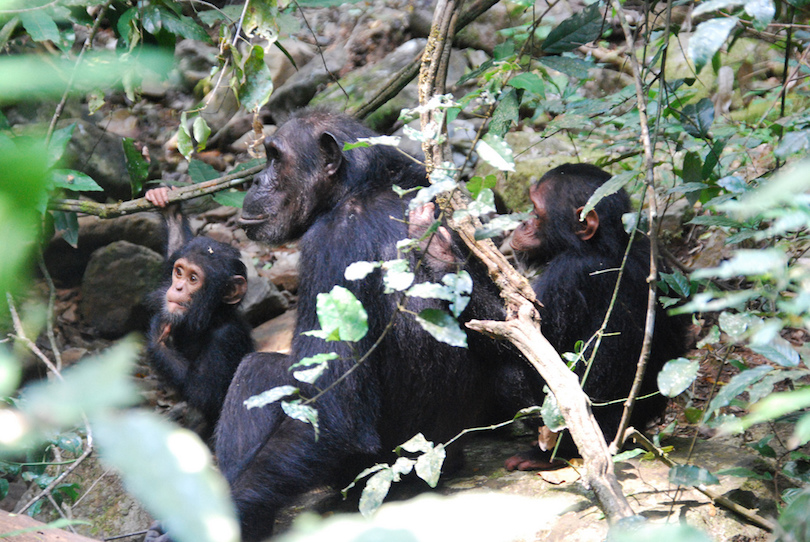
Gombe Stream National Park was made famous by Jane Goodall who took up residence here during her Chimpanzee research in the 1960’s. It features steep forested mountains that cascade down to Lake Tanganyika, grasslands, and warm tropical rainforests.
This park is one of the best places on earth for up-close encounters with our closest relative but also has incredibly diverse flora, and fauna to observe. The park is only accessible by boat, and visitors can snorkel in this incredible lake for a look at some of the 2000 species of vibrant fish that call it their home.
5. Mikumi National Park
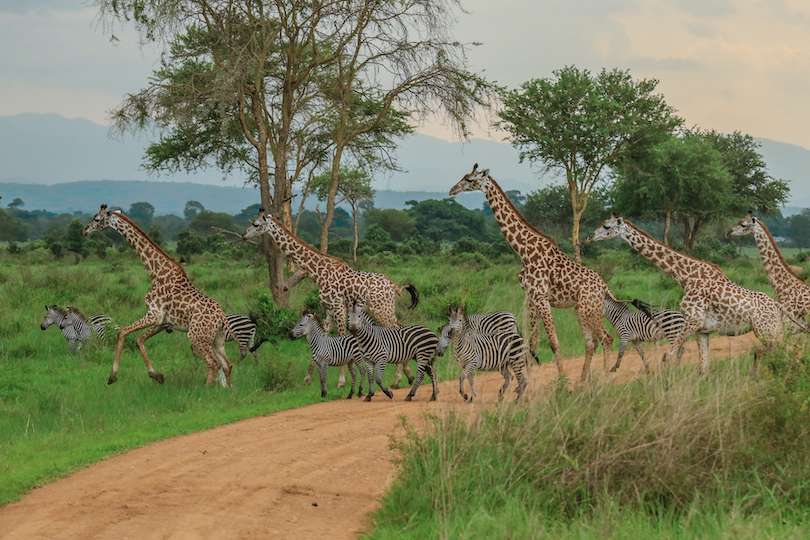
Also known as the second Serengeti Plains, the open horizons of this park make wildlife viewing a highlight of any visit. The grounds support impressive herds of zebra, wildebeest, buffalo and impala.
While legendary giraffe, elephant, and lion sightings are common. The landscape is scattered with the famous baobab trees, black hardwood trees, and grassy plains. And tucked in between three mountains ranges: The Uluguru, Rubeho, and Lumango Mountains ranges. Likewise, it is home to several primate research studies most notably the yellow baboon field study.
4. Udzungwa Mountains National Park
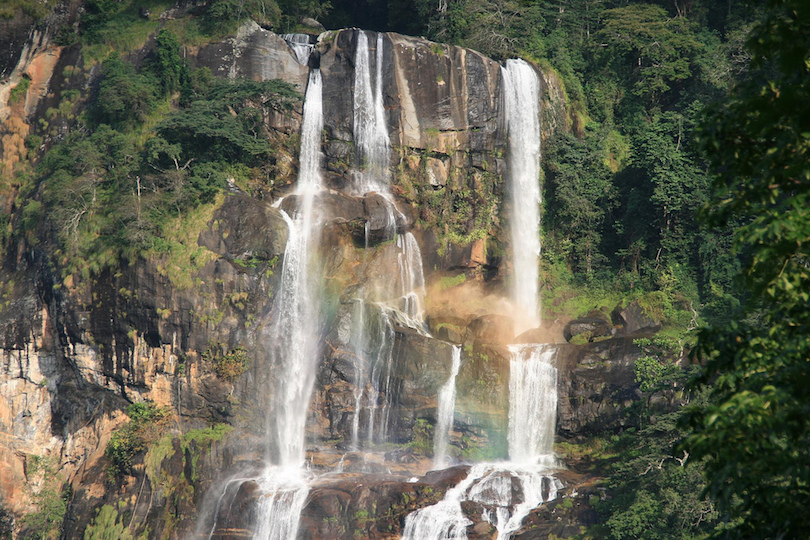
This gorgeous national park boasts incredible flora and fauna. Initially, when the Eastern Arc mountains were created, they were covered with rainforest. However, throughout a colder and drier period about 10 million years ago the area towards the base of the mountains was transformed into a savanna leaving the ranges as rain forested “islands”. This isolation has allowed for incredible biodiversity including 4 epidemic primate species, one of which was only discovered in the 1970s.
There are a number of great treks ranging in length and difficulty, as the best means to experience this park. Some of which pass by stunning waterfalls, and small pools to go for a dip in.
3. Ngorongoro Conservation Area Park
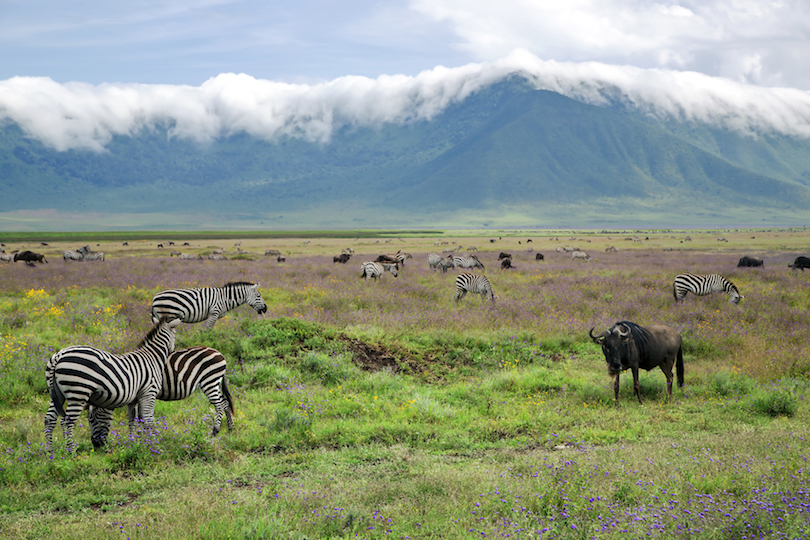
There are few places on earth quite like this park. It houses the “Big 5” animals, deep volcanic craters, and is home to the semi-nomadic Maasai people. The most well-known crater in Africa, the Ngorongoro Crater, is one of the largest of its kind and a true marvel to behold. The landscape consists of a mix of lakes, grasslands, swamps and wooded areas where domesticated Maasai livestock graze beside wild animals.
There has been extensive archaeological research conducted on the property which has led to the discovery of fossilized footprints, and exhaustive evidence of human evolution. Today, it continues to be lead the way globally for its conservation efforts.
2. Kilimanjaro National Park
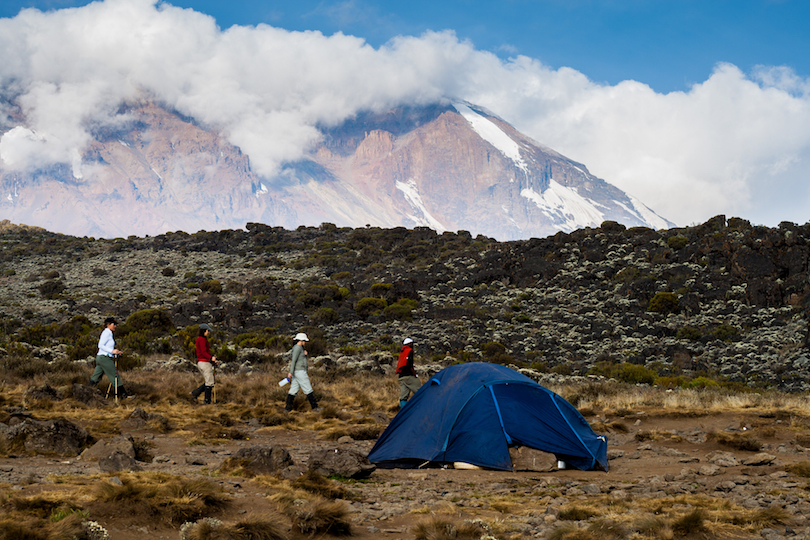
Each year thousands of visitors visit the infamous Kilimanjaro Mountain. Its beauty and magnificence are simply unmatched. Whether it be looking out from within the mountain, or from afar toward Mount Kilimanjaro, there is no doubt that it is a stunning natural spectacle.
As the highest mountain in Africa, it is a dream trek for many. En route to the top one must pass by sloping lowlands, farmlands and alpine areas. However, it is not just for the experienced trekkers anymore, first-time enthusiasts can partake in a trip to this legendary national park via more gentle trips to the top or by stopping in for a day trip.
1. Serengeti National Park
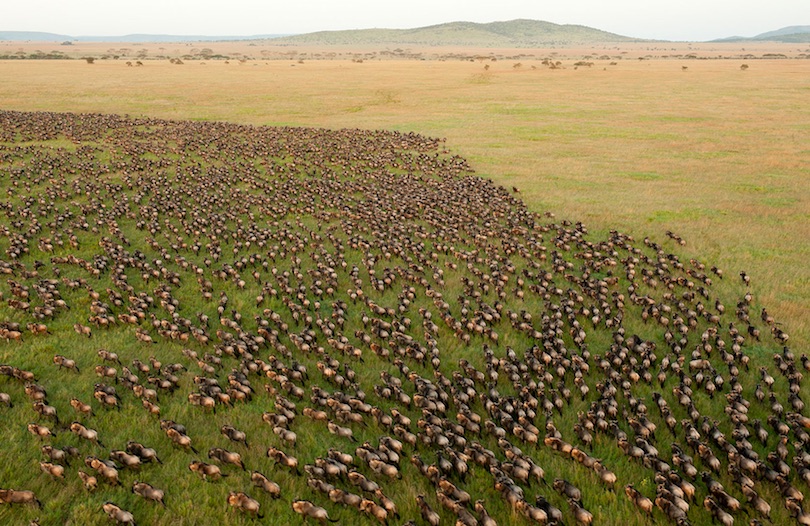
This park is the holy grail for wildlife viewing. The yearly migration of wildebeest and zebra, followed by their predators, is unlike anything else in this world and has inspired people for generations. The parks name was given by the Maasai people, ‘serengit’, which means the land of endless plains. This is an accurate description, only small rocky outcrops, rivers, and few woodlands interrupt the short grasslands.
There is an impressive array of animals taking up residence in the park including the “Big 5” and is one of the largest and only migration patterns of its kind uninterrupted by human contact.
Share this post:
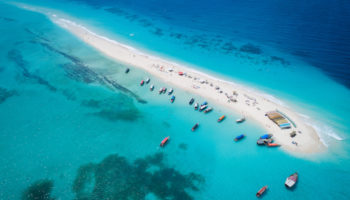
10 Best Beaches in Tanzania
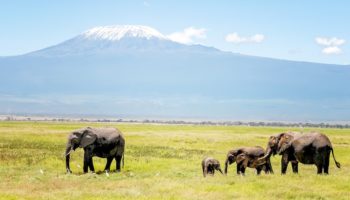
10 Best Places to Visit in Tanzania
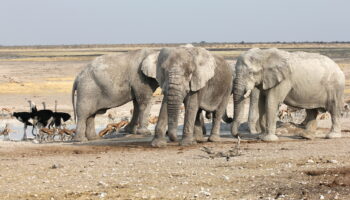
10 Most Famous Big Game Safari Destinations
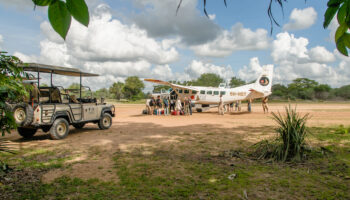
18 Top Tourist Attractions in Tanzania
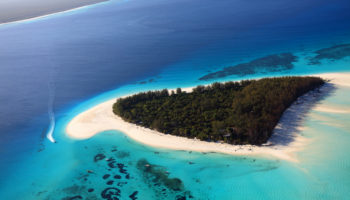
10 Most Beautiful Islands in Tanzania
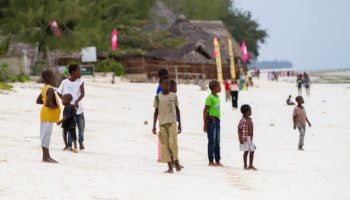
8 Best Places to Visit in Zanzibar
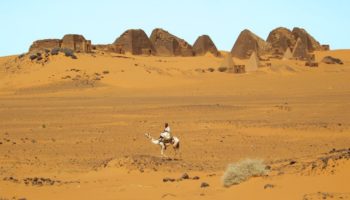
Visit Meroë: The Mysterious Pyramids of Sudan
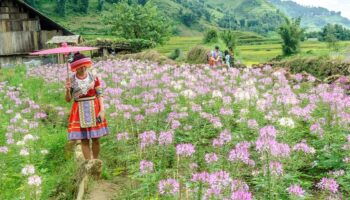
29 Best Places to Visit in Southeast Asia
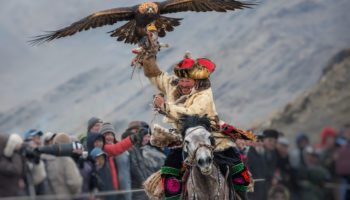
15 Best Things to Do in Mongolia
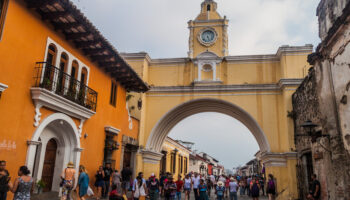
10 Best Places to Visit in Central America
Reader interactions, leave a reply cancel reply.
Your email address will not be published. Required fields are marked *
This site uses Akismet to reduce spam. Learn how your comment data is processed .
Tanzania: The Northern Circuit Safari Map
by rdesibi | Sep 4, 2017 | Tanzania Wildlife
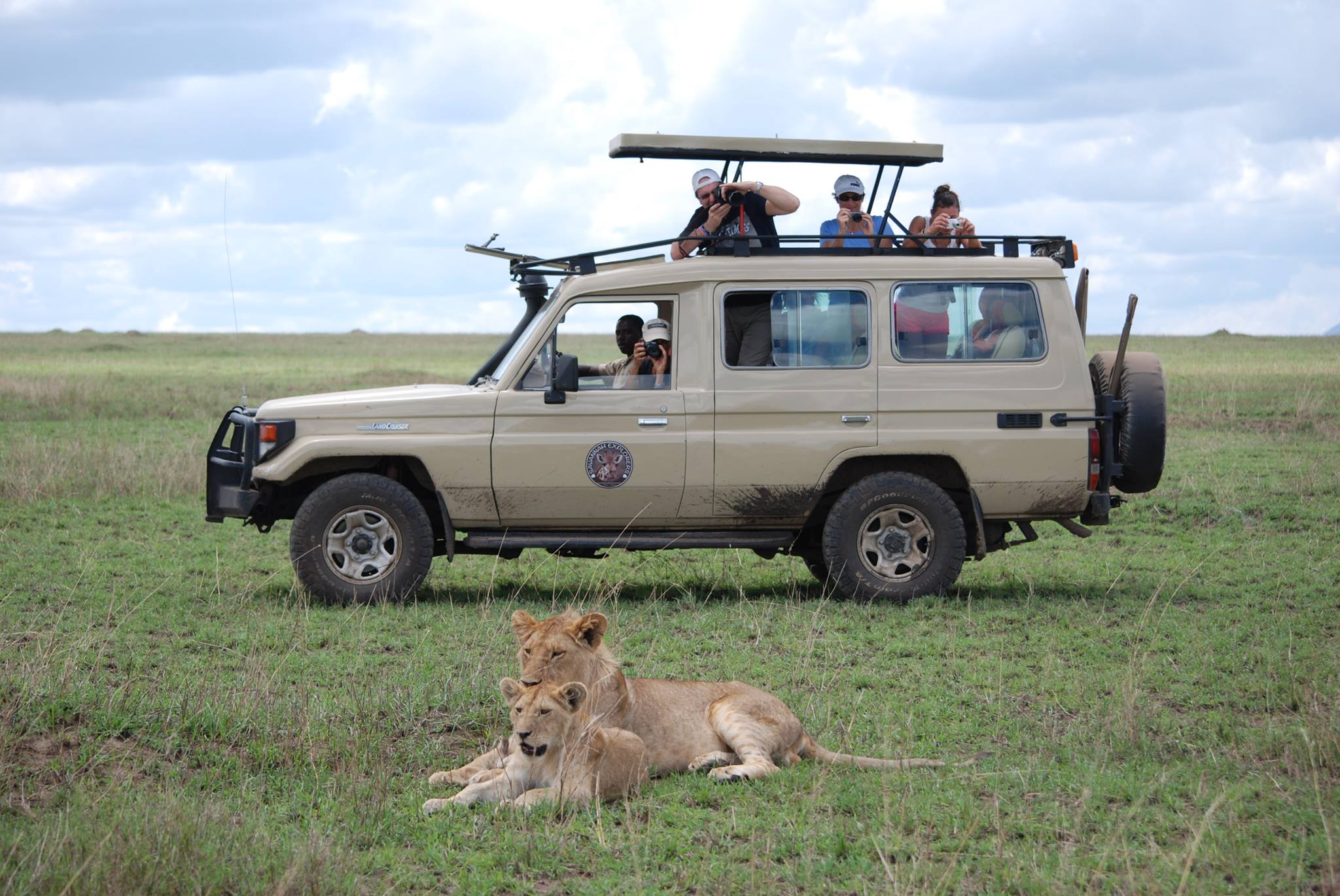
The Northern Circuit is well known for its famous national parks in Tanzania. These include Arusha National Park, Tarangire, Manyara, Serengeti and Ngorongoro Conservation Area, you can visit all the parks during a 7-8 days safari. Other protected areas in the northern circuit are such as Lake Eyasi and Lake Natron, where we meet with Hadzabe, Datoga and Maasai tribes. The distances between the parks allow you to visit all the parks without spending any full-day transfer, the areas between the parks are either protected areas where you can see animals or visit local villages. In the northern circuit, you can also experience Kilimanjaro trekking expeditions.
The most exceptional attractions that can be found in each protected area are as follows:
- Serengeti National Park – The park is famous for its endless plains and The Great Migration of wildebeest, zebras and other antelope between Serengeti and Masai Mara Ecosystem.
- Ngorongoro Conservation Area – Ngorongoro is famous for its crater that holds thousands of animals with the possibility to spot all the “Big Five animals” in one place.
- Lake Manyara National Park – The park is famous due to its location which is near the great rift valley escarpment, tree-climbing lions, a large flock of flamingos and it also boasts an underground water forest.
- Tarangire National Park – The park is famous for its large number of elephants and the vast number of Baobab trees.
- Arusha National Park – The park is famous for Mount Meru trekking, white and black colobus monkeys, a large flock of flamingos and the Ngurdoto crater that holds various animals and species.
- Lake Eyasi – This area is famous for its cultural value. The presence of the Hadzabe and Datoga tribes made it unique for the tourist who wishes to learn about the traditions and customs of people living in Tanzania.
- Lake Natron – The reserve is famous for the largest breeding ground of Lesser Flamingos and the Oldonyo Lengai mountain. Also, it is home to the Maasai and Sonjo tribes.
Following the above attractions and resources have made the northern circuit one of the top tourist destinations in Tanzania. However, there are also options for beach relaxations in Zanzibar.
Map of Northern Parks of Tanzania
Departing for Tanzania? Ready to explore the parks? Here are the maps you can use during your safari.
In this map you can follow all your safari in North of Tanzania, starting from Kilimanjaro airport to Arusha, to the parks and the endless plains of the Serengeti. The transfer time from one place to another is extremely short (2-3 hours max) and makes the park extremely accessible to everybody. Arusha is well known as “ safari capital ” and it’s the starting point for all the safaris in Tanzania, driving on a good tamac road you can drive to Arusha National Park, Tarangire National Park, Manyara National Park and Ngorongoro Conservation Area, the roads to Serengeti National Park, lake Natron and lake Eyasi are rough roads where you will experience a bit of “bumping road”.
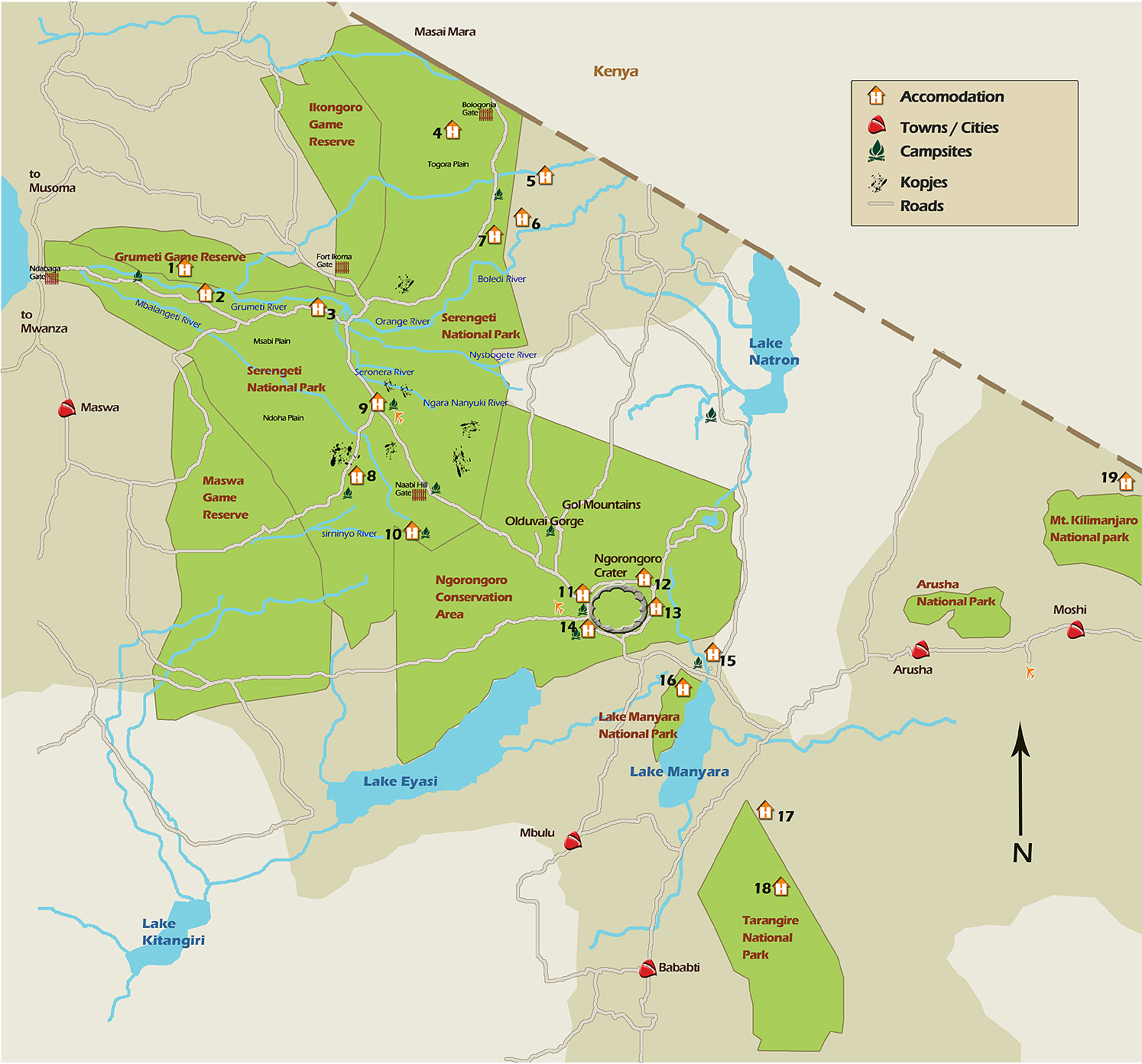
All The Tanzania National Parks Maps
- Northern Circuit National Parks – this map includes all the parks
- Arusha National Park – you can experience nice walking safari
- Tarangire National Park – you can see teh biggest elephants
- Manyara National Park – the home of biodiversity
- Ngorongoro Conservation Area – the highest wildlife density all over Africa
- Serengeti National Park – the endless plain
Safari in Tanzania
Tanzania is well know as the best destionation for safari in Tanzania, Ngorongoro crater and Serengeti park are UNESCO Worl Heritage sites, Kilimanjaro Moutain is the roof of Africa and Zanzibar is the “spice island”. Experienced guides can drive you on comfortable 4×4 jeeps in the national park for wildlife spotting and exciting game drives. During safari you can also experience natural walks, balloon safari, local village visits, canoeing, horse riding and biking.
Here is some suggestions for your safari in Tanzania:
- Big Five safari
- Great Summer Migration Safar i
- Great Winter Migration Safari
- Serengeti and Ngorongoro – 5 days safari
- Ngorongoro Crater Safari – 5 days
We can customize and tailor made your safari in Tanzania, contact us at
- [email protected]
- Whatsapp +255 765 972 458
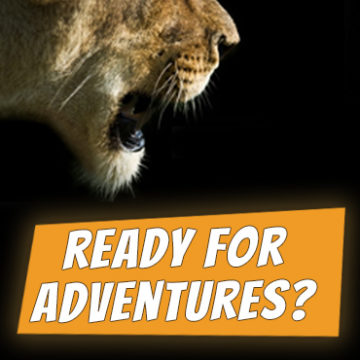

- Tanzania Map

Tanzania safari map
A map of the main safari parks and reserves of tanzania.

- Safari destinations
- Safari Ideas
- Safari lodging
- Safari builder
- Safari planning
- Tanzania weather
- Terms and Conditions
Social Profile
HM Safaris offers custom, personalized day tours with a focus on northern Tanzania. Our guides all have 15+ years of experience.

Map of Tanzania National Parks
Leave a reply cancel reply.
You must be logged in to post a comment.

Map of Tanzania
This is a travel Map of Tanzania displaying some of Tanzania's tourist attractions including wildlife reserves such as Nyerere National Park and Selous Game Reserve, TANAPA ( Tanzania National Parks Authority ) National Parks such as Serengeti and Lake Manyara in addition to location of major cities such as Dar es Salaam and Zanzibar. Please note that the map if not to scale.

Map of Africa
Click here for Map of Nyerere National Park

Map of Nyerere National Park
Detailed Map of Tanzania listing Cities, Airports, National Parks and Major Geographical Features
The detailed map of Tanzania below may be downloaded from the link provided for non commerical or personal usage. Kindly link to this page to provide credit. Please contact us in case you need exact coodinates or postions of any major map feature. In case you want to see the Map of Tanzania on Google Maps click here

Book a Nyerere Safari

Book a Balloon Safari

- Family Safari Escapes: Discovering the Best National Parks in Tanzania
Planning a Family Escapade in Tanzania — A vast country, much like the vastness of its national parks.
Moreover, it is a top destination for incredible family safaris. Where families can enjoy the thrill of adventure and become one with nature & wildlife, the different regions will offer you as many surprises as each other.
During your family trip to Tanzania, you have a golden chance to immerse in the beauty of the wild and forge lasting connections with the natural world. How exciting is that?
The Marvels of Tanzania’s National Parks:
Few places can offer such varied and intensely beautiful scenery as Tanzania’s National Parks. Tanzania has 22 national parks managed by TANAPA(Tanzania National Parks Authority), including renowned names like Serengeti and Ngorongoro Crater, harboring species from African elephants to elusive leopards and giraffes.
These parks are wildlife sanctuaries that significantly conserve the country’s rich biodiversity, containing more than 20% of Africa’s large mammal population.
Also contributing to Tanzania’s economy through eco-tourism by attracting global visitors to an annual spectacle involving millions of wildebeests, zebras, and other animals migrating journeying across the plains, sustaining a delicate balance of predator-prey life chain and serving as a natural marvel.
Can’t read now? Pin for later!
Navigating Family Safari Planning:
Tarangire national park , serengeti national park, ngorongoro conservation area, ruaha national park, selous game reserve, mount kilimanjaro national park, faqs about tanzania and its national parks.
Ensuring everything goes smoothly for a successful family adventure where everyone has a fantastic time.
But how do you make it awesome?
First, consider when you want to go on your safari adventure. You’ll want to aim for the dry seasons, usually between June & October or from December to Feb. During these times, the weather is just right, and the animals are near water sources, making it easier to spot them.
Now, about the weather in the big parks up north, like Serengeti, Tarangire, and Manyara have a warm high-altitude climate about 1,500 meters above sea level. Hence, it’s pretty warm but not too hot. Jan, Feb, and March are the hottest months which could be perfect if you see animals in action during the warmer times. But watch out for April – it’s the rainiest month. On the flip side, August is the driest.
So we’ve got the timing down. Let’s move on to something more important: keeping everyone healthy and comfy. You’ll want to sort out your transportation and make sure you’ve got any needed health precautions covered. This might include vaccinations or medications to stay safe and sound during your adventure.
And speaking of adventure, you’ll want to ensure you’ve got the right tour operator and safari guide to make your experience top-notch. Safari companies are experts at ensuring families like yours have a fantastic time. They know how to plan things just right so that everyone, from the youngest to the oldest, has a blast and creates memories that’ll last a lifetime.
Tanzania’s Best National Parks For Family Safaris
Tarangire is recognizable because it is made up of forests of acacias and giant baobabs, with huge areas of marshland. During the dry season, you can admire beautiful landscapes. The land is red and dusty & the grass is parched and yellow, and the Tarangire River is very narrow.
On the contrary, the plains are green during the rainy season, with an imposing river and many animals regaining their strength.
This park’s no joke – it’s 2,600 square kilometers of animal-packed adventure, especially between August and January. And here’s the scoop: Tarangire is the place to be if you’re looking for critters that are a bit trickier to find in other northern parks.
Come June, this place will become the hangout spot for elks, oryxes, elephants, wildebeests, and zebras. They all gather around the river and the marshes to quench their thirst. And you won’t believe your eyes when you see elephants digging for water underground, using their hefty paws! It’s quite a sight to see!
Let’s get one fact straight: Serengeti’s wet season means fewer animals, except in the south, where the real action happens.
Driving in from Ngorongoro, it’s like stepping into a grassy savannah sprinkled with kopjes – those fancy granite rock formations. Venture a bit, and you’ll hit greener acacia savannah. Head north, and it’s all about hills. On the flip side, the Western Corridor, crisscrossed by rivers, spreads out to Lake Victoria.
May to June is a show-stopping period. That’s when the jaw-dropping wildebeest migration hits the stage. Imagine over a million of these creatures embarking on a great migration over 800 km from Tanzania to Kenya’s Maasai Mara , perfectly in tune with the rain’s rhythm. A staggering 2 million wildebeests and 300,000 zebras gather for a parade, making herds that stretch as far as 40 km.
Serengeti isn’t just a park; it’s a world-class zoo sprawled over 14,763 km² and home to Big 5 “Lions, leopards, elephants, black rhinos, and buffaloes”.
Ngorongoro is known for its volcano, gigantic crater, and thriving wildlife scene. The Ngorongoro Crater Protected Area is over 2 million years old and around 20 km in diameter. Also, the historic Olduvai Gorge is just 40km from the crater, where traces of humanity’s earliest days are found.
In Ngorongoro, prepare for a rich and diverse range of creatures. The Big 5, antelopes, cheetahs, and endangered black rhino – we’re talking around 30,000 animals. And also have over 400 bird species, including the elegant pink flamingos. Keep your eyes open for jackals, hyenas, and cheetahs.
And if you plan a family safari around July-August, you’ll enjoy some cool temperatures on the caldera’s edges. But remember, Ngorongoro is not only just a crater; it’s part of the grand Ngorongoro Protected Area, And it’s quite the tourism hub, hosting around 400,000 visitors annually.
The Ruaha River sustains the diverse animal community in Ruaha Park, which flows through its heart. This thriving community includes African elephants, buffaloes, antelopes, lions, hyenas, cheetahs, leopards, and the world’s third-largest population of wild dogs.
Ruaha is a hidden gem, not famous like other parks, but its reputation is rising. It remains a safari secret. You won’t have to battle huge crowds here, even during the peak/high season. Plus, it’s budget-friendly compared to more popular parks like the Serengeti.
And here you can also go for the walking safaris. But remember minimum age required for a walking safari is 16.
Nyerere National Park, previously called Selous Game Reserve, is a UNESCO World Heritage Site and Africa’s largest national park.
You can witness the unusual annual elephant migration as thousands of these majestic elephants cross the river. Also, you can take part in walking safaris, spot African wild dogs, and go on Elephant Migration Boat Safaris for memorable adventures.
Plan your visit between late June and October for prime wildlife viewing or from November to March to enjoy bird watching. Wildlife in the park ranges from elephants, African wild dogs, sables, kudus, & waterbucks to hippos and crocodiles.
Nyerere National Park is a haven of nature and offers easy access to attractions like Zanzibar and Dar Es Salaam. It’s an excellent destination for an incredible adventure.
Mount Kilimanjaro National Park stands as a remarkable destination for an unforgettable family safari. Encompassing an expansive area of approximately 755 square miles, the park in Northeastern Tanzania shares a border with Kenya.
The park’s star attraction, Mount Kilimanjaro, is one of the Seven Natural Wonders of Africa. Known as the rooftop of Africa, it is the highest mountain (freestanding) in the world. Families need not be seasoned climbers to experience its splendor. Guided walks along various trails allow all family members to soak in the breathtaking scenery and the stunning views of the surrounding plains.
Besides its majestic mountain, the national park boasts a diverse array of animal species. Families can catch glimpses of elusive leopards, playful colobus monkeys, as well as antelopes, gazelles, lions, rhinos, and elephants.
Bird enthusiasts will be captivated by the dazzling spectacle of migratory birds, their vibrant colors brightening the park. Non-migratory species, including soaring eagles and graceful flamingos, grace the skies around Kilimanjaro, creating a spectacle that is truly unique.
The park is also home to a variety of activities and attractions. While some trails are designed for more experienced hikers, others are tailored to casual walkers or wheelchair access. Families can explore an array of caves, visit traditional villages, enjoy cultural tours, or just relax in one of the many lodges located within the park.
Tanzania is home to 22 national parks. Each park offers visitors a chance to experience the country’s unique wildlife, landscapes, and culture. The most famous of all the parks is Kilimanjaro National Park – famed for its iconic mountain peak – while others such as Serengeti National Park are renowned for their vast savannah plains and provide one of the best opportunities for game viewing.
The beauty of Tanzania’s parks is hard to measure. Each park has something unique to offer and is worth exploring. However, many visitors cite Serengeti National Park as the most beautiful. It is renowned for its breathtaking views, abundant wildlife, and wide-open plains.
Visitors can also explore Tarangire National Park for its acacia-filled savannah and incredible bird watching. Another popular destination is Selous Game Reserve, which is home to the world’s largest population of African elephants. Ultimately, visitors should explore each park for themselves to determine what makes it most beautiful.
The largest national park in Tanzania is Nyerere National Park, previously called Selous Game Reserve. Spanning over 55,000 square kilometers (21,000 sq mi), it is the largest protected wildlife area in Africa and one of the largest unfenced reserves in the world.
The park is known for its abundant African wildlife, including lions, cheetahs, hippos, crocodiles, antelope, giraffes, zebras, wildebeest, and more. Nyerere National Park offers a unique experience for visitors, where they can immerse themselves in the untouched African bush.
The least visited national park in Tanzania is Ruaha National Park. Located in south-central Tanzania, Ruaha is a relatively remote and untouched park that offers visitors an opportunity to explore the vast wilderness of East Africa.
The best time to travel to Tanzania is during the dry season, which typically runs from late June through October. During this period, temperatures are mild and the chances of rain are low, making it perfect for safaris and exploring the country’s national parks.
The warmest months are December through February, but these can also be very wet and humid. April and May are also good months to visit, since temperatures are more moderate.
The best time of year to go on safari in Tanzania is during the dry season, which typically runs from late June through October. This period offers the best combination of ideal weather conditions and prime game viewing opportunities. Days are hot but not too humid, while evenings can be cool.
Wildlife sightings are more frequent during this period due to less vegetation cover and the animals coming to the waterholes more often. Additionally, the dry season coincides with calving season for antelope, which makes it a great time to view baby wildebeests and zebras!
Tanzania is a very popular and sought-after destination for tourists due to its rich history, diverse culture, stunning landscapes, and unparalleled wildlife. It is home to 22 national parks and numerous game reserves that are filled with an amazing array of animals such as lions, elephants, zebras, giraffes, buffalos, cheetahs, and more.
The country also boasts some of the world’s highest mountain peaks, including Mount Kilimanjaro – Africa’s tallest peak. Additionally, Tanzania is renowned for its welcoming people and vibrant cultures. From traditional Swahili villages to bustling cities like Dar es Salaam, there is something here for everyone!
It really depends on what you want to do and see! If you’re just looking for a quick getaway, then three to five days will give you enough time to explore the country’s main attractions. However, if you’d like to go on safari, or dive deep into its history and culture, then seven days or longer is recommended. There’s so much to discover and experience in Tanzania, you won’t want your time there to end!
Last Thoughts
As you plan your family’s visit to Tanzania, recognize the far-reaching impact of these national parks. By supporting responsible tourism and experiencing the parks firsthand, you create cherished memories and contribute to safeguarding these invaluable ecosystems for generations to come. Make sure you have a joyous and memorable family travel experience in Tanzania!
FOLLOW US ON SOCIAL MEDIA
- Facebook Page
- Family Adventures Facebook Group
- Easy Camp Cooking Facebook Group
Don’t forget to invite your friends to our Facebook groups! We would also love to see your vacation pictures!
For more family travel inspiration, check out our latest posts here:
- The Ultimate Hotel Security Checklist: Ensuring a Safe and Enjoyable Family Getaway
- Experience France’s Best Ski Spots Like Never Before On & Off the Slopes
- Where Bonds Strengthen and Thrills Await: Exploring America’s Teen-Approved Attractions
- La Jolla Sea Caves – Ultimate Guide for Visitors
- Everything You Need to Know About Balloon Festivals in Texas (Updated 2023)
The post Family Safari Escapes: Discovering the Best National Parks in Tanzania appeared first on Little Family Adventure .
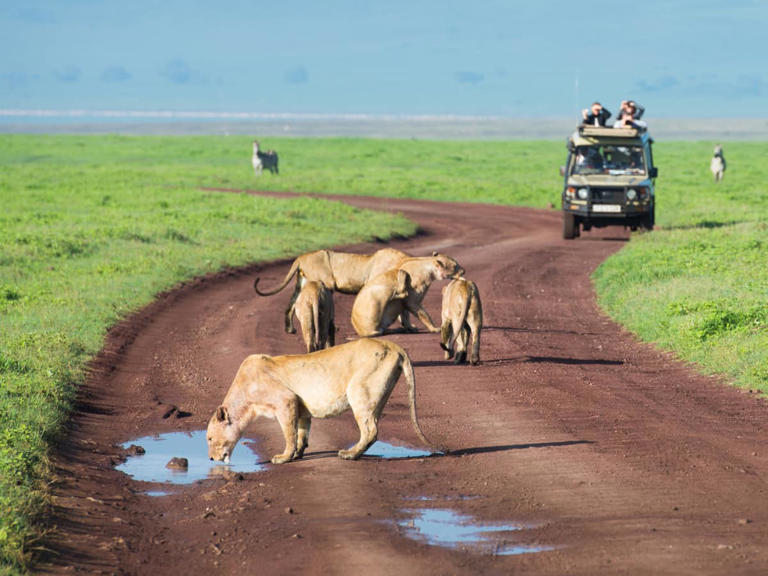
- Tanzania Tourism
- Tanzania Hotels
- Tanzania Bed and Breakfast
- Tanzania Vacation Rentals
- Flights to Tanzania
- Tanzania Restaurants
- Things to Do in Tanzania
- Tanzania Travel Forum
- Tanzania Photos
- All Tanzania Hotels
- Tanzania Hotel Deals
- Last Minute Hotels in Tanzania
- Things to Do
- Restaurants
- Vacation Rentals
- Travel Stories
- Rental Cars
- Add a Place
- Travel Forum
- Travelers' Choice
- Help Center
14 day Safari & Zanzibar in early March 2025. - Tanzania Forum
- Africa
- Tanzania
14 day Safari & Zanzibar in early March 2025.
- United States Forums
- Europe Forums
- Canada Forums
- Asia Forums
- Central America Forums
- Africa Forums
- Caribbean Forums
- Mexico Forums
- South Pacific Forums
- South America Forums
- Middle East Forums
- Honeymoons and Romance
- Business Travel
- Train Travel
- Traveling With Disabilities
- Tripadvisor Support
- Solo Travel
- Bargain Travel
- Timeshares / Vacation Rentals
- Africa forums
- Tanzania forum

Thank you for your help!
2 replies to this topic

You miss Ndutu area In Southern serengeti national Park
I would recommend following itinerary
Tarangire 2night
Ngorongoro 1night
Ndutu 2night
Central serengeti at sametu 2night
Fly out from seronera airstip to zanzibar

- Checking Itinerary for August 2025 and Accommodations 8:11 pm
- Masai experience 7:03 pm
- Decent Hotel near Arusha Airport 6:15 pm
- Road conditions in Northern Circuit? 3:30 pm
- Sunny Safari - wire transfer okay? 1:41 pm
- 14 day Safari & Zanzibar in early March 2025. 1:36 pm
- airlines safety 9:33 am
- Zanzibar in March for Snorkeling? 9:10 am
- Shopping;Birthday & Grduation gift 9:05 am
- Which flight company from Zanzibar to Arusha? today
- Auric Air luggage limits today
- Getting a Tanzania visa on arrival today
- RIU jambo today
- New Camp Locations?? Elephant Springs & Acacia Ngorongoro yesterday
- Malarone Vs Lariam 39 replies
- What does "non commissionable rate" mean? 6 replies
- Precision Airways - Luggage Restrictions 20 replies
- How safe is Tanzania? 162 replies
- ET African Journeys -- too good to be true? 34 replies
- Tanzania Discovery Safari with Thomson Safaris 20 replies
- Considering National Geographic expedition 6 replies
- Any experience with booking through Africa Travel Resource? 8 replies
- Coastal airways 9 replies
- Roy's safaris Ltd. 42 replies
Tanzania Hotels and Places to Stay
- Yellow Fever, General Health Advice and Vaccinations for Tanzania.
- If you have started to plan a safari, here's some good tips on how to go about this>
- Kenya Versus Tanzania which is better
- Looking for a Tour Operator...Here's a good starting point. Mark 11 and other info.
- Can I take a drone there to use for photography
- I want to learn about the Tanzanian people and their culture, is that possible?
- THINKING OF GETTING A HENNA PAINTING WHILE YOU ARE IN TZ? READ THIS FIRST!!!
- What can I do for medical care while I am in Tanzania
- What to pack - how can I squeeze in everything I want to take
- All the parks and all the safari operators are confusing, isn't there a summary?
- Is malaria a serious disease, what can happen if I skip my malaria medications?
- What are the electrical requirements for Tanzania
- How do I keep bugs away? And how do I handle bites?
- What you need to know about Self Drive.
- Books on Tanzania and Africa in general
- Are you planning a Lake Natron Trip?
- Are you thinkg of taking a young child on safari
- Ellie's Blog Great description of some popular camps and the Eastern Serengeti
- Shep's Blog Great information on recent (2021) off the beaten path travel
- Lodges and Camps Close to KIA and Arusha National Park
- Volunteering in Tanzania especially an orphanage good advice in new and older posts.
- All You need to Know about Visa on Arrival

Watch CBS News
Tanzania hit by power blackouts as Cyclone Hidaya strengthens toward country's coastline
May 4, 2024 / 8:10 AM EDT / CBS/AP
A major blackout hit most of Tanzania on Saturday as heavy rains and strong winds from Cyclone Hidaya lashed the country following weeks of flooding in the region .
Ferry services between Tanzania's commercial hub, Dar es Salaam, and Zanzibar were suspended as Cyclone Hidaya approached the East African coast with maximum winds of 120 kph (33 mph) and powerful gusts.
Authorities warned residents to exercise caution as the intensity of the cyclone increases.

The weather service said more than usual amounts of rainfall were recorded in coastal areas overnight. The Tanzania Red Cross Society has been carrying out preparedness campaigns along the coast.
In the past few weeks, flooding in Kenya and Tanzania killed hundreds after heavy rain during the region's monsoon season, officials said. Flooding in Tanzania killed 155 people and affected more than 200,000 others, the prime minister said in April.
In Kenya, 70 people have died since the start of monsoon season in March, a government official said.
The East African region is highly vulnerable to climate change. El Niño is expected to last through the spring . The region's dry season typically begins in June.
- Climate Change
More from CBS News

Asia's deadly heat wave was made 45 times more likely for this reason

North Korea continues recent spate of weapons tests, South says

Why does Canada have so many wildfires?

Huge billboard toppled by storm kills more than a dozen people in India
- You are here:
Zanzi Trekking and Safaris
11-Day Budget Kenya & Tanzania Safari in Most Epic Parks

4.9 /5 – 16 Reviews
$1,894 pp (USD)
Your request will be sent directly to the operator
If preferred, you can contact the operator directly
Embark on an 11-day safari across Kenya and Tanzania's most iconic parks: Masai Mara, Lake Nakuru, Serengeti, Tarangire, Ngorongoro Crater, and Manyara. Witness breathtaking landscapes and encounter diverse wildlife in their natural habitats for an unforgettable adventure. You could also tailor your adventure with our customizable itineraries or upgrade to luxury or mid-range packages for an even more indulgent experience tailored to your desires.

Tour Features
Budget tour.
This budget tour includes camping and lodges.
Shared tour
On this shared tour, you will join a group of other travelers. Max 7 people per vehicle.
Can start any day
If availability permits, this tour can start on any day.
Can be customized
You can request minor changes to the accommodations and destinations of this tour.
Suitable for single travelers
Single travelers can join this group tour.
Minimum age of 1 year
The minimum age for this tour is 1 year.
Activities & Transportation
Accommodation & meals.
- Additional accommodation before and at the end of the tour can be arranged for an extra cost
- Day Accommodation Meals

- 7 Seronera Public Campsites Budget camping inside Central Serengeti NP (Tanzania) – All Meals Included All Meals Included
- 8 Ngorongoro Simba Campsite Budget camping on the crater rim of Ngorongoro Crater (Tanzania) – All Meals Included All Meals Included
- 9 Panorama Safari Camp Budget lodge 1-2hr drive from Ngorongoro Crater (Tanzania) – All Meals Included All Meals Included
- 10 Merves Hotel Budget hotel in Arusha (City, Tanzania) – All Meals Included All Meals Included
- 11 End of tour (No accommodation) – Breakfast Included Breakfast Included
Interested in This Tour?
Request a Quote
- We advise requesting quotes from 3 operators ( Learn why )
- Requests are sent directly to the tour operator
- If preferred, you can contact the tour operator directly
Best price guarantee
- This tour is offered by Zanzi Trekking and Safaris , not SafariBookings.
- This operator reserves the right to change rates advertised on SafariBookings.
- If you request changes to this tour, the advertised rates will likely change.
- The exact order, contents and rates of this tour are subject to availability.
- If an accommodation is fully booked, the operator will suggest a comparable alternative.
- This tour is subject to the terms & conditions of Zanzi Trekking and Safaris.
- What is included in this tour
Get a Free Quote
- More About This Operator
Customer Reviews

Solo Female Traveler - Zanzi Trekking was the BEST Choice!
I had the best experience with this tour company. They safely got me to the top of Mt. Kilimanjaro plus arranged all of other travel. They provided an excellent safari experience!! The best I’ve had, and I’ve been through Tsavo and as...
Full Review


IMAGES
COMMENTS
Detailed map of Tanzania showing the location of all major national parks, game reserves, regions, cities and tourism highlights! ... Detailed map of Tanzania National Parks - Tanzania Map. Safari Tours to Tanzania. 9-Day Luxury Tailor-Made Tanzania Wildlife Safari. $7,776 to $11,818 pp (USD)
Here are 5 Tanzania safari tours I highly recommend: Mahale Chimpanzee Safari (4 days) Budget Serengeti Safari (5 days) Tanzania Camping Adventure (incl. Arusha and Mto wa Mbu) (6 days) Scenic Northern Tanzania Safari (7 days) Epic Ruaha Adventure Safari (incl. Mikumi and Selous (9 days) See more Northern Tanzania safari deals.
Google satellite, terrain and road map for Serengeti National Park and its accommodations in Tanzania - East Africa. View Serengeti safari trip rates, honeymoon tours, booking family holidays, solo travel packages, accommodation reviews, videos, photos & travel maps.
Finally, parks like Kilimanjaro and Arusha National Parks were chosen both because of their close proximity to the city of Arusha and the unique landscape features that are found within the parks. For an overview of my top 10 recommended safari destinations in Tanzania, please refer to the map below. Top Ten Tanzania National Parks Map. View ...
Maps of the main regions for a Tanzania safari. Two different maps can help you to understand Tanzania:The GOOGLE MAP shows Tanzania's remarkable landscape, spanning 900,000km2 from vast grasslands to its extensive coastline, whilst our REFERENCE MAP clearly outlines the national parks. In northern Tanzania, the remarkable wildlife sanctuary of the Ngorongoro Crater rises beside a huge crack ...
Complete list + detailed map of the major game reserves and national parks in Tanzania. A-Z list incl. the best parks and a wildlife summary per park! ... 9-Day Luxury Tailor-Made Tanzania Wildlife Safari. $7,799 to $11,853 pp (USD) Tanzania: Private tour Luxury Lodge ...
Explore the wonders of Tanzania's national parks! Our interactive map showcases iconic parks like Serengeti & Ngorongoro Crater. Plan your dream safari & discover Tanzania's wildlife! Safaris. Itineraries Activities Costs. Why Us. What Sets Us Apart Giving Back Our Story. Resources.
With 16 national parks, three game reserves, and two marine reserves, going on a Tanzania safari ranked high on our world travel bucket list long before we had the means to visit the country. Around one-third of the country's total land area is protected, with management overseen by the Tanzania National Parks Authority ().The natural attractions found within the approximately 122,000 square ...
Below is a tourist map of Tanzania showing the popular tourist locations: national parks, game reserves, lakes and Zanzibar Island. This Tanzania safari map will be very useful when you book any of our honeymoon safaris or family holiday in Zanzibar.
The Tanzanian National Parks Authority (TANAPA) has varied gazetted national parks which, with surrounding game reserves, concessions and aquatic reserves, covers a quarter of a country, which would take a lifetime to explore every nook of it. But you can select a customized or recommended Tanzanian safari with AfricanMecca visiting the places ...
Tanzania's top safari & holiday destinations. Tanzania's safari and beach areas fall naturally into four broad groups. Tanzania's 'Northern Circuit' is the term which defines the areas of the sprawling Serengeti , the stunning landscape of the Ngorongoro Crater, Tarangireand Lake Manyara national parks - the most famous safaris areas in Tanzania.
The Serengeti National Park is a large national park in northern Tanzania that stretches over 14,763 km 2 (5,700 sq mi). It is located in eastern Mara Region and northeastern Simiyu Region and contains over 1,500,000 hectares (3,700,000 acres) of virgin savanna.The park was established in 1940. The Serengeti is well known for the largest annual animal migration in the world of over 1.5 million ...
Terrain, satellite & road maps for Tanzania lodges, camps, city hotels, beachfront resorts, parks, reserves, coastal islands and other wildernesses. View safari prices, honeymoon tour booking, family safari vacation, solo travel packages, holidays reviews, trip videos, hotel photos & maps.
All of which are greatly endangered and can only be found here in Tanzania in the Tarangire National Park. 8. Lake Manyara National Park. Ernest Hemingway remarked that this park had the loveliest lake in Africa, and he may have been right. Manyara Lake is really stunning.
In this map you can follow all your safari in North of Tanzania, starting from Kilimanjaro airport to Arusha, to the parks and the endless plains of the Serengeti. The transfer time from one place to another is extremely short (2-3 hours max) and makes the park extremely accessible to everybody.
A map of Tanzania's best national parks and best points of interest. Want to visit Tanzania, look no further. ... Tanzania Safari Supremacy. Njiro Container, Njiro Rd. Arusha +255 789 868 025. [email protected]. @tanzaniasafarisupremacy. General Information. Tanzania Facts;
Add this quick five-day itinerary to your trip for a safari experience that focuses on the quieter, more remote national parks of Tanzania's south. Spot Big Five game animals like lions and elephants on the savannas of Mikumi National Park, and marvel at hippos and Nile crocs on cruises through the riverine landscapes of Nyerere. Your whirlwind adventure draws to a close with a sunrise hot-air ...
Below is a tourist map showing Kenya Tanzania safari route and the popular tourist locations: national parks, game reserves, lakes and the coastline on the Indian Ocean: Mombasa, Zanzibar, Malindi and Lamu. This migration safari map will be very useful when you book any of our honeymoon safaris or family holiday in Zanzibar.
A map of the main safari parks and reserves of Tanzania. ... Contact. Head Office: Olasiti Burka Coffee Estates, Arusha Tanzania, Box 16906. +255 737 885 655, +255 787 316 205 [email protected]. South East Asia: A5-9 Level 5, Empire Tower, Empire Subang, Jalan SS16/1, Subang Jaya 47500, Selangor, Malaysia +60183799899
Map of Tanzania National Parks. For more information about National Parks (e.g. Selous Game Reserve), and the Islands (e.g. Zanzibar, etc.), please move your screen mouse cursor at the location and a drop down information will appear. ... 255 Safaris offer unique and personal Safari Adventures. 255 Safaris Ltd. P.O.Box 2746 Mikocheni Plot 325 ...
This is a travel Map of Tanzania displaying some of Tanzania's tourist attractions including wildlife reserves such as Nyerere National Park and Selous Game Reserve, TANAPA ( Tanzania National Parks Authority ) National Parks such as Serengeti and Lake Manyara in addition to location of major cities such as Dar es Salaam and Zanzibar. Please ...
Mount Kilimanjaro National Park stands as a remarkable destination for an unforgettable family safari. Encompassing an expansive area of approximately 755 square miles, the park in Northeastern ...
14 day Safari & Zanzibar in early March 2025. 14 day Safari & Zanzibar in early March 2025. In March , just wondering if the number of days is good Arusha (3 nights) , Tarangira N.P. (2 nights) then headed to Ngorongoro Conservation Area ( Crater) ( 1 night) then onto Serengeti Sametu Camp for 3 nights, then Zanzibar 4 nights.
Ferry services between Tanzania's commercial hub, Dar es Salaam, and Zanzibar were suspended as Cyclone Hidaya approached the East African coast with maximum winds of 120 kph (33 mph) and powerful ...
Overview Day by Day Rates Inclusions Getting There Offered By. Embark on an 11-day safari across Kenya and Tanzania's most iconic parks: Masai Mara, Lake Nakuru, Serengeti, Tarangire, Ngorongoro Crater, and Manyara. Witness breathtaking landscapes and encounter diverse wildlife in their natural habitats for an unforgettable adventure.